
Dark Matters: On the Surveillance of Blackness
by
Simone Browne
Published 1 Oct 2015
Taking up David Murakami Wood’s call for a “critical reinterpretation” of panopticism, what I am suggesting here is that one of the ways that this reinterpretation can be done is through a reading of the slave ship.67 Panopticism, for Murakami Wood, is understood as “the social trajectory represented by the figure of the Panopticon.”68 Panopticism, then, is the Panopticon as a social practice. I interrogate the Panopticon and the plan of the slave ship Brooks to ask: What kinds of subjects were these two spaces meant to produce? How is social control exercised? What acts of subversion and resistance do these structures allow for? Also in this chapter, I explore the operation of disciplinary and sovereign forms of power over black life under slavery by looking at plantation management and running away. In Jeremy Bentham’s plan for the Panopticon, small lamps worked to “extend to the night the security of the day.”69 I examine this idea of the security of the day and surveillance by lamps at night in Chapter 2, “Everybody’s Got a Little Light under the Sun: The Making of the Book of Negroes.”
…
In this fashion, these works open up a way to think creatively about what happens if we center the conditions of blackness when we theorize surveillance. Seeing without Being Seen: The Plan of the Panopticon The Panopticon was conceived by Jeremy Bentham in 1786 and then amended and produced diagrammatically in 1791 with the assistance of English architect Willey Reveley. Bentham first came upon the idea through his brother Samuel, an engineer and naval architect who had envisioned the Panopticon as a model for workforce supervision. Pan, in Greek mythology, is the god of shepherds and flocks, the name derived from paien, meaning “pasture” and hinting at the root word of “pastoral,” and in this way the prefix pan- gestures to pastoral power.
…
—DIONNE BRAND, A Map to the Door of No Return: Notes to Belonging In early August 1785, English social reformer Jeremy Bentham set out from Brighton, England, destined for Krichëv, Russia. It was in Russia where Bentham would first conceive of the Panopticon in a series of letters “from Crecheff in White Russia, to a friend in England.” At one point during his journey, in an attempt to reach Constantinople, he embarked from Smyrna on a cramped Turkish caïque with “24 passengers on the deck, all Turks; besides 18 young Negresses (slaves) under the hatches.”1 Much of Bentham’s writings that addressed slavery were written before this voyage. In those texts he touches on such topics as sugar production, punishment, and abolition.

System Error: Where Big Tech Went Wrong and How We Can Reboot
by
Rob Reich
,
Mehran Sahami
and
Jeremy M. Weinstein
Published 6 Sep 2021
“willingly accept legal terms”: “2017 Global Mobile Consumer Survey: US Edition,” Deloitte Touche Tohmatsu Limited, 2017, https://www2.deloitte.com/content/dam/Deloitte/us/Documents/technology-media-telecommunications/us-tmt-2017-global-mobile-consumer-survey-executive-summary.pdf. “Specifically, when you share”: “Facebook’s Terms of Service,” Facebook, https://www.facebook.com/terms.php. Bentham’s own wishes: “Extract from Bentham’s Will,” Bentham Project, May 30, 1832, https://www.ucl.ac.uk/bentham-project/who-was-jeremy-bentham/auto-icon/extract-benthams-will. his idea of a panopticon: Jeremy Bentham, The Panopticon Writings, ed. Miran Božovič (London: Verso, 1995). a catalogue of the social benefits: Ibid., 31. a “new mode of obtaining power”: Ibid., 34. F-House: Jonah Newman, “Stateville Prison Reopens Decrepit ‘F-House’ to Hold Inmates with COVID-19,” Injustice Watch, May 12, 2020, https://www.injusticewatch.org/news/prisons-and-jails/2020/stateville-roundhouse-covid/.
…
Whatever the case, it’s yet another example that the currently accepted framework of Notice and Choice fails to provide the kind of privacy protection we need and should demand in the online world. A Digital Panopticon? In a public lobby of University College London, you will find a most peculiar sight. The embalmed corpse of Jeremy Bentham, clad in one of his favorite black suits, sits on a chair accompanied by his cane. Encased in a glass-fronted wooden box with the label AUTO-ICON, he appears to gaze out upon the hundreds of people who pass him every day. The arrangement is not due to some macabre wish to honor the eighteenth-century British philosopher; it is a reflection of Bentham’s own wishes, expressed in his 1832 will. In addition to detailing the transformation of his body into an Auto-Icon, Bentham’s will specified that on occasions when his friends and disciples gathered at the university to discuss utilitarianism, the box should from time to time be taken to the room and stationed as if to take part in the discussion.
…
Perhaps the most famous of such proposals is his idea of a panopticon. The panopticon refers to the architectural design of a prison where a watchtower sits in the middle of a circular edifice of prison cells. The tower shines bright light from the center outward so that the watchman is able to monitor everyone in the cells. Why call the design a panopticon? It was Bentham’s invented term for an all (pan)-seeing (optic) mechanism, a novel construction that would allow a watchman to observe the prison’s occupants without their knowing whether they are being watched. Prisons were dangerous, dirty places. Bentham thought his proposal to construct prisons as panopticons would be a great step forward, allowing for cleaner, safer, and more efficient systems of incarceration.
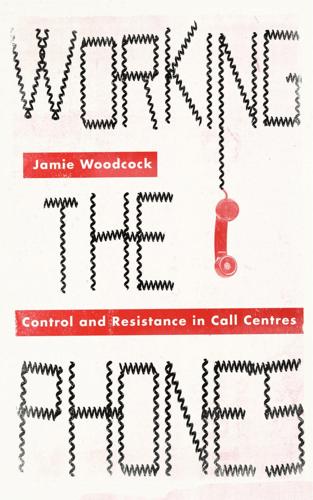
Working the Phones: Control and Resistance in Call Centres
by
Jamie Woodcock
Published 20 Nov 2016
Carl Cederström and Peter Fleming, Dead Man Working (Winchester: Zero Books, 2012), p. 10. 25. Ibid., p. 11. 26. Ibid., p. 9. 27. Ibid., p. 10. 28. Ibid., p. 16. 29. Marx, Capital ([1867] 1976), p. 342. 30. Foucault, Discipline and Punish (1991), p. 167. 31. Jeremy Bentham, The Panopticon Writings (London: Verso, 1995), p. 31. 32. Ibid., p. 45. 33. Ibid., p. 80. 34. Ibid., p. 106. 35. Ibid., p. 105. 36. Miran Božovič, ‘Introduction’, in The Panopticon Writings, by Jeremy Bentham (London: Verso, 1995). p. 4. 37. Ibid., p. 8. 38. Sue Fernie and David Metcalf, (Not) Hanging on the Telephone: Payment Systems in the New Sweatshops (Centre for Economic Performance: London School of Economics, 1997), p. 3. 39.
…
It rests on a notion of the customer without agency: they do not really know what they want, so the worker must convince them. Thus every call has the potential to be a sale, so long as the worker internalises and repeats this combination of self-help phrases and management buzzwords. the panopticon The analogy of the Panopticon is used frequently in the academic literature on call centres. Often these involve arguments about control, either its totalisation or the effect of minimising resistance. Jeremy Bentham first discussed the Panopticon as an architectural structure that would allow ‘a new mode of obtaining power of mind over mind, in a quantity hitherto without example’.31 The now familiar construction of the central observation post with individual cells around it, allowed ‘the apparent omnipresence of the inspector . . . combined with the extreme facility of his real presence’.32 It is worth looking at Bentham’s writing before moving on to discuss Foucault’s developments.
…
In this context it is easy to over-generalise and it is worth bearing in mind Taylor and Bain’s point that this ‘represents an unprecedented level of attempted control which must be considered a novel departure’.22 The metaphor of the Panopticon – which has been frequently referred to in the literature – was used to illustrate the process of surveillance and control in the call centre. Returning to Bentham’s Panopticon writings23 before looking at Foucault,24 the Panopticon was here used as a theoretical metaphor to explore the empirical research in detail. The Panopticon – both physically and in terms of processes – maps easily onto the organisation of the call centre; however it is important to note that the ‘factory and the office are neither prison nor asylum, their social architectures never those of the total institution’.25 The features of the call centre as a site in which the ‘dynamic process of capital accumulation’ takes place means that it can understate ‘both the voluntary dimension of labour and the managerial need to elicit commitment from workers’.

The Internet Is Not the Answer
by
Andrew Keen
Published 5 Jan 2015
Potemkin gave Bentham the job of managing Krichev, his hundred-square-mile estate on the Polish border that boasted fourteen thousand male serfs.38And it was here that Samuel and his brother Jeremy, who joined him in 1786 in Krichev and is best known today as the father of the “greatest happiness” principle, invented the idea of what they called the “Panopticon,” or the “Inspection House.” While Jeremy Bentham—who happened to have graduated from the same Oxford college as Tim Berners-Lee—is now considered the author of the Panopticon, he credits his brother Samuel with its invention. “Morals reformed—health preserved—industry invigorated—instruction diffused—public burthens lightened—Economy seated, as it were, upon a rock—the Gordian knot of the poor law not cut, but untied—all by a simple idea in Architecture!” Jeremy Bentham wrote triumphantly in a letter from Krichev to describe this new idea. What Jeremy Bentham called a “simple idea in Architecture” reflected his brother’s interest in disciplining the serfs on Potemkin’s Krichev estate.
…
Borrowing from the Greek myth of Panoptes, a giant with a hundred eyes, the Panopticon—intended to house a large institution like a prison, a school, or a hospital—was a circular structure designed to house a single watchman to observe everyone in the building. This threat of being watched, Jeremy Bentham believed, represented “a new mode of obtaining power of mind over mind.” The Panopticon was a “vividly imaginative” fusion of architectural form with social purpose,” the architectural historian Robin Evans explains. And this purpose was discipline. The more we imagined we were being watched, Jeremy and Samuel Bentham imagined, the harder we would work and the fewer rules we would break.
…
“Cities are our paradises of anonymity, a place for self-erasure and self-invention,” the veteran technology reporter Quentin Hardy reminds us.66 So what becomes of self-erasure and self-invention in today’s digital panopticon, with products like the aptly named Panono ball camera that films everything it sees? What is the fate of privacy in an Internet of Everything and Everyone? Today’s “simple idea of Architecture,” as Jeremy Bentham put it, is an electronic network in which everything we do is recorded and remembered. Bentham’s eighteenth-century Panopticon has been upgraded to a twenty-first-century instrument of mass surveillance. Like Vannevar Bush’s Memex, its trails never fade; like Ted Nelson’s hypertext, there is no “concept of deletion”; like Erich Mielke’s Stasi, its appetite for our personal data is insatiable.

Delete: The Virtue of Forgetting in the Digital Age
by
Viktor Mayer-Schönberger
Published 1 Jan 2009
Arthur Miller’s famous 1971 book The Assault on Privacy was prompted by the federal government’s plan to create a national data bank.28 And the world’s first data privacy act, in the German state of Hessia, was passed in direct response to similar plans by the German government.29 Others have offered eloquent critiques of the growing use of surveillance technologies to track human activity, warning of a digital version of Jeremy Bentham’s “panopticon,” a prison in which guards could watch prisoners without prisoners knowing whether they were being watched. Bentham thought that such a prison architecture would force prisoners to behave—at minimal cost to society, thus a “new mode of obtaining power of mind over mind.”30 Sociologist Michel Foucault took Bentham’s concept and argued that the panoptic mechanism has moved well beyond prisons and Bentham’s idea of a physical structure and is now used more abstractly as a tool of exerting power in our society.
…
The Wealth of Networks: How Social Production Transforms Markets and Freedom. New Haven, CT: Yale University Press. 2006. Bennett, Colin J. Regulating Privacy. Data Protection and Public Policy in Europe and the United States. Ithaca, NY: Cornell University Press. 1992. Bentham, Jeremy. “Panopticon (Preface),” in The Panopticon Writings, Miran Bozovic, ed. 29–95. London: Verso. 1995. Berg, Tom. “Remembering Every Day of Your Life.” The Orange County Register (April 25, 2008): Life Section. Berman, Francine. “Got Data? A Guide to Data Preservation in the Information Age.” Communications of the ACM 51 (Dec. 2008): 50–56.
…
This makes Andrew’s case even more troubling. If we have to imagine how somebody years—perhaps decades into the future—may interpret and weigh our words, we would be even more careful in formulating them. If Stacy’s case is part of a spatial version of Bentham’s panopticon, in which she does not know who watches her but must assume she is watched by everybody, Andrew’s story exemplifies an even more constraining temporal panopticon. Will our children be outspoken in online equivalents of school newspapers if they fear their blunt words might hurt their future career? Will we protest against corporate greed or environmental destruction if we worry that these corporations may in some distant future refuse doing business with us?
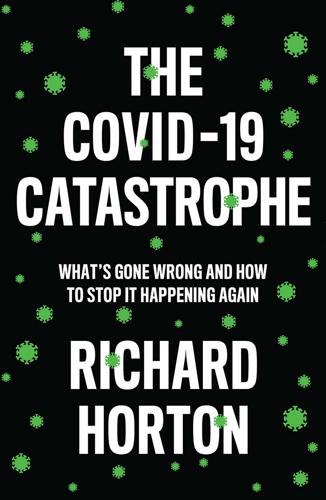
The COVID-19 Catastrophe: What's Gone Wrong and How to Stop It Happening Again
by
Richard Horton
Published 31 May 2020
Michel Foucault, in his 1975 book Discipline and Punish, drew on Jeremy Bentham’s idea of the panopticon to identify a growing drift towards what he called a ‘disciplinary society’. In its original conception, the panopticon was an architectural design for a new type of prison.3 Circular in nature, the building would contain prison cells on its outer curve, while at the centre there would be the prison inspector’s lodge. The inspector would be omnipresent, seen without being seen, while prisoners would (and should) always feel themselves under inspection. Bentham saw his panopticon – ‘a new mode of obtaining power of mind over mind’ – as being applicable to workhouses, poor-houses, factories, ‘mad-houses’, hospitals, schools and lazarettos (places of quarantine for those with the plague).
…
Didier Fassin, Life: A Critical User’s Manual (Cambridge: Polity, 2018). 6 The Risk Society Revisited It is obvious that, in all these instances, the more constantly the persons to be inspected are under the eyes of the persons who should inspect them, the more perfectly will the purpose of the establishment have been attained. Jeremy Bentham, Panopticon; or The Inspection House (1787) As the number of confirmed cases of COVID-19 in the US soared past 1 million at the beginning of May – with over 64,000 deaths – President Trump was clear about where the blame should be put. On China. The US administration, after decades of confidence-building between the two nations, began a programme of systematic disengagement with its most important strategic competitor.
…
If the hope after COVID-19 is for a more humane society – a worthy hope given the devastation this virus has wreaked – we must work hard to cultivate our sensibility for intolerance. Notes 1. Ulrich Beck, Risk Society: Towards a New Modernity, trans. Mark Ritter (London: Sage, [1986] 1992), p. 183. 2. Ibid., p. 59. 3. Jeremy Bentham, The Panopticon Writings (London: Verso, 1995). 4. Michel Foucault, The Birth of Biopolitics: Lectures at the Collège de France, 1978–79 (Basingstoke: Palgrave Macmillan, 2008). 5. Michel Foucault, Society Must Be Defended: Lectures at the Collège de France, 1975–76 (London: Penguin, 2004). 6. Timothy Roberton et al., Early estimates of the indirect effects of the COVID-19 pandemic on maternal and child mortality in low-income and middle-income countries, Lancet Global Health, 12 May 2020. 7.

Power and Progress: Our Thousand-Year Struggle Over Technology and Prosperity
by
Daron Acemoglu
and
Simon Johnson
Published 15 May 2023
WE HAVE BEEN here before, many times. One vivid example began in 1791, when Jeremy Bentham proposed the panopticon, a prison design. In a circular building and with the right lighting, Bentham argued, centrally positioned guards could create the impression of watching everyone all the time, without themselves being observed—supposedly a very efficient (low-cost) way of ensuring good behavior. The idea at first found some traction with the British government, but sufficient funding was not forthcoming, and the original version was never built. Nevertheless, the panopticon captured the modern imagination. For the French philosopher Michel Foucault, it is a symbol of oppressive surveillance at the heart of industrial societies.
…
In George Orwell’s 1984, it operates as the omnipresent means of social control. In the Marvel movie Guardians of the Galaxy, it proves to be a flawed design that facilitates an ingenious prison breakout. Before the panopticon was proposed as a prison, it was a factory. The idea originated with Samuel Bentham, Jeremy’s brother and an expert naval engineer then working for Prince Grigory Potemkin in Russia. Samuel’s idea was to enable a few supervisors to watch over as many workers as possible. Jeremy’s contribution was to extend that principle to many kinds of organizations. As he explained to a friend, “You will be surprised when you come to see the efficacy which this simple and seemingly obvious contrivance promises to be to the business of schools, manufactories, Prisons, and even Hospitals.…” The panopticon’s appeal is easy to understand—if you are in charge—and was not missed by contemporaries.
…
As he explained to a friend, “You will be surprised when you come to see the efficacy which this simple and seemingly obvious contrivance promises to be to the business of schools, manufactories, Prisons, and even Hospitals.…” The panopticon’s appeal is easy to understand—if you are in charge—and was not missed by contemporaries. Better surveillance would lead to more compliant behavior, and it was easy to imagine how this could be in the broader interest of society. Jeremy Bentham was a philanthropist, animated by schemes to improve social efficiency and help everyone to greater happiness, at least as he saw it. Bentham is credited today as the founder of the philosophy of utilitarianism, which means maximizing the combined welfare of all people in society.

The People vs Tech: How the Internet Is Killing Democracy (And How We Save It)
by
Jamie Bartlett
Published 4 Apr 2018
.* There is another more subtle threat from Little Brother’s constant surveillance and data sharing. Back in the eighteenth century, the philosopher Jeremy Bentham (of whom more later) proposed a new type of prison, which he called a ‘panopticon’. It was designed so that all the inmates could potentially be observed by a single watchman – without any knowledge of when they were being watched. The possibility alone was enough, thought Bentham, to ensure that everyone behaved. Our modern panopticon doesn’t have just one watchman: everyone is both watching and being watched. This kind of permanent visibility and monitoring is a way to enforce conformity and docility.
…
It never has yet, but perhaps this time will be different, because of the intoxicating power of numbers. The most famous version of this dangerous idea came from our old friend Jeremy Bentham. The Panopticon wasn’t his only idea; in 1789 he designed a ‘felicific calculus’, a kind of algorithm that would (he claimed) calculate the moral rightness of any decision, which he thought could be measured by whether it increased pleasure and reduced pain for the most number of people. His proto-algorithm took into account things like intensity, duration and fecundity. Bentham was a utilitarian because he thought the consequences of an action determined its moral worth. That’s why he was enamoured by a machine.
…
Democracy (and indeed the world) does not run like this – it is slow, deliberative and grounded in the physical. Democracy is analogue rather than digital. And any vision of the future that runs contrary to the reality of people’s lives and wishes can only end in disaster. Chapter 1: The New Panopticon What the Power of Data is Doing to Our Free Will We live in a giant advertising panopticon which keeps us addicted to devices; this system of data collection and prediction is merely the most recent iteration in a long history of efforts to control us; it is getting more advanced by the day, which has serious ramifications for potential manipulation, endless distraction and the slow diminishing of free choice and autonomy.
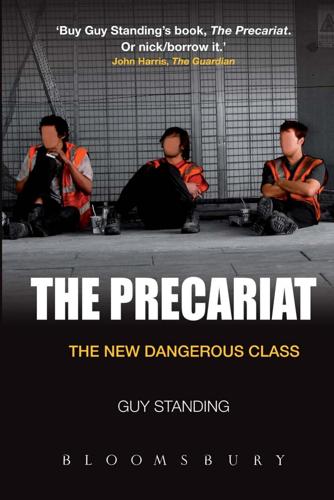
The Precariat: The New Dangerous Class
by
Guy Standing
Published 27 Feb 2011
The precariat hovers on the borderline, exposed to circumstances that could turn them from strugglers into deviants and loose cannons prone to listen to populist politicians and demagogues. This is the primary issue underlying this chapter. The panopticon society While the ‘social factory’ is not right as an image of how life for the precariat is being constructed, a better image is a ‘panopticon society’, in which all social spheres are taking the shape envisaged by Jeremy Bentham’s panopticon papers of 1787 (Bentham, 1995). It is not just what is done by government but what is allowed by the state in an ostensibly ‘free market’ society. Let us recall Bentham’s vision. He is known as the father of utilitarianism, the view that government should promote ‘the greatest happiness of the greatest number’.
…
But if he did not make the right choice, which was to labour hard, he would be left to ‘languish on bad bread and drink his water, without a soul to speak to’. And prisoners were to be isolated, to prevent them forming ‘a concert of minds’. He realised, just as neo-liberals were to realise, that collective agency would jeopardise the panopticon project. It was an idea Michel Foucault took up in the 1970s as a metaphor for producing ‘docile bodies’. Bentham believed his panopticon design could be used for hospitals, mental asylums, schools, factories, the workhouse and all social institutions. Around the world his design has been adopted and has been extended inadvertently by twenty-first-century company towns.
…
Autor, D. and Houseman, S. (2010), ‘Do Temporary-Help Jobs Improve Labor Market Outcomes for Low-Skilled Workers: Evidence from “Work First”’, American Economic Journal: Applied Economics, 3(2): 96–128. Bamford, J. (2009), The Shadow Factory: The Ultra-Secret NSA from 9/11 to the Eavesdropping on America, New York: Doubleday. Bennett, C. (2010), ‘Do We Really Need Advice on How to Deal with Boomerang Kids?’ Observer, 3 January, p. 25. Bentham, J. ([1787] 1995), Panopticon; or The Inspection-House, reprinted in M. Bozovich (ed.), The Panopticon Writings, London: Verso, pp. 29–95. Bernstein, R. (2009), ‘Don’t Trust Anyone Under 30?’, New York Times, 14 January. Beveridge, W. (1942), Social Insurance and Allied Services, London: HMSO. Blinder, A. (2009), ‘How Washington Can Create Jobs’, Wall Street Journal, 17 November, p. 16.
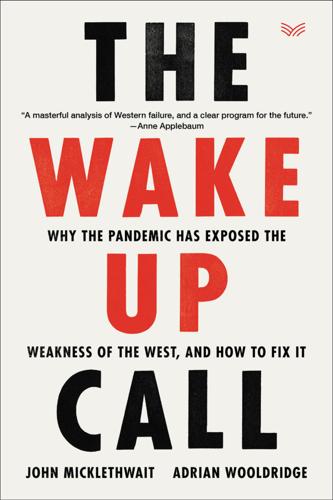
The Wake-Up Call: Why the Pandemic Has Exposed the Weakness of the West, and How to Fix It
by
John Micklethwait
and
Adrian Wooldridge
Published 1 Sep 2020
A particular horror to bear in mind is the Panopticon. Mill’s godfather, Jeremy Bentham, designed the perfect prison: circular in structure, which allowed a prison warder to keep watch on his charges from a central lodge, without them seeing him. Bentham’s logic was that the prisoners would feel under constant inspection, even when they weren’t. He wanted them to be kept in solitary confinement almost all the time and forced to wear masks for communal meals (so they couldn’t communicate with each other). Although its construction was never completed, the Panopticon has got a new lease of life in the way modern society measures, classifies, and regulates its citizenry.
…
The historian Thomas Macaulay described him as “the rising hope” of the “stern and unbending Tories.”17 Mill’s background was more enlightened. His father, James Mill, was a believer in “liberty,” “reason,” and “effort,” all of which were being frustrated by the establishment—and he raised his son to be “a reformer of the world.”18 John Stuart’s godfather was Jeremy Bentham, who pioneered the utilitarian idea that every institution should be measured by how well it advanced the greatest happiness of the greatest number, and he was surrounded by radicals such as David Ricardo, the economist who invented the notion of “comparative advantage,” and John Wade, the compiler of The Extraordinary Black Book, which listed all the nepotistical abuses of government, rotten boroughs, sinecures, and all.
…
He even broke with the standard reformers’ line that we must make government more efficient on the grounds that a better government would only improve Leviathan’s ability to rob the people. Like Hayek, Friedman hated being called a conservative. He saw himself squarely in the tradition of John Stuart Mill and Jeremy Bentham. In 1964, his vision of a night-watchman state was embraced by the Republican presidential nominee: “I have little interest in streamlining government or in making it more efficient, for I mean to reduce its size,” Barry Goldwater told the electorate. “I do not undertake to promote welfare, for I propose to extend freedom.”
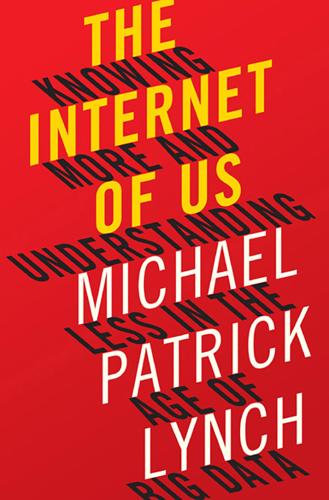
The Internet of Us: Knowing More and Understanding Less in the Age of Big Data
by
Michael P. Lynch
Published 21 Mar 2016
Arguably, the United States’ largest big data enterprise is run by the NSA, which was intercepting and storing an estimated 1.7 billion emails, phone calls and other types of communications every single day (and that was way back in 2010).1 As I write this, the same organization is purported to be finishing the building of several huge research centers to store and analyze this data around the country, including staggeringly large million-square-foot facilities in remote areas of the United States. We all understand that there is more known about what each of us thinks, feels and values than ever before. It can be hard to shake the feeling that we are living in an updated version of Jeremy Bentham’s famous panopticon—an eighteenth-century building design that the philosopher suggested for a prison. The basic idea was a prison as a fishbowl. Observation, Bentham suggested, affects behavior—and prisoners would control their behavior more if they knew their privacy was completely gone, if they could be seen by and see everyone at all times. In some ways, our digital lives are fishbowls; but fishbowls we’ve gotten into willingly.
…
Moreover, there are lots of positives. Targeted ads can be helpful, and smartphones have become effectively indispensable for many of us. And few would deny that increased security from terrorism is a good thing. Fig. 2. Elevation, section and plan of Jeremy Bentham’s Panopticon penitentiary, drawn by Willey Reveley, 1791. Partly for these reasons, writers like Jeremy Rifkin have been saying that information privacy is a worn-out idea. In this view, the Internet of Things exposes the value of privacy for what it is: an idiosyncrasy of the industrial age.2 So no wonder, the thought goes, we are willing to trade it away—not only for security, but for the increased freedom that comes with convenience.
…
So wary that you will likely try and censor your thoughts and even your activities—perhaps by humming some Mozart in your mind to disguise your thoughts as best you can. And the reason you’d do so would be obvious—no matter how good I may seem to you now, you will want to minimize your exposure to exploitation and manipulation. This is not surprising. As Bentham knew when he designed his panopticon, observation affects behavior. But, of course, that too isn’t necessarily bad. It is why security cameras are not always hidden. If you know you are being watched, you are less likely to act out. And that can be an instrument for good. Or not. So, one reason privacy is important is that invasions of it can lead to exploitation, manipulation and loss of liberty.
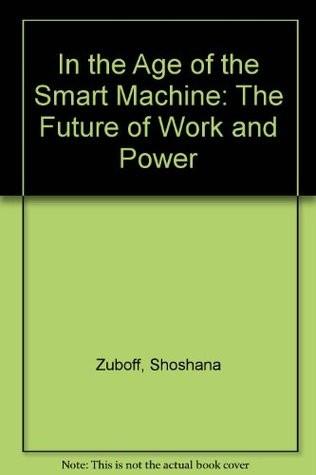
In the Age of the Smart Machine
by
Shoshana Zuboff
Published 14 Apr 1988
This new type of power. . . which lies outside the form of sovereignty, is disciplin- 1 ary power. The Panopticon was an architectural innovation developed by the moral philosopher Jeremy Bentham. In Foucault's view, it is both a sign of and metaphor for this new disciplinary society. Bentham extolled the Panopticon as a technological triumph capable of exploiting the productive potential of those who had flouted, thwarted, or otherwise escaped social authority. His initial targets were convicts and paupers, though he did not fail to see the potential usefulness of the Panopticon for students, asylum inmates, and workers. The architectural plan conceived by Bentham was first constructed by his brother Samuel, an engineer, in 1787 for a factory at Critchef in Russia.
…
There were at least some managers who saw the potential of the behavioral text as an in- strument of learning and improvement. What are the organizational conditions under which that potential might be exploited? The answer requires a closer examination of the information panopticon. What is the extent of the transparency it promises? Does it in truth accomplish its intended effect-to induce conformity with the foreknowledge of certain and involuntary self-display? HIERARCHY IN THE INFORMATION PANOPTICON One way that the information panopticon departs from Bentham's prin- ciples is that it is hierarchically organized. At every level of the organi- zation, the observer is as likely to be a target of technical control as its vehicle.
…
By this very fact the external power may throw off its physical weight. . . . It is a perpetual victory that avoids any physical confrontation and which is always decided in advance. ,,4 Bentham's Panopticon relied upon the materials and techniques of his day to create a structure that could autonomously reproduce an individualized social control, providing a central authority with certain 322 TECHNIQUE: THE MATERIAL DIMENSION OF POWER knowledge of an institutional population through the architectural in- vention of "universal transparency." Bentham's extensive plans for the reform of prison management created both controversy and interest within the British Parliament. 5 Though his management proposals were not implemented, the central principle of continuous observation made possible by technical arrangements was to influence the administrative and architectural orientation of bureaucratic organizations from schools, to hospitals, to workplaces in which individuals are taken up as unique problems to be managed and measured against appropriate norms: 6 "Panopticism is the general principle of a new 'political anat- omy' whose object and end are not the relations of sovereignty but the relations of discipline. . . .
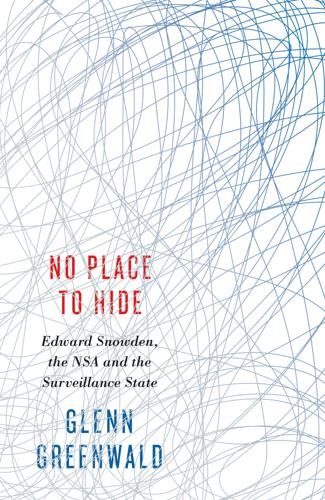
No Place to Hide: Edward Snowden, the NSA, and the U.S. Surveillance State
by
Glenn Greenwald
Published 12 May 2014
What makes a surveillance system effective in controlling human behavior is the knowledge that one’s words and actions are susceptible to monitoring. This principle was at the heart of British philosopher Jeremy Bentham’s eighteenth-century conception of the Panopticon, a building design he believed would allow institutions to effectively control human behavior. The building’s structure was to be used, in his words, for “any sort of establishment, in which persons of any description are to be kept under inspection.” The Panopticon’s primary architectural innovation was a large central tower from which every room—or cell, or classroom, or ward—could be monitored at any time by guards.
…
Bentham envisioned that his creation would spread far beyond prisons and mental hospitals to all societal institutions. Inculcating in the minds of citizens that they might always be monitored would, he understood, revolutionize human behavior. In the 1970s, Michel Foucault observed that the principle of Bentham’s Panopticon was one of the foundational mechanisms of the modern state. In Power, he wrote that Panopticonism is “a type of power that is applied to individuals in the form of continuous individual supervision, in the form of control, punishment, and compensation, and in the form of correction, that is, the moulding and transformation of individuals in terms of certain norms.” In Discipline and Punish, Foucault further explained that ubiquitous surveillance not only empowers authorities and compels compliance but also induces individuals to internalize their watchers.
…
While the government, via surveillance, knows more and more about what its citizens are doing, its citizens know less and less about what their government is doing, shielded as it is by a wall of secrecy. It is hard to overstate how radically this situation reverses the defining dynamic of a healthy society or how fundamentally it shifts the balance of power toward the state. Bentham’s Panopticon, designed to vest unchallengeable power in the hands of authorities, was based on exactly this reversal: “The essence of it,” he wrote, rests in “the centrality of the inspector’s situation” combined with the “most effectual contrivances for seeing without being seen.” In a healthy democracy, the opposite is true.
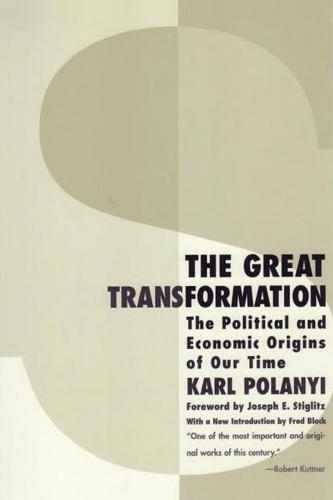
The Great Transformation: The Political and Economic Origins of Our Time
by
Karl Polanyi
Published 27 Mar 2001
The idea that pauperism could be made to pay had firmly gripped people’s minds. It was exactly a century later that Jeremy Bentham, the most prolific of all social projectors, formed the plan of using paupers on a large scale to run machinery devised by his even more inventive brother, Samuel, for the working of wood and metal. “Bentham,” says Sir Leslie Stephen, “had joined his brother and they were looking out for a steam engine. It had now occurred to them to employ convicts instead of steam.” This was in 1794; Jeremy Bentham’s Panopticon plan with the help of which jails could be designed so as to be cheaply and effectively supervised had been in existence for a couple of years, and he now decided to apply it to his convict-run factory; the place of the convicts was to be taken by the poor.
…
This was in 1794; Jeremy Bentham’s Panopticon plan with the help of which jails could be designed so as to be cheaply and effectively supervised had been in existence for a couple of years, and he now decided to apply it to his convict-run factory; the place of the convicts was to be taken by the poor. Presently the Bentham brothers’ private business venture merged into a general scheme of solving the social problem as a whole. The decision of the Speenhamland magistrates, Whitbread’s minimum wage proposal, and, above all, Pitt’s privately circulated draft of a comprehensive bill for the reform of the Poor Law had made pauperism a topic among statesmen. Bentham, whose criticism of Pitt’s Bill was supposed to have brought about its withdrawal, now came forward in Arthur Young’s Annals with elaborate proposals of his own (1797). His Industry-Houses, on the Panopticon plan—five stories in twelve sectors—for the exploitation of the labor of the assisted poor were to be ruled by a central board set up in the capital and modelled on the Bank of England’s board, all members with shares worth five or ten pounds having a vote.
…
With those engaged in the routine of business, analytical ideas were at a discount. The exploration of society, at least so it was thought, was concluded; no white spots were left on the human map. A man of Bentham’s stamp had become impossible for a century. Once the market organization of industrial life had become dominant, all other institutional fields were subordinated to this pattern; the genius for social artifacts was homeless. Bentham’s Panopticon was not only a “mill to grind rogues honest, and idle men industrious”‡; it would also pay dividends like the Bank of England. He sponsored proposals as different as an improved system for patents; limited liability companies; a decennial census of population; the establishment of a Ministry of Health; interest-bearing notes to make savings general; a frigidarium for vegetables and fruit; armament factories on new technical principles, eventually run by convict labor, or alternatively, by the assisted poor; a Chrestomathic Day School to teach utilitarianism to the upper middle classes; a general register of real property; a system of public account keeping; reforms of public instruction; uniform registration; freedom from usury; the relinquishment of colonies; the use of contraceptives to keep the poor rate down; the junction of the Atlantic and the Pacific by means of a joint stock company; and others.
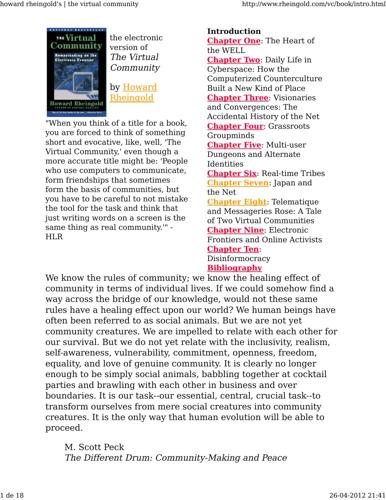
Howard Rheingold
by
The Virtual Community Homesteading on the Electronic Frontier-Perseus Books (1993)
Published 26 Apr 2012
But another kind of vision could apply to the use of the Net in the wrong ways, a shadow vision of a less utopian kind of place--the Panopticon. Panopticon was the name for an ultimately effective prison, seriously proposed in eighteenth-century Britain by Jeremy Bentham. A combination of architecture and optics makes it possible in Bentham's scheme for a single guard to see every prisoner, and for no prisoner to see anything else; the effect is that all prisoners act as if they were under surveillance at all times. Contemporary social critic Michel Foucault, in Discipline and Punish, claimed that the machinery of the worldwide communications network constitutes a kind of camouflaged Panopticon; citizens of the world brought into their homes, along with each other, the prying ears of the state.
…
The idea of malevolent political leaders with their hands on the controls of a Net raises fear of a more direct assault on liberties. Caught in the Net: CMC and the Ultimate Prison In 1791, Jeremy Bentham proposed, in <Panopticon; or, the Inspection House, that it was possible to build a mechanism for enforcing a system of social control into the physical structure of a building, which he called the Panopticon. His design for this building was intended to be very general, an architectural algorithm that could be used in prisons, schools, and factories. Individual cells are built into the circumference of a circular building, around a central well.
…
Kevin Robins and Frank Webster, in their article "Cybernetic Capitalism: Information, Technology, Everyday Life," made the connection between Bentham, Foucault, and the evolution of the telecommunications network: We believe that Foucault is right in seeing Bentham's Panopticon as a significant event in the history of the human mind. We want to suggest that the new communication and information technologies-particularly in the form of an integrated electronic grid--permit a massive extension and transformation of that same (relative, technological) mobilization to which Bentham's Panoptic principle aspired. What these technologies support, in fact, is the same dissemination of power and control, but freed from the architectural constraints of Bentham's stone and brick prototype.

Data and Goliath: The Hidden Battles to Collect Your Data and Control Your World
by
Bruce Schneier
Published 2 Mar 2015
http://m.seagate.com/files/staticfiles/docs/pdf/whitepaper/video-surv-storage-tp571-3-1202-us.pdf. Jeremy Bentham conceived of his “panopticon”: Jeremy Bentham (1791), The Panopticon, or the Inspection-House, T. Payne, http://cartome.org/panopticon2.htm. idea has been used as a metaphor: Oscar H. Gandy Jr. (1993), The Panoptic Sort: A Political Economy of Personal Information, Westview Press, http://books.google.com/books?id=wreFAAAAMAAJ. on the Internet and off: Tom Brignall III (2002), “The new panopticon: The Internet viewed as a structure of social control,” Tennessee Tech University, http://unpan1.un.org/intradoc/groups/public/documents/apcity/unpan003570.pdf.
…
Some of us are unconcerned about government surveillance, and therefore not affected at all. Others of us, especially those of us in religious, social, ethnic, and economic groups that are out of favor with the ruling elite, will be affected more. Jeremy Bentham’s key observation in conceiving his panopticon was that people become conformist and compliant when they believe they are being observed. The panopticon is an architecture of social control. Think of how you act when a police car is driving next to you, or how an entire country acts when state agents are listening to phone calls. When we know everything is being recorded, we are less likely to speak freely and act individually.
…
Unless we take steps to prevent it, being captured on camera will get even less avoidable as life recorders become more prevalent. Once enough people regularly record video of what they are seeing, you’ll be in enough of their video footage that it’ll no longer matter whether or not you’re wearing one. It’s kind of like herd immunity, but in reverse. UBIQUITOUS SURVEILLANCE Philosopher Jeremy Bentham conceived of his “panopticon” in the late 1700s as a way to build cheaper prisons. His idea was a prison where every inmate could be surveilled at any time, unawares. The inmate would have no choice but to assume that he was always being watched, and would therefore conform. This idea has been used as a metaphor for mass personal data collection, both on the Internet and off.
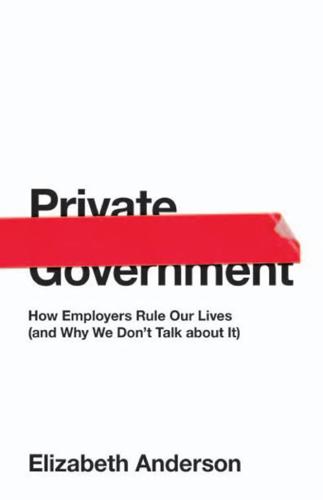
Private Government: How Employers Rule Our Lives (And Why We Don't Talk About It)
by
Elizabeth S. Anderson
Published 22 May 2017
Conditions were harsh, hours long, wages low, and prospects for advancement, regardless of how hard one worked, minimal. The nineteenth century saw the spread of total institutions across society: the prison, the asylum, the hospital, the orphanage, the poorhouse, the factory. Jeremy Bentham’s notorious prison plan, the Panopticon, was his model for these other institutions.97 Other liberals, such as Joseph Priestley, allied with factory owners and social reformers to promote these new types of hyperdisciplinary institution. Here lay the central contradiction of the new liberal order: “Though these radicals preached independence, freedom, and autonomy in polity and market, they preached order, routine, and subordination in factory, school, poorhouse, and prison.”98 Preindustrial labor radicals, viewing the vast degradation of autonomy, esteem, and standing entailed by the new productive order in comparison with artisan status, called it wage slavery.
…
Sean Wilentz, Chants Democratic: New York City and the Rise of the American Working Class, 1788–1850 (New York: Oxford University Press, 2004), 508–16. 97. Gertrude Himmelfarb, The Idea of Poverty: England in the Early Industrial Age (New York: Knopf, 1984), 78. See, for example, Jeremy Bentham, Pauper Management Improved: Particularly by Means of an Application of the Panopticon Principle of Construction (London: R. Baldwin, 1812). 98. Isaac Kramnick, Republicanism and Bourgeois Radicalism: Political Ideology in Late Eighteenth-Century England and America (Ithaca, NY: Cornell University Press, 1990), 97. 99. Smith, Wealth of Nations, vol. 2, V.1.F.50. 100.
…
FedEx Ground Package System (2014), 159n26 Ali, Tariq, 78, 166n8 Amazon, poor treatment of workers at, 128–30, 177–78n14 American Civil War, and the universalization of independent labor, 32 anarchism, 6 Anderson, Elizabeth, viii, ix, xvii–xviii, 89–90, 112; on Cowen’s skewed view of working conditions and wages in the United States, 134–35; critique of her views on early modern economic and social change in England, 80–88; focus of on quasi-political relations of government between employees and employers, 101; fundamental objections of to private government, 127; on hierarchies of authority, xi–xii; on the modern industrial firm as “private government” and a “dictatorship,” x–xi, 38; onprivate business firms as “communist dictatorships in our midst,” 39, 108–9; Tanner lectures of, 78; on ways to increase worker protections against arbitrary treatment, xii Anglican Church, 11; as a form of monopoly, 16; private government functions of, 8–9 Apple, Inc., 145n2, 176–77n7 apprentices/apprenticeship, xiii, 9–10, 24, 33, 42, 59, 81–82, 83, 88 authoritarianism, x, 12, 36; feudal authoritarianism, 160n29; workplace authoritarianism, 50, 59, 62, 136 authority, 66, 133; discretionary authority of employers over workers, 113; and the firm, 56–57; hierarchies of, 52; interpersonal authority, 65; of managers over workers, 67; and political power, 98; scope of and limitations to employer authority, 53–54, 63; subjection to, 61–62, 127–28, 161n35 autonomy, exercise of as a basic human need, 128 Bank of North America, 24 Baptists, 12 begging/beggary, 15, 16 Belated Feudalism (Orren), 160n29 Bentham, Jeremy, prison plan of (the Panopticon), 34 Bismarck, Otto von, 29 Blake, William, 22 Bromwich, David, xiii–xiv, 119, 174n1; on the human costs of market dislocations for traditional societies, xiv–xv; on the rise of market society, 121–22, 126 Cantor, Eric, 156n95 charity, 29, 81, 83, 121, 151n46 Charles I (king of England), 76, 166n8 Chartists/Chartism, 24, 29–30 Chidley, Katherine, 13, 87 Church of England.
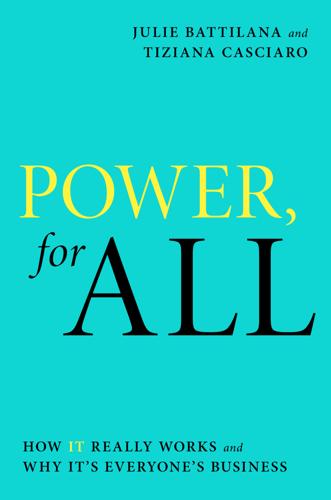
Power, for All: How It Really Works and Why It's Everyone's Business
by
Julie Battilana
and
Tiziana Casciaro
Published 30 Aug 2021
Imagine a world in which your every movement could be observed: Every step you took, every meal you ate, and every conversation you had could be monitored. The English philosopher Jeremy Bentham first conceived of such a system as a way to structure prisons, in which a single guard would be both invisible to and have an unobstructed view of every inmate all the time. Bentham called this system a “panopticon.” French philosopher Michel Foucault borrowed Bentham’s concept in the 1970s and used it as a metaphor to describe how, through the use of surveillance, the few could exercise social control over the many.30 The result would be a society remarkably ordered and regulated, but completely unfree.
…
For more on algorithmic recognition bias see Joy Buolamwini and Timnit Gebru, “Gender Shades: Intersectional Accuracy Disparities in Commercial Gender Classification,” in Conference on Fairness, Accountability and Transparency, PMLR (2018): 77–91; Yui Man Lui et al., “A Meta-Analysis of Face Recognition Covariates,” in 2009 IEEE 3rd International Conference on Biometrics: Theory, Applications, and Systems (2009): 1–8. 25 Joy Buolamwini, “How I’m Fighting Bias in Algorithms,” TEDxBeaconStreet, November 2016, https://www.ted.com/talks/joy_buolamwini_how_i_m_fighting_bias_in_algorithms. 26 Virginia Eubanks, Automating Inequality: How High-Tech Tools Profile, Police, and Punish the Poor (New York: Picador, 2019); Ruha Benjamin, Race After Technology: Abolitionist Tools for the New Jim Code (Cambridge, MA: Polity, 2019). 27 Cathy O’Neil, Weapons of Math Destruction: How Big Data Increases Inequality and Threatens Democracy (Westminster, UK: Penguin Books, 2017); Safiya Umoja Noble, Algorithms of Oppression: How Search Engines Reinforce Racism (New York: New York University Press, 2018). 28 Cathy O’Neil, “The Era of Blind Faith in Big Data Must End,” TED, April 2017, https://www.ted.com/talks/cathy_o_neil_the_era_of_blind_faith_in_big_data_must_end. 29 Emily Chang, Brotopia: Breaking up the Boys’ Club of Silicon Valley (New York: Portfolio/Penguin, 2019). 30 In the eighteenth century, English philosopher Jeremy Bentham designed an influential prison system, the “panopticon.” His design delineated space in the prison such that a ring-shape of prison cells surrounded a central tower for guards. While guards could always see all of prisoners’ cells, guards remained invisible to prisoners in faraway small windows. French intellectual Michel Foucault went on to see the panopticon as a symbol of social control that could be understood to characterize the everyday life of not only prisoners but actually all citizens.
…
For a comprehensive list of locations of any word or phrase, use your reading system’s search function. 2008 financial crisis, 118, 126 48 Laws of Power, The (Greene), 19 Aakash’s story, 82–84 abuse of power, 21, 37, 43, 110–13 access to valued resources changing power balance, 8–13, 194 collective choices, 195 expanding networks for, 194 Ning’s story, 61, 63–64 personal data surveillance, 151–54 purposeful use of technology and, 148, 150 reclaiming democratic power, 197 Adbusters, 118 Age of Surveillance Capitalism, The (Zuboff), 152 agitation, 118–20, 137, 154, 195, 196, 238n7 agricultural revolution, 142 AI Now Institute, 160 Aladdin, x algorithms, 148–51, 153, 158–60 Alighieri, Dante, 41 Alinsky, Saul D., 20 Allegory of Good and Bad Government, The (Lorenzetti), 165 Allen, Danielle, 186 Alphabet Workers Union, 157–58 altruism, 26, 30–31, 36–38, 55, 196 Amazon, 112, 152, 153, 157, 159 Amnesty International, 156 Andersen, Lene Rachel, 187, 188, 258n83 Anderson, Cameron, 211n25, 212n10, 212n13, 230n12, 250n3 Anderson, Elizabeth, 177 antitrust legislation, 11, 159 apartheid, 117 Appiah, Kwame Anthony, 218n18, 220n34 Apple, 113, 151, 153, 157, 158 Arab Spring, 109, 117, 118 Ardern, Jacinda, 53–54 Arendt, Hannah, 96 Argentina’s marriage equality story, 131–37, 242n34 Argentine LGBT Federation, 133–37, 242n34 Aristotle, 55, 57 artificial intelligence (AI), 148–49 Associação Saúde Criança (Instituto DARA), 28 attention economy, 152–53 attraction strategy, 8–11, 9, 12, 194 Austen, Jane, 46 authoritarianism, xvii, 36–38, 43, 122, 152, 185 authority-power relationship, 66–68, 69–70, 73 #BalanceTonPorc, 137 Banaji, Mahzarin R., 231n19, 231n20, 233n48 Banerjee, Abhijit V., 114 Barefoot College’s innovation, 144–46, 148, 161 Bastida, Xiye, 121–24 Beard, Mary, 101 Beauvoir, Simone de, 102 belonging, 2, 7, 58, 82, 105, 118, 133, 168, 187, 194, 221n40 See also valued resources: affiliation benefit corporations (B-Corps), 176 Bentham, Jeremy, 151, 245n30 Berners-Lee, Tim, 147, 148 betweenness, 79–81, 79, 153 Bhatia, Karan, 157 bias algorithmic, 150–51 fundamental attribution error, 16 negativity bias, 19 status quo bias, 74 confirmation bias, 88 See also stereotypes, racism, gender inequality BIPOC (Black, Indigenous, and People of Color), 88, 117, 151, 196 Björkman, Tomas, 187, 188, 258n83 Black Lives Matter movement, 117, 139, 141, 147–48 Black Voters Matter Fund, 190 Blau, Peter M., 261n4 Bloomberg, Michael, 130 Boards of Directors, 66, 86–89, 91–92, 128–130, 157, 169, 174–177, 188 Bonaparte, Napoleon, 47 Bourdieu, Pierre, 231n26, 232n34 Brass, Daniel J., 226n12 Brave New World (Huxley), 164 Brock, Timothy, 135 Brodsky, Greg, 162–63 Brown, LaTosha, 190–91 Browner, Carol, 80, 81, 84 Buddhism, 32–33 Buffett, Warren, 114 Buolamwini, Joy, 150 Burke, Tarana, 137 Burt, Ronald S., 227n25, 228n36, 236n66 Business Roundtable, 175–76 Caesar, Julius, 101 Cailliau, Robert, 147, 148 Capital (Marx), 110 Carnegie, Andrew, 110–11 Caro, Robert A., 14–15 Carus, Titus Lucretius, 41 caste system, 91–92 Castells, Manuel, 199, 231n26, 239n2, 261n9 Catholic Church, 131, 135 certified coaches, 5, 209n4 change-makers, 74, 78 Channapatna artisans, 47, 50 chattel slavery, 91–92 checks on power, 165–92 collective responsibility, 189–92 employee representation, 177–82 organizational power sharing, 167–73, 191–92 oversight and accountability, 173–77 societal power sharing, 182–84, 192, 256n63 structural limits, 165–66 See also civic education and engagement, civic vigilance Chenoweth, Erica, 124 Chomsky, Noam, 219n25, 257n77 Cialdini, Robert B., 210n15, 227n23 Citizens United, 118 civic education and engagement, 184–88 civic vigilance, 184–86, 192, 257n74, 257n79 Civil Rights Act, 14 Clegg, Stewart, 236n64, 262n22 Cleisthenes, 182, 256n63 climate science, 45–46 Clinton, Bill, 80 Coats, Michael, 167, 168, 169, 170, 171 Code of Hammurabi, 100–01 codetermination, 181 Cohen, Joshua, 257n75, 259n96 collective action consolidation strategy, 11–12, 111, 112 Google employees story, 154–58 keeping power in check, 192 power distribution responsibility, 195 shifting power balance and, 115, 178–79 collective movements, 117–39 agitation, 118–20, 137, 154, 195, 196, 239n6 digital technology and, xvii, 137–39, 154–58, 242n40 innovation, 119–20, 125–30, 147–49, 154, 195, 196 orchestration, 119–20, 131–37, 154, 195, 196 public agenda and, 120–25 shifting power balance, 115 collective orientation, 32, 36, 195 collective responsibility, 189–92 Community Interest Companies, 176 concentration of wealth, 162, 175–76, 189–90 confirmation bias, 88 Confucius, 55 consolidation strategy, 8, 9, 11–12, 111, 112, 142, 194 Contract with America (Gingrich), 80 Cook, Tim, 158 cooperatives, 162–63, 179–81 Cordeiro, Vera, 27–29, 33, 38–39, 166 Courpasson, David, 247n57, 262n22 COVID-19, 38, 49, 176 Creighton, Mandell, 24 CRISPR (clustered regularly interspaced short palindromic repeats), 162, 164, 249n79 Crozier, Michel, 225n6 Csikszentmihalyi, Mihaly, 42 Cuddy, Amy J.
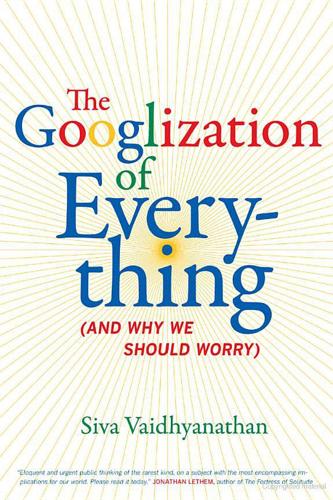
The Googlization of Everything:
by
Siva Vaidhyanathan
Published 1 Jan 2010
However, most work surveying the troubling implications of mass surveillance has fundamentally misrepresented its nature. It assumes that surveillance of the kind that Google makes possible is analogous to the theory of social control described by Michel Foucault as the Panopticon. But this trope has exhausted its utility. The original Panopticon, conceived by Jeremy Bentham, was a design for a circular prison with a central watchtower, in which all the inmates would behave because they would assume that they were being observed at all times. Foucault argued that state programs to monitor and record our comings and goings create imaginary prisons that lead citizens to limit what they do out of fear of being observed by those in power.
…
Certainly the Stasi in East Germany exploited the controlling power generated by widespread awareness of surveillance and the potential for brutal punishment for thought crimes.66 But that is not the environment in which most of us now live. And unless the Panopticon is as visible and ubiquitous as agencies like the Stasi, it cannot influence behavior as Bentham and Foucault assumed it would. But more important, the forces at work in Europe, North America, and much of the rest of the world are the opposite of a Panopticon: they involve not the subjection of the individual to the gaze of a single, centralized authority, but the surveillance of the individual, potentially by all, always by many. We have a “cryptopticon” (for lack of a better word). Unlike Bentham’s prisoners, we don’t know all the ways in which we are being watched or profiled—we simply know that we are.
…
Gandy, The Panoptic Sort: A Political Economy of Personal Information (Boulder, CO: Westview Press, 1993); David Lyon, Theorizing Surveillance: The Panopticon and Beyond (Cullompton, U.K.: Willan Publishing, 2006); Satu Repo and Canadian Centre for Policy Alternatives, Teacher Surveillance: The New Panopticon (Ottawa: Canadian Centre for Policy Alternatives, 2005); Mark Andrejevic, iSpy: Surveillance and Power in the Interactive Era (Lawrence: University Press of Kansas, 2007). For a refreshing approach to studying surveillance without the Panopticon model, see Kevin Haggerty, “Tear Down the Walls: On Demolishing the Panopticon,” in Lyon, Theorizing Surveillance. 66. B. Brower, review of Sonia Combe, Une société sous surveillance: Les intellectuels et la Stasi, in Totalitarian Movements and Political Religions 2 (2001): 88–92; Gary Bruce, “The Prelude to Nationwide Surveillance in East Germany: Stasi Operations and Threat Perceptions, 1945–1953,” Journal of Cold War Studies 5, no. 2 (May 1, 2003): 3–31; Sonia Combe, Une société sous surveillance: Les intellectuels et la Stasi (Paris: Albin Michel, 1999). 67.
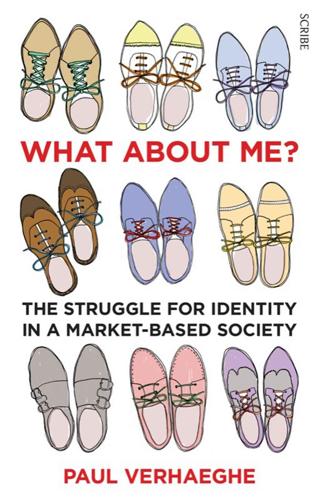
What About Me?: The Struggle for Identity in a Market-Based Society
by
Paul Verhaeghe
Published 26 Mar 2014
This means that you can no longer point the finger at power, which makes resistance very difficult. By way of metaphor, Foucault refers to the ideal prison devised by the English philosopher and social theorist Jeremy Bentham. Its unique feature was a single, central watchtower from which all inmates could be watched by an unseen observer. This Panopticon, as he called it, was also extremely efficient and cost-effective, because it only needed a single jailer. According to Foucault, present-day society and the new discipline go much further: the watchperson has left the Panopticon’s tower, and supervision is everywhere. Every time we walk down the street, turn on the television, or open a magazine we are told how to behave and how to attain the perfection expected of us.
…
The (Dutch) text can be accessed free of charge via the author’s website. 6 ‘We shall suppose that a creature, possessed of reason, but unacquainted with human nature, deliberates with himself what rules of justice or property would best promote public interest, and establish peace and security among mankind: His most obvious thought would be, to assign the largest possessions to the most extensive virtue, and give everyone the power of doing good, proportioned to his inclination … But were mankind to execute such a law; so great is the uncertainty of merit, both from its natural obscurity, and from the self-conceit of each individual, that no determinate rule of conduct would ever result from it; and the total dissolution of society must be the immediate consequence.’ (Hume, 2010, section III, part 2.) 7 Sutherland, 1992, chapter 8. 8 Swierstra & Tonkens, 2008. 9 Jeremy Bentham, 18th-century British philosopher and social reformer, the founder of utilitarianism (‘the greatest happiness of the greatest number’). He designed the Panopticon, an ideal prison in which a single guard could observe all prisoners from a central tower while himself remaining unseen. (Achterhuis, 2010; Sennett, 2005.) 10 Bauman, 1999, p. 26. 11 Sennett, 1998, p. 70. 12 Westen et al., 2004.
…
The design of society had been debated for half a century by intellectuals in French salons, and their guiding principles were simple: any behaviour that causes people harm is wrong, while whatever promotes their happiness is right. Their goal was to achieve ‘the greatest happiness of the greatest number’, as it would be worded by the founder of utilitarianism, Jeremy Bentham. The radicals among them were atheists, which had far-reaching ethical implications. If there were no God to dictate what was good and evil, people would have to think about that themselves. Equally, if there were no reward or punishment in the life hereafter, these would have to be meted out on Earth, according to a system based on insights into human nature.
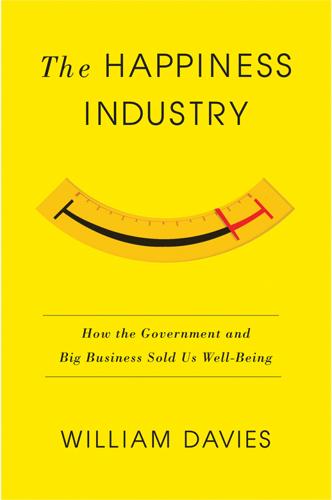
The Happiness Industry: How the Government and Big Business Sold Us Well-Being
by
William Davies
Published 11 May 2015
Anticipating Thatcherism and workfare nearly two centuries beforehand, one of Bentham’s policy recommendations was for the state to establish a National Charity Company (a joint stock company, modelled on the East India Company), which would alleviate poverty by employing hundreds of thousands of people in privately managed ‘industry houses’.21 His proposal for the Panopticon also included a recommendation for private firms to build and run the prisons, with a license provided by the state. Not content with reconceiving the very basis of legal authority, Jeremy Bentham can be viewed as the godfather of public sector outsourcing.
…
The difference between me and Hume was this: the use he made of it was to account for that which is, I to show what ought to be.’ Quoted in Charles Milner Atkinson, Jeremy Bentham: His Life and Work, Lenox, Mass.: Hard Press, 2012, 30. 2See Philip Schofield, Catherine Pease-Watkin and Michael Quinn, eds., Of Sexual Irregularities, and Other Writings on Sexual Morality, Oxford: Oxford University Press, 2014. 3Quoted in Atkinson, Jeremy Bentham: His Life and Work, 109. 4Ibid., 222. 5Jeremy Bentham, The Principles of Morals and Legislation, Amherst, NY: Prometheus Books, 1988, 20. 6Ibid., 70. 7Joanna Bourke, The Story of Pain: From Prayer to Painkillers, Oxford: Oxford University Press, 2014. 8Junichi Chikazoe, Daniel Lee, Nikolaus Kriegeskorte and Adam Anderson, ‘Population Coding of Affect Across Stimuli, Modalities and Individuals’, Nature Neuroscience, 17: 8, 2014. 9This is not undisputed, but for a convincing argument for Bentham’s monistic philosophy, see Michael Quinn, ‘Bentham on Mensuration: Calculation and Moral Reasoning’, Utilitas 26: 1, 2014. 10Bentham, The Principles of Morals and Legislation, 9. 11Ibid., 29–30. 12Immanuel Kant, ‘An Answer to the Question “What is Enlightenment?”’
…
.: Hard Press, 2012, 30. 2See Philip Schofield, Catherine Pease-Watkin and Michael Quinn, eds., Of Sexual Irregularities, and Other Writings on Sexual Morality, Oxford: Oxford University Press, 2014. 3Quoted in Atkinson, Jeremy Bentham: His Life and Work, 109. 4Ibid., 222. 5Jeremy Bentham, The Principles of Morals and Legislation, Amherst, NY: Prometheus Books, 1988, 20. 6Ibid., 70. 7Joanna Bourke, The Story of Pain: From Prayer to Painkillers, Oxford: Oxford University Press, 2014. 8Junichi Chikazoe, Daniel Lee, Nikolaus Kriegeskorte and Adam Anderson, ‘Population Coding of Affect Across Stimuli, Modalities and Individuals’, Nature Neuroscience, 17: 8, 2014. 9This is not undisputed, but for a convincing argument for Bentham’s monistic philosophy, see Michael Quinn, ‘Bentham on Mensuration: Calculation and Moral Reasoning’, Utilitas 26: 1, 2014. 10Bentham, The Principles of Morals and Legislation, 9. 11Ibid., 29–30. 12Immanuel Kant, ‘An Answer to the Question “What is Enlightenment?”’, in Kant: Political Writings, ed. Hans Reiss, transl. H. B. Nisbet, Cambridge: Cambridge University Press, 1970. 13Paul McReynolds, ‘The Motivational Psychology of Jeremy Bentham: I. Background and General Approach’, Journal of the History of the Behavioral Sciences 4: 3, 1968; McReynolds, ‘The Motivational Psychology of Jeremy Bentham: II.
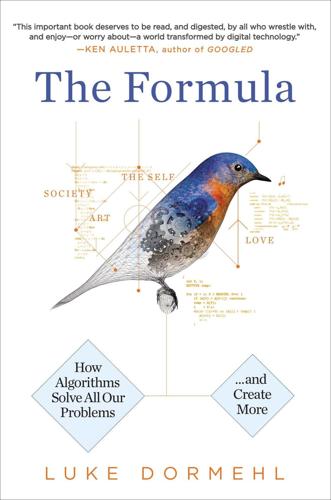
The Formula: How Algorithms Solve All Our Problems-And Create More
by
Luke Dormehl
Published 4 Nov 2014
Companies like Quantcast and Google get no benefit at all from everyone acting in the same way, since this allows for no market segmentation to occur. It is for this reason that articles like Steven Poole’s May 2013 cover story for the New Statesman, “The Digital Panopticon,” invoke the wrong metaphor when it comes to big data and algorithmic sorting.46 The panopticon, for those unfamiliar with it, was a prison designed by English philosopher and social theorist Jeremy Bentham in the late 18th century. Circular in design and with a large watchtower in the center, the theory behind the panopticon was that prisoners would behave as if they were being watched at all times—with the mere presence of the watchtower being as effective as iron bars in regulating behavior and ensuring that everyone acted the same way.
…
Both works proved immediately sensational: rare instances in which the conclusions of a previously obscure branch of academia truly captures the popular imagination. Guerry and Quetelet were translated into a number of different languages and widely reviewed. The Westminster Review—an English magazine founded by Utilitarians John Stuart Mill and Jeremy Bentham—devoted a particularly large amount of space to Guerry’s book, which it praised for being of “substantial interest and importance.” Charles Darwin read Quetelet’s work, as did Fyodor Dostoyevsky (twice), while no less a social reformer than Florence Nightingale based her statistical methods upon his own.13 Nightingale later gushingly credited Quetelet’s findings with “teaching us . . . the laws by which our Moral Progress is to be attained.”14 In all, Guerry and Quetelet’s work showed that human beings were beginning to be understood—not as free-willed, self-determining creatures able to do anything that they wanted, but as beings whose actions were determined by biological and cultural factors.
…
Samsung 127–28 Apprentice, The (US) 89 Aquinas, Thomas 183 Aron, Arthur 101 art and entertainment 161–207 and dehumanisation 203–4 and films via Internet 179–80 and mass market 175–77 and Salganik–Dodds–Watts study 172–73 and “superstar” markets 173 see also Epagogix; individual participants; individual titles artificial intelligence 126, 217 AT&T 29 Atlantic 11 Avatar 163, 172, 205 Avaya 49 Balloon Brigade 33 Barefoot Into Cyberspace (Hogge) 44 Barrymore, Drew 167 Barthes, Roland 186 Bauman, Zygmunt 81–82 BeautifulPeople 78 beauty map 31–32 Beck, Charlie 106–7 Bedpost 13, 93–95 Bedwood, David 97 Beethoven, Ludwig 202 Bellos, David 215 Benjamin, Walter 178–79 Bense, Max 182n Bentham, Jeremy 55, 118 Berk, Richard 120–24, 236 Bezos, Jeff 190 Bianculli, David 189 Bieber, Justin 202–3 Blackstone Electronic Discovery 127–28 Blink (Gladwell) 211 blogging 30 and owners’ personalities 38–39 and word choice 38–39 body-hacking 13–14 BodyMedia 94 books, see art and entertainment Bowden, B.
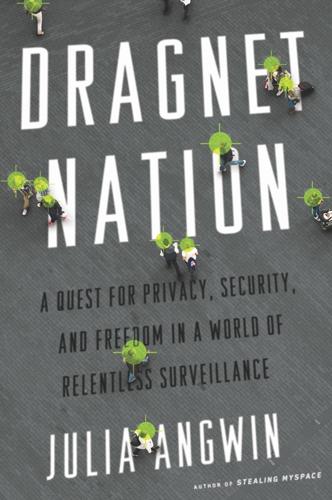
Dragnet Nation: A Quest for Privacy, Security, and Freedom in a World of Relentless Surveillance
by
Julia Angwin
Published 25 Feb 2014
Bauer concluded that people who encountered the Stasi internalized repression into “the body’s wrinkles and the brain’s mechanisms.” * * * The power of observation to be repressive was the foundational idea of the “Panopticon”—a prison design proposed by Jeremy Bentham in 1787. His idea was that a perfect prison would allow prisoners to believe they were being watched at all times but allow the watchers to remain unseen. He designed a circular prison with a guard tower in the middle, but it was never built during his lifetime. In 1975, the French philosopher Michel Foucault popularized Bentham’s idea, describing the Panopticon as a “marvelous” instrument of power. “The more numerous those anonymous and temporary observers are, the greater the risk for the inmate of being surprised and the greater his anxious awareness of being observed,” he wrote in his book Discipline and Punish.
…
In a study of psychological effects of Stasi surveillance: Babett Bauer, Kontrolle und Repression: individuelle Erfahrungen in der DDR (1971–1989), described in Bruce, The Firm, 158. Original: http://nypl.bibliocommons.com/item/show/16455058052907_kontrolle_und_repression. The power of observation to be repressive: Jeremy Bentham, The Panopticon Writings (Brooklyn, N.Y.: Verso, 2010). In 1975, the French philosopher Michel Foucault: Michel Foucault, Discipline and Punish: The Birth of the Prison (New York: Vintage, 1995). In 2011, Finnish researchers installed: Antti Oulasvirta et al., “Long-Term Effects of Ubiquitous Surveillance in the Home,” Helsinki Institute for Information Technology, Helsinki, 2012.
…
Lycos Maas, Jenna MAC (media access control) mail, postal malicious software Manning, Bradley marketers market manipulation Marlinspike, Moxie Marshall, Bruce Marshall, Thurgood Marwick, Alice MaskMe Massachusetts Institute of Technology Massachusetts Registry of Motor Vehicles “mass production of bias” MATRIX program Mayer-Schönberger, Viktor McCain, John McGrath, Pat medical data Memari, Kaveh metadata “method of loci” Microsoft Microsoft Outlook Mijangos, Luis Mohamed, Gulet Monahan, Brian Monahan, Matthew money launderers Morgan, Ted mortgage data motor vehicle registries Mozilla Mozy mud-puddle test Mueller, Robert Mugshots.com Murphy, Frank Muslims Muslims Giving Back mutual surveillance MyLife.com MySpace Names Database Napolitano, Janet National Academy of Sciences National Association for the Advancement of Colored People (NAACP) National Change of Address database National Counterterrorism Center National Security Agency (NSA) auditing your data on encryption and fairness test and negative rights NeoMail Netflix Netherlands Netscape Navigator Network Associates New Digital Age, The (Schmidt and Cohen) New Hampshire Supreme Court New Yorker New York Police Department (NYPD) New York Times Nielsen Company Nigeria no-fly lists Norway NoScript Noyes, Andrew nuclear weapons nude images Obama, Barack Obama, Michelle Oberman, Ethan Ofcom OFF Pocket Off-the-Record Messaging Olsen, Matthew Omniture Omnivore’s Dilemma, The (Pollan) One Nation, Under Surveillance (Royce) 1Password online “black markets” online–off-line matching online reputation, bulletproofing Open Security Foundation OpenTable “Operational Case Jentzsch” Operation High-Rise OPK (Operative Personenkontrolle) Oppenheim, Melissa opting out Otis, James, Jr. Oulasvirta, Antti Overstock.com “Panopticon” (Bentham) Party, Boston T. See Royce, Kenneth W. passports password-management software “Password Memorability and Security” (IEEE) PasswordResearch.com passwords children and creating strong mud-puddle test two-factor authentication PatientsLikeMe.com Patriot Act pay-for-performance principle Pearl Harbor attacks Peck, Amory PeopleSmart.com Perkins Coie law firm Permissus Perry, Edward Perry, Mike PersonicX database Petraeus, David Phoenix Suns basketball team phone calls.
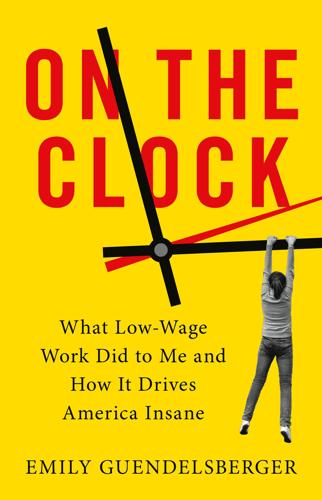
On the Clock: What Low-Wage Work Did to Me and How It Drives America Insane
by
Emily Guendelsberger
Published 15 Jul 2019
.* I used to live near Philly’s Eastern State Penitentiary, a tourist destination that looks like a few square blocks of medieval castle plunked down into a residential neighborhood. From above, though, it looks a bit like a flower, or a windmill: It’s one of the first physical examples of a panopticon, a concept dreamed up by British philosopher Jeremy Bentham in the late eighteenth century. He imagined a circular prison built so every inch of every cell was visible from a central observation point—hence “pan-optic,” meaning “all-seeing.” A single jailer could watch over an entire prison from this central point, as in the diagram of Eastern State.
…
Ciulla The Betrayal of Work: How Low-Wage Jobs Fail 30 Million Americans, Beth Shulman Nomadland: Surviving America in the Twenty-First Century, Jessica Bruder Where Bad Jobs Are Better: Retail Jobs Across Countries and Companies, Francoise Carre and Chris Tilly “We Are All Fast-Food Workers Now”: The Global Uprising Against Poverty Wages, Annelise Orleck On Wanda Stone Age Economics, Marshall Sahlins Behave: The Biology of Humans at Our Best and Worst, Robert Sapolsky Scarcity: Why Having Too Little Means So Much, Sendhil Mullainathan and Eldar Shafir The Panopticon Writings, Jeremy Bentham Discipline and Punish: The Birth of the Prison, Michel Foucault Snakes in Suits: When Psychopaths Go to Work, Paul Babiak and Robert D. Hare Karoshi, National Defense Counsel for Victims of Karoshi On tech, automation, and the future of work The Second Machine Age: Work, Progress, and Prosperity in a Time of Brilliant Technologies, Erik Brynjolfsson and Andrew McAfee The Glass Cage: Automation and Us, Nicholas Carr Automate This: How Algorithms Came to Rule Our World, Christopher Steiner Algorithms to Live By: The Computer Science of Human Decisions, Brian Christian and Tom Griffiths Mindless: Why Smarter Machines Are Making Dumber Humans, Simon Head Rise of the Robots: Technology and the Threat of a Jobless Future, Martin Ford The Robots Are Coming!
…
French philosopher Michel Foucault revisited the panopticon in 1975’s Discipline and Punish, a history of prisons. Physical panopticons like Eastern State went out of style long ago—prisoners tend to go insane from isolation, and closed-circuit cameras are much less of a pain. But Foucault was more interested in the everyday, nonprison implications of Bentham’s tiny jailer in a world of increasingly unavoidable surveillance and monitoring. Bentham’s ideas for the panopticon didn’t stop at prisons. He felt it would also be a beneficial model for insane asylums, hospitals, schools, and factories. Foucault saw increasingly subtle and normalized surveillance technology as a way for the leaders of a society to implant tiny bosses in the heads of workers, or tiny teachers in the heads of children.

Atlas Obscura: An Explorer's Guide to the World's Hidden Wonders
by
Joshua Foer
,
Dylan Thuras
and
Ella Morton
Published 19 Sep 2016
Then came Eastern State Penitentiary. Influenced by Enlightenment thinking, the prison was the first to implement the “Pennsylvania System,” a philosophy that kept prisoners isolated from each other and the outside world in the hope that their solitude would induce profound regret. Eastern State’s design was based on Jeremy Bentham’s panopticon, with cell-block “spokes” radiating from a central observation post. Each cell was equipped with a bed, flushing toilet, skylight, and Bible. All other reading material, including letters from family members, was forbidden. A door on the back wall of each cell led to a small exercise yard, where inmates could spend up to one hour per day.
…
Presidio Modelo NUEVA GERONA, ISLA DE LA JUVENTUD During their four decades of operation, the circular cell blocks of Presidio Modelo housed political dissidents, counterrevolutionaries, and even Fidel Castro. Cuban president-turned-dictator Gerardo Machado oversaw the prison’s construction in 1926. Modeled after Jeremy Bentham’s Panopticon design, with tiered cells surrounding a central observation post, the prison provided constant surveillance of its inmates. Fidel Castro spent two years at Presidio Modelo after leading a 1953 attack on Moncada Barracks that killed dozens and ignited the Cuban Revolution. The future Communist leader and icon spent his sentence penning “History Will Absolve Me,” a revolutionary manifesto that formed the basis for his junta.
…
The engine, which features a printing apparatus added in 2002, is now on display at the museum, along with half of Babbage’s brain. (The other half is housed at the Hunterian Museum, also in London.) Science Museum, Exhibition Road, London. 51.498190 0.173972 Now functional: Charles Babbage’s Victorian computer. Jeremy Bentham’s Auto Icon LONDON Jeremy Bentham has been sitting in a corridor at University College London since 1850. The moral philosopher, whose advocacy of animal welfare, prison reform, universal suffrage, and gay rights was far ahead of his time, left a will with specific instructions on the treatment of his corpse.
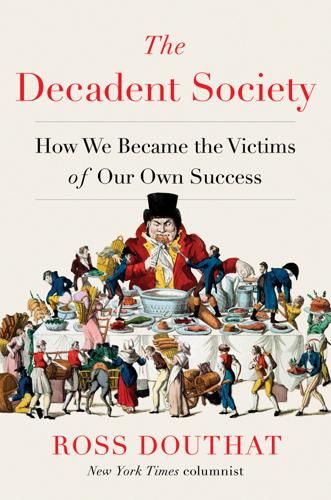
The Decadent Society: How We Became the Victims of Our Own Success
by
Ross Douthat
Published 25 Feb 2020
As the security expert Bruce Schneier once put it, the issue isn’t that the Internet has been penetrated by the surveillance state, by the National Security Agency or the Central Intelligence Agency. It’s that the Internet, in effect, is a surveillance state: the virtual fulfillment of Jeremy Bentham’s Panopticon, where Big Brother doesn’t have to watch everyone because everyone is always watching everybody else. Learning to Love the Panopticon This dystopian possibility haunted the online experience early on: witness paranoid Clinton-era movies such as Enemy of the State and The Net, in which innocents found themselves digitally hunted, surveilled, and erased.
…
H., 13, 157 Augustus, emperor of Rome, 200, 201 austerity, 33 Australia, birthrate in, 50 authoritarianism, 12, 49, 86, 162–63, 195, 199, 201, 218 soft, see pink police state sustainable decadence and, 137–54 Trump and, 80, 130 Autor, David, 29 Aztec Empire, 189–90 baby boom, 54–55 baby boomers: creative tension between previous generation and, 109–10 cultural impact of, 108–9 repetition and, 109, 111–12 utopianism of, 109 Back to the Future (film), 89–90 “Back to the Future” Day, 89 Back to the Future Part II (film), 89 Baffler, 37 Baldwin, James, 97 Balkans, civil wars in, 134 Bannon, Steve, 132–33 Barzun, Jacques, 8, 12, 69, 91, 96, 100, 113, 135, 172, 184 Baudrillard, Jean, 135 Bellah, Robert, 97, 101 Belloc, Hilaire, 178 Ben-Abbes, Mohammed (char.), 155, 156, 160 Bentham, Jeremy, 144 Bernanke, Ben, 84 Better Angels of Our Nature, The (Pinker), 165 Between the World and Me (Coates), 97 Bezos, Jeff, 213 bipartisanship, 68, 76–77, 82, 171 birthrates, 202 in Africa, 197, 198, 207 of American Jews, 222 in Israel, 50, 54, 217 birthrates, decline in, 27, 46, 47–65, 166–67, 180, 236 contributing factors in, 50–56 in dystopian fiction of Atwood and James, 47–50 economic consequences of, 56–58 innovation and, 57–58 in Islamic world, 161 mass immigration as solution to economic problems of, 62–65 psychological consequences of, 61–62 recessions and, 51 replacement rate and, 50, 53–54, 58, 63 shrinking families and, 58–62 welfare states and, 51, 52 Black Death, 190 Black Panther (film), 209–10 Blade Runner: 2049 (film), 94 Bloom, Allan, 97 Bloom, Harold, 224 Bloomberg, Michael, 143 Bloomberg BusinessWeek, 43 Bork, Robert, 78 brain drain, 171 Brave New World (Huxley), 127–28, 151, 184–85 Brazil, economic growth in, 166–67 Brexit, 63, 64, 85, 114, 172, 193 Great Recession and, 193 immigration and, 196 Brookings Institution, 71 Brown, Peter, 223 Brown, Scott, 67 Buckley, William F., 97 Buddhism, 225 Bundy, Ted, 119, 120 Bush, George H.
…
It also offers space for figures such as Donald Trump, who would not be so appealing to many people if he didn’t constantly enact precisely the kind of transgression that the kindly Panopticon is supposed to shame, to cancel, to rule out. And the mere fact of Trump’s presidency is proof that the system we are discussing is not inherently stable in the way of Huxley’s World State. By regulating dissent and chasing it to the margins, it’s always possible for the pink police state to invite it to come roaring back as populism, radicalism, revolution—and more so, presumably, if anything happens to reduce the pleasures of consumerism, the system’s cushioning of wealth. But the Panopticon is also adaptable, drawing even the rebels back into its matrix of playacting and performance, or perhaps encouraging and elevating forms of rebellion that are well suited for that matrix, that emerge from within its rules, its simulated realities, and can be reabsorbed.

The Biggest Prison on Earth: A History of the Occupied Territories
by
Ilan Pappé
Published 21 Jun 2017
Moreover, in the wake of events in September 1970 (the internal war between the Palestine Liberation Organization and the Hashemite Kingdom) and the official Jordanian disengagement in 1988 from the West Bank, the number of citizenship holders decreased. Today’s prison resembles the Panopticon, originally conceived by Jeremy Bentham, the first modern philosopher to justify the rationale of imprisonment within a new coercive penal system. The Panopticon prison, which was notorious in the early nineteenth century, was designed to allow guards to see their prisoners but not vice versa. The building was circular, with prisoners’ cells lining the outer perimeter, and in the centre of the circle was a large, round observational tower.
…
At any given time guards could be looking down into each prisoner’s cell – and thereby monitor potentially unruly behaviour – but carefully situated blinds prevented prisoners from seeing the guards, so that they did not know if or when they were being monitored. Bentham believed that the ‘gaze’ of the Panopticon would force prisoners to behave morally. As if under the all-seeing eye of God, they would feel shame at their wicked ways. If we substitute moral conduct for collaborating with the occupation, and we change the circular structure of the Panopticon to a variety of geometrical parameters of imprisonment, the 1967 Israeli decision was to isolate the Palestinians in the West Bank and the Gaza Strip in a modern Panopticon. And for those readers familiar with the further Foucauldian elaboration of the Panopticon model, this could also be a useful tool for partly understanding the edifice built by Israel in 1967 and thereafter.
…
And for those readers familiar with the further Foucauldian elaboration of the Panopticon model, this could also be a useful tool for partly understanding the edifice built by Israel in 1967 and thereafter. But Foucault, like Bentham, stressed the nature of the Panopticon prison as a system of control that had no need of physical barriers and where the guards are unseen. As we shall see, and as most readers probably know, this applies to only one element in the matrix of power that caged the Palestinian population in Israel’s mega-prison in the twentieth century. Others were intentionally forcing the ‘prisoners’ to look at the guards and to sense in the most physical way possible the barriers, the wall and barbed wire surrounding them.
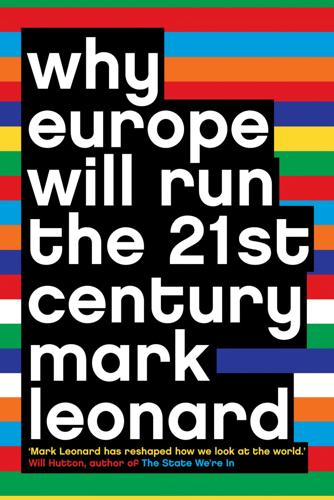
Why Europe Will Run the 21st Century
by
Mark Leonard
Published 4 Sep 2000
Foucault’s real insight is that efficient exercise of power depends less on having military might or the technology of deterrence than on establishing legitimacy by making everyone complicit in the enforcement rules. His metaphor for the rise of the ‘surveillance society’ is a prison called the ‘Panopticon’, designed by the eccentric founder of utilitarian philosophy, Jeremy Bentham. Bentham’s prison was a circular building with open cells arranged in a ring around a central pillar where a guard could sit. The guard sits behind one-way blinds so that he can look out at the cells, but the inmates cannot look in. At any time, the guard may or may not be looking at an individual cell, so the prisoners have to assume that they are being watched the whole time.
…
A vast prison with dozens of cells can thus be supervised by a single guard. Each prisoner effectively becomes his own warder, the agent of his own surveillance.3 Once this happens, the prison guard becomes superfluous as the prison effectively polices itself. But the inspections in Iraq were not like the surveillance of the Panopticon. They were intrusive and imposed on an uncooperative Iraqi state. Hans Blix was like a single guard policing an enormous prison that had not internalized the international community’s rules. To get the Iraqis to obey the rules, the United Nations would have had to approach Iraq with a more radical idea of surveillance.
…
Western Balkans (5) Sub-Saharan Africa (49) Albania Angola Bosnia and Herzegovina Benin Croatia Botswana FYR Macedonia Burkina Faso FR Yugoslavia Burundi Ukraine Cameroon Cape Verde Middle East and Northern Africa (19) Central African Rep Algeria Chad Bahrain Comoros Egypt Congo, Dem Rep Iran Congo, Rep Iraq Côte d’lvoire Israel Djibouti Jordan Equatorial Guinea Kuwait Eritrea Lebanon Ethiopia Libya Gabon Morocco Gambia Oman Ghana Palestinian Territories Guinea Qatar Guinea-Bissau Saudi Arabia Kenya Syria Lesotho Tunisia Liberia United Arab Emirates Madagascar Yemen Malawi Mali European CIS (8) Mauritania Armenia Mauritius Azerbaijan Mayotte Belarus Mozambique Georgia Namibia Kazakhstan Niger Moldova Nigeria Russia Rwanda São Tomé & Principe Senegal Seychelles Sierra Leone Somalia South Africa Sudan Swaziland Tanzania Togo Uganda Zambia Zimbabwe NOTES Introduction 1Emmott, Bill (2003), Vision 20/21, London: Penguin. 2Fukuyama, Francis (Winter 1990–1), ‘The Unipolar Moment’, Foreign Affairs. 3Joseph Nye has written a number of works on ‘soft’ and ‘hard’ power, some of which include Soft Power: The Means to Success in World Politics (2004), The Paradox of American Power: Why the World’s Only Superpower Can’t Go It Alone (2003), and Bound to Lead: The Changing Nature of American Power (1990). 4Calleo, David (Summer 2003), ‘Power and Deficit Spending’, The National Interest. 5Ibid. 6A fascinating paper published by the European Central Bank called ‘Economic Relations with Regions Neighbouring the Euro Area in the “Euro Time Zone”’ (December 2002) by Francesco Mazzafero, Arnaud Mehl, Michael Sturm, Christian Thimann, and Adalbert Winkler calls these countries the ‘euro time zone’ and examines the economic, monetary, and financial relations between them and the European Union. 7I am grateful to my colleague Richard Youngs, who in his work Sharpening European Engagement (2004), published by the Foreign Policy Centre, employs the phrase ‘transformative power’ when characterizing the nature of Europe. 8Rifkin, Jeremy (2004), European Dream, London: Jeremy P. Tarcher/Penguin. Chapter 1 1Mazower, Mark (1999), Dark Continent: Europe’s Twentieth Century, London: Penguin. 2Valéry, Paul (1921), Essay entitled ‘On European Civilization and the European Mind’ (1919, 1922) 3Schuman, Robert (9 May 1950), Schuman Declaration. For additional analysis see Dick Leonard and Mark Leonard’s Pro-European Reader (2002), London: Palgrave Macmillan. 4Duchêne, François (1994), Jean Monnet: The First Statesman of Interdependence, New York and London: Norton. 5Ibid. 6Ibid. 7Smith, Adam (1776), An Inquiry into the Nature and Causes of the Wealth of Nations. 8I am grateful to Ana Palacio for suggesting this evocative metaphor to me. 9Miller, Vaughne (2004), EC Legislation, Standard Note SN/IA/2888, London: House of Commons Library. 10Nugent, Neill (2003, 5th edn), The Government and Politics of the European Union, Basingstoke: Palgrave Macmillan. 11DTI (1994) Review of the implementation and enforcement of EC law in the UK, 1994 Efficiency Scrutiny Report, DTI, London.
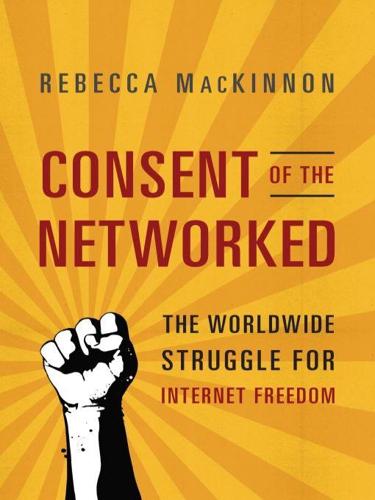
Consent of the Networked: The Worldwide Struggle for Internet Freedom
by
Rebecca MacKinnon
Published 31 Jan 2012
id=e655f9e2809e5476862f735da16bd1e7 (accessed June 21, 2011). 79 the challenge came from an entrepreneur named Nick Merrill: Kim Zetter, “‘John Doe’ Who Fought FBI Spying Freed from Gag Order After 6 Years,” Wired.com, August 10, 2010, www.wired.com/threatlevel/2010/08/nsl-gag-order-lifted (accessed June 21, 2011). 79 Christopher Soghoian, an antisurveillance activist and doctoral candidate at Indiana University: The paper cited is Christopher Soghoian, “An End to Privacy Theater: Exposing and Discouraging Corporate Disclosure of User Data to the Government” (August 10, 2010), Minnesota Journal of Law, Science & Technology, available at http://ssrn.com/abstract=1656494. 79 “intelligence investigations have compromised the civil liberties of American citizens far more frequently, and to a greater extent, than was previously assumed”: Electronic Frontier Foundation, “Patterns of Misconduct: FBI Intelligence Violations from 2001–2008,” January 2011, www.eff.org/pages/patterns-misconduct-fbi-intelligence-violations. 80 “Panopticon effect,” named after a prison designed in 1785 by English philosopher and social theorist Jeremy Bentham: Jeremy Bentham, “Panopticon” (preface), in The Panopticon Writings, ed. Miran Bozovic (London: Verso, 1995), 29–95. 80 Michel Foucault warned that “panopticism” can extend beyond the physical prison: See Michel Foucault, Discipline and Punish: The Birth of the Prison (New York: Vintage Books, 1995). 80 In his recent book One Nation, Under Surveillance: Simon Chesterman, One Nation, Under Surveillance: A New Social Contract to Defend Freedom Without Sacrificing Liberty (New York: Oxford University Press, 2011), 12. 81 research paper comparing corporate data retention policies and companies’ specific practices in handing over user data: Christopher Soghoian, “The Law Enforcement Surveillance Reporting Gap,” April 10, 2011, http://ssrn.com/abstract=1806628. 84 Asked by the New York Times about the case, Twitter spokeswoman Jodi Olson replied: Scott Shane and John F.
…
For Americans seeking to change existing laws that they believe are wrong, ill-advised, or unfair, or for anybody who happens to be engaged in dissent, activism, or whistle-blowing that powerful people would like to prevent or contain, such a situation is chilling. Lack of sufficient public oversight and transparency about government surveillance through private networks can dampen dissent and activism over time through the “Panopticon effect,” named after a prison designed in 1785 by English philosopher and social theorist Jeremy Bentham. In his design, prisoners are given credible proof that they are under surveillance some of the time, though not all of the time. If they have no way of knowing exactly when they are being watched, they end up having to assume they are under surveillance all the time.
…
INDEX Abdulemam, Ali Access Controlled (Open Net Initiative) Access Denied (Deibert) Activism in digital commons Facebook and open-source software, use of Twitter and Adidas Ahmadinejad, Mahmoud Ai Weiwei Al-Assad, Bashar Al-Khalifa, Hamid bin Isa Al-Yousif, Mahmood Alberdingk Thijm, Yvette Alibaba Alves, Rosental Amamou, Slim AMD (Advanced Micro Devices) Android Anonymous Anti, Michael (Zhao Jing) Anti-Counterfeiting Trade Agreement (ACTA) Anvari, Rezi Taqipour Apache Apple agreement to China’s censorship criteria alternatives to app shutdowns by BigBrother-destroying TV commercial April Media Arab Techies Collective Ars Technica magazine Ash, Timothy Garton Asmolov, Gregory Assange, Julian Association for Progressive Communications Astrubal (Riadh Guerfali) AT&T Attacks on the Press 2010 (Committee to Protect Journalists) Australia, opposition to national censorship in Authoritarian deliberation in China defined in Iran in Russia Bahrain, antigovernment protests in Bahrain Center for Human Rights Baidu Barlow, John Perry Bassyouni, Ahmed Hassan Beck, Greg Beckstrom, Rod Belarus, lawful intercept system in Ben Ali, Zine El Abidine Ben Gharbia, Sami Benkler, Yochai Bentham, Jeremy Berkman Center for Internet and Society Berman, Howard Berners-Lee, Tim Bezos, Jeff Biden, Joseph Bildt, Carl Bildt magazine Bits of Freedom BlackBerry BoingBoing Bollier, David Bollinger, Lee Bono Boorstin, Bob Boozman, John Bossio, Jorge Boston Common Asset Management Boston Consulting Group boyd, danah BP (British Petroleum) Bradley, Todd Broadcasting Board of Governors (BBG) Bruni, Carla BT Bush, George W.
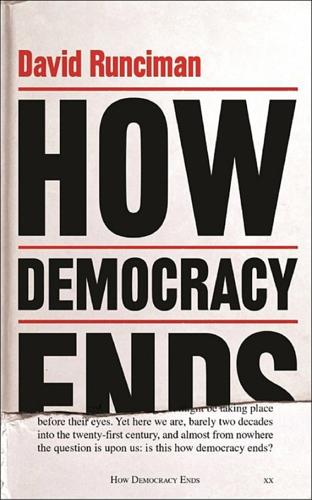
How Democracy Ends
by
David Runciman
Published 9 May 2018
Otherwise there could be no true security, since political trouble can break out in the most unexpected places. Bentham created a different version of the same idea. He designed a prison he called the Panopticon. It was constructed on a circular model that would allow the governor to keep permanent watch on the inmates. Whistleblower Edward Snowden’s nickname for the National Security Agency (NSA), whose secret mass surveillance operations he revealed to the world, was ‘the Panopticon’. Bentham’s original purpose in designing his prison was to ensure that convicted criminals did not use prison as an opportunity to conspire with each other.
…
That, for Weber, was the modern condition. Jeremy Bentham, the philosopher and democratic reformer who was writing a century before Weber and Gandhi, was mocked by his critics as a ‘calculating machine’. He seemed to have reduced politics to a search for the algorithm of human happiness. He wished to know which levers to pull. But Bentham was anything but heartless. He desperately wanted the politics of his time to work better: to be less cruel, less arbitrary and more tolerant of human difference. That meant democratising it. But it also meant making it more formulaic in order to free it from prejudice. Bentham accepted that to humanise politics you had to be willing to dehumanise it first.
…
Index A accelerationism, 199–202 Achen, Christopher see Bartels, Larry and Achen, Christopher Ackerman, Bruce, 54–5 advertising, 160 and elections, 158 internet, 157, 159 Afghanistan, 75 Africa, 79 see also Algeria; Zimbabwe Algeria: coup, 41–3 Amazon, 131, 137 anarchism, 192–3, 214 appeasement, 144 Apple, 131, 137 Arendt, Hannah, 85, 86–7, 98 Eichmann in Jerusalem, 84 Argentina, 162 Aristotle, 161 armies see military artificial intelligence (AI), 122–3, 126, 129–30, 189–91 Athens, ancient, 35–8, 142, 161 conspiracy theories, 60 epistocracy, 179 Athens, modern, 27–8; see also Greece austerity, 208 Australia, 162 authoritarianism, 154–5, 171–3 ‘competitive’, 175 pragmatic, 174–5, 176, 177–8, 181, 205 B bankers, 69, 116, 181 banks, 131, 135; see also European Central Bank Bannon, Steve, 13 Bartels, Larry and Achen, Christopher: Democracy for Realists, 184 Bell, David A., 176 Benn, Tony, 58 Bentham, Jeremy, 127, 151, 152 Bermeo, Nancy, 44, 45 bio-engineering, 102–3 Bitcoin, 136 Bostrom, Nick, 105–6 Bourne, Sam (pseudonym): To Kill the President, 57, 58 Brazil, 217 Brennan, Jason: Against Democracy, 183–5, 186–7, 188–9 Bryan, William Jennings, 68–9 bureaucracies, 85, 86–7, 99, 127, 164; see also civil service Burton, Robert, 159–60 Bush, President George W., 12, 55 C Cambridge Analytica (firm), 156, 157, 159 capitalism, 196, 199 Carson, Rachel, 85, 87–8 Silent Spring, 82–3, 89, 90–91, 93 catastrophes, 6, 7, 85–6 environmental, 82–3, 85, 87–93; see also climate change nuclear, 83–4, 97 total, 100 Chicago: violence, 211 China and climate change, 174 Communist Party, 172–3 economy, 172, 208 foreign policy, 30–31 government model, 174 as a meritocracy, 175–6 nationalism, 172 pollution, 89 view of Trump, 173 Churchill, Winston, 8, 75–6, 168–9, 177 civil service, 41, 55–6; see also bureaucracies Clark, Christopher: The Sleepwalkers: How Europe Went to War in 1914, 115 Clemenceau, Georges, 71, 75–6 climate change, 90–93 China and, 174 consciousness raising, 89, 92–93 conspiracy theories, 91–92 incremental nature of, 97 and risk, 101 support for, 108 and uncertainty, 96 see also global warming Clinton, President Bill, 54–5 Clinton, Hillary, 13–15, 16, 198 Cold War, 28–9, 67, 94, 95–6, 106–7, 108–9 communism 194; see also China: Communist Party; Marxism-Leninism; Stalinism consciousness raising, 85, 89, 92–3, 106 conspiracy theories, 60–71 climate change, 91–2 and division, 99 and fake news, 75 France, 69 India, 65–6 nuclear weapons, 96 Poland, 65, 66 and totalitarianism, 98 Turkey, 65, 66 United Kingdom, 62–3 United States, 62, 64–5, 67 and war, 77 conspiracy theorists, 153 Constantine I, king of Greece, 27, 28 consumerism, 166 Corbyn, Jeremy, 58, 94–5, 148–9, 150, 209 corporations, 129–32, 139, 166 coups, 3, 217 Algeria, 41–3 and catastrophes, 85 and clarity, 59 and conspiracies, 7, 60 and counter-coups, 56–7 Cyprus, 33, 38–9 economic conditions for, 31 in fiction, 57–8 Greece, 26–30, 27, 32, 33, 34–5, 38, 40, 45 Luttwak on, 41–2, 46 Turkey, 50–52, 53, 66 varieties of, 44–5 election-day vote fraud, 44 executive, 44 executive aggrandisement, 44, 52, 55 promissory, 44, 47, 50–51 strategic election manipulation, 44 Zimbabwe, 48 crises, 5–6 Cuban missile Crisis (1962), 107–8 mid-life, 5, 8, 169, 218 Cummings, Dominic, 179 currencies, 135 digital, 136 Cyprus: coups, 33, 38–9 D databases, 123 de Gaulle, General Charles, 41, 42 de Tocqueville, Alexis, 142, 187 death, 23–4, 204, 216–17 democracy appeal of, 6, 169–71 audience, 47, 117 direct, 35, 48, 143, 161, 162, 163 failure of, 50 obsolescence, 167–8 plebiscitary, 47 spectator, 47 spread of, 3 strong and weak, 59–60 threats to 6–7, 53–4, 108, 112; see also coups digital revolution, 152, 164, 200–201, 215, 219 dignity collective, 172, 173, 177 and elections, 170, 177 and loss, 175 disruption, 198–9 Dorsey, Jack, 137 Dreyfus, Alfred, 69 dystopias, 90–91, 113, 114, 118–19, 126, 220 E East India Company, 130–31 economic growth, 172, 192 accelerationists and, 200 and populism, 192 United States, 175 Western Europe, 175 Economist (journal), 133 Edgerton, David, 122 education, 109–10, 163–4, 183–4, 185 Eggers, David: The Circle, 139, 140, 141–2, 144 Egypt, 48–50 Eichmann, Adolf, 84, 85–6 elections 4, 218 and advertising, 158–9 computers and, 125 and coups, 44, 45 decision-making process, 188–9 and dignity, 170, 177 and disinformation, 156–7 Egypt, 48–9 France, 148 fraud, 44 Greece, 28, 29, 39, 40, 148 Italy, 148 manipulation of, 44 Netherlands, 148 online, 162 Turkey, 51 United Kingdom, 95 United States see under United States see also vote, right to elites, 75 and climate change, 91–2 corporate, 139 and nuclear disarmament, 95 and populism, 65 power of, 61 see also wealth environmentalists, 200 epistocracy, 178–9, 180, 181–8, 191, 205 equality, 202–3; see also inequality Erdogan, President Recep, 51–3, 66, 149, 213 Estlund, David: Democratic Authority, 185 Ethiopia, 154–5 European Central Bank (ECB), 33, 39, 116–17 European Union (EU) and corporations, 132 and Greece, 30, 32, 116–17 executive aggrandisement, 45–6 military, 55, 56 United States presidents, 92 experts see epistocracy; technocracy ExxonMobil, 92 F Facebook, 131, 132–3, 134–5, 136, 138–9, 140, 141, 145, 150, 157 fascism, 169 financial crash (2008), 79, 110, 116 Forster, E.
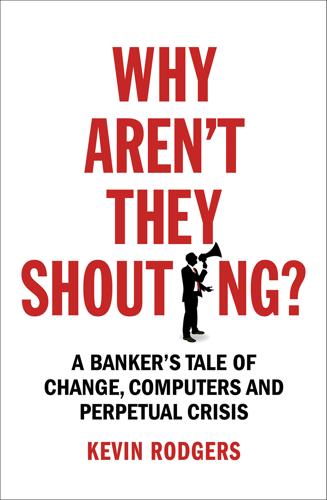
Why Aren't They Shouting?: A Banker’s Tale of Change, Computers and Perpetual Crisis
by
Kevin Rodgers
Published 13 Jul 2016
In the course of the coming years it would not surprise me to see voice recognition applied to employees’ phone calls; monitoring of their speech patterns for stress; even facial recognition built into the omnipresent rows of monitoring cameras suspended over every trading floor. Like inmates in a modern-day version of Jeremy Bentham’s Panopticon, bank employees could become some of the most watched human beings on earth. As a Russian quant in his mid-twenties who worked with me in Deutsche Bank’s London office put it: ‘It’s great. I was too young to be spied on under Communism, but now I have the chance to experience it under Capitalism.
…
Compare with exchange-traded. out trade An incorrectly booked transaction that misleads traders (and others) as to the true risk their bank has assumed. Slang for a mistake: ‘Did you go to Steve and Julia’s wedding?’ ‘Yep. I think it’s an out trade, to be honest.’ Panopticon An architectural design created by the English philosopher Jeremy Bentham (1748–1832) that allows a single watchman to observe all the inhabitants of a building without their being able to tell whether or not they are being watched; ideal for prisons or trading floors. physical settlement See cash settlement. pips The last decimal places of an FX price – commonly quoted as shorthand for the price for reasons of sloth.
…
A Ackermann, Josef, 226 Admati, Anat, 211 ‘agency’ model, 7 agency-like risk, 119, 127 aggressive prices, 14–15 AIG, 90, 174 algorithms, 58, 71, 72, 73, 76, 77, 78, 79, 192–4, 195 Alpari, 83 alternative assets, 146–7 American Home Mortgage Investment Corporation, 89 amputation analogy, 128, 129 analytic formula, 106 Apple, 234 Application Program Interfaces (APIs), 59–60, 66, 71, 78 arbitrage, 31–2, 42, 44, 54, 70, 72, 91, 133, 142, 152 Asia, 3, 37–8, 56, 58, 106, 114, 117–18, 135–7, 146, 228 Financial Crisis (1997), xi, 114, 135–7, 139, 146, 228 Asian options, 106 assets, 6, 89, 92–5, 97, 104, 108, 112–14, 116, 117, 123, 136, 146, 147, 149, 150, 154–7, 160, 166–74, 203, 211, 223, 228, 233 alternative, 146–7 risk-weighted assets (RWA), 124–31, 134, 166, 208, 211 Atom Bank, 233 atomic bomb, see nuclear bomb Australia, 30, 65 dollars, 28, 75 Autobahn, 48–51, 53, 64, 68, 69–70, 78, 225 Automated Risk Manager (ARM), 53–5, 56–9, 64, 67, 70–1, 72, 73, 76, 79, 101, 129, 169 B back testing, 149 BaFin, 200, 202 bandwidth, 71 ‘banging the close’, 190 Bank for International Settlements (BIS), 73, 77, 80, 208 Bank of America, 174 Bank of England, 32, 173, 182, 233 bank runs, 89 bank tax, 216 Bankers Trust, xi–xii, 3–6, 24, 29–37, 40, 44, 46, 48, 65, 68, 103–14, 116–35, 137–143, 149, 166, 168, 169 carry trade, 108–10 Deutsche Bank takeover, 29–30, 34–5, 37, 46, 48, 166, 168 Emerging Markets, xi, 29–30, 116–17, 130–1, 143 Engine, 127–31, 135, 139, 157, 167, 169 exotic derivatives, 105–11, 127 Gibson Greetings suing, 109 Monte Carlo pricing, 111–14, 150 Procter and Gamble suing, 109 quantitative analysis, 103–8, 110–14, 126, 150 Risk Management, 122–31 risk-adjusted return on capital (RAROC), 126–7, 131 rouble-denominated bonds (GKOs), 118–32, 134, 138–43, 149, 152, 158, 159, 173 Russian Financial Crisis (1998), 115–16, 124, 137–143 Spreadsheet Solutions Framework (SSF), 111, 121, 138, 153 value at risk (VaR), 127–31, 135, 139, 169 Barcelona, Spain 87–9, 151, 159, 171, 172 Barclays, 63–6, 67, 68, 167, 186–7, 197 barrier products, 104, 107, 108 BARX, 64, 65 Basel Accords, 124, 125, 130, 166, 207–9, 211, 217, 231 basis points, 12 basis risk, 152 Bear Stearns, 88–9, 90, 172, 230 Bentham, Jeremy, 199 Berlin Wall, 204 Bernanke, Ben, 90 bid-offer spreads, see spread ‘Big Are Getting Bigger, The’, 41, 145 Big Bang (1986), 201 big figure, 13 binomial tree, 112–14 Bitcoin, 234 Black Monday (1987), 108, 138, 204, 207 Black–Scholes formula, 94–5, 97, 99, 105, 128, 219 Black, Fischer, 94–5, 97, 134, 135 BlackBerries, 169 Blackpool, England, 33 Blair, Tony, 120 Bloomberg, 9, 22–3, 142, 187, 189, 191, 197 Bohr, Niels, 43 bonds, xiv, 8, 23, 28, 33, 38, 89, 108–10, 118–43, 146–7, 151, 154–64, 170–2, 174, 192, 197, 211, 224–5 carry trade, 108–10 collateralised debt obligations (CDOs), xiv, 154–64, 170–2, 174, 192, 224–5 credit default swaps (CDSs), 151 mortgage-backed, xiv, 197 rouble-denominated (GKOs), 118–32, 134, 138–43, 149, 152, 158, 159, 173 total return swaps (TRSs), 119–20, 136, 152 US government, 119, 129, 133, 147 bonuses, 5, 117, 161, 210, 216 boxes and arrows, 159 Brazil, 167, 231 Breuer, Rolf, 42 Bristol, England, x British Bankers Association (BBA), 182, 187 British pound, 9, 13, 28, 53, 184 Bruno, Philip, 234 BTAnalytics, 107, 108, 112, 134, 150 Businessweek, 170 C Cable, 9, 13, 28 California, United States, 234 calls, 19–21, 23, 27, 51, 53, 98, 99 Cambios, 21, 123 Cambridge University, 165 Canada, 88, 172 dollars, 28 Cannes, France, 35, 41, 44, 46, 55, 64, 65, 77 carry trade, 108–10 Case–Schiller index, 163, 170 cash settlement, 109 ‘CDO-squared’, 161 central banking, 79, 102–3, 187, 193, 220 Central Counterparties (CCPs), 209, 213–15, 229 chain of command, 224–6 Chase Manhattan, 51, 168, 169 Chemical Bank, 168, 169 Chicago Mercantile Exchange (CME), 193, 209 China, 78, 149, 229 Chopin, Frédéric, 61 circuit breakers, 80 Citigroup, 23, 27, 36–7, 47, 51, 68, 167, 216, 226, 229 Clackatron, 32–3, 54, 91 Cold War, 204 collateralised debt obligations (CDOs), xiv, 154–64, 170–2, 174, 192, 224–5 multi-sector CDOs, 155 risk 154, 156, 158–63 sub-prime mortgages, 159–60, 170–2 synthetic, 163–4 tranches, 154–9, 161, 174, 208 colocation, 71 colonial currencies, 28 commodities, viii, xii, 144–50, 153–4, 157, 174, 223, 231–2 commodities indexes, 147–50, 153–4, 157, 163 commoditisation, 110–11 Commodity Futures Trading Commission (CFTC), 202 commodity futures, 92 Communism, 199 complex risk, 159, 222 complexity, 90, 100, 103–14, 121, 127, 130, 134, 136, 143, 157, 196, 200–1, 218–24, 225, 228, 229 Comprehensive Capital Analysis and Review (CCAR), 212 computers, ix–x, xii–xv, 6, 21–8, 32–55, 56–84, 89–90, 99–114, 116, 121, 127, 130, 134, 136, 138, 143, 144, 147, 150, 157, 160, 161, 164, 167, 169–70, 172, 190–200, 209, 213, 218–24, 225, 228, 231–5 algorithms, 58, 71, 72, 73, 76, 77, 78, 79, 192–4, 195 Autobahn, 48–51, 53, 64, 68, 69–70, 78, 225 Application Program Interfaces (APIs), 59–60, 66, 71, 78 Automated Risk Manager (ARM), 53–5, 56–9, 64, 67, 70–1, 72, 73, 76, 79, 101, 129, 169 BARX, 64, 65 BTAnalytics, 107, 108, 112, 134, 150 Clackatron, 32–3, 54, 91 complexity, 90, 100, 103–14, 121, 127, 130, 134, 136, 143, 157, 196, 200–1, 218–24, 225, 228, 229 DBAnalytics, 150, 153 decimalisation, 63–6, 67, 73, 77 decentralisation, 232–5 efficiency improvements, 169–70 Electronic Broking Services (EBS), 24–8, 31, 32–3, 42, 45, 46, 48, 50, 59–60, 63, 69–70, 71, 72, 73, 77, 83, 188 Electronic Communication Networks (ECNs), 59, 61, 66, 193 Engine, 127–31, 135, 139, 157, 167, 169 FX-fixing scandal (2013), 190–2 OPTICS, 101, 103, 131, 153, 170 options trade automation, 27, 33, 38–47 Piranha, 48 prime brokerage (PB), 61–3, 66, 120, 209 regulation, 209, 213 Revolutionary Application Program Interface Development (RAPID), 56–9, 77, 101 Reuters Dealing machines, 23, 25–8, 31, 32, 50, 59, 73 rogue systems, 79–80 screen scraping, 32–3, 50, 59 simplification, 231–2 spoofing, 192–3 spot trade automation, 23–8, 31–3, 42, 48–55, 56–84, 111, 199, 201 spreads, 80–3 concentration risk, 213 Conservative Party (UK), 201 correlation, 14, 79, 129–30, 142, 156–8, 160, 163 cost–benefit analysis, 41 Costello, Elvis, 140 counterparty credit risk, 141–2, 172, 201, 209 Countrywide, 90 credit default swaps (CDSs), xiv, 150–3, 157, 158, 164, 225 credit risk, 7, 8, 62–3, 123, 125–6, 130, 141, 151, 209 counterparty, 141–2, 172, 201, 202–3, 209 Credit Suisse, 140, 198 credit trading, 146–7, 150–63, 166, 175, 224 crowd-funding, 235 currency pairs, 9, 12, 14, 46, 53, 75, 80 Currenex, 59 CVIX, 74 D D:Ream, 120, 121 daisy-chaining, xiv DBAnalytics, 150, 153 decentralisation, 232–5 decimalisation, 63–6, 67, 73, 77 delta hedging, 97 ‘dentists, the’, 82–3 deposits, 124 derivatives, xi, xii, xiv, 44–5, 87, 91–114, 118, 119, 121, 127, 132, 134, 138–43, 144–5, 150–74, 182–6, 189, 196, 209, 210, 214, 218–25, 231 Asian options, 106 barrier products, 104, 107, 108 carry trade, 108–10 collateralised debt obligations (CDOs), xiv, 154–64, 170–2, 174, 192, 224–5 commoditisation, 110–11 credit default swaps (CDSs), xiv, 150–3, 157, 158, 164, 225 delta hedging, 97 democratisation, 108, 219 double knockouts, 107 exotics, 105–11, 127 foreign exchange, 10, 13, 20, 23, 27, 33–4, 38, 43–7, 49, 77, 95–114, 222–3 forward rate agreements (FRAs), 182 gamma, 97–8, 100 Greeks, 98, 99, 101, 105, 107, 110, 111, 112, 114, 127, 129, 150, 157, 158, 182, 219 interest rate derivatives, 8, 92, 104, 132, 182–6, 214 lattice methods, 112, 150, 157 lookbacks, 107 over-the-counter (OTC) market, 96, 209 power options, 107 pricing, 91–5, 107, 111–14, 128, 133, 150 range trades, 107, 108 rho, 98 risk-weighted assets (RWA), 124–31, 134, 166, 208, 211 spoofing, 99, 192–3 strike price, 94, 95, 104, 113, 218 swaps, 8, 92, 119–20, 121, 125, 126, 132, 134, 136, 141, 148, 149, 152, 173 theta, 98, 140 time decay, 98 total return swaps (TRSs), 119–20, 136, 152 tree approach, 112–14 vega, 98 volatility, 94, 98, 128–9 weather, 144–5, 146 zero coupon bonds, 118–31, 134, 138–43, 149, 152, 158, 173 desk real estate, 25 Deutsche Bank, vii–x, xii–xiii, 12, 21, 23, 28, 29–30, 33–55, 56–80, 84, 87, 101, 122, 144–74, 179–80, 187, 190, 195–6, 199, 200, 201, 209–10, 212–13, 216, 222, 224–6, 231 Autobahn, 48–51, 53, 64, 68, 69–70, 78, 225 Automated Risk Manager (ARM), 53–5, 56–9, 64, 67, 70–1, 72, 73, 76, 79, 101, 129, 169 BaFin audits, 200, 202 Bankers Trust acquisition, 29–30, 34–5, 37, 46, 48, 166, 168 Barcelona Conference, 87–9, 151, 159, 171, 172 Commodities, 144–50, 153–4, 157, 165, 175, 223, 231–2 Complex Risk, 159, 222 Compliance, 195, 196 Corporate and Investment Banking division, 166 Credit Trading, 146–7, 150–63, 166, 175, 224 CVIX, 74 DBAnalytics, 150, 153 e-trading, 55, 57, 67–73, 75, 84, 122 Foreign Exchange, vii–x, xii–xiii, 12, 21, 23, 28, 29–30, 33–55, 56–80, 84, 87, 101, 122, 165, 175, 210, 212–13, 224, 225 FX-fixing scandal (2013), 187, 190 Global Currencies and Commodities, 165–6 Great Financial Crisis (2007–8), 174–5 Liquid Commodity Index (DBLCI), 148, 149 market share, 36, 41, 48, 51–2, 54, 55, 56, 57, 64, 66–8, 70, 77 MortgageIT acquisition, 160 offsites, 35–41, 46, 55, 64, 65, 77 options trade automation, 27, 33, 38–47 Plankton Strategy, 38, 40, 55, 58 production credits, 49, 50 regulation, 200, 202, 209–10, 212–13 Revolutionary Application Program Interface Development (RAPID), 56–9, 77, 101 Risk Management, 175, 206–7, 209, 226 risk-weighted assets (RWA), 124–31, 134, 166 simplification, 231–2 small deals team, 52, 55 spot trade automation, 48–55, 56–77 video messaging system, 71 weather derivatives, 144–5, 146 Deutschmark, 9, 96, 97, 99, 100, 104 Dewar, Sally, 197 Dickens, Charles, 162 Digital Reasoning Systems Inc., 197–8 dividends, 91, 147, 212 Dodd–Frank Act (2010), 209, 230 Dostoyevsky, Fyodor, 30 dot-com boom (1997–2000), 37, 146, 207 double knockouts, 107 Dow Jones, 79, 138, 147 Dresdner Bank, 20, 48 drive-bys, 17, 20, 68, 132 E e-trading, 55, 57, 67–73, 75, 84, 122 efficiency improvements, 169–70 efficient market theory, 203 Electronic Broking Services (EBS), 24–8, 31, 32–3, 42, 45, 46, 48, 50, 59–60, 63, 69–70, 71, 72, 73, 77, 83, 188 Electronic Communication Networks (ECNs), 59, 61, 66, 193 elephant deals, 38 email, 169, 191, 195, 197, 199 emerging markets, xi, 6, 29–30, 116–43, 147, 228 Empire State Building, New York, 130 ‘Engine’, 127–31, 135, 139, 157, 167, 169 engineering, x–xi, 10 Enron, 156 equities, viii, 23, 50, 66, 71, 74, 80, 89, 95, 146, 193, 207, 211, 235 circuit breakers, 80 colocation, 71 sales-traders, 50, 78 euro, 22, 28, 31, 37, 53, 69, 80, 81–3, 189 Euromoney, 36, 41, 47, 51–2, 54, 55, 56, 57, 64, 66–8, 70, 77, 81, 233 Europe, Middle Eastern and African (EMEA) markets, 117–18 European Union (EU), 102, 196, 201, 203, 207, 210, 212, 230 Exchange Rate Mechanism (ERM), xi, 22, 102–3, 106, 123, 130, 136, 207, 224 Liikanen Report (2012), 230 Maastricht Treaty (1992), 102 Market Infrastructure Regulation (EMIR), 209 ‘Every Day I Write the Book’ (Elvis Costello), 140 Excel, 107, 221 exchange rates, 9, 11–13, 14, 17, 32, 100 exotic derivatives, 105–11, 127 F ‘F9 monkeys’, 221 Fannie Mae, 90 Federal Reserve, xii, 90, 109, 143, 187, 202–6, 212 Federal Reserve Bank of Chicago, 193 fibre-optic cables, 77, 84 FIFA (Fédération Internationale de Football Association), 167 Financial Conduct Authority (FCA), 190 Financial Services Act (2013), 210 Financial Stability Board (FSB), 212, 214, 216 Financial Times, 116, 187 financial transactions tax, 216 fines, 181, 190, 196 First Chicago, 168 Fitch, 155 fixings, 181, 187–92, 198 Flannery, Mark, 215 Flash Crash (2010), 79–80, 193 Florence, Italy, 78 Florida, United States, 116 football, 10–11, 43, 83, 117, 167, 195 Forbes, 234 foreign direct investment (FDI), 136 foreign exchange (FX), viii, xi, xii, xiv, 3–28, 29–55, 56–84, 89, 90–1, 95–114, 115–44, 145, 158–9, 165, 174, 175, 180, 181–94, 196–7, 210, 213, 222–3, 224, 225, 233 aggressive prices, 14–15 Application Program Interfaces (APIs), 59–60, 66, 71, 78 Autobahn, 48–51, 53, 64, 68, 69–70, 78, 225 Automated Risk Manager (ARM), 53–5, 56–9, 64, 67, 70–1, 72, 73, 76, 79, 101, 129, 169 banging the close, 190 BARX, 64, 65 bidirectional flows, 69 calls, 19–21, 23, 27, 51, 53, 98, 99 carry trade, 108–10 Clackatron, 32–3, 54, 91 colocation, 71 complex risk, 159, 222 corporations, 9, 36, 61, 76, 96, 109–10 costs, 42 currency pairs, 9, 12, 14, 46, 53, 75, 80 decimalisation, 63–6, 67, 73, 77 drive-bys, 17, 20, 68, 132 Electronic Broking Services (EBS), 24–8, 31, 32–3, 42, 45, 46, 48, 50, 59–60, 63, 69–70, 71, 72, 73, 77, 83, 188 Electronic Communication Networks (ECNs), 59, 61, 66, 193 elephant deals, 38 emerging markets, xi, 6, 29–30, 116–43 Engine, 127–31, 135, 139, 157, 167, 169 fixings, 181, 187–92, 198 forwards trades, 10, 52, 77, 92, 121 hedge funds, 9, 29, 36, 57, 61, 66, 69–74, 77, 81, 120, 123, 131–5, 141–3 hedging, 97, 108, 117–18, 190, 225 high frequency trading (HFT), 57, 63, 73, 74, 75, 76, 77, 80, 84, 180, 194 LIBOR scandal (2012), 181–7, 188, 189, 190, 197, 198 liquidity, 18–19, 21, 27, 80–1, 83, 233 making rates, 13–21, 27, 38–9, 50, 96 market makers, 18–19, 21, 83 market shares, 41, 48, 51–2, 54, 55, 65, 66–8, 70, 77, 81, 169 ‘mine-and-yours’, 15–16, 18, 19, 192 Monte Carlo pricing, 111–14 off system trades, 111 OPTICS, 101, 103, 131, 153, 170 options trade, 10, 13, 20, 23, 27, 33–4, 38, 43–7, 49, 77, 95–114, 222–3 over-the-counter (OTC) market, 96, 209 passive v. active strategies, 17–19 pay, 43 pension funds, 9, 61, 76, 96 pips, 13, 18, 41, 65, 73, 77 Piranha, 48 pre-deal services, 8 prime brokerage (PB), 61–3, 66, 120, 209 production credits, 49–50 proprietary trading, 22, 31, 39, 46–7, 125 relative value trades, 72–3 retail trade, retail aggregators, 21, 61, 66, 74, 75, 79, 82–3 Reuters Dealing machines, 23, 25–8, 31, 32, 50, 59, 73 Revolutionary Application Program Interface Development (RAPID), 56–9, 77, 101 risk, 15, 16, 19, 20–1, 24, 29, 31, 38, 39, 40, 44–5, 49, 51, 53, 62, 77, 95, 96, 98, 99, 101–8, 110–14, 121–31, 135, 192 risk management systems, 24, 40, 44–5, 53–5, 56–9, 64, 67, 70–1, 72, 73, 76, 77, 79, 99, 101–8, 110–14, 121–31, 135 rogue systems, 79–80 salespeople, 8–9, 11, 13–15, 20, 24, 28, 29, 33, 35, 37, 46, 47–52, 68, 96, 120 settlements, 5, 24, 40, 44, 51, 61, 101, 209 screen scraping, 32–3, 50, 59 skewed prices, 18, 19, 73, 96, 98 slippage, 188–9 speculation, 21, 31, 102–14 spot, 3–28, 33–4, 42–4, 46, 48–55, 67, 76, 77, 91, 96, 97, 98–9, 108, 111, 118, 122, 159, 165, 169, 188, 189, 199, 201, 222 spread, 12, 14–15, 16, 18, 19, 31, 41–2, 44, 45, 53, 55, 61, 64, 68, 69, 75, 80, 96, 225 traders, 3–28, 33, 35, 38, 41, 43, 46, 50, 52–4, 67, 73, 76, 78, 96, 99, 122, 189 Triangle arbitrage, 31–2, 42, 54, 91, 122 two-way pricing, 11–21, 23, 99 volatility, 14, 26, 46–7, 74–5, 80, 98, 137 wallet, 40 window, 118, 137, 188 WM/R, 187–8 zero coupon bonds, 118–32, 134, 138–43, 149, 152, 158, 159, 173 forward rate agreements (FRAs), 182 forwards trades, 10, 52, 77, 92, 121 Four Seasons, The, 3–5, 9 France, 6–7, 35, 37, 41, 46, 55, 64, 65, 77, 102, 140, 159, 207 Freddie Mac, 90 free market economics, 202–6 FTSE 100, 147 Fuld, Dick, 226 FX All, 59, 78 FX-fixing scandal (2013), 181, 187–92, 198 FXCM, 82–3 G G20 nations, 209, 212, 216 gambling, 31, 102–14 gamma, 97–8, 100 Gaussian copula, 158 geekiness, x, 10, 43, 223 geopolitics, 229 Germany, vii–x, xii, xiii, 16, 28, 36, 44, 54, 75, 144–5, 159, 167, 180, 200, 204 mark, 9, 96, 97, 99, 100, 104 Gibson Greetings, 109 GKOs (rouble-denominated bonds), 118–32, 134, 138–43, 149, 152, 158, 159, 173 Glass–Steagall Act (1933), 168, 201, 230 globally systemically important banks (G-SIBs), 216 Goldman Sachs, 23, 146, 198, 216, 230 Commodity Index (GSCI), 148 Google, 78, 234 GQ, 141 Gramm–Leach–Bliley Act (1999), 168, 201 Great Depression (1929–39), 168 Great Financial Crisis (2007–8), xiii, xiv–xv, 74–5, 87–90, 114, 124, 163, 172–5, 179–80, 196, 204–6, 207, 217, 219, 220, 223, 227–8 Greece, 82, 92, 181 Greeks, 98, 99, 101, 105, 107, 110, 111, 112, 114, 127, 129, 150, 157, 158, 182, 219 Greenspan, Alan, 202–6 GSA, 233 Gulf War (1990–1), xi, 22, 95 Gulliver, Stuart, 231 H ‘haircuts’, 132 Haldane, Andrew, 173 hand signals, 16 Hang Seng, 137 Harrison, William, 168 Harrow School, London, 149 Harvard University, 166 La Haye Sainte, Belgium, 10 hedge funds, xi, 9, 29, 36, 57, 61, 66, 69–74, 77, 81, 97, 114, 116, 122, 123, 131–5, 141–2, 164, 171, 172, 201, 229, 233 hedging, 94, 95, 97, 108, 117–18, 144, 145–6, 157, 190, 225, 226 delta hedging, 97 Hellwig, Martin, 211 Henry, John, 28 Herrhausen, Alfred, 226 high frequency trading (HFT), 57, 63, 73, 74, 75, 76, 77, 80, 84, 180, 194 Hodgkin, Howard, 195 Holder, Noddy, 232 Hong Kong, 137 Hotspot, 59 Hounslow, London, 193 HSBC, 216, 229, 231 Hussein, Saddam, 22, 95 I ICAP, 73 Iceland, 167, 174 identity theft insurance, 231 Immendorff, Jörg, 56 indexes, 147–50, 153–4, 157, 163, 190 India, 149 Indonesia, 135, 137, 139 IndyMac, 90 initial margin, 120, 132 insurance, 93, 151, 164, 168, 172, 174, 229 Intelligent Flow Monster, 146 interest rates, viii, 7, 10, 92, 108–10, 135, 225 carry trade, 108–10 derivatives, 104, 132, 182–6, 214 futures, 182 LIBOR (London Interbank Offered Rate), 109, 181–7, 188, 189, 190, 197, 198 swaps, 8, 92, 182–4 International Monetary Fund (IMF), 132, 135, 140, 211, 214, 230 International Swap Dealers Association (ISDA), 152, 153 Internet, xii, 5, 42, 76, 78, 169, 191–2, 195, 197, 199, 228, 233–5 investment banking, 36, 87, 110, 133, 145–6, 151, 158, 165–8, 229–30 iPhone, 5, 228 Iran, 181–2 Iraq, xi, 22, 95 Israel, 29, 138 Italy, 10, 13, 22, 78, 115–16, 141 lira, 22, 102–3, 123 iTraxx, 153 J Jagger, Mick, 87 Japan, 61, 72, 79, 159 yen, 9, 14, 17, 28, 71–2, 75, 79, 80, 136, 184 JPMorgan Chase, 131, 150, 158, 163, 168, 182, 197, 216, 229, 231, 23 J.
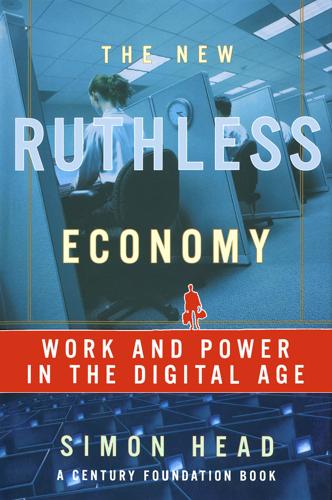
The New Ruthless Economy: Work & Power in the Digital Age
by
Simon Head
Published 14 Aug 2003
In his book Discipline and Punish: The Birth of the Prison (1979) Foucault develops the concept of "panoptic power" and its embodiment in an institution, the panopticon. As the title of Foucault's book suggests, the archetypal panopticon is a prison, and Foucault's definition of panoptic power is shot through with the vo- FOUCAUITS TOWER cabulary of punishment. The panoptic prison was to be a "twelve-sided polygon formed in iron and sheathed in glass" in order to create the effect of what the nineteenth-century English philosopher Jeremy Bentham called "universal transparency."36 A central tower, with wide windows, "opened onto the inner wall of the surrounding polygonal structure, which itself was divided into narrow cells extending across the width of the building."
…
See a o Call centers Automobile industry, 11,15-16, 38-59; andflexibilityin production/style, 34-35,44; Japanese expansion to U.S. and Europe, 38,41-42, 58; Japanese methods, adoption of, 40,171; and mass customization, 44-45; and mass production, 6-7,17, 28-29; and scientific management, 29-33; and unions, 33, 47, 58,172, 173. See also Japanese methods Bain and Company on costs of employee turnover, 112-14 Earth, Carl C, 26 Bentham, Jeremy, 165 Berwick, Donald, 125,128 Best practices: ERP off-the-shelf processes as, 159; focus of reengineering, 8; Japanese methods as, 50, 54 Bethlehem Steel Company, 23-24, 27 Better Office Management (Leffingwell), 60 Boeing, 36 213 INDEX 214 Botting, Christopher, 98 Bradley, BUI, 185 Branching technique: of call scripts, 87; as preplanned responses for contingencies, 156 Bresnahan, Timothy, 12,14 Brown, John Seely, 90, 169 Brynjolfsson, Erik, 12, 14 Buchanan, Pat, 183-84 Business @ the Speed of Thought (Gates), 81 Business Week, 66-67; poll on managed care, 119,184 Clinical Trial Research" (Horwitz), 147-±8 Computasoft Consulting on ERP implementation, 155 Computer telephony integration (CTI), 82, 85, 97 Corporate scandals, 2, 184-85 Craft workers: in German industry, 55, 56-57; McKinsey view of, 56; retreat of, in face of mass production, 19, 25, 27, 61; revival of, 37 CRM.
…
Each cell "had a window on both the inner and outer walls," allowing light to cross the cell, thus illuminating "all the inhabitants to an observer in the central tower, while that observer could not be seen from any one of the cells." Mirrors were also fixed around the tower to "dkect extra light into these apartments." Of course, the modern, high-security prison becomes a high-tech panopticon the moment closed-circuit television cameras are placed on or near the ceiling of its cells and passageways.37 Foucault analyzes the psychological effects of this "universal transparency." "The major effect of the panopticon," Foucault writes, was "to induce on the inmate a state of conscious and permanent visibility that assured the automatic functioning of power."38 For power to be exercised in this automatic way, the inmate does not have to believe that he is under constant observation, but only that the possibility of his being under observation is constantly present.

Happy City: Transforming Our Lives Through Urban Design
by
Charles Montgomery
Published 12 Nov 2013
Medieval churches: Sennett, Richard, The Conscience of the Eye: The Design and Social Life of Cities (New York: W. W. Norton, 1990), 15. Happy the man: Horace, Epode II (Beutus ille), in Horace: The Complete Odes and Epode, trans. David West (New York: Oxford University Press, 1997), 4. felicific calculus: Bentham, Jeremy, An Introduction to the Principles of Morals and Legislation (Oxford, U.K.: Clarendon Press, 1789), Chapter 4. Bentham made his own: Bentham, Jeremy, The Panopticon Writings, ed. Miran Bozovic (London: Verso, 1995), 29–95. Vauxhall Gardens: Collinson, Peter, “Forget not mee & my garden…”: Selected Letters, 1725–1768 of Peter Collinson, F.R.S., ed. W. Alan Armstrong (Philadelphia: American Philosophical Society, 2002); Coke, David E. and Alan Borg, Vauxhall Gardens: A History (New Haven, CT: Yale University Press), 211.
…
It may not have been linked to a philosophy of happiness per se, but the security provided by the Roman Empire undoubtedly led to prosperity and well-being across its territories for centuries. *Horace wrote: Happy the man who, free from cares, like men of old still works his father’s fields with his own oxen, encumbered by no debt. *Bentham made his own infamous foray into architecture, providing a chilling warning about the limits of weaving social goals into design. The Panopticon was a jail in which a circle of stacked cells faced inward toward a central guard tower. The windows of that tower would be shaded, so prisoners would have to assume they were always being watched. This sense of godlike omnipresence, he argued, would not only save money on prison guards but would also reform inmates’ morals.
…
But this happiness was nothing like the eudaimonia of ancient Greece. The English social reformer Jeremy Bentham encapsulated the new approach to the concept in his principle of utility: since happiness was really just the sum of pleasure minus pain, he said, the best policy for governments and individuals on any given question could be determined by a straightforward act of mathematics, so as to maximize the former and minimize the latter. The obvious problem was figuring out how to measure the two. Scholars of the Enlightenment liked nothing more than to take a scientific approach to social problems. Bentham was a man of his time, so he devised a complex set of tables called the felicific calculus, which gauged the amount of pleasure or pain any action was likely to cause.
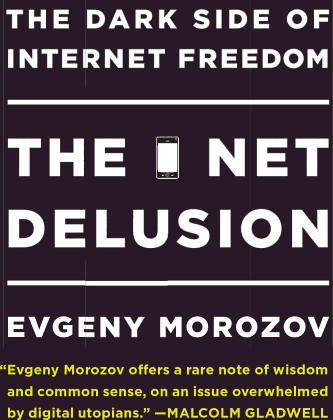
The Net Delusion: The Dark Side of Internet Freedom
by
Evgeny Morozov
Published 16 Nov 2010
Thus, even if authoritarian governments cannot actually accomplish what the activists fear, the pervasive climate of uncertainty, anxiety, and fear only further entrenches their power. Such schemes have much in common with the design of the perfect prison, the panopticon, described by the nineteenth-century British utilitarian philosopher Jeremy Bentham. The point of such systems is to exert control over prisoners’ behavior, even when nobody is watching them, by never letting the prisoners know if they are being watched. Governments, of course, are quite happy to overstate their actual capabilities, for such boasting works to their advantage.
…
ACM SIGCAS Computers and Society 37, no. 2 (2007): 64-77. Jopson, Barney. “Hope Founders Where Ministers Lack E-mail.” Financial Times, February 17, 2010. Kakabadse, N. K., A. P. Kakabadse, and A. Kouzmin. “Designing Balance into the Democratic Project: Contrasting Jeffersonian Democracy Against Bentham’s Panopticon Centralisation in Determining ICT Adoption.” Problems and Perspectives in Management 1 (2007). Karlsson, R. “Why the Far-Future Matters to Democracy Today.” Futures 37, no. 10 (2005): 1095-1103. Keulartz, J., M. Schermer, M. Korthals, and T. Swierstra. “Ethics in Technological Culture: A Programmatic Proposal for a Pragmatist Approach.”
…
INDEX Activism and fund-raising and group identity group vs. individual and mobilization and organization and technological fixes vs. slacktivism See also Social network activism Adorno, Theodor Afghanistan Africa Agha-Soltan, Neda Ahmad, Moeed Ahmadi Moghaddam, Ismail Ahmadinejad, Mahmoud Al Ali, Mazen Alam Ahdi, Ayatollah Albrecht, Holger Albright, Madeleine Al-Din Shah, Nasi Aleksievich, Svetlana Alliance of Youth Movements (AYM) Allnut, Luke Al-Mulk, Nizam Al-Qaeda Al-Shabab (“The Lads”) Amazon.com Ambinder, Marc America Calling (Fischer) American Enterprise Institute Amusing Ourselves to Death (Postman) Anderson, Chris Anderson, Perry Anti, Michael Apple Arendt, Hannah Armani, Giorgio Armenia Armony, Ariel Arrington, Michael Artificial intelligence Ashmanov, Igor Asia Australia Authoritarian governments and blogospheres and dictator’s dilemma and digital activists diversity in and elections and information and information technology and information technology companies See also Dictators; individual countries Authoritarianism modern in Orwellian and Huxleyan worlds and technological fixes trinity of AYM. See Alliance of Youth Movements Azerbaijan Baker, James Baker, Stewart Bandurski, David Banking Barlow, John Perry Bauxite Vietnam Belarus censorship in and sanctions, U.S. and SIM cards, prepaid social network surveillance in Bentham, Jeremy Berkman Center for Internet and Society Berlin, Isaiah Berlin Wall Besleney, Zeynel Abidin Betts, Paul Bhagwati, Jagdish Bigotry Bildt, Carl Bing. See also Search engines Blair, Tony Bloggers Blogosin Blogospheres BlueHost Bo Xilai Boas, Taylor Boccaccio, Giovanni Bolívar, Simón Bollinger, Lee Bonner, Elena Book of Government (al-Mulk) Boorstin, Daniel Bowling Alone (Putnam) Bradbury, Ray Brady, Anne-Marie Brave New World (Huxley) Brave New World Revisited (Huxley) Breaking the Real Axis of Evil: How to Oust the World’s Last Dictators by 2025 (Palmer) Briggs, Asa British Broadcasting Corporation Brown, Gordon Brownback, Sam Brzezinski, Zbigniew Bulgaria Bulletin of the American Geographical and Statistical Society Burakumin Burke, Peter Burma Burton, Matthew Bush, George W.
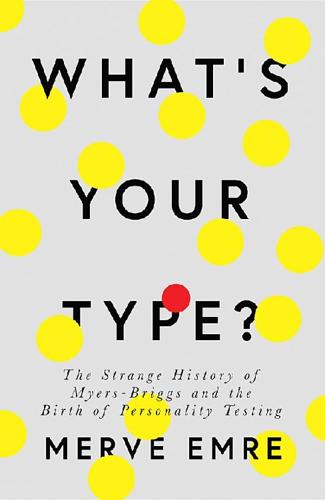
What’s Your Type?
by
Merve Emre
Published 16 Aug 2018
Despite the innovativeness of IPAR’s methods, there was something eerily retrograde about the house-party approach to testing. At the turn of the eighteenth century, the English philosopher Jeremy Bentham introduced the Western world to the idea of the Panopticon, or the “inspection house.” Its purpose was precisely that: to keep people under inspection at all times or, seeing as this was literally impossible, to make people feel as if they were under inspection at all times. Prisons, factories, madhouses, hospitals, schools—all these institutions could, in principle, accommodate the dense and impenetrable atmosphere of surveillance that Bentham imagined. Writing nearly two hundred years later, Michel Foucault, the great French theorist of social control, would describe the Panopticon in ruthlessly scientific terms as a “laboratory of power.”
…
“We did not take any Oriental students”: Donald MacKinnon, “Interview with the Rockefeller Foundation,” February 8, 1952, Folder 18, Box 3, TRF. As for women: Ibid. Here was a group of elite white men: MacKinnon, “Proposal for an Institute of Personality Assessment and Research.” Yet inside the IPAR “fishbowl”: Ibid. At the turn of the eighteenth century: Jeremy Bentham, Panopticon; Or, The Inspection-House (London: T. Payne, 1791). Writing nearly two hundred years later: Michel Foucault, Discipline and Punish: The Birth of the Prison (New York: Vintage Books, 1991), 196. “Everything is grist”: Donald MacKinnon, “IPAR Annual Report, 1952–1953,” Folder 18, Box 3, TRF.
…
admissions, university, 174–75, 181–83, 187, 202 Adorno, Theodor: Authoritarian Personality, The, 125–26, 156–58, 178, 179 critique of personality testing by, xvi, 125–26, 135, 172, 264 Minima Moralia: Reflections on a Damaged Life, 155 questionnaire for fascist threat by, 127, 155–58, 184 advertisements, types in, 256 “advertisitis,” 92, 93 Advisory Committee on Uranium, 115–17 Allport, Gordon, 97 amateurism, 73–74, 83–85, 90–91 American Bar Association, 249 American Magazine, 16, 18 American Medical Association, 175 American Psychological Association, 44, 83, 203, 223 “Analysis of the Personality of Adolph [sic] Hitler, An” (Murray), 107, 111, 113 answer keys and sheets for MBTI, 136–37, 204, 210–11, 216, 232 APT (Association for Psychological Type), 252, 261 archives of Isabel, xii, xv, 262, 265 Arendt, Hannah, 188 “auxiliary” function (in Isabel’s system), 131 baby-training laboratory: adult outcomes from, 7, 13 checklist guide from, 17 as experiment in personality formation, 6–7, 8–9, 10, 12–13, 14 as source for parenting advice column, 16–18 Baker, Howard, 191 Baker, Ray Stannard, 16–17 Ballantyne, Sheila, 199 Barron, Francis Xavier: creativity, research on, 190–91, 193, 195, 197 creativity, theory of, 189, 200 description of, 179, 188 Bates, Marilyn, 260 Beauvoir, Simone de, 196 behaviorism, 7–8, 33, 35, 36, 97 Bell Telephone, 139, 161, 163 Bentham, Jeremy, 184–85 Bereiter, Carl, 237 Berkeley, Calif., 177, 197 Berry, John, 249 bimodality, statistical problem with, 215–16 Binswanger, Ludwig, 121–22 Black, John, 241–44, 245, 256 Bok, Edward, 18, 57 Breakfast at Tiffany’s (Capote), 192 Briggs, Albert, 5, 36, 99 Briggs, Katharine Cook: overview of, xii, xiii, xvii, xix as amateur Jungian analyst, 73–74, 83–85, 90–91 Chief, attitude toward, 21, 22, 23–25, 26–27, 28, 31 childhood, college, early marriage of, 1–6 Darwinian ideas of, 13–14 death of, 227 dementia of, 118, 162, 220 depression of, 32–33, 34 diary of child-rearing, 5, 7, 11, 13, 15, 16, 18, 62 dream analysis by, 36–37, 71–73, 72, 74–75, 77–78, 90–91 as grandmother, 57–58 on Hitler, 105–6, 110–11, 113, 116–17 home-schooling by, 15 images, use of, 80–81, 100 index cards of, 43, 74, 93 as Isabel’s critic, 56, 60, 132–33 as Isabel’s guide, 51, 63–64, 67–69, 118–19, 124–25, 127, 132 Jung, correspondence with, 46, 48, 49, 76, 77, 82–83, 84–85, 90, 102, 162–63 Jung, meeting with, 89, 91, 102–3 Jung, obsession with, xix, 38, 48–51, 73, 90–91, 102–3 Jung, rebuke by, 84–85 Jungian-inspired “Personality Paint Box” by, 43–46, 47 Jungian quest for self by, 36, 37–43 Jung’s theory of types and, 33–37 motherhood as “profession,” 6–7, 8–9, 10–13, 11, 14–18, 67–69 as mother to young adult, 18–19, 20, 21–25, 26–27, 28, 32–33, 42 Murray in comparison, 92–93, 94, 95–96, 97–98, 100, 105–6 parenting advice columns by, 16–18 physical description of, 2 political beliefs of, 91, 115–17 questionnaires by, xiii, 12, 90, 93, 97–98 salvation, ideas on, 3, 6, 7, 33, 75, 93 scientific inquiry vs. spirituality of, 2–4, 6 storytelling of, 10–11, 100 and Tuckerman family, 75–85 type table of, 46, 47, 74, 93 type theory of, 34, 36–37, 103, 131 as writer, 16–18, 42–46, 47, 49–51, 56, 90 see also baby-training laboratory; family, as origin of MBTI; specialization Briggs, Katharine Cook, writings of: “Case for the Homemaker, The,” 18 “Diary of an Obedience-Curiosity Mother, The,” 11, 13, 16, 18, 62 “Hail, Dr.

The Most Powerful Idea in the World: A Story of Steam, Industry, and Invention
by
William Rosen
Published 31 May 2010
His plate punching machine, operated by the same Jacquard system originally used for weaving, was the first digitally operated machine tool. * Or it would be if the Mills wasn’t actually still part of the naval base itself and consequently off-limits to most visitors. * Jeremy Bentham’s “Panopticon,” a multilevel prison with a central core from which guards could watch every move each prisoner made, and which has become a metaphor for the modern surveillance state, is one of his best-remembered, if creepiest, ideas. Less well known is that the original Panopticon was designed by Samuel Bentham, for use in supervising laborers at Krichev, the estate of Prince Vasiliy Potemkin. * Earl Spencer of Althorp, a direct ancestor of Diana, Princess of Wales
…
In 1786, while in Russia,12 where he had gone to take a job as a naval engineer, he was so short of skilled craftsmen that the only way to produce blocks, tackles, belaying pins, and all the other wooden impedimenta of the Age of Sail was to make the process simple enough that they could be manufactured by even illiterate and untrained serfs. Or, even better, by machines. Bentham’s older brother, the political philosopher Jeremy, had independently developed an interest in woodworking by unskilled laborers. While he is best remembered for his utilitarian philosophy—“the greatest good for the greatest number”—Jeremy Bentham probably spent as much time thinking about prison reform as anything else,* and his fascination with prisons extended to the idea that woodworking was the perfect way to occupy the idle but untrained hands of prisoners. In 1795, the Bentham brothers put their ideas together and drafted a contract proposing that the Admiralty use prison labor to operate the woodworking machines used to produce naval stores.
…
Ideas, and the institutions that promote them, take some time to take root. Locke’s own protégé, David Hume, was never persuaded that property rights derived from natural law. Eighty years after Locke’s death, conservatives like Edmund Burke, and progressives like Jeremy Bentham and John Stuart Mill, were still uncomfortable with Locke’s idea of natural laws; Bentham called them “nonsense on stilts.”29 The final victory, however, was Locke’s; in 1776, Adam Smith was virtually channeling Locke’s Second Treatise, writing in The Wealth of Nations, “The property which every man has in his own labour, as it is the original foundation of all other property, so it is the most sacred and inviolable.”
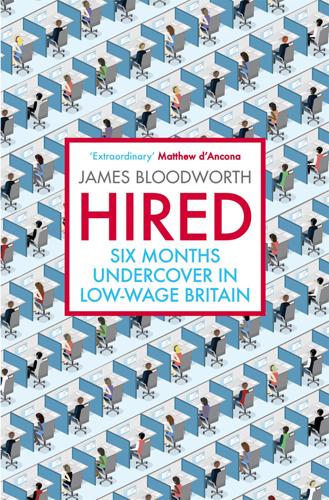
Hired: Six Months Undercover in Low-Wage Britain
by
James Bloodworth
Published 1 Mar 2018
And there’s other things in the job that you gotta promote, so I still have to promote, and I still have to be on target, and sometimes that can be stressful ... people stay home ill and different things because they just fed up or end up leaving.’ Some call centres operate a system of overarching surveillance that has been compared by the academics Sue Fernie and David Metcalf to the ‘electronic panopticon’25 – a system of management in which every action is monitored, tracked and logged. The panopticon was a model of prison devised in the eighteenth century by the philosopher Jeremy Bentham, in which surveillance was absolute. Because inmates of Bentham’s imaginary prison believed they were being observed at all times, they internalised the objectives of their gaolers, behaving in line with management prerogatives as if they were being watched – even when they were not.
…
Aberfan disaster (1966) 170–1 ACAS 38 acid attacks, delivery drivers protest against, London (July, 2017) 256–7 Ackroyd, Peter 249 Admiral Insurance call centre, Swansea 150, 153–64, 180–1, 183, 185–6, 224 commission used as incentive for employees at 162–3 ‘fun’ culture 155, 161–2, 163, 164, 181 management 162–3, 224 performance league tables 183 politics, employee attitudes towards 164 ‘Renewals Consultant’ role 154 share scheme and dividends 159 staff turnover rate 159 training 155, 160–1 unions/collective action and 185, 186 university graduates employed at 153–4 wages/pay 155–6, 158–60, 164, 180 working hours and conditions 155, 160–4, 180–1, 185–6 Age UK 113 Aiden (building site worker) 135–6 Aiden (former miner) 175 Airbnb 217 Alex (former pit mechanic) 55, 57, 62–3 algorithmic management systems 16–17, 209, 210, 211, 217–18, 222, 223, 227, 231, 232, 242, 249 Aman (Uber driver) 236–8, 239–40, 241, 242, 255 Amazon: accommodation, employee 20–2, 24–6 algorithmic management system 16–17 blue badges 20, 41 breaks, employee 12–14, 36, 48, 49–50, 52–3, 64–5 British workers and 31, 33–4, 35–41, 57, 65, 72–3 diet/health of employees 51–2, 64–5, 70–1 disciplinary system 36, 39–41, 42–4 employment agencies, use of 19, 20, 37, 38, 39, 40, 41, 43, 65–6, 86 see also Transline and PMP Recruitment employment contracts 19–20, 53, 58 food served to employees 12–13, 14, 64 fulfillment centres in former mining areas 54–5 JB’s weekly budget whilst employed at 68–9 migrant labour, use of 11, 12, 13, 15, 20, 21, 22–7, 30, 32, 33, 34, 44, 45, 46, 51, 53, 57, 61–2, 65, 71–5, 258, 260–1 picker role 14, 16, 18, 19, 49, 65, 119, 258 process guide role 22–3 recruitment process 19–20 Rugeley distribution centre, Staffordshire 11–76, 79, 86, 119, 127, 128, 159, 258 security/security guards 11–13, 47, 48–9, 52 survey of employees, GMB 36 Swansea, warehouse in 145–6, 194 tax paid in UK by 146 tiredness/exhaustion of employees 44, 50–1, 65 transgender employees, treatment of 40–1 wages/salary 18, 19, 37–9, 42–3, 65–6, 68, 69, 70, 159 Amodeo, Michael 223 Anne (pensioner in Cwm) 197–8 anti-depressant medication 188 Armitage Shanks 57 Arora brothers 124–5 Aslam, Yaseen 229–30, 250 Assured Shorthold Tenancy 96 Attlee, Clement 173 ‘austerity’ policies 1–2, 6, 108 B&M Bargains 124–5, 126–30 BBC 138, 157, 173, 236 Bentham, Jeremy 182, 194 Berlin Wall, fall of (1989) 263 Bertram, Jo 235, 250–1 Bevan, Aneurin 144, 149, 192–3, 247 Bezos, Jeff 18 Big Issue, The 122 Big Pit National Coal Museum, Blaenavon 167, 170 Blackpool, Lancashire 77–140, 169, 187 accommodation in 80, 124, 137–8 B&M Bargains warehouse in 124–5, 126–31 Bloomfield district 137 building site work in 135–6 Central Drive 81, 120, 132–3 Golden Mile 121–2 health of residents 137 home care work in 81–90, 106–20, 140 homelessness in 95–105 job centres in 133–5 suicide rates in 100 unemployment in 121–3, 138, 139–40 Blaenau Gwent, Wales 187, 188, 190 see also under individual area and place name Booth, William 205 Brereton Colliery, Staffordshire 55 Brian (former miner) 196 Bryn Colliery, Wales 196 Brynmill, Swansea, Wales 150–1 building site work 121, 124, 135–6 buy-to-let housing market 24 Cadman, Scott 244, 245–6, 247–9 call centres 35, 61, 139, 150, 153–64, 180–6, 192, 199, 224 see also Admiral Insurance call centre, Swansea Cameron, David 259 Cannock Chase 21, 28, 54 capitalism 83, 145, 181 co-opts rebellion against 149 consumerism and 146 debt, reliance on 62 English culture overwhelmed by 32–3, 198–9 fall of Berlin Wall (1989) and 263 ‘gig’ economy and 210, 215, 232 platform capitalism 215 religious fatalism appropriated by 161 care sector: Eastern European migrant labour and 114–15 length of home care visits and 108–9, 110 local authority budget cuts and 107–10 privatisation of social care and 106–8, 109 staff training in 85–6 staffing crisis within 84–5, 119 zero hours contracts and 87 see also home care worker Carewatch UK 81–90, 109, 110, 118, 132, 135, 136, 150, 159 Disclosure and Barring Service (DBS) process and 88–90, 109–10 employee reviews of 83–4 employment contracts/conditions 87–8, 118–19 length of care visits and 110 MAR (Medication Administration Record) sheets and 114, 115 recruitment 81–2, 84–5 ‘shadowing’ process 88, 109–10 training 85–6 see also care sector and home care worker Cefn Mawr No. 2, Afan Valley, Wales 171–2 Celcon 57 Centre for Cities 61 Chartered Institute of Personnel and Development 153 Chartists 144, 149 China 183, 196–7 Chris (Amazon employee) 20, 21, 22–6, 65 Citizens Advice 243–4 CitySprint 246, 248–9, 251–2 Claire (Amazon employee) 36, 37–41, 50, 53 class: death of 4 erosion of class solidarity 193–4 fall of Berlin Wall and 263 liberalism and 263 scientific theories of 4, 17 see also middle-class and working-class Claudiu (housemate of JB) 22 coalition government (2010–15) 109, 115–16 coal mining: decline of industry 54, 55–6, 58, 144–5, 172–9 danger of/disasters 169–72 General Strike and 173 Miners’ Strike (1984–5) 3, 174–7 South Wales Valleys and 143–4, 147–9, 165–79, 180, 188, 189, 190–1, 193, 195, 196 Thatcher and 174–5, 263–4 collectivism 228 communism 17, 173, 178, 228, 263 Compare the Market 155 Conservative Party 3, 7, 109, 175 consumerism 146 Coombes, B.
…
He likes doing that job; the problem is the company he’s working for.’ To really understand unemployment – or in this case underemployment – you have to go out and talk to the people who are buffeted from pillar to post by its volatility. You have to leave the comfortable realm of ‘freedom, equality, property and Bentham’ – or Twitter and Facebook, as Marx might have added today. It is no good simply looking at the figures released by the Office of National Statistics once a month, for this alone tells you little about the struggling woman who is working on a checkout for three hours a week, or the man packing boxes for thirty hours one week and two hours the next.
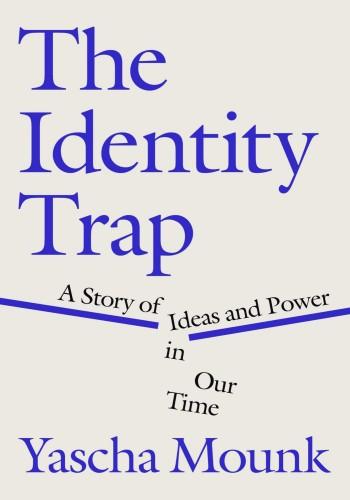
The Identity Trap: A Story of Ideas and Power in Our Time
by
Yascha Mounk
Published 26 Sep 2023
GO TO NOTE REFERENCE IN TEXT tarred and feathered, even beheaded: Michel Foucault, Discipline and Punish: The Birth of the Prison, trans. Alan Sheridan (New York: Vintage Books, 1995), 6–9. GO TO NOTE REFERENCE IN TEXT “to punish less, perhaps”: Foucault, Discipline and Punish, 82. GO TO NOTE REFERENCE IN TEXT a panopticon developed: Jeremy Bentham, The Panopticon Writing, ed. Miran Bozovic (London: Verso, 1995), 29–95. GO TO NOTE REFERENCE IN TEXT act of self-imposed discipline: “At the other extreme [of discipline], with panopticism, is the discipline-mechanism: a functional mechanism that must improve the exercise of power by making it lighter, more rapid, more effective, a design of subtle coercion for a society to come” (Foucault, Discipline and Punish, 209).
…
But Foucault, as ever, distrusted the appearance of progress. The purpose of the modern criminal justice system, he argued, is “to punish less, perhaps; but certainly to punish better.” Foucault illustrated this by discussing designs for a model penitentiary in the form of a panopticon developed by the utilitarian philosopher Jeremy Bentham. In such a prison, a guard would sit in a tower at the center of a large hall, with the cells of prisoners arranged in a full circle around him. Though he would never be able to observe all prisoners at once, he might be peeking into the cell of any of them at any one time.
…
Peña, 221 Adele, 150 Adelman, Levi, 120, 121 Advisory Committee on Immunization Practices (ACIP), 206–8, 364n advocacy groups, 3, 189, 198 affinity groups, 2, 3, 184, 197, 201, 203 affirmative action, 187, 209, 220, 221, 222, 316n, 366–67n Africa, 253, 254 African Americans, see Black Americans African American Studies, 64 Ahmari, Sohrab, 279 Alcoff, Linda Martin, 318n Alidina, Raafi-Karim, 108 allies, 192 former adversaries becoming, 274–76 of members of marginalized groups, 134, 135, 143, 145 Allport, Gordon, 192–94, 196 Althusser, Louis, 28, 30, 304n Amazon, 107n, 108, 345n American Association of University Professors, 348–49n American Civil Liberties Union (ACLU), 80, 101–5, 111, 114, 117, 167, 328n American College of Physicians, 7 American dream, 231, 369n American Express, 107 American Journal of Public Health, 232 American Medical Association, 7 American Public Health Association, 7 American Rescue Plan, 299n anarcho-syndicalism, 35, 36 Anderson, Elizabeth, 200 anorexia, 85 anthropology, 310–11n antiracism, 122–26, 270 Antiracist Baby (Kendi and Lukashevsky), 124 anti-Semitism, 30, 227 apologizing, 283 Appiah, Kwame Anthony, 154 Arab Spring, 84 Arafat, Yasser, 42 Areopagitica (Milton), 348 Aronson, Elliot, 194, 195 art, 151, 343n Asch, Solomon, 117–19, 333n Asian Americans, 2, 134, 148, 155–56, 208, 209, 219, 228, 249, 367n Atlanta Black Star, 1 Atlantic, 102 authoritarianism, 16, 169, 260, 352n B Baha’i faith, 279–80 Baldwin, James, 175 Bank of America, 357n Bank Street School for Children, 3, 189, 198 Baylor University, Cinco de Drinko party at, 151–52, 156–57 Bayor, Ronald, 359n Bazelon, Lara, 102 BBC, 161, 172 Beauvoir, Simone de, 28, 305n Belarus, 322n Bell, Derrick, 19, 51–57, 60–62, 65, 69, 76, 210, 241, 316n, 318n, 356n, 372–73n Bell, Kristen, 134 Bell, Melissa, 90 Bentham, Jeremy, 31 Between the World and Me (Coates), 185 biases, implicit, 12, 134, 187, 245, 356n Biden, Hunter, 163, 345n Biden, Joe, 70, 105, 208, 211, 220 Birmingham School of Cultural Studies, 149 Black Americans, 10, 49–51, 55, 75, 95, 209, 216, 276, 316n, 376n affirmative action and, see affirmative action “authentic” voices for, 142, 143, 340n civil rights movement and, 19, 49–58, 61–62, 70, 209, 248, 363n, 372n and contact with white people, 192–93 health care and, 5–6, 207–8, 211–12 elected to high offices, 50, 312n income of, 50, 123, 215, 216, 250, 313n, 335n middle class, 10, 215, 250 musicians, 157–59 pessimism about progress of, 69 political views among, 340–41n racism and, see racism recent immigrants, 216, 249–50 voters, 49 wealth and, 217 women, 58–60, 62, 71, 312n, 316n Black colleges and universities, 361n Black Lives Matter, 329n Black Power (Carmichael and Hamilton), 301n, 368n Black Power movement, 300–301n blasphemy, 175 blogs, 88 Bojack Horseman, 134 Bon Appétit, 150 Boone, Pat, 157 Bordo, Susan, 311n Bostick, Dani, 210 Boston Consulting Group, 108 Bourguiba, Habib, 40 Branch, Denise, 168 Brennan, Timothy, 310n Brettschneider, Corey, 353n Brie, Alison, 134 Brigham and Women’s Hospital, 5–6 Briscoe, Sharyn, 1, 3, 4 Britain, 7, 11, 39, 98, 151, 162–63, 175, 176, 184, 231–33, 240, 249, 260, 268, 276–78, 344n, 360n British East India Company, 308n British Museum, 343n Brooks, David, 270 Brown, Michael, 94n Brown v.
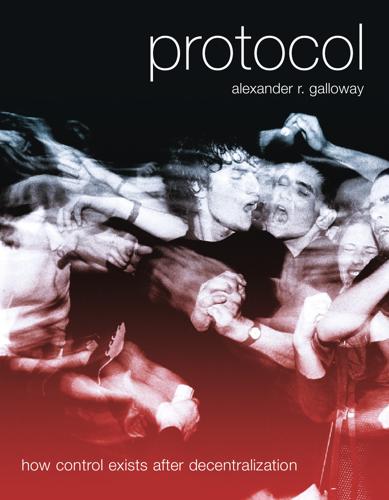
Protocol: how control exists after decentralization
by
Alexander R. Galloway
Published 1 Apr 2004
While there are many levels to the court system, each with its own jurisdiction, each decision of each court can always be escalated (through the appeals process) to a higher level in the hierarchy. Ultimately, however, the Supreme Court has final say over all matters of law. The panopticon, described in Foucault’s Discipline and Punish, is also a centralized network. In the panopticon, repurposed by Foucault from the writings of Jeremy Bentham, a guard is situated at the center of many radial cells. Each cell contains a prisoner. This special relationship between guard and prisoner “links the centre and periphery.” In it, “power is exercised without division, according to a continuous hierarchical figure” occupying the central hub.3 A decentralized network is a multiplication of the centralized network (see figure 1.2).
…
G., 227n32 Braden, Bob, 142–143 Brain, relationship to computers, 103 Brand, Stewart, 152n10, 160, 169 Britain, 181 British Standards Institution (BSI), 129 Brecht, Bertolt, 55 Bretton Woods agreement, 26 Broeckmann, Andreas, 197n61 Browser, 75–76, 218 Bug, computer, 185–186, 224 Bukoff, Alan, 235 Bunting, Heath, 219, 225–226 Burden, Chris, 227n32 Bureaucracy, 121, 205 Bureau of Inverse Technology, 195, 228–229 Burger, Ralf, 179 Bush, Vannevar, 18, 58–60 Byfield, Ted, 47, 50 Babbage, Charles, 188 BackOrifice, 152n11 Baker, Fred, 123 Baker, Rachel, 195 Bandwidth, 219–220, 225 Baran, Paul, 4–5, 30n2, 35, 120, 127, 140n43, 200, 204n71 Barbie Liberation Organization, 228 Barlow, John Perry, 168, 229 Barratt, Virginia, 192 Barthes, Roland, 18, 92, 143 Baudrillard, Jean, 58, 69 Baumgärtel, Tilman, 216, 219 Bazin, André, 18, 69, 78 Being Digital (Negroponte), 18 Bell, Daniel, 17 Bell Telephone Laboratories, 123, 182 Benkler, Yochai, 40 Bentham, Jeremy, 31 Berkeley, University of California at, 124. See also Unix, Berkeley Software Distribution Berlin, 225–226 Berlin Wall, 26 Berners-Lee, Tim, 10, 39, 137–139, 142, 242, 246. See also World Wide Web (WWW) Bertillon system, 13, 111 Best Current Practice (BCP), 136 Betamax, Sony, 68, 125 Beuys, Joseph, 81 Bey, Hakim, 18, 33, 151, 158, 161 C, 123–124.
…
In The History of Sexuality, Volume 1, Foucault contrasts the older power of the sovereign over life (one characterized by the metaphysical concern of either the absence or presence of life) to a new mode in which life is either created or destroyed: “One might say that the ancient right to take life or let live was replaced by a power to foster life or disallow it to the point of death.”21 He continues: “The old power of death that symbolized sovereign power was now carefully supplanted by the administration of bodies and the calculated management of life.”22 Foucault’s treatment of biopower is entirely protocological. Protocol is to control societies as the panopticon is to disciplinary societies. While protocol may be more democratic than the panopticon in that it strives to eliminate hierarchy, it is still very much structured around command and control and therefore has spawned counter-protocological forces. 19. Michel Foucault, Ethics: Subjectivity and Truth, ed. Paul Rabinow (New York: New Press, 1997), p. 73. 20.
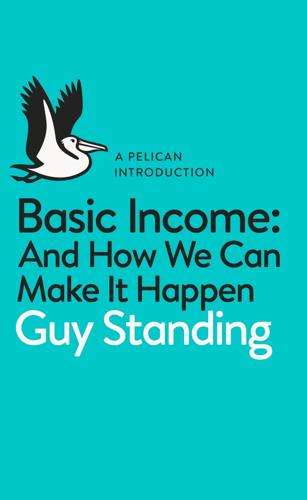
A Pelican Introduction: Basic Income
by
Guy Standing
Published 3 May 2017
Its vision of ‘right’ and ‘wrong’ is rooted in the political philosophy of utilitarianism, drawing heavily on the writings of Jeremy Bentham (1748–1832). In particular, libertarian paternalism derives from Bentham’s ‘panopticon’, a prison design enabling prisoners to be watched by a guard at all times and their behaviour monitored. Bentham’s idea was to give prisoners apparent free choice, while knowing they would be punished if they made the ‘wrong’ choice. The authors of Nudge used the same words and phrases as Bentham, without mentioning his name or the panopticon. No doubt they were well-intentioned. Most paternalists mean well. But today, more than ever, the state can rely on subliminal and other devices, including incentives, sanctions and time-using obstacles, to induce people to act in one way rather than another.
…
Such cryptocurrency schemes are in their infancy, and it is far too early to say whether they have a significant role to play as a secondary basic income scheme. But they should be watched with interest. In the Air Elsewhere By late 2016, political parties and movements in several countries were proposing basic income pilots. In Britain, following Jeremy Corbyn’s re-election as leader of the Labour Party, John McDonnell, Shadow Chancellor of the Exchequer, announced at the 2016 party conference that Labour would consider advocating a basic income in its manifesto for the 2020 general election, with the proposal of a pilot as a first step. In Scotland, the governing Scottish National Party passed a motion supporting basic income, and councillors in Fife and Glasgow are discussing local pilots.
…
These include the British and New Zealand Labour Parties, the Scottish National Party, the Greens in most countries, including Britain, Canada, the Czech Republic, Finland, Ireland, Japan, the Netherlands, Norway and the United States, and the Pirate parties where they exist, most notably Iceland. In Britain, although the Conservatives have shown no interest, both Jeremy Corbyn, the Labour Party leader, and Labour’s Shadow Chancellor, John McDonnell, favour piloting the idea, as does Ed Miliband, Corbyn’s predecessor as leader. Canada’s governing Liberal Party has put basic income into its policy platform, and several provincial premiers have come out in support.
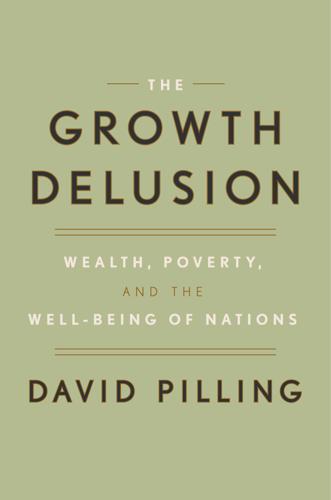
The Growth Delusion: Wealth, Poverty, and the Well-Being of Nations
by
David Pilling
Published 30 Jan 2018
He also drew up plans for a panopticon prison, which would allow a single guard to observe every prisoner simultaneously. Bentham was a social reformer, who wrote in trenchant prose about everything from equality of the sexes to state punishment. The “fundamental axiom” of his philosophy was the principle that “it is the greatest happiness of the greatest number that is the measure of right and wrong.” That sounds enormously progressive for a man writing 200 years ago, but in the story of economics, at least as told by me, Bentham can appear as both hero and villain. Bentham is usually regarded as the founder of a doctrine called utilitarianism, which states that an action is right if it promotes overall happiness.
…
How much would someone be willing to pay for a tangible thing, such as a plastic Pez dispenser, or an intangible one, say an unpolluted bay or more time off work? How much, for example, is the head of Jeremy Bentham, the great English philosopher who died in 1832, worth? This book is chock-full of skepticism about the value we attach to certain things and about the difficulty of pricing things we really should be measuring, like pollution, housework, and nature. Here, at last, is a simple question with a simple answer. Jeremy Bentham’s head is worth ten pounds.1 We know this for a fact because, when students took his head hostage in 1975, University College London, to whom it belonged, agreed to pay ten pounds for its return.
…
Happiness, in short, has become a deadly serious business. And no discussion of the subject can begin without Jeremy Bentham. Bentham was a British philosopher and social critic born in 1748 in Houndsditch, London. The son of a wealthy lawyer, he was a child prodigy. By the age of three he was said to be learning Latin declensions and he attended Oxford University at twelve. Graduating with a master’s degree at the ripe old age of eighteen, he quickly gave up the practice of law, which he detested, and devoted his life to writing and pressing for social change. Bentham was an eccentric. Just in case the story about his mummified head hasn’t convinced you of that, he once wrote to the Home Office to suggest that its various departments be linked by a web of “conversation tubes” to aid communication.

The Alignment Problem: Machine Learning and Human Values
by
Brian Christian
Published 5 Oct 2020
Benjamin, Ludy T., Jr., and Darryl Bruce. “From Bottle-Fed Chimp to Bottlenose Dolphin: A Contemporary Appraisal of Winthrop Kellogg.” Psychological Record 32, no. 4 (1982): 461–82. Bentham, Jeremy. An Introduction to the Principles of Morals and Legislation. London: T. Payne & Son, 1789. ———. “Letter to Jacques Pierre Brissot de Warville.” In The Correspondence of Jeremy Bentham. Vol. 4, edited by Alexander Taylor Milne. UCL Press, 2017. ———. “Preface,” i–vii. Panopticon: Postscript; Part I. Mews-Gate, London: T. Payne, 1791. Berk, Richard. Criminal Justice Forecasts of Risk: A Machine Learning Approach. Springer Science & Business Media, 2012.
…
In any number of laboratory studies, when people are on camera, when there is a one-way mirror in the room, when the room is brightly as opposed to dimly lit, they are less likely to cheat.56 Heck, even the suggestion of surveillance—a picture of another person on the wall, a painting of a human eye, a regular mirror—is enough to produce this effect.57 This was part of the idea behind eighteenth-century philosopher Jeremy Bentham’s famous “panopticon” blueprint for a circular prison, with each cell arrayed around a guard tower, the inmates never knowing whether or not they were being watched. Bentham waxed about the purifying effects of, not even surveillance itself, but the suspicion of surveillance, calling his circular building a “mill for grinding rogues honest,”58 and breathlessly enumerating its promise: “Morals reformed—health preserved—industry invigorated—instruction diffused—public burthens lightened . . . all by a simple idea in Architecture!”
…
See attainable utility preservation Australian National University, 262–63 autonomous driving, 223–25, 377nn39, 42 architecture for, 228, 378n47 backpropagation for, 377–78n43 danger of, 326–27 imitation and, 225–27, 322 recovery and, 229–30, 232–34, 378n54 Aytar, Yusuf, 221 backflips, 265–66 backgammon, 141, 142 backpropagation, 234, 338–39n12, 361n30, 377–78n43 backward learning, 162, 365n27, 369n9 Bagnell, Drew, 230–31 Bain, Alexander, 156, 227–28, 358n8 Balentine, Bruce, 240 Barocas, Solon, 65–66 Barto, Andrew, 129 on actualism vs. possibilism, 238–39 on evolution, 173 on happiness, 150 on intrinsic motivation, 202, 370n12 on organisms as maximizers, 130 on policy vs. value functions, 137–38 research focus of, 138, 362n51 on shaping, 161 on TD learning, 142 on terseness, 132 Bayesian neural networks, 283–86 Bayesian Rule Lists, 100–01 “Behavior, Purpose and Teleology” (Rosenblueth, Wiener, and Bigelow), 127–28 Bellcore, 170–73 Bellemare, Marc, 181–83, 192–94, 200, 209 Bengio, Samy, 337n9 Bentham, Jeremy, 152, 275–76 Berk, Richard, 82 Berlyne, Daniel, 187, 188–89, 190, 194, 197, 198 Berridge, Kent, 147 BERT model, 344–45n94 Bertrand, Marianne, 39 bias age, 32, 396n7 Fitzpatrick scale and, 341n48 in Google AdSense, 343n72 in hiring, 39–40, 48 in human judgments, 39, 68 image recognition and, 25–26, 339n24 implicit association test for, 44–45 in medical research, 314, 396n7 in orchestra auditions, 40, 343n73 perpetuation of, 39–40, 43, 49 photography and, 26–29 phrase sources and, 344n83 reality of, 48 redundant encodings and, 40, 64, 343n74 removing from word embedding, 41–44, 344n86, 345n94 in risk-assessment models, 7–9, 57–61, 67, 68, 70, 346–47nn25, 32, 348n52 as source of knowledge, 328 TCAV and, 116 training data and, 26, 29–34, 314–15, 340n44, 341n48, 396n7 transfer learning and, 318 value alignment and, 43 veridical, 45–46 in word embedding, 6–7, 9, 38, 39, 40, 342–43n68, 344–45n94 word embedding as diagnostic tool for, 46–48, 49 See also fairness; representation big data, 99–100 binary system, 336n9 biomechanics, 253–54, 382n13 black boxes.

Empire of Guns
by
Priya Satia
Published 10 Apr 2018
In 1799, he had himself appointed to the select committee investigating the copper trade, thus ensuring that it would not probe into his activities. Samuel Bentham, as inspector general of naval works from 1796, pushed back against this kind of corruption by innovating new manufacturing methods that might free military agencies from dependence on contractors. His innovations built on his experience in Russia in the 1780s. His brother Jeremy visited him there and began to build on Samuel’s ideas of panoptical supervision of workers—the germ of the Panopticon prison Jeremy designed; the problem of mass production for the state inspired a key concept of British liberalism. In Britain in 1791, Samuel and Jeremy promoted the Panopticon scheme. The Admiralty asked Samuel to design ships in 1795, and he included interchangeable parts for masts and spars to enable repair at sea.
…
It was Boulton and other Birmingham men who accused Williams of monopolistic practices in 1799, prompting the inquiry. His innovations built on: Knight, Britain Against Napoleon, 170–71, 320–21, 353. For this, Bentham worked: Ibid., 321, 376–80, 472–73; Knight and Wilcox, Sustaining the Fleet, 15–16. The Admiralty also sent Samuel Bentham to Russia in 1805 to oversee building of British warships there. There he built a wooden Panopticon to manage thousands of unskilled workers operating machinery. Samuel also set the manufacture of navy biscuits on a production-line basis. Maudslay’s factory at Lambeth set new standards of precision engineering using lathes but also made steam engines; he sold one to the Woolwich Arsenal in 1809.
…
His vision was to reorganize the dockyards to standardize the measured movement of each woodworker, making personal judgment superfluous. His ideal was an individual at the center of the dockyard directing all the activity around him, responsible to a single supervisor—the Panopticon principle. His techniques—which might have been innovated only in the context of a state operation—were later copied in industry, including introduction of steam power and mechanization of many processes. Steam pumps kept docks dry. Bentham invented bucket-ladder steam dredgers to keep them from silting up. He also built metal-processing mills in the dockyards, to take the supply of copper sheets and bolts back from contractors.
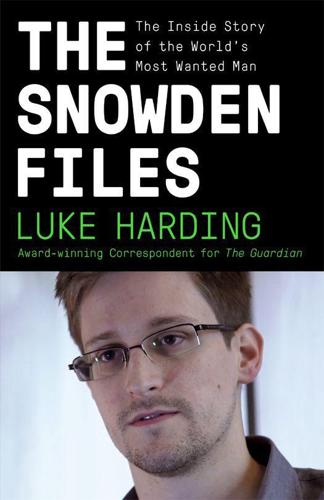
The Snowden Files: The Inside Story of the World's Most Wanted Man
by
Luke Harding
Published 7 Feb 2014
But the NSA’s ultimate goal seemed to go even further: to collect everything from everybody, everywhere and to store it indefinitely. It signalled a turning point. It looked like the extirpation of privacy. The spy agencies had hijacked the internet – once a platform for individuality and self-expression. Snowden used the word ‘panopticon’. This was a significant coinage by the 18th-century British philosopher and codifier Jeremy Bentham. It described an ingenious circular jail where the warders could see the prisoners at all times, without their knowing if they were being observed. And this, Snowden asserted, was why he had decided to go public. To throw away his life and career.
…
Asked why US spooks had bugged Chancellor Merkel, he offered a concise reply: ‘The reason I think they did it is because they could do it.’ New faces, then, but by 2014 it seemed that the most of the programs exposed by Snowden would carry on. The White House had promised transparency but seemed unwilling to pull the plug on mass surveillance, and its electronic equivalent of Bentham’s panopticon. According to the New York Times, Obama had reluctantly concluded there was no workable alternative to the bulk collection of metadata, including metadata from Americans. The administration hinted that it might reduce the number of years it keeps this information – from five to three. But this was hardly a concession.
…
He said the prime minister had only recently been briefed on Snowden after Putin and the other guests had gone. And he was ‘concerned’. Oliver added: ‘We are working on the assumption you have got rather a lot of stuff.’ The upshot was a personal visit from Cameron’s most lofty emissary, the cabinet secretary Sir Jeremy Heywood. This top official had advised three prime ministers and three chancellors. Assured, urbane and intelligent, Oxford- and Harvard-educated Heywood was used to having his own way. In a 2012 profile, the Mirror had dubbed Heywood ‘the most powerful unelected figure in Britain … and you will never have heard of him.’

Smart Mobs: The Next Social Revolution
by
Howard Rheingold
Published 24 Dec 2011
Foucault uses the word “discipline” to refer both to methods of control and to different branches of knowledge, for he saw knowledge specialization and social control as part of the same power/knowledge matrix. As an example of discipline and power/knowledge, Foucault cited the Panopticon (“all-seeing place”), an architectural design put forth by Jeremy Bentham in the mid-nineteenth century for prisons, insane asylums, schools, hospitals, and factories. Instead of employing the brutal and spectacular means used to control individuals under a monarchial state, the modern state needed a different sort of system to regulate its citizens. The Panopticon applied a form of mental, knowledge-based power through the constant observation of prisoners, each separated from the other and allowed no interaction.
…
See Bits and atoms Attentive billboards Auctions and the Prisoner's Dilemma and Reed's Law and reputation systems See also Auctionweb eBay Web site Auctionweb Augmented reality Aula project (Helsinki) Australia Automobiles: GPS devices in manufacturing of Axelrod, Robert Baker and McKenzie Barcode readers Barpoint service Battle of Seattle Baudrillard, Jean BAWUG (Bay Area Wireless Users Group) BBC (British Broadcasting Corporation) News Beatles Becker, Gene Behlendorf, Brian Bell Canada Bell Labs See also AT&T (American Telephone & Telegraph) Bellovm, Steve Benkler, Yochai Bennahum, David Bentham, Jeremy Benzon, William Berners-Lee, Tim Big game hunting See also Hunting Big Sky Telegraph system Billboards, attentive BIND software Bioacoustics research Biology and reputation systems and self-organizing systems and threshold models Bits and atoms: dance of "marriage of," BlackBerry pagers Blink.com Web site Blogs Bluetooth Bluetooth Special Interest Group BMW (Bavarian Motor Works) Boingo Botfighters Botswana Bozofilters BPDG (Broadcast Protection Discussion Group) Bricklin, Dan Britain See also United Kingdom Bronowski, Jacob Browsers, advent of Brunner, John Bryant Park Bryant Park Restoration Corporation Bug's Life, A (film) Building Wireless Community Networks (O'Reilly Associates) Buildings, computer chips in See also Smart rooms Burning Man festival Bush, Vannevar Business plans Butera, William Cable: Internet access modems television Cancer Capitalism Carnegie Bosch Institute Carpenter, Loren Center for Bits and Atoms (MIT) Chechen rebels Chicken game See also Game theory Chwe, Michael Suk-Young Circuit-switched networks Cities, digital Cisler, Steve Citizen Watch Company CITRIS (Center for Information Technology Research in the Interest of Society) City of Bits (Mitchell) Civil libertarians Clark, Andy Climate change Clothing.
…
Smart mobs are an unpredictable but at least partially describable emergent property that I see surfacing as more people use mobile telephones, more chips communicate with each other, more computers know where they are located, more technology becomes wearable, more people start using these new media to invent new forms of sex, commerce, entertainment, communion, and, as always, conflict. 8 Always-On Panopticon . . . or Cooperation Amplifier? There is need to reflect upon and discuss which social practices and relationships need to be sheltered from the pressure effects of global, commercial networking. At a time in which people are frantically trying to get connected, we would do well to ask: when and where does it make sense to remain unconnected?

A Theory of the Drone
by
Gregoire Chamayou
Published 23 Apr 2013
Such claims are clearly founded upon very fragile epistemological bases, which in no way prevents them from being extremely dangerous but, on the contrary, ensures that they are. The names given to these devices are very revealing: Argus26 and Gorgon Stare.27 In Greek mythology, Argus, the figure with a hundred eyes, was also known as Panoptes, “the one who sees all.” Jeremy Bentham’s panopticon, analyzed by Michel Foucault, was originally an architectural contraption. In a carrying forward of this pattern, in recent decades cities have been stuffed with video surveillance cameras. Surveillance by means of drones is more economical, as it involves no spatial alterations, nor does it require anything to be affixed to walls.
…
See also robots automatization, 205–21 See also dronization automatized video surveillance, 39–41 autonomous aerial warfare, 165–66 aversion to losses, 100–101, 128, 184, 201 Barber, Keith L., 49 Barkan, Robert, 232–33n5 Barère, Bertrand, 268n7 bathyscape, 22, 22 battle lines, 33 Beale Air Force Base, 123 Becker, Jo, 146 becoming, 199 Bekaa Valley, 27–28 Bell, David “In Defense of Drones,” 93 Bellamy, Alex J., 130 Benjamin, Walter, 40, 78, 83–84, 100, 214 Bentham, Jeremy, 43–44 bin Laden, Osama, 141 black Americans, 202 “Black Hawk Down” syndrome, 128 Blank, Laurie, 169, 266n4 bodies, 23 See also corporeality Boeing X-45A, 192 borders, 52–53, 232n5 Bosnia, 186 Boucherie, Captain Henry, 96 Bradshaw, Nick “Goose,” 99 bravery. See courage Brennan, John, 142, 143, 145–46 Bryant, Brandon, 121–23 Bugsplat program, 216 bureaucratic machine, 214–15 bureaucratic rationality, 147–48 Bush, George W., 29 Calvados, France, 211 cameras, 44, 204, 247n1 Cameron, James The Terminator, 213 Camus, Albert, 153–57 L’Homme révolté, 155–56 Canguilhem, Georges, 14 care.
…
See civilians nonreciprocity, 118–19 nonstate actors, 33 See also guerrilla warfare; terrorists North Atlantic Treaty Organization (NATO), 127–29, 154 Northrup Grumman, 217 “Not in our name” slogan, 201–2 nullity of conditional comparison, 189–90 Obama, Barack, 14, 58, 168, 169–70 Obama administration, 167, 171 obedience protection and, 178–79 robots and, 217–18, 273n30 O’Connell, Mary Ellen, 169 Oltramari, Alessandro, 235–36n24 Omdurman, Sudan, battle of, 93 On Killing (Grossman), 115–16, 116 ontological vulnerability, 183–84 operational capacity, 142, 169–70 Operation Allied Force, 128 Operation Iraqi Freedom, 12 operative images, 114 Ortega, Hernando, 123 Ortega, Hugo, 109–10 Outdoor Life, 30 pacifism, 185 democratic, 186, 188 Pakistan, 13, 50, 51, 58–59, 65, 141, 142, 171 See also specific locations Palestinians, 32, 88, 130–32, 238n11 Panetta, Leon, 140 Panoptes, 43 panopticon, 43–44 panoptics, 43–44 “The Paradox of Riskless Warfare” (Kahn), 163 Paris, 1830 uprising in, 217 pattern-of-life analysis, 42–44, 46–51, 145, 235–36n24 peace democracy and, 186, 193 state–subject relations and, 178 “peace-ego,” 112, 120, 246n20 Pentagon. See U.S. Department of Defense perception, 118–19 permanent watch, 38 Perpetration-Induced Traumatic Stress (PITS), 112–13 Pershing, John J., 33 personnel, 2–9 persons, 210 perspectives, totalization of, 38–39 Petraeus, David, 64 “phantom shots,” 247n1 phenomenological unity, break in, 118–19 Phoenix Program, 32 physical distance, weaponry and, 254–55n12 pilots, 1–9 avoiding risks to, 100–101, 127, 129 fighter pilots, 99, 100, 214 resistance to dronization, 100 training of, 13 See also drone operators Plato, Republic, 96 Plaw, Avery, 136 play, techniques of, 83–84 poisoning, 158–59 police action, 163, 165–66, 168, 172–73, 203.

Likewar: The Weaponization of Social Media
by
Peter Warren Singer
and
Emerson T. Brooking
Published 15 Mar 2018
Sidarth,” Salon, December 16, 2006, http://www.salon.com/2006/12/16/sidarth/. 57 9 billion digital devices: Peter Newman, “The Internet of Things 2018 Report: How the IoT Is Evolving to Reach the Mainstream with Businesses and Consumers,” Business Insider, February 26, 2018, http://www.businessinsider.com/the-internet-of-things-2017-report-2018-2-26-1. 57 soar to 50 billion: “The Sensor-Based Economy,” Wired, January 2017, https://www.wired.com/brandlab/2017/01/sensor-based-economy/. 57 almost a trillion sensors: Ibid. 57 sixty-five different elements: Rebecca Hill, “Shocker: Cambridge Analytica Scandal Touch-Paper Aleksandr Kogan Tapped Twitter Data Too,” The Register, April 30, 2018, https://www.theregister.co.uk/2018/04/30/aleksandr_kogan_also_slurped_twitter_data/. 57 Argus Panoptes: “Argus,” Encyclopedia Britannica, accessed March 18, 2018, https://www.britannica.com/topic/Argus-Greek-mythology. 57 the Panopticon: Thomas McMullan, “What Does the Panopticon Mean in the Age of Digital Surveillance?,” The Guardian, July 23, 2015, https://www.theguardian.com/technology/2015/jul/23/panopticon-digital-surveillance-jeremy-bentham. 57 filled with “telescreens”: George Orwell, Nineteen Eighty-Four (Harcourt, Brace & World, 1977). 58 more than a dozen: Michael Bauman, “How Beto O’Rourke Explains America,” The Ringer, February 28, 2018, https://www.theringer.com/2018/2/28/16898726/beto-orourke-ted-cruz-texas-senate-race-2018-midterm-elections. 58 500,000 new comments: “The Top 20 Valuable Facebook Statistics—Updated March 2018,” Zephoria Digital Marketing, accessed March 18, 2018, https://zephoria.com/top-15-valuable-facebook-statistics/. 58 400 hours of video: Meeting (not for attribution), Washington, DC, May 4, 2016. 58 more than 300,000 tweets: “Twitter Usage Statistics,” Internet Live Stats, accessed March 18, 2018, http://www.internetlivestats.com/twitter-statistics/. 58 “digital universe” doubles: John Gantz and David Reinsel, “The Digital Universe in 2020: Big Data, Bigger Digital Shadows, and Biggest Growth in the Far East—United States,” IDC Country Brief (IDC, February 2013), https://www.emc.com/collateral/analyst-reports/idc-digital-universe-united-states.pdf. 58 agents’ daily jogs: “Exercise App Shows Why Anonymous Data Can Still Be Dangerous,” CBC Radio, February 2, 2018, http://www.cbc.ca/radio/spark/383-dangerous-data-libraries-and-more-1.4516637/exercise-app-shows-why-anonymous-data-can-still-be-dangerous-1.4516651. 58 “For the first time”: Mark Milley, speech (Future of War Conference 2017, New America Foundation, Washington, DC, March 21, 2017). 59 the Allies amassed: William Mahoney, “Before the Beaches: The Logistics of Operation Overlord and D-Day” (undergraduate thesis, University of Indiana, 2014), https://spea.indiana.edu/doc/undergraduate/ugrd_thesis2014_mgmt_mahoney.pdf. 59 Its algorithms mine: Erica Fink et al., “Ashley Madison: Life After the Hack,” CNN (2017), http://money.cnn.com/mostly-human/click-swipe-cheat/?
…
This plethora of sensors and associated metadata is making real an idea that has long possessed (and frightened) humanity: the possibility of an ever-present watcher. The ancient Greeks imagined it as Argus Panoptes, a mythological giant with 100 eyes. During the Enlightenment, the English philosopher Jeremy Bentham turned the monster into the Panopticon—a hypothetical building in which all the occupants could be observed, but they never saw those watching them. Ominously, Bentham pitched his design as being useful for either a factory or a prison. George Orwell then gave the panoptic idea an even darker spin in his novel 1984. His futuristic totalitarian world was filled with “telescreens,” wall-mounted televisions that watched viewers while they watched the screens.
…
See discrediting; trolls and trolling attention economy (and war), 148–80 authenticity, 165–69 community, 169–73 emotion, 161–65 fake news, 120 future of, 261–73 inundation, 173–79 ISIS, 148–54 reality stars, 154–57 Trump, 3–4, 125 attention span, 158 audience engagement, 65–66, 119, 152, 165–67 Austen, Ben, 13 authenticity, 165–69, 186, 215 authoritarianism, 86–87, 102–3, 116, 262–63 B Bahrain, 89 Baidu Baike, 98 balkanization, 89 Baltica, 108, 206 Bangladesh, 140 Bannon, Steve, 133–34, 177 Baskayev, Alan, 112 Bateman, Robert, 126 Becoming Facebook (Hoefflinger), 222 Belarus, 86 Bell, Alexander Graham, 31, 50, 221 Bell Telephone, 31 See also AT&T Bellingcat, 73–77, 109, 115, 205, 214 Ben Ali, Zine el-Abidine, 84 Benjamin, Daniel, 154 Bentham, Jeremy, 57 Berger, J. M., 150 Berners-Lee, Tim, 38, 50 Bibles, 28 bin Laden, Osama, 53–55, 120, 149 bit (binary information digit), 26 Bittman, Ladislav, 208 Black P. Stones, 12 black propaganda, 104 #BlackLivesMatter, 163 blackouts, 88 Blacktivist, 112–13 Blair, Tony, 148 Blitz, the, 18 Bloch, Marc, 7 Blogger, 225, 231 blogs, 44 Boston Marathon Bombing, 2013, 66 botnets, 138–39, 176, 184 bots, 40, 138–47, 207, 235 Bouazizi, Mohamed, 84–85 Bowie, David, 41–42 boyd, danah, 131 Brand, Stewart, 83 brand building Chicago gangs, 11, 12 ISIS, 154 Macedonians, 119 Taylor Swift, 166, 167 terrorism, 235 Trump, 1, 2, 4, 125 Brandwatch, 175 Brazil, reporting in, 67–68 Breedlove, Philip, 205 Breitbart (media outlet), 133–34, 145, 146, 210, 238 Breitbart, Andrew, 133–34 Brexit, 115, 142–43, 177 Brin, Sergey, 40 Britain, 18, 30, 181, 185 Brown, Scott, 142 Brown Moses, 72 Browning, Robert, 29 browsers, 39 Buchanan, James, 30 Bureau of Memetic Warfare, 191–92 Bush, Barbara, 171 Bush, George W., 254 BuzzFeed, 178–79 C “Calling Bullshit: Data Reasoning in a Digital World” (course), 264 Cambridge Analytica, 177 campaign.
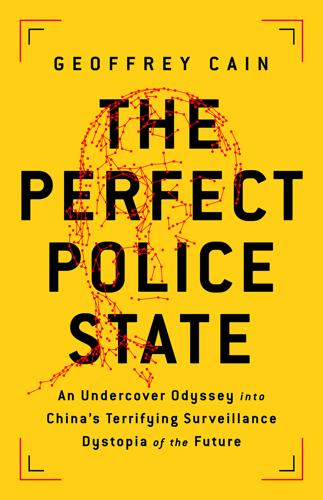
The Perfect Police State: An Undercover Odyssey Into China's Terrifying Surveillance Dystopia of the Future
by
Geoffrey Cain
Published 28 Jun 2021
With cameras, artificial intelligence, and facial and voice scanners, “you can turn your country into a panopticon.” “What’s a panopticon?” I asked. A panopticon is a prison set up in a circular format, in which a guard can see everything from a sentry post in the middle, but none of the prisoners can see the guard, Mansur replied. The panopticon is an effective tool for controlling people, since everyone thinks they are being watched but nobody knows when or where. They were pioneered by eighteenth-century British philosopher Jeremy Bentham, the man who influenced George Orwell. “And how does this play out now,” I asked, “out here in Xinjiang?”
…
ISBN 978-1-5417-5703-5 (hardcover); ISBN 978-1-5417-5701-1 (e-book) E3-20210528-JV-NF-ORI Contents Cover Title Page Copyright Dedication Note on Research and on Uyghur and Han Chinese Names Prologue: The Situation 1—The New Dominion 2—The Panopticon 3—Sky Net Has Found You 4—China Rises 5—Deep Neural Network 6—Do You Think I Am an Automaton? 7—The Great Rejuvenation 8—China’s War on Terror 9—The Three Evils: Terrorism, Extremism, and Separatism 10—People as Data 11—How to Rank Everyone on Their Trustworthiness 12—The All-Seeing Eye 13—Called to a Concentration Camp 14—Mass Internment 15—The Big Brain 16—The Bureaucracy Is Expanding to Meet the Needs of the Expanding Bureaucracy 17—The Prison of the Mind 18—A New Cold War? 19—The Great Rupture 20—You’re Not Safe Anywhere Coda: Stop the Panopticon Acknowledgments Discover More About the Author Notes Advance Praise for The Perfect Police State FOR MOM, WHO TAUGHT ME TO CARE ABOUT THE STATE OF THE WORLD Explore book giveaways, sneak peeks, deals, and more.
…
I stopped in Beijing for a few days, to debrief with people familiar with Xinjiang, and had dinner with an American diplomat. “Where are you going next?” she asked me. “Xinjiang,” I said. “For a project.” “Don’t go there!” she shrieked. “They’ll follow and detain you. You’re not going to be safe!” CHAPTER 2 The Panopticon The Panopticon is a marvelous machine which, whatever use one may wish to put it to, produces homogenous effects on power. —MICHEL FOUCAULT, Discipline and Punish: The Birth of the Prison I flew to Kashgar the next day, where I met my guide, Mansur. (I’ve changed his name for his protection.) Mansur was a warm and well-informed character whose wife had been summoned to hours-long patriotic classes almost every day for no clear reason at all.

Alone Together
by
Sherry Turkle
Published 11 Jan 2011
At a pre-awards cocktail party, one Web luminary spoke to me with animation about the wiretapping controversy. To my surprise, he cited Michel Foucault on the panopticon to explain why he was not worried about privacy on the Internet. For Foucault, the task of the modern state is to reduce its need for actual surveillance by creating a citizenry that will watch itself. A disciplined citizen minds the rules. Foucault wrote about Jeremy Bentham’s design for a panopticon because it captured how such a citizenry is shaped.13 In the panopticon, a wheel-like structure with an observer at its hub, one develops the sense of always being watched, whether or not the observer is actually present.
…
.: Artificial Intelligence (film) AIBO aggression toward categorizing gives way to everyday routines care by, fantasies of creature and machine, views of it as caring for companion, role as “feelings” attributed to “growing up,” appearance of playing with projection and teaching it, experience of Alcott, Louisa May Aldiss, Brian “Alive enough,” as milestone for digital creatures Aliveness, children’s theories of Alterity, robots and Alzheimer’s disease, and robotic companions America Online Anger, as way of relating to robots Anthropomorphism, robots and Anxiety, online life, as provoking “of always,” privacy and Apologies confessions and online Appiah, Kwame Anthony Apple Artificial intelligence (AI) limits in understanding Artificial Intelligence Laboratory (MIT) Artificial life Aryananda, Lijin Asperger’s syndrome, robots and Attention, children’s desire for continual partial Authenticity, robotic companionship and illusion of, in social network profiles online life and Autism, robots and “Avatar of me,” Facebook profile as Avatars building relationships among Babysitters consideration of robots as Baird, Freedom Beatles: Rock Band Behaviorism, of robotic moment Bell, Gordon Bentham, Jeremy Bio Bugs (toy), robots and BIT (Baby IT) BlackBerry and sense of control excluding others and turning off Blade Runner (film) Blogs and the loss of the particular Bohr, Niels Boundaries, sense of personal, technology and Breakups face-to-face online Breazeal, Cynthia Brooks, Rodney Buber, Martin Bullying, online Bush, Vannevar Caper, Robert Caretakers, ideas about robots as Caring for a robot performance of substitutes for “Caring machines,” development of Cell phones (smartphones) and autonomy, development of people as “pausable” and avoiding calls and demands of documenting life using sense of emergency and identity (as collaborative) and photographs and private time on, desire for safety (feeling of), and turning off Chat logs “Chat people,” Chat rooms Chatroulette, playing Chess, computers and Churchill, Winston Civilization (game) Coach, robot as Cog seeking “affection” from building demystifying of meeting relationships, range of, with talking to teaching Cold comforts, robots as source of Collaborative self Collection, recollection and Columbine Communication (digital) in abbreviations (emoticons) versus connection choice among genres and nostalgia for letters volume and velocity of and simplification of responses from substitution to preference for hiding as affordance of and “discontents,” Community confessional sites and seeking Companionship, confusions in digital culture Complicity, with robot Computer psychotherapy, attitudes toward Computers as evocative object holding power of as mechanical and spiritual (soul in the) subjective versus instrumental as caring machines and cyborg self Connectivity and global consciousness and new symptoms of connection/disconnection Confessional sites, online apologies and communities, contrast to critical comments about and discussion of abuse reading, experience of as symptoms and venting cruelty of strangers and Connections on backchannels during meetings communication versus constant disconnection and online power of stepping back from, desire to seductions of Connectivity anxiety worries of parents culture discontents of global reach of robots merged with Conversations beginning/ending face-to-face online private robots and text messages as Crocodiles, real and robotic Csíkszentmihalyi, Mihaly Cubism, as metaphor for simultaneous vision of robot as machine and creature Communications culture, digital characteristics of cyborg sensibility and “dumbing down,” (emotional) in “networked” sensibility, characteristics of Walden images in sacred spaces and Damasio, Antonio Darwin, Charles “Darwinian Buttons,” eye contact track motion gesture in encounter with Cog De Vaucanson, Jacques Dean, Howard Death, simulation and Deep Thought (computer program) Democracy, privacy and Dertouzos, Michael Dick, Philip K.
…
Foucault wrote about Jeremy Bentham’s design for a panopticon because it captured how such a citizenry is shaped.13 In the panopticon, a wheel-like structure with an observer at its hub, one develops the sense of always being watched, whether or not the observer is actually present. If the structure is a prison, inmates know that a guard can potentially always see them. In the end, the architecture encourages self-surveillance. 14 The panopticon serves as a metaphor for how, in the modern state, every citizen becomes his or her own policeman. Force becomes unnecessary because the state creates its own obedient citizenry. Always available for scrutiny, all turn their eyes on themselves. By analogy, said my Webby conversation partner, on the Internet, someone might always be watching, so it doesn’t matter if, from time to time, someone actually is.

Smart Cities: Big Data, Civic Hackers, and the Quest for a New Utopia
by
Anthony M. Townsend
Published 29 Sep 2013
Layered atop the fragile power grid, already prone to overload during crises and open to sabotage, the communications networks that patch the smart city together are as brittle an infrastructure as we’ve ever had. Before it ever comes close to collapse, we might tear down the walls of the smart city ourselves, for they will be the ultimate setup for surveillance. Will smart cities become the digital analogue of the Panopticon, Jeremy Bentham’s 1791 prison design, where the presence of an unseen watcher kept order more effectively than the strongest bars?36 In the 1990s, the Surveillance Camera Players staged sidewalk performances at camera locations in New York City to protest the rapid spread of video monitoring in public spaces.
…
Country: Tom Peters & George Gilder debate the impact of technology on location,” Forbes ASAP, February 27, 1995, http://business.highbeam.com/392705/article-1G1-16514107/city-vs-country-tom-peters-george-gilder-debate-impact. 26David McCandless, “Financial Times Graphic World,” display at Grand Central Station, New York, March 27–29, 2012. 27Robert Caro, The Power Broker: Robert Moses and the Fall of New York (New York: Vintage, 1975), 849. 28Caro, The Power Broker, 508. 29“Global Investment in Smart City Technology Infrastructure to Total $108 Billion by 2020,” Pike Research, last modified May 23, 2011, http://www.pikeresearch.com/newsroom/global-investment-in-smart-city-technology-infrastructure-to-total-108-billion-by-2020. 30Daniel Fisher, “Urban Outfitter,” Forbes, May 9, 2011, 92. 31Sascha Haselmeyer, lecture, INTA33 World Urban Development Congress, Kaoshiung, Taiwan, October 5, 2009. 32“The Explosive Growth of Bus Rapid Transit,” The Dirt, blog, American Society of Landscape Architects, last modified January 27, 2011, http://dirt.asla.org/2011/01/27/the-explosive-growth-of-bus-rapid-transit/. 33Peter Jamison, “BART Jams Cell Phone Service to Shut Down Protests,” SF Weekly: The Snitch, blog, August 12, 201, http://blogs.sfweekly.com/thesnitch/2011/08/bart_cell_phones.php; BlackBerry: Josh Halliday, “David Cameron considers banning suspected rioters from social media,” The Guardian, August 11, 2011, http://www.guardian.co.uk/media/2011/aug/11/david-cameron-rioters-social-media; social media: Chris Hogg, “In wake of London riots, UK considers social media bans,” Future of Media, blog, http://www.futureofmediaevents.com/2011/08/11/in-wake-of-london-riots-uk-considers-social-media-bans/#ixzz24xS7KHKP. 34Solomon Benjamin et al., “Bhoomi: ‘E-Governance,’ Or, An Anti-Politics Machine Necessary to Globalize Bangalore?” CASUM-m, Bangalore, India, January 2007, http://casumm.files.wordpress.com/2008/09/bhoomi-e-governance.pdf. 35Kevin Donovan, “Seeing Like a Slum: Towards Open, Deliberative Development,” Georgetown Journal of International Affairs 13, no. 1 (2012): 97. 36Jeremy Bentham. The Panopticon Writings (London: Verso, 1995), 29–95. 37Farah Mohamed, “Sen. Franken on facial recognition and Facebook,” Planet Washington, last modified July 18, 2012, http://blogs.mcclatchydc.com/washington/2012/07/sen-franken-on-facial-recognition-adnd-facebook.html. 38Adam Harvey, CV Dazzle, n.d., accessed August 26, 2012, http://cvdazzle.com. 39Jane Jacobs, The Death and Life of Great American Cities (New York: Random House, 1961), 238. 40Walter Lippmann, New York Herald Tribune, June 6, 1939, quoted in Robert W.
…
Index Access Together, 166 Accountability Department, U.S., 265 ACM Queue, 266 Adams, Sam, 83 Aerotropolis (Kasarda and Lindsay), 24 Agent.btz, 269 Airbnb, 163 air-conditioning, early solutions for, 19–20 air defense, computer systems for, 63 Air Force, U.S., 63, 259 “air-gapping,” 269 AirPort, 128 air transportation, 63 digital technology in, 32–33 Albritton, Dan, 301–2 Alexander, Christopher, 142–44, 285–86 Alfeld, Louis Edward, 81–82, 86 Allan, Alasdair, 271 Altair, MITS, 153 Altman, Anne, 65 Amar, Georges, 106, 133 Amazon Web Services, 263–64 American Airlines, 63–64 American Express, 62 Amin, Massoud, 35 Amsterdam, 279 analog cellular, 53 Angelini, Alessandro, 91–92 Ansari X PRIZE, 202–3 API (application program interface), 150 Apple, 49, 128, 148, 271 Siri of, 233 apps, 121–26, 144–52, 183, 213, 235 to address urban problems, 156–59 badges for, 148 contests for, 156, 200–205, 212, 215, 225, 227–30 for navigation of disabled, 166 situated software as, 232–36 “Trees Near You” as, 201–2 variety of, 6 Apps for Democracy, 156, 200–201, 203 Arab Spring, social media in, 11–12 Arbon, 37 Arcaute, Elsa, 313–14 Archibald, Rae, 80 Archigram, 20–21 Architectural Association (London), 20 Architectural Forum, 142 Architecture Without Architects (Rudofsky), 111–12 Arduino, 137–41 ARPA (Advanced Research Projects Agency), 259 ARPANET, 111, 259–60, 269 ArrivalStar, 293 Arup, 32 Ashlock, Philip, 158–59 Asimov, Isaac, 73–75, 88 Association for Computing Machinery, 260 Astando, 244 AT&T, 35–37, 51–52, 111, 260, 272 dial-up Internet service at, 36 Atlanta, Ga., 66 Atlantic, The, 75 AutoCAD, 302 AutoDesk, 302 automobile, as new technology, 7 Ayers, Charlie, 252 Babajob, 178–79 “Baby Bells,” 195 Baltimore, Md., 211 Banavar, Guru, 66–67, 69, 90, 306 Bangalore, 66, 178–79 Cisco’s smart city engineering group at, 45 as fast-growing city, 13 Ban Ki-moon, 181–82 Banzi, Massimo, 137 Baran, Paul, 259–60 Barcelona, 10, 246–47 destruction of wall of, 43 Barragán, Hernando, 137 Barry, Marion, 199 Batty, Michael, 85–87, 295–97, 313, 315–16 Becker, Gene, 112–13 Beijing, 49, 273–74 Belloch, Juan Alberto, 223 Beniger, James, 42–43 Bentham, Jeremy, prison design of, 13 Berlin, 38 Bernstein, Phil, 302 Bettencourt, Luis, 312–13 Betty, Garry, 196 Bhoomi, 12–13 big data, 29, 87, 191, 292–93, 297, 305–6, 316, 319 “Big Ideas from Small Places” (Khanna and Skilling), 224 BlackBerry Messenger, riots coordinated via, 12 blogosphere, 155 Bloomberg, Michael, 147, 205–6, 304 Boing-Boing, 156 Booz Allen Hamilton, 30 Bosack, Len, 44 Boston, Mass., 212–17, 239–41, 306–7 “Adopt-A-Hydrant” in, 213 Discover BPS, 240–42 Office of New Urban Mechanics in, 213–16 “What Are My Schools?”
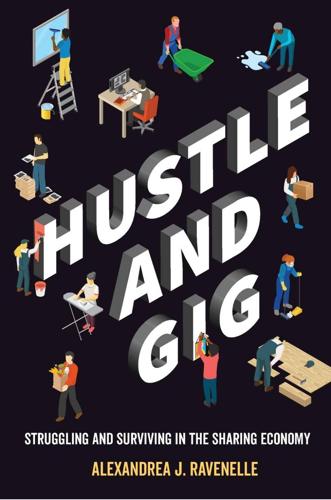
Hustle and Gig: Struggling and Surviving in the Sharing Economy
by
Alexandrea J. Ravenelle
Published 12 Mar 2019
The gig economy promises flexibility and more free time, yet workers are increasingly tethered to work because of the on-demand nature of the work. The work is seemingly flexible, but it doesn’t end. And while the workers are “self-employed” contractors and don’t answer to bosses, they remain under constant observation through a technological panopticon. But unlike Bentham’s original prison model, where prisoners cannot see the watchers and never know when they are being watched, in the gig economy everything can be collected and viewed at any point. Chat logs in TaskRabbit, emails in Airbnb, travel locations for Uber—all of this is collected and can be viewed by the platform administrators.
…
See also urination issues Beck, Jessica, 187–88 Becker, Ben, 174–75 benefits: access to, 189; guilds and, 71–72; portable benefits plan, 201–2, 203; productivity and, 190; provision of, 23; temporary workers lack of, 180; two-tier systems of, 94; unemployment benefits, 94, 177, 187; unionization and, 71, 177–78; vacation time, 177 Bentham, Jeremy, 15 Bergman, Barbara, 119 bidding marketplace model, 1, 55, 56, 79, 137–38 Black Car Fund fees, 76 black car services, 27, 49–50, 51, 76, 133, 223n75, 227n30 booking fees, 74–75 Boott Cotton Mills Museum, 67 breaks: in early-industrial system, 67, 87; lack of, 87–88, 90–91; monitoring and, 179; requests for, 90–91, 121.
…
Furthermore, the crowdsourced nature of peer review allows for constant evaluation. While not every client gives a rating score or completes a peer review, workers don’t know in advance who will or won’t. This leads to internal monitoring as workers know that they must perform satisfactorily or risk a negative review or low rating. The technological panopticon has been outsourced. While ratings and reviews are marketed as a way to build trust and reduce the unknown for customers, such marketing is fallacious. Platform staff don’t examine the reviews to provide one-on-one feedback to workers or to implement additional training procedures. Instead, the rankings allow platforms to screen and evaluate workers en masse.
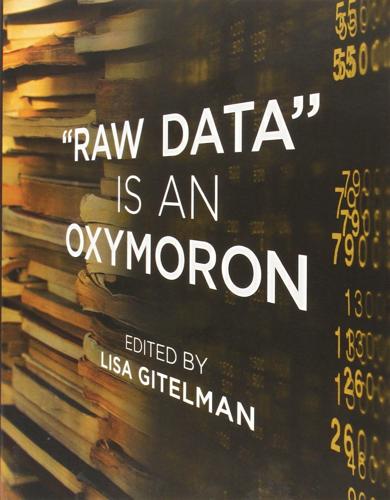
Raw Data Is an Oxymoron
by
Lisa Gitelman
Published 25 Jan 2013
Environmental Protection Agency (EPA), 159 Value, 61, 67, 69, 123, 127, 132, 133, 136, 153 Verizon, 128 Webster, Frank, 126 Weld, Angelina Grimké, 10, 89–99 Weld, Theodore, 89, 91–92, 98–99 White, Hayden, 3 White Noise, 121, 128 Wikileaks, 91 Williams, Raymond, 50–51 WorldCat, 35 Xenophon, 79 Yes Men, 135 Zimmermann, Johann Georg, 104 Color Plates Daniel Rosenberg, Ann Fabian, Thomas Augst, Jimena Canales, Lisa Lynch, Lisa Gitelman, Paul E. Ceruzzi, Lev Manovich, Jeremy Douglass, William Huber, and Vikas Mouli 1 Color Plates Chart of Biography (1765) The notion that human affairs may be studied through quantitative mechanisms was significantly advanced both in practice and theory during the seventeenth and eighteenth centuries. Theorists and philosophers from William Petty to Jeremy Bentham promoted the power of quantitative research into social and psychological phenomena, while the application of quantitative methods spread by imitation among many domains of research.
…
Data cannot “spoil” because it is now speculatively, rather than statistically, calculated.12 The name for the disciplinary and control practice of monitoring, aggregating, and sorting data is dataveillance, named as such by Roger Clarke, who suggested nearly twenty-five years ago that it was then “technically and economically superior” to the two-way televisual media of George Orwell’s fictional universe.13 It is such because dataveillance operations do not require a centralized system, provided a set of different databases are networked and provided that they share the same means of establishing individual identification, so that a single unit (an individual or number) can be identified consistently across a range of data sets with a primary key. Dataveillance is not new to information technologies and certainly one could construct a genealogy of biopolitical management that would include paper-based techniques such as the U.S. census. Indeed, in an early commentary on the “electronic panopticon,” David Lyon suggests that the difference made by information technologies is one of degree not kind, that they simply “make more efficient, more widespread, and simultaneously less visible many processes that already occur.”14 However, one could argue that there have been qualitative as well as quantitative shifts in dataveillance practices in the last decade, or, more precisely, that an intensification of quantitative differences allows for the articulation of qualitative difference.
…
Thomas Pynchon, Gravity’s Rainbow (New York: Penguin Books, [1973] 1995), 703. 39. See Irving Goh, “Prolegomenon to a Right to Disappear,” Cultural Politics 2, no. 1 (March 2006): 97–114. 40. Critical Art Ensemble, Electronic Disturbance, 135. 41. Howard Rheingold and Eric Kluitenberg, “Mindful Disconnection: Counterpowering the Panopticon from the Inside,” OPEN 11 Hybrid Space (Amsterdam: NAi Publishers, 2007), 32. 42. Mayer-Schönberger, Delete, 129. 43. Critical Art Ensemble, Electronic Disturbance, 132. 44. Rubinstein, Lee, and Schwartz, “Data Mining and Internet Profiling,” 277. It is not uncommon to hear this argument made with respect to social media; in other words, if everyone’s intimate details are available, we are essentially hidden in plain sight. 143 144 Rita Raley 45.

Your Face Belongs to Us: A Secretive Startup's Quest to End Privacy as We Know It
by
Kashmir Hill
Published 19 Sep 2023
The Chinese government had also started collecting DNA and tracking phones, layering multiple systems in an attempt to create an all-seeing eye on its population of 1.4 billion people. The government uses this eye for intimidation as well as monitoring, in a high-tech realization of the Panopticon envisioned by the eighteenth-century English philosopher Jeremy Bentham. The Panopticon was a prison in which inmates were always observable but didn’t know whether the guards were actually watching them. Even the illusion of constant surveillance, Bentham theorized, would force them to behave. All of this might seem like the stuff of horror novels, but for China, said Mozur, there was a utopian vision built into the surveillance, of a safer, more orderly society.
…
A B C D E F G H I J K L M N O P Q R S T U V W X Y Z A Abrams, Dan, 210 Abrams, Floyd, 205–207, 208–211, 212 ACLU (American Civil Liberties Union) Abrams case and, 205, 208–209, 211–213 Facebook and, 143 Ferg-Cadima and, 82–83, 85, 87 opposition from, 62, 65, 202–204 Project on Speech, Privacy, and Technology and, 202 Rekognition and, 137–138, 162 Williams and, 182 Acquisti, Alessandro, 106, 107–108, 109, 110, 126, 143 Afghanistan, war in, 154 age accuracy of detecting, 124 differences in facial recognition and, 70 Aguilar, Armando, 230–231, 233, 234, 235 Aibo, 151 Airbnb Alströmer and, 10 sex workers and, 199 Ton-That and, 5 Ake, David, 269n42 Alamy, 192 algorithmic bias, 178 Ali, Alaa, 171–174 All Things Digital, 102 Alphabet, 151 al-Qaeda, 64 Alströmer, Gustaf, 10 alt-right Smartcheckr and, 93, 94 Ton-That and, 9 Amazon Floyd and, 239 Rekognition and, 116, 137–138, 162, 238 Amendments First, 15, 206–207, 208–209, 212–213, 306n206 Fourth, 141 American Civil Liberties Union (ACLU) Abrams case and, 205, 208–209, 211–213 Facebook and, 143 Ferg-Cadima and, 82–83, 85, 87 opposition from, 62, 65, 202–204 Project on Speech, Privacy, and Technology and, 202 Rekognition and, 137–138, 162 Williams and, 182 American Sociological Society, 23 Ancestry, 248 Android tracking and, 141 unlocking and, 109, 142, 179 AngelList, 8, 81 Annan, Kofi, 104 anonymity, protections afforded with, 40 anticheating vigilantes, 33 antidiscrimination laws, 188 Antifascist Coalition, 54–55 antihacking laws, 117 anti-Semitism, 94 anti-wiretapping laws, 238 AOL, 150 Apple Clearview AI and, 165 Franken and, 141 iPhone and, 6, 9 Leyvand and, 152 phone locks and, ix Polar Rose and, 108 Arbitron, 46, 109, 270–271n44 Aristotle, 17 Armey, Dick, 62, 63–64, 65–66 Art Selfie app, 151 artificial intelligence, early efforts regarding, 36–37 arXiv.org, 72–73 Ashley Madison, 33, 201 Aspire Mirror, 156 Assange, Julian, 106 AT&T, 150 atavism, 23 Atick, Joseph, 63–64, 65, 66, 68–69, 71 Atkinson, Benjamin, 301n175 Atlanta Police Department, 157–159, 160 atomic bomb, 48 augmented reality, 164, 243, 244, 249 Australian Federal Police, 136 automated pattern recognition, early work in, 37 automatic target recognition, 43 Autonomous Land Vehicle (“Alvin”), 42, 43, 44 “average face,” 48 B background photo searches, 247 backpropagation, 147 Baidu, neural networks technology and, 74 “Ban Facial Recognition” campaign, 238 Bannon, Steve, 56 bans on face surveillance, 138 bathrooms, 224 Bayesian image processing, 104 Bazile, Pawl, 272n50 Beagle, HMS, 18 Bear Stearns, 111 Bedoya, Alvaro congressional work of, 140–144, 146, 148–151 at FTC, 240–241 at Georgetown, 151, 156 Been Verified, 58 Bell Labs, 37 Bentham, Jeremy, 226 Bernstein, Daniel, 306n206 Bernstein v. Department of Justice, 306n206 Bertillon, Alphonse, 21–22, 38 Besson, Greg, 128–129, 132 Betaworks, 112 Bezos, Jeff, 115–116 bias algorithmic, 178 confirmation, 181 racial, 156, 178–179 testing and, 178, 179–180, 240 Biden, Jill, 280–281n79 Biden, Joe, 228, 280–281n79 Big Brother Watch, 215 Biometric Information Privacy Act (BIPA; Illinois) Clearview AI and, 158, 204, 205, 206, 213 lawsuits filed under, 151–152 passage of, 86 SceneTap and, 122 biometrics.
…
The RTCC detective called the officer back to tell him that the SUV driver was responsible for the crash. The surveillance state in Miami was incomplete, the cameras scattered and unreliable. It was not an all-seeing eye but a blinking, blurry one. To the extent that Miami represents what is happening in the greater United States, we have only the rickety scaffolding of the Panopticon; it is not yet fully constructed. We still have time to decide whether or not we actually want to build it. Skip Notes *1 The FBI did not officially have access to Clearview at that point, waiting until December 2021 to sign an $18,000 contract with the company. *2 The thin blue line is a symbol for police of what they do: holding the line so that society doesn’t descend into chaos and mayhem.

Consumed: How Markets Corrupt Children, Infantilize Adults, and Swallow Citizens Whole
by
Benjamin R. Barber
Published 1 Jan 2007
Similarly, in that famous commentary in which he at once praised and warned against the ambiguous potential of democracy in America, Tocqueville had proposed that, in the new dictatorship of public opinion, “tyranny leaves the body free and directs its attack at the soul.”2 In the same Rousseauist vein, Foucault would later argue that in modern times power had come to work “without recourse, in principle at least, to excess, force or violence.”3 Citing such liberal and liberating institutional devices as the prison “panopticon” propounded by liberal philosopher Jeremy Bentham (a circular prison floor plan that allowed prisoners to come under the full-time surveillance of omnipresent guardians stationed at the circle’s center, without entailing any physical encroachment on prisoner space), Foucault discerned a new form of liberal coercion which “assures the automatic functioning of power…so the perfection of power should tend to render its actual exercise unnecessary.”
…
Traditional ethics (in Aristotle, Augustine, or Kant, for example) distinguished higher and lower forms of pleasure and presumed that what gave pleasure might not always be identical with what was good. But modern ethical utilitarianism of the kind found in philosophers like David Hume and Jeremy Bentham tried to subordinate “the good” to what was merely pleasurable and then to simplify and reduce pleasure to elementary physical stimulation. It made no distinctions between kinds of pleasure (or pain), assuming that happiness depended merely on maximizing elementary pleasure and minimizing elementary pain for the greatest number of people. This permitted Bentham at the beginning of the nineteenth century to offer a useful if simplistic “felicific calculus” that associated all human behavior and all human ethics with simple, easy-to-measure indicators of elementary pleasure and pain.
…
How certain was its realization? But this meant the child’s easy pleasure (to take a Freudian example) in playing with his own excrement was simply another (largely indistinguishable) example of the kind of reductive pleasure an adult might find in playing the flute in an Afro-Caribbean rock band. Jeremy Bentham’s own student John Stuart Mill rebelled against such simplifications and insisted that pleasures had to be qualified, that there were kinds of pleasure, some worth more than others, some easy, others harder, some simple, others more complex, some childish, one might say, and some more grown-up.

Billionaires' Row: Tycoons, High Rollers, and the Epic Race to Build the World's Most Exclusive Skyscrapers
by
Katherine Clarke
Published 13 Jun 2023
* * * — IN THE COURSE of the reporting for this book, I spoke with a source who invoked the work of Michel Foucault, a French philosopher whose writings about power and social control I had studied only briefly as an undergraduate. In his book Discipline and Punish: The Birth of the Prison, first published in 1975, Foucault focused his attention on the panopticon, a type of institutional building, or prison, designed in the eighteenth century by the English philosopher Jeremy Bentham. The concept of the panopticon was interesting to Foucault because its very design acted as a system of control. A single ring-shaped building would be divided into separate cells visible from a watchtower in the center. While the occupants of the cells would be visible to the occupant of the watchtower, shutters on the watchtower ensured that its occupant would never be visible to the occupants of the cells.
…
See also Central Park Tower; One57 Aabar and, 51 Ackman and, 98 assemblage process and, 61–65 background of buildings’ residents and, 250–51 basic facts about, xviii, 49–50, 55–57, 61 cantilever design of Central Park Tower and, 195 characteristics of, 298 COVID-19 and, 312 on demand at super high end of market, 197 financing of One57, 51–53, 54 on lack of sales at Central Park Tower, 301 Low and, 256 on lower purchase prices (2021), 339 Maloney and, 169 One57 rental units sales by, 260 plans for One57 of, 82–83 potential purchasers and, 97 profits from Central Park Tower, 340, 348 Riverside Boulevard building, 145 Roth and, 133–37, 201, 209, 210 sales and, 141–42 supertalls forum panel, 149–50 as symbol of Billionaires’ Row, 145, 150–51, 175 217 West 57th Street assemblage, 133 220 Central Park South and, 133–37 Zuckerman and, 153–54 Barron, Vickey, 250 Bauhaus Group, 296 Baupost Group, 273–76, 317 Becker, Arthur basic facts about, 179–80 Bianco and, 275, 276 Saudi billionaires and, 187 Spruce deal and, 280 Steinway Hall and, 181 Belnord, 56–57 Benchetrit, Gaëlle Pereira, 327 Benchetrit, Yossi, 327 Bentham, Jeremy, xiii Berkey, David, 257 Bernstein, Leonard, 31 Bezos, Jeff, 119 Bhatti, Masood, 178 Bianco, Richard basic facts about, 178–79 Baupost loan and, 274–78 lawsuit against Stern and Maloney, 223–25, 275, 278–80, 332, 349, 350 Saudi billionaires and, 187 Walker Tower project and, 221 Bibliowicz, Jessica, 88 Bibliowicz, Natan, 88 Biden, Joseph R., 315, 337 Biel Crystal Manufactory, 266 “the billionaire building.”
…
While the occupants of the cells would be visible to the occupant of the watchtower, shutters on the watchtower ensured that its occupant would never be visible to the occupants of the cells. The design allowed a single security guard to observe all of a prison’s inmates without the inmates’ being able to tell whether they were being watched. The principle of the panopticon was that power should be always visible but never verifiable. I thought of the panopticon recently when I made a return visit to 432 Park Avenue. If you have ever walked past the entrance to the dramatic condominium building on East 56th Street hoping to catch a glimpse of one of its well-heeled occupants, you will know how slim is your likelihood of success.

Exponential: How Accelerating Technology Is Leaving Us Behind and What to Do About It
by
Azeem Azhar
Published 6 Sep 2021
And the same technologies that enable remote work – from a beach, a mountain or by a lake – can also be turned against employees. Many readers might be familiar with the ‘panopticon’. Imagined by the early-nineteenth-century philosopher Jeremy Bentham, the panopticon is a type of prison in which every prisoner is constantly visible from a guard tower in the middle of the complex. In such an institution, prisoners never know if they are being watched – because they could be under surveillance at any time. And so, the theory goes, their good behaviour is guaranteed. Today’s workplace devices are a little like an inescapable digital panopticon. Because every instant message, every email and every document update is logged, you never know when you are being watched.
…
Abu Dhabi, UAE, 250 Acemoglu, Daron, 139 Acorn Computers, 16, 21 Ada Lovelace Institute, 8 additive manufacturing, 43–4, 46, 48, 88, 166, 169, 175–9 Adidas, 176 advertising, 94, 112–13, 116, 117, 227–8 AdWords, 227 aeroponics, 171 Afghanistan, 38, 205 Africa, 177–8, 182–3 Aftenposten, 216 Age of Spiritual Machines, The (Kurzweil), 77 agglomeration, 181 Air Jordan sneakers, 102 Airbnb, 102, 188 aircraft, 49–50 Alexandria, Egypt, 180 AlexNet, 33 Algeciras, HMM 61 Alibaba, 48, 102, 108, 111, 122 Alipay, 111 Allen, Robert, 80 Alphabet, 65, 113–14, 131, 163 aluminium, 170 Amazon, 65, 67–8, 94, 104, 108, 112, 122, 135–6 Alexa, 25, 117 automation, 135–6, 137, 139, 154 collective bargaining and, 163 Covid-19 pandemic (2020–21), 135–6 drone sales, 206 Ecobee and, 117 Go stores, 136 Kiva Systems acquisition (2012), 136 management, 154 Mechanical Turk, 142–3, 144, 145 monopoly, 115, 117, 122 Prime, 136, 154 R&D, 67–8, 113 Ami Pro, 99 Amiga, 16 Anarkali, Lahore, 102 anchoring bias, 74 Android, 85, 94, 117, 120 Angola, 186 Ant Brain, 111 Ant Financial, 111–12 antitrust laws, 114, 119–20 Apache HTTP Server, 242 Appelbaum, Binyamin, 63 Apple, 47, 62, 65, 85, 94, 104, 108, 112, 122 App Store, 105, 112, 115 chip production, 113 Covid-19 pandemic (2019–21), 222–3 data collection, 228 iOS, 85 iPhone, 47, 62, 85, 94, 105 media subscription, 112 watches, 112 APT33 hacker group, 198 Aral, Sinan, 238 Aramco, 108, 198 Armenia, 206–7 Arthur, William Brian, 110, 123 artificial intelligence, 4, 8, 31–4, 54, 88, 113, 249 academic brain drain, 118 automation, 125–42 data and, 31–2, 142 data network effect, 106–7 drone technology and, 208, 214 education and, 88 employment and, 126–7 healthcare and, 88, 103 job interviews and, 153 regulation of, 187, 188 arXiv, 59 Asana, 151 Asian Development Bank, 193 Aslam, Yaseen, 148 Assembly Bill 5 (California, 2019), 148 asymmetric conflict, 206 AT&T, 76, 100 Atari, 16 attack surfaces, 192–3, 196, 209, 210 Aurora, 141 Australia, 102, 197 automation, 125–42 autonomous weapons, 208, 214 Azerbaijan, 173, 206–7 Ballmer, Steve, 85 Bangladesh, 175 banking, 122, 237 Barcelona, Catalonia, 188 Barlow, John Perry, 184 Barrons, Richard, 195, 211 Bartlett, Albert, 73 batteries, 40, 51, 53–4, 250, 251 Battle of the Overpass (1937), 162 Bayraktar TB2 drone, 206 Bee Gees, 72 Bekar, Clifford, 45 Bell Labs, 18 Bell Telephone Company, 100 Benioff, Marc, 108–9 Bentham, Jeremy, 152 Berlin Wall, fall of (1989), 4 Bermuda, 119 Berners-Lee, Timothy, 55, 100, 160, 239 Bessen, James, 46 Bezos, Jeffrey, 135–6 BGI, 41 Biden, Joseph, 225 Bing, 107 biological weapons, 207, 213 biology, 10, 39, 40–42, 44, 46 genome sequencing, 40–41, 90, 229, 234, 245–7, 250, 252 synthetic biology, 42, 46, 69, 174, 245, 250 biopolymers, 42 bits, 18 Black Death (1346–53), 12 BlackBerry, 120 Blair, Tony, 81 Bletchley Park, Buckinghamshire, 22 blitzscaling, 110 Blockbuster, 138 BMW, 177 Boeing, 51, 236 Bol.com, 103 Bollywood, 181 Boole, George, 18 Bork, Robert, 114–15, 117, 119 Bosworth, Andrew, 233 Boyer, Pascal, 75 Boyle, James, 234 BP, 92, 158 brain, 77 Braudel, Fernand, 75 Brave, 242 Brazil, 202 Bremmer, Ian, 187 Bretton Woods Conference (1944), 87 Brexit (2016–20), 6, 168 British Broadcasting Corporation (BBC), 87, 129, 191 Brookings Institution, 130 BT, 123 Bulgaria, 145 Bundy, Willard Legrand, 149 Busan, South Korea, 56 business, 82, 92–124 diminishing returns to scale, 93, 108 economic dynamism and, 117 economies of scale, 50, 92 growth, 110–13 increasing returns to scale, 108–10 intangible economy, 104–7, 118, 156, 175, 180 linear value chains, 101 market share, 93–6, 111 monopolies, 10, 71, 94, 95, 114–24 network effect, 96–101 platform model, 101–3, 219 re-localisation, 11, 166–79, 187, 252, 255 state-sized companies, 11, 67 superstar companies, 10, 94–6 supply chains, 61–2, 166–7, 169, 175, 187, 252, 255 taxation of, 96, 118–19 Butler, Nick, 179 ByteDance, 28 C40 initiative, 189 Cambridge University, 127, 188 cancer, 57–8, 127 Capitol building storming (2021), 225 car industry, 93 carbon emissions, 35, 90, 251 Carlaw, Kenneth, 45 Carnegie, Andrew, 112 Carnegie Mellon University, 131 Catholic Church, 83, 88 censorship, 216–17, 224–6, 236 Central Intelligence Agency (CIA), 194 Cerebras, 34 cervical smears, 57–8 chemical weapons, 207, 213 Chen, Brian, 228 chewing gum, 78 Chicago Pile-1 reactor, 64 Chile, 170 China automation in, 127, 137 brainwave reading in, 152 Covid-19 pandemic (2019–21), 245 drone technology in, 207 Great Firewall, 186, 201 Greater Bay Area, 182 horizontal expansion in, 111–12 manufacturing in, 176 misinformation campaigns, 203 raw materials, demand for, 178 Singles’ Day, 48 social credit systems, 230 superstar companies in, 95 US, relations with, 166 chips, 19–22, 28–9, 48–9, 52, 113, 251 Christchurch massacre (2019), 236 Christensen, Clayton, 24 CIPD, 153 cities, 11, 75, 169, 179–84, 188, 255 Clegg, Nick, 225–6, 235 climate change, 90, 169, 187, 189, 251, 252 cloud computing, 85, 112 Cloudflare, 200 cluster bombs, 213 CNN, 185, 190 coal, 40, 65, 172 Coase, Ronald, 92 Coca-Cola, 93 code is law, 220–22, 235 cold fusion, 113–14 Cold War (1947–91), 194, 212, 213 collective bargaining, 147, 149, 154, 156, 162–5 Colombia, 145 colonialism, 167 Columbus, Christopher, 4 combination, 53–7 Comical Ali, 201 commons, 234–5, 241–3, 256 companies, see business comparative advantage, 170 complex systems, 2 compounding, 22–3, 28 CompuServe, 100 computing, 4, 10, 15–36, 44, 46, 249 artificial intelligence, 4, 8, 31–4, 54, 88 cloud computing, 85, 112 internet, 47–8, 55, 65, 84 Law of Accelerating Returns, 30–31, 33, 35 machining, 43 Moore’s Law, see Moore’s Law quantum computing, 35 transistors, 18–22, 28–9, 48–9, 52 conflict, 87, 189, 190–215 attack surfaces, 192–3, 196, 209, 210 cyberattacks, 11, 114, 140, 181, 187, 190–200, 209–14, 256 de-escalation, 212–13 drone technology, 11, 192, 204–9, 214, 256 institutional change and, 87 misinformation, 11, 191, 192, 200–204, 209, 212, 217, 225 new wars, 194 non-proliferation, 213–14 re-localisation and, 189, 193, 194, 209 consent of the networked, 223 Costco, 67 Coursera, 58 Covid-19 pandemic (2019–21), 12–13, 59, 78–9, 131, 245–9 automation and, 127, 135, 136 cities and, 183 contact-tracing apps, 222–3 gig economy and, 146 lockdowns, 12, 152, 176, 183, 246 manufacturing and, 176 misinformation and, 202–4, 247–8 preprint servers and, 60 recession (2020–21), 178 remote working and, 146, 151, 153 supply chains and, 169, 246 vaccines, 12, 202, 211, 245–7 workplace cultures and, 151, 152 cranks, 54 credit ratings, 162, 229 critical thinking skills, 212 Croatia, 145 Crocker, David, 55 crowdsourcing, 143–4 Cuba, 203 Cuban missile crisis (1962), 99, 212 cultural lag, 85 cyberattacks, 11, 114, 140, 181, 187, 190–200, 209–14, 256 CyberPeace Institute, 214 Daniel, Simon, 173–4 Dar es Salaam, Tanzania, 183 Darktrace, 197 data, 8, 11, 71, 217–19, 226–31, 235, 237–42, 256 AI and, 8, 32, 33, 58, 106 compensation for, 239 commons, 242 cyberattacks and, 196 doppelgängers, 219, 226, 228, 239 interoperability and, 237–9 network effects, 106–7, 111 protection laws, 186, 226 rights, 240 Daugherty, Paul, 141 DDT (dichlorodiphenyltrichloroe thane), 253 death benefits, 151 Dediu, Horace, 24, 30 deep learning, 32–4, 54, 58, 127 deforestation, 251 dehumanisation, 71, 154, 158 deindustrialisation, 168 Deliveroo, 154, 163 Delphi, 100 dematerialised techniques, 166, 175 Denmark, 58, 160, 199–200, 257 Deutsche Bank, 130 Diamandis, Peter, 5 Dickens, Charles, 80 digital cameras, 83–4 Digital Geneva Convention, 211 Digital Markets Act (EU, 2020), 122 digital minilateralism, 188 Digital Nations group, 188 Digital Services Act (EU, 2020), 123 diminishing returns, 93, 108 disinformation, see misinformation DoorDash, 147, 148, 248 dot-com bubble (1995–2000), 8, 108, 150 Double Irish tax loophole, 119 DoubleClick, 117 drone technology, 11, 192, 204–9, 214, 256 Dubai, UAE, 43 Duke University, 234 dystopia, 208, 230, 253 Eagan, Nicole, 197 eBay, 98, 121 Ecobee, 120 economies of scale, 50, 92 Economist, The, 8, 65, 119, 183, 239 economists, 63 Edelman, 3 education artificial intelligence and, 88 media literacy, 211–12 Egypt, 145, 186 Elance, 144 electric cars, 51, 69, 75, 173–4, 177, 250 electricity, 26, 45, 46, 54, 157, 249–50 see also energy Electronic Frontier Foundation, 184 email, 6, 55 embodied institutions, 82 employment, 10, 71, 125–65 automation, 125–42 collective bargaining, 147, 149, 154, 156, 162–5 dehumanisation and, 71, 154, 158 flexicurity, 160–61, 257 gig economy, 10, 71, 142–9, 153, 162, 164, 239, 252, 255 income inequality, 155–8, 161, 168 lump of labour fallacy, 139 management, 149–54, 158–9 protections, 85–6, 147–9 reskilling, 159–60 universal basic income (UBI), 160, 189 Enclosure, 234–5, 241 energy, 11, 37–8, 39–40, 44, 46, 172–4, 250 cold fusion, 113–14 fossil fuels, 40, 159, 172, 250 gravitational potential, 53 solar power, 37–8, 53, 65, 77, 82, 90, 171, 172, 173, 249, 250, 251 storage, 40, 53, 114, 173–4, 250, 251 wind power, 39–40, 52 Energy Vault, 53–4, 173 Engels, Friedrich, 81 Engels’ pause, 80, 81 environmental movement, 73 Epic Games, 116 estate agents, 100 Estonia, 188, 190–91, 200, 211 Etzion Airbase, Sinai Peninsula, 195 European Commission, 116, 122, 123 European Space Agency, 56 European Union, 6, 82, 147, 186, 226 Excel, 99 exogeny, 2 exponential gap, 9, 10, 67–91, 70, 89, 253 cyber security and, 193 institutions and, 9, 10, 79–88, 90 mathematical understanding and, 71–5 predictions and, 75–9 price declines and, 68–9 superstar companies and, 10, 94–124 exponential growth bias, 73 Exponential View, 8–9 externalities, 97 extremism, 232–4 ExxonMobil, 65, 92 Facebook, 27, 28, 65, 94, 104, 108, 122, 216–17, 218, 219, 221–2, 223 advertising business, 94, 228 censorship on, 216–17, 224–6, 236 collective bargaining and, 164 data collection on, 228, 239–40 extremism and, 233–4 Instagram acquisition (2012), 117, 120 integrity teams, 234 interoperability, 237–8 Kenosha unrest shooting (2020), 224 misinformation on, 201, 225 network effect and, 98, 223 Oculus acquisition (2014), 117 pay at, 156–7 Phan photo controversy (2016), 216–17, 224, 225 platform model, 101 polarisation and, 233 relationship status on, 221–2 Rohingya ethnic cleansing (2018), 224, 225 US presidential election (2016), 217 WhatsApp acquisition (2014), 117 facial recognition, 152, 208 Factory Act (UK, 1833), 81 Fairchild Semiconductor, 19, 21 fake news, 201–4 family dinners, 86 farming, 170–72, 251 Farrar, James, 148 fax machines, 97 Federal Aviation Administration (US), 236 feedback loops, 3, 13 fertilizers, 35, 90 5G, 203 Financial Conduct Authority, 122 Financial Times, 183 Finland, 160, 211–12 Fitbit, 158 Fiverr, 144 flashing of headlights, 83 flexicurity, 160, 257 flints, 42 flywheels, 54 Ford, 54, 92, 162 Ford, Gerald, 114 Ford, Henry, 54, 162 Ford, Martin, 125 Fortnite, 116 fossil fuels, 40, 159, 172 France, 100, 138, 139, 147, 163 free-market economics, 63–4 freelance work, 10, 71, 142–9 Frey, Carl, 129, 134, 141 Friedman, Milton, 63–4, 241 Friedman, Thomas, 167 FriendFeed, 238 Friendster, 26 Fudan University, 245 fund management, 132 Galilei, Galileo, 83 gaming, 86 Gates, Bill, 17, 25, 84 gender, 6 General Agreement on Tariffs and Trade, 87 General Data Protection Regulation (GDPR), 226 General Electric, 52 General Motors, 92, 125, 130 general purpose technologies, 10, 45–8 generative adversarial networks (GANs), 58 Geneva Conventions, 193, 199, 209 Genghis Khan, 44 GEnie, 100 genome sequencing, 40–41, 90, 229, 234, 245–7, 250, 252 Germany, 75, 134, 147 Giddens, Anthony, 82 gig economy, 10, 71, 142–9, 153, 162, 164, 239, 252, 255 Gilbreth, Lillian, 150 Ginsparg, Paul, 59 GitHub, 58, 60 GlaxoSmithKline, 229–30 global financial crisis (2007–9), 168 Global Hawk drones, 206 global positioning systems (GPS), 197 globalisation, 11, 62, 64, 156, 166, 167–71, 177, 179, 187, 193 internet and, 185 conflict and, 189, 193, 194 Glocer, Thomas, 56 Go (game), 132 GOAT, 102 Gojek, 103 Golden Triangle, 170 Goldman Sachs, 151 Goodfellow, Ian, 58 Google, 5, 35, 36, 94, 98, 104, 108, 115, 122 advertising business, 94, 112–13, 116, 117, 227 Android, 85, 94, 117, 120 chip production, 113 Covid-19 pandemic (2019–21), 222–3 data network effect, 106–7 death benefits, 151 Double Irish tax loophole, 119 Maps, 113 quantum computing, 35 R&D, 114, 118 vertical integration, 112–13, 116 X, 114 YouTube acquisition (2006), 112, 117 Gopher, 59, 100 GPT-3, 33 Graeber, David, 133–4 Grand Bazaar, Istanbul, 102 Graphcore, 34, 35 graphics chips, 34 Grateful Dead, The, 184 gravitational potential energy, 53 gravity bombs, 195 Greater Bay Area, China, 182 Greenberg, Andy, 199 Gross, Bill, 53 Grove, Andrew, 17 GRU (Glavnoje Razvedyvatel’noje Upravlenije), 199 Guangzhou, Guangdong, 182 Guardian, 8, 125, 154, 226, 227 Guiyang, Guizhou, 166 H1N1 virus, 75 Habermas, Jürgen, 218 Hard Times (Dickens), 80 Hardin, Garrett, 241 Harop drones, 207–8 Harpy drones, 207–8 Harvard University, 150, 218, 220, 221, 253 healthcare artificial intelligence and, 57–8, 88, 103 data and, 230, 239, 250–51 wearable devices and, 158, 251 Helsinki, Finland, 160 Herlev Hospital, Denmark, 58 Hinton, Geoffrey, 32, 126–7 HIPA Act (US, 1996), 230 Hitachi, 152 Hobbes, Thomas, 210 Hoffman, Josh, 174 Hoffman, Reid, 110, 111 Holmes, Edward, 245 homophily, 231–4 Hong Kong, 182 horizontal expansion, 111–12, 218 Houston Islam protests (2016), 203 Houthis, 206 Howe, Jeff, 143 Hsinchu, Taiwan, 181 Hughes, Chris, 217 Hull, Charles, 43 Human + Machine (Daugherty), 141 human brain, 77 human genome, 40–41, 90, 229, 234, 250 human resources, 150 Hussein, Saddam, 195 Hyaline, 174 hydroponics, 171 hyperinflation, 75 IBM, 17, 21, 47, 98 IDC, 219 Ideal-X, 61 Ikea, 144 Illumina, 41 Ilves, Toomas Hendrik, 190 ImageNet, 32 immigration, 139, 168, 183–4 Impossible Foods, 69 Improv, 99 income inequality, 155–8, 161, 168 India, 103, 145, 181, 186, 224, 253, 254 Indonesia, 103 Industrial Revolution (1760–1840), 79–81, 157, 235 informational networks, 59–60 ING, 178 innovation, 14, 117 Innovator’s Dilemma, The (Christensen), 24 Instagram, 84, 117, 120, 121, 237 institutions, 9, 10, 79–88, 90–91 path dependence, 86–7 punctuated equilibrium, 87–8 intangible economy, 104–7, 118, 156, 175, 180 integrated circuits, 19 Intel, 16–17, 19, 163 intellectual property law, 82 Intermediate-Range Nuclear Forces Treaty (1987), 237 International Alliance of App-Based Transport Workers, 164 International Court of Justice, 224 International Criminal Court, 208 International Energy Agency, 77, 82 International Labour Organization, 131 International Monetary Fund (IMF), 87, 167, 187 international organisations, 82 International Organization for Standardization, 55, 61 International Rescue Committee, 184 International Telecommunication Union, 55 internet, 7, 47–8, 55, 65, 72, 75, 84–5, 88, 115, 184–6 code is law, 220–22, 235 data and, 11, 32, 71 informational networks, 59–60 localisation, 185–6 lockdowns and, 12 network effect, 100–101 online shopping, 48, 61, 62, 75, 94, 102, 135 platform model and, 102 public sphere and, 223 standardisation, 55 Wi-Fi, 151 interoperability, 55, 120–22, 237–9, 241, 243, 256–7 iPhone, 47, 62, 85, 94, 115, 175 Iran, 186, 196, 198, 203, 206 Iraq, 195–6, 201, 209 Ireland, 57–8, 119 Islamic State, 194, 233 Israel, 37, 188, 195–6, 198, 206, 207–8 Istanbul, Turkey, 102 Jacobs, Jane, 182 Japan, 37, 152, 171, 174 Jasanoff, Sheila, 253 JD.com, 137 Jena, Rajesh, 127 Jio, 103 job interviews, 153, 156 John Paul II, Pope, 83 Johnson, Boris, 79 Jumia, 103 just in time supply chains, 61–2 Kahneman, Daniel, 74 KakaoTalk, 27 Kaldor, Mary, 194 Kapor, Mitchell, 99 Karunaratne, Sid, 140–41, 151 Kenosha unrest shooting (2020), 224 Keynes, John Maynard, 126, 158 Khan, Lina, 119 Khartoum, Sudan, 183 Kim Jong-un, 198 King’s College London, 179 Kiva Systems, 136 Kobo360, 145 Kodak, 83–4, 88 Kranzberg, Melvin, 254 Krizhevsky, Alex, 32–3, 34 Kubursi, Atif, 178 Kurdistan Workers’ Party, 206 Kurzweil, Ray, 29–31, 33, 35, 77 Lagos, Nigeria, 182 Lahore, Pakistan, 102 landmines, 213 Law of Accelerating Returns, 30–31, 33, 35 Laws of Motion, 20 learning by doing, 48, 53 Leggatt, George, 148 Lemonade, 56 Lessig, Larry, 220–21 Leviathan (Hobbes), 210 Li Fei-Fei, 32 life expectancy, 25, 26 light bulbs, 44, 157 Lime, 27 Limits to Growth, The (Meadows et al.), 73 linear value chains, 101 LinkedIn, 26, 110, 121, 237, 238 Linkos Group, 197 Linux OS, 242 Lipsey, Richard, 45 lithium-ion batteries, 40, 51 lithium, 170 localism, 11, 166–90, 252, 255 log files, 227 logarithmic scales, 20 logic gates, 18 logistic curve, 25, 30, 51, 52, 69–70 London, England, 180, 181, 183 London Underground, 133–4 looms, 157 Lordstown Strike (1972), 125 Lotus Development Corporation, 99 Luddites, 125, 253 Lufa Farms, 171–2 Luminate, 240 lump of labour fallacy, 139 Lusaka, Zambia, 15 Lyft, 146, 148 machine learning, 31–4, 54, 58, 88, 127, 129, 143 MacKinnon, Rebecca, 223 Maersk, 197, 199, 211 malaria, 253 Malaysia Airlines Flight 17 shootdown (2014), 199 Malta, 114 Malthus, Thomas, 72–3 malware, 197 Man with the Golden Gun, The (1974 film), 37 manufacturing, 10, 39, 42–4, 46, 166–7, 175–9 additive, 43–4, 46, 48, 88, 166, 169, 175–9 automation and, 130 re-localisation, 175–9 subtractive, 42–3 market saturation, 25–8, 51, 52 market share, 93–6, 111 Marshall, Alfred, 97 Massachusetts Institute of Technology, 18, 147, 202, 238 Mastercard, 98 May, Theresa, 183 Mayors for a Guaranteed Income, 189 McCarthy, John, 31 McKinsey, 76, 94 McMaster University, 178 measles, 246 Mechanical Turk, 142–3, 144, 145 media literacy, 211–12 meningitis, 246 Mexico, 202 microorganisms, 42, 46, 69 Microsoft, 16–17, 65, 84–5, 88, 98–9, 100, 105, 108, 122, 221 Bing, 107 cloud computing, 85 data collection, 228 Excel, 99 internet and, 84–5, 100 network effect and, 99 Office software, 98–9, 110, 152 Windows, 85, 98–9 Workplace Productivity scores, 152 Mill, John Stuart, 193 miniaturisation, 34–5 minimum wage, 147, 161 misinformation, 11, 191, 192, 200–204, 209, 212, 217, 225, 247–8 mobile phones, 76, 121 see also smartphones; telecom companies Moderna, 245, 247 Moixa, 174 Mondelez, 197, 211 Mongol Empire (1206–1368), 44 monopolies, 10, 71, 94, 95, 114–24, 218, 255 Monopoly (board game), 82 Montreal, Quebec, 171 mood detection systems, 152 Moore, Gordon, 19, 48 Moore’s Law, 19–22, 26, 28–9, 31, 34, 63, 64, 74 artificial intelligence and, 32, 33–4 Kodak and, 83 price and, 41–2, 51, 68–9 as social fact, 29, 49 superstar companies and, 95 time, relationship with, 48–9 Moravec, Hans, 131 Moravec’s paradox, 131–2 Motorola, 76 Mount Mercy College, Cork, 57 Mozilla Firefox, 242 Mumbai, India, 181 mumps, 246 muskets, 54–5 MySpace, 26–7 Nadella, Satya, 85 Nagorno-Karabakh War (2020), 206–7 napalm, 216 NASA (National Aeronautics and Space Administration), 56 Natanz nuclear site, Iran, 196 National Health Service (NHS), 87 nationalism, 168, 186 NATO (North Atlantic Treaty Organization), 191, 213 Netflix, 104, 107, 109, 136, 137, 138, 139, 151, 248 Netherlands, 103 Netscape Communicator, 6 networks, 58–62 network effects, 96–101, 106, 110, 121, 223 neural networks, 32–4 neutral, technology as, 5, 220–21, 254 new wars, 194 New York City, New York, 180, 183 New York Times, 3, 125, 190, 228 New Zealand, 188, 236 Newton, Isaac, 20 Nigeria, 103, 145, 182, 254 Niinistö, Sauli, 212 Nike, 102 nitrogen fertilizers, 35 Nixon, Richard, 25, 114 Nobel Prize, 64, 74, 241 Nokia, 120 non-state actors, 194, 213 North Korea, 198 North Macedonia, 200–201 Norway, 173, 216 NotPetya malware, 197, 199–200, 211, 213 Novell, 98 Noyce, Robert, 19 NSO Group, 214 nuclear weapons, 193, 195–6, 212, 237 Nuremberg Trials (1945–6), 208 O’Reilly, Tim, 107 O’Sullivan, Laura, 57–8, 60 Obama, Barack, 205, 214, 225 Ocado, 137 Ocasio-Cortez, Alexandria, 239 Oculus, 117 oDesk, 144 Ofcom, 8 Ofoto, 84 Ogburn, William, 85 oil industry, 172, 250 Houthi drone attacks (2019), 206 OAPEC crisis (1973–4), 37, 258 Shamoon attack (2012), 198 Standard Oil breakup (1911), 93–4 Olduvai, Tanzania, 42 online shopping, 48, 61, 62, 75, 94, 102, 135 open-source software, 242 Openreach, 123 Operation Opera (1981), 195–6, 209 opium, 38 Orange, 121 Organisation for Economic Co-operation and Development (OECD), 119, 167 Osborne Computer Corporation, 16 Osborne, Michael, 129 Osirak nuclear reactor, Iraq, 195–6, 209 Ostrom, Elinor, 241 Oxford University, 129, 134, 203, 226 pace of change, 3 pagers, 87 Pakistan, 145, 205 palladium, 170 PalmPilot, 173 panopticon, 152 Paris, France, 181, 183 path dependence, 86 PayPal, 98, 110 PC clones, 17 PeerIndex, 8, 201, 237 Pegasus, 214 PeoplePerHour, 144 PepsiCo, 93 Perez, Carlota, 46–7 pernicious polarization, 232 perpetual motion, 95, 106, 107, 182 Petersen, Michael Bang, 75 Phan Thi Kim Phuc, 216–17, 224, 225 pharmaceutical industry, 6, 93, 250 phase transitions, 4 Philippines, 186, 203 Phillips Exeter Academy, 150 phishing scams, 211 Phoenix, Arizona, 134 photolithography, 19 Pigou, Arthur Cecil, 97 Piketty, Thomas, 160 Ping An Good Doctor, 103, 250 Pix Moving, 166, 169, 175 PKK (Partîya Karkerên Kurdistanê), 206 Planet Labs, 69 platforms, 101–3, 219 PlayStation, 86 plough, 157 Polanyi, Michael, 133 polarisation, 231–4 polio, 246 population, 72–3 Portify, 162 Postel, Jon, 55 Postings, Robert, 233 Predator drones, 205, 206 preprints, 59–60 price gouging, 93 price of technology, 22, 68–9 computing, 68–9, 191, 249 cyber-weapons, 191–2 drones, 192 genome sequencing, 41–2, 252 renewable energy, 39–40, 250 printing press, 45 public sphere, 218, 221, 223 Pulitzer Prize, 216 punctuated equilibrium, 87–8 al-Qaeda, 205, 210–11 Qatar, 198 quantum computing, 35 quantum physics, 29 quarantines, 12, 152, 176, 183, 246 R&D (research and development), 67–8, 113, 118 racial bias, 231 racism, 225, 231, 234 radicalisation pathways, 233 radiologists, 126 Raford, Noah, 43 Raz, Ze’ev, 195, 209 RB, 197 re-localisation, 11, 166–90, 253, 255 conflict and, 189, 193, 194, 209 Reagan, Ronald, 64, 163 religion, 6, 82, 83 resilience, 257 reskilling, 159–60 responsibility gap, 209 Restrepo, Pascual, 139 Reuters, 8, 56, 132 revolutions, 87 Ricardo, David, 169–70, 177 rights, 240–41 Rise of the Robots, The (Ford), 125 Rittenhouse, Kyle, 224 Roche, 67 Rockefeller, John, 93 Rohingyas, 224 Rome, ancient, 180 Rose, Carol, 243 Rotterdam, Netherlands, 56 Rule of Law, 82 running shoes, 102, 175–6 Russell, Stuart, 31, 118 Russian Federation, 122 disinformation campaigns, 203 Estonia cyberattacks (2007), 190–91, 200 Finland, relations with, 212 Nagorno-Karabakh War (2020), 206 nuclear weapons, 237 Ukraine cyberattacks (2017), 197, 199–200 US election interference (2016), 217 Yandex, 122 S-curve, 25, 30, 51, 52, 69–70 al-Sahhaf, Muhammad Saeed, 201 Salesforce, 108–9 Saliba, Samer, 184 salt, 114 Samsung, 93, 228 San Francisco, California, 181 Sandel, Michael, 218 Sanders, Bernard, 163 Sandworm, 197, 199–200, 211 Santander, 95 Sasson, Steve, 83 satellites, 56–7, 69 Saturday Night Fever (1977 soundtrack), 72 Saudi Arabia, 108, 178, 198, 203, 206 Schmidt, Eric, 5 Schwarz Gruppe, 67 Second Machine Age, The (Brynjolfsson and McAfee), 129 self-driving vehicles, 78, 134–5, 141 semiconductors, 18–22, 28–9, 48–9, 52, 113, 251 September 11 attacks (2001), 205, 210–11 Shamoon virus, 198 Shanghai, China, 56 Shannon, Claude, 18 Sharp, 16 Shenzhen, Guangdong, 182 shipping containers, 61–2, 63 shopping, 48, 61, 62, 75, 94, 102, 135 Siemens, 196 silicon chips, see chips Silicon Valley, 5, 7, 15, 24, 65, 110, 129, 223 Sinai Peninsula, 195 Sinclair ZX81, 15, 17, 21, 36 Singapore, 56 Singles’ Day, 48 Singularity University, 5 SixDegrees, 26 Skydio R1 drone, 208 smartphones, 22, 26, 46, 47–8, 65, 86, 88, 105, 111, 222 Smith, Adam, 169–70 sneakers, 102, 175–6 Snow, Charles Percy, 7 social credit systems, 230 social media, 26–8 censorship on, 216–17, 224–6, 236 collective bargaining and, 164 data collection on, 228 interoperability, 121, 237–8 market saturation, 25–8 misinformation on, 192, 201–4, 217, 247–8 network effect, 98, 223 polarisation and, 231–4 software as a service, 109 solar power, 37–8, 53, 65, 77, 82, 90, 171, 172, 173, 249, 250, 251 SolarWinds, 200 Solberg, Erna, 216 South Africa, 170 South Korea, 188, 198, 202 Southey, Robert, 80 sovereignty, 185, 199, 214 Soviet Union (1922–91), 185, 190, 194, 212 Spain, 170, 188 Spanish flu pandemic (1918–20), 75 Speedfactory, Ansbach, 176 Spire, 69 Spotify, 69 Sputnik 1 orbit (1957), 64, 83 stagflation, 63 Standard and Poor, 104 Standard Oil, 93–4 standardisation, 54–7, 61, 62 Stanford University, 32, 58 Star Wars franchise, 99 state-sized companies, 11, 67 see also superstar companies states, 82 stirrups, 44 Stockholm International Peace Research Institute, 208 Stockton, California, 160 strategic snowflakes, 211 stress tests, 237 Stuxnet, 196, 214 Sudan, 183 superstar companies, 10, 11, 67, 94–124, 218–26, 252, 255 blitzscaling, 110 collective bargaining and, 163 horizontal expansion, 111–12, 218 increasing returns to scale, 108–10 innovation and, 117–18 intangible economy, 104–7, 118, 156 interoperability and, 120–22, 237–9 monopolies, 114–24, 218 network effect, 96–101, 121 platform model, 101–3, 219 taxation of, 118–19 vertical expansion, 112–13 workplace cultures, 151 supply chains, 61–2, 166–7, 169, 175, 187, 252 surveillance, 152–3, 158 Surviving AI (Chace), 129 Sutskever, Ilya, 32 synthetic biology, 42, 46, 69, 174, 245, 250 Syria, 186 Taiwan, 181, 212 Talkspace, 144 Tallinn, Estonia, 190 Tang, Audrey, 212 Tanzania, 42, 183 TaskRabbit, 144 Tasmania, Australia, 197 taxation, 10, 63, 96, 118–19 gig economy and, 146 superstar companies and, 118–19 Taylor, Frederick Winslow, 150, 152, 153, 154 Tel Aviv, Israel, 181 telecom companies, 122–3 Tencent, 65, 104, 108, 122 territorial sovereignty, 185, 199, 214 Tesco, 67, 93 Tesla, 69, 78, 113 Thailand, 176, 203 Thatcher, Margaret, 64, 163 Thelen, Kathleen, 87 Thiel, Peter, 110–11 3D printing, see additive manufacturing TikTok, 28, 69, 159–60, 219 Tisné, Martin, 240 Tomahawk missiles, 207 Toyota, 95 trade networks, 61–2, 166–7, 169, 175 trade unions, see collective bargaining Trading Places (1983 film), 132 Tragedy of the Commons, The (Hardin), 241 transistors, 18–22, 28–9, 48–9, 52, 113, 251 transparency, 236 Treaty of Westphalia (1648), 199 TRS-80, 16 Trump, Donald, 79, 119, 166, 201, 225, 237 Tufekci, Zeynep, 233 Turing, Alan, 18, 22 Turkey, 102, 176, 186, 198, 202, 206, 231 Tversky, Amos, 74 23andMe, 229–30 Twilio, 151 Twitch, 225 Twitter, 65, 201, 202, 219, 223, 225, 237 two cultures, 7, 8 Uber, 69, 94, 102, 103, 106, 142, 144, 145 Assembly Bill 5 (California, 2019), 148 engineering jobs, 156 London ban (2019), 183, 188 London protest (2016), 153 pay at, 147, 156 satisfaction levels at, 146 Uber BV v Aslam (2021), 148 UiPath, 130 Ukraine, 197, 199 Unilever, 153 Union of Concerned Scientists, 56 unions, see collective bargaining United Arab Emirates, 43, 198, 250 United Autoworkers Union, 162 United Kingdom BBC, 87 Biobank, 242 Brexit (2016–20), 6, 168 collective bargaining in, 163 Covid-19 epidemic (2020–21), 79, 203 DDT in, 253 digital minilateralism, 188 drone technology in, 207 flashing of headlights in, 83 Golden Triangle, 170 Google and, 116 Industrial Revolution (1760–1840), 79–81 Luddite rebellion (1811–16), 125, 253 misinformation in, 203, 204 National Cyber Force, 200 NHS, 87 self-employment in, 148 telecom companies in, 123 Thatcher government (1979–90), 64, 163 United Nations, 87, 88, 188 United States antitrust law in, 114 automation in, 127 Battle of the Overpass (1937), 162 Capitol building storming (2021), 225 China, relations with, 166 Cold War (1947–91), 194, 212, 213 collective bargaining in, 163 Covid-19 epidemic (2020–21), 79, 202–4 Cyber Command, 200, 210 DDT in, 253 drone technology in, 205, 214 economists in, 63 HIPA Act (1996), 230 Kenosha unrest shooting (2020), 224 Lordstown Strike (1972), 125 manufacturing in, 130 misinformation in, 202–4 mobile phones in, 76 nuclear weapons, 237 Obama administration (2009–17), 205, 214 polarisation in, 232 presidential election (2016), 199, 201, 217 presidential election (2020), 202–3 Reagan administration (1981–9), 64, 163 self-employment in, 148 September 11 attacks (2001), 205, 210–11 shipping containers in, 61 shopping in, 48 solar energy research, 37 Standard Oil breakup (1911), 93–4 taxation in, 63, 119 Trump administration (2017–21), 79, 119, 166, 168, 201, 225, 237 Vietnam War (1955–75), 216 War on Terror (2001–), 205 universal basic income (UBI), 160, 189 universal service obligation, 122 University of Cambridge, 127, 188 University of Chicago, 63 University of Colorado, 73 University of Delaware, 55 University of Oxford, 129, 134, 203, 226 University of Southern California, 55 unwritten rules, 82 Uppsala Conflict Data Program, 194 UpWork, 145–6 USB (Universal Serial Bus), 51 Ut, Nick, 216 utility providers, 122–3 vaccines, 12, 202, 211, 245–7 Vail, Theodore, 100 value-free, technology as, 5, 220–21, 254 Veles, North Macedonia, 200–201 Véliz, Carissa, 226 Venezuela, 75 venture capitalists, 117 vertical expansion, 112–13, 116 vertical farms, 171–2, 251 video games, 86 Vietnam, 61, 175, 216 Virological, 245 Visa, 98 VisiCalc, 99 Vodafone, 121 Vogels, Werner, 68 Wag!
…
Abu Dhabi, UAE, 250 Acemoglu, Daron, 139 Acorn Computers, 16, 21 Ada Lovelace Institute, 8 additive manufacturing, 43–4, 46, 48, 88, 166, 169, 175–9 Adidas, 176 advertising, 94, 112–13, 116, 117, 227–8 AdWords, 227 aeroponics, 171 Afghanistan, 38, 205 Africa, 177–8, 182–3 Aftenposten, 216 Age of Spiritual Machines, The (Kurzweil), 77 agglomeration, 181 Air Jordan sneakers, 102 Airbnb, 102, 188 aircraft, 49–50 Alexandria, Egypt, 180 AlexNet, 33 Algeciras, HMM 61 Alibaba, 48, 102, 108, 111, 122 Alipay, 111 Allen, Robert, 80 Alphabet, 65, 113–14, 131, 163 aluminium, 170 Amazon, 65, 67–8, 94, 104, 108, 112, 122, 135–6 Alexa, 25, 117 automation, 135–6, 137, 139, 154 collective bargaining and, 163 Covid-19 pandemic (2020–21), 135–6 drone sales, 206 Ecobee and, 117 Go stores, 136 Kiva Systems acquisition (2012), 136 management, 154 Mechanical Turk, 142–3, 144, 145 monopoly, 115, 117, 122 Prime, 136, 154 R&D, 67–8, 113 Ami Pro, 99 Amiga, 16 Anarkali, Lahore, 102 anchoring bias, 74 Android, 85, 94, 117, 120 Angola, 186 Ant Brain, 111 Ant Financial, 111–12 antitrust laws, 114, 119–20 Apache HTTP Server, 242 Appelbaum, Binyamin, 63 Apple, 47, 62, 65, 85, 94, 104, 108, 112, 122 App Store, 105, 112, 115 chip production, 113 Covid-19 pandemic (2019–21), 222–3 data collection, 228 iOS, 85 iPhone, 47, 62, 85, 94, 105 media subscription, 112 watches, 112 APT33 hacker group, 198 Aral, Sinan, 238 Aramco, 108, 198 Armenia, 206–7 Arthur, William Brian, 110, 123 artificial intelligence, 4, 8, 31–4, 54, 88, 113, 249 academic brain drain, 118 automation, 125–42 data and, 31–2, 142 data network effect, 106–7 drone technology and, 208, 214 education and, 88 employment and, 126–7 healthcare and, 88, 103 job interviews and, 153 regulation of, 187, 188 arXiv, 59 Asana, 151 Asian Development Bank, 193 Aslam, Yaseen, 148 Assembly Bill 5 (California, 2019), 148 asymmetric conflict, 206 AT&T, 76, 100 Atari, 16 attack surfaces, 192–3, 196, 209, 210 Aurora, 141 Australia, 102, 197 automation, 125–42 autonomous weapons, 208, 214 Azerbaijan, 173, 206–7 Ballmer, Steve, 85 Bangladesh, 175 banking, 122, 237 Barcelona, Catalonia, 188 Barlow, John Perry, 184 Barrons, Richard, 195, 211 Bartlett, Albert, 73 batteries, 40, 51, 53–4, 250, 251 Battle of the Overpass (1937), 162 Bayraktar TB2 drone, 206 Bee Gees, 72 Bekar, Clifford, 45 Bell Labs, 18 Bell Telephone Company, 100 Benioff, Marc, 108–9 Bentham, Jeremy, 152 Berlin Wall, fall of (1989), 4 Bermuda, 119 Berners-Lee, Timothy, 55, 100, 160, 239 Bessen, James, 46 Bezos, Jeffrey, 135–6 BGI, 41 Biden, Joseph, 225 Bing, 107 biological weapons, 207, 213 biology, 10, 39, 40–42, 44, 46 genome sequencing, 40–41, 90, 229, 234, 245–7, 250, 252 synthetic biology, 42, 46, 69, 174, 245, 250 biopolymers, 42 bits, 18 Black Death (1346–53), 12 BlackBerry, 120 Blair, Tony, 81 Bletchley Park, Buckinghamshire, 22 blitzscaling, 110 Blockbuster, 138 BMW, 177 Boeing, 51, 236 Bol.com, 103 Bollywood, 181 Boole, George, 18 Bork, Robert, 114–15, 117, 119 Bosworth, Andrew, 233 Boyer, Pascal, 75 Boyle, James, 234 BP, 92, 158 brain, 77 Braudel, Fernand, 75 Brave, 242 Brazil, 202 Bremmer, Ian, 187 Bretton Woods Conference (1944), 87 Brexit (2016–20), 6, 168 British Broadcasting Corporation (BBC), 87, 129, 191 Brookings Institution, 130 BT, 123 Bulgaria, 145 Bundy, Willard Legrand, 149 Busan, South Korea, 56 business, 82, 92–124 diminishing returns to scale, 93, 108 economic dynamism and, 117 economies of scale, 50, 92 growth, 110–13 increasing returns to scale, 108–10 intangible economy, 104–7, 118, 156, 175, 180 linear value chains, 101 market share, 93–6, 111 monopolies, 10, 71, 94, 95, 114–24 network effect, 96–101 platform model, 101–3, 219 re-localisation, 11, 166–79, 187, 252, 255 state-sized companies, 11, 67 superstar companies, 10, 94–6 supply chains, 61–2, 166–7, 169, 175, 187, 252, 255 taxation of, 96, 118–19 Butler, Nick, 179 ByteDance, 28 C40 initiative, 189 Cambridge University, 127, 188 cancer, 57–8, 127 Capitol building storming (2021), 225 car industry, 93 carbon emissions, 35, 90, 251 Carlaw, Kenneth, 45 Carnegie, Andrew, 112 Carnegie Mellon University, 131 Catholic Church, 83, 88 censorship, 216–17, 224–6, 236 Central Intelligence Agency (CIA), 194 Cerebras, 34 cervical smears, 57–8 chemical weapons, 207, 213 Chen, Brian, 228 chewing gum, 78 Chicago Pile-1 reactor, 64 Chile, 170 China automation in, 127, 137 brainwave reading in, 152 Covid-19 pandemic (2019–21), 245 drone technology in, 207 Great Firewall, 186, 201 Greater Bay Area, 182 horizontal expansion in, 111–12 manufacturing in, 176 misinformation campaigns, 203 raw materials, demand for, 178 Singles’ Day, 48 social credit systems, 230 superstar companies in, 95 US, relations with, 166 chips, 19–22, 28–9, 48–9, 52, 113, 251 Christchurch massacre (2019), 236 Christensen, Clayton, 24 CIPD, 153 cities, 11, 75, 169, 179–84, 188, 255 Clegg, Nick, 225–6, 235 climate change, 90, 169, 187, 189, 251, 252 cloud computing, 85, 112 Cloudflare, 200 cluster bombs, 213 CNN, 185, 190 coal, 40, 65, 172 Coase, Ronald, 92 Coca-Cola, 93 code is law, 220–22, 235 cold fusion, 113–14 Cold War (1947–91), 194, 212, 213 collective bargaining, 147, 149, 154, 156, 162–5 Colombia, 145 colonialism, 167 Columbus, Christopher, 4 combination, 53–7 Comical Ali, 201 commons, 234–5, 241–3, 256 companies, see business comparative advantage, 170 complex systems, 2 compounding, 22–3, 28 CompuServe, 100 computing, 4, 10, 15–36, 44, 46, 249 artificial intelligence, 4, 8, 31–4, 54, 88 cloud computing, 85, 112 internet, 47–8, 55, 65, 84 Law of Accelerating Returns, 30–31, 33, 35 machining, 43 Moore’s Law, see Moore’s Law quantum computing, 35 transistors, 18–22, 28–9, 48–9, 52 conflict, 87, 189, 190–215 attack surfaces, 192–3, 196, 209, 210 cyberattacks, 11, 114, 140, 181, 187, 190–200, 209–14, 256 de-escalation, 212–13 drone technology, 11, 192, 204–9, 214, 256 institutional change and, 87 misinformation, 11, 191, 192, 200–204, 209, 212, 217, 225 new wars, 194 non-proliferation, 213–14 re-localisation and, 189, 193, 194, 209 consent of the networked, 223 Costco, 67 Coursera, 58 Covid-19 pandemic (2019–21), 12–13, 59, 78–9, 131, 245–9 automation and, 127, 135, 136 cities and, 183 contact-tracing apps, 222–3 gig economy and, 146 lockdowns, 12, 152, 176, 183, 246 manufacturing and, 176 misinformation and, 202–4, 247–8 preprint servers and, 60 recession (2020–21), 178 remote working and, 146, 151, 153 supply chains and, 169, 246 vaccines, 12, 202, 211, 245–7 workplace cultures and, 151, 152 cranks, 54 credit ratings, 162, 229 critical thinking skills, 212 Croatia, 145 Crocker, David, 55 crowdsourcing, 143–4 Cuba, 203 Cuban missile crisis (1962), 99, 212 cultural lag, 85 cyberattacks, 11, 114, 140, 181, 187, 190–200, 209–14, 256 CyberPeace Institute, 214 Daniel, Simon, 173–4 Dar es Salaam, Tanzania, 183 Darktrace, 197 data, 8, 11, 71, 217–19, 226–31, 235, 237–42, 256 AI and, 8, 32, 33, 58, 106 compensation for, 239 commons, 242 cyberattacks and, 196 doppelgängers, 219, 226, 228, 239 interoperability and, 237–9 network effects, 106–7, 111 protection laws, 186, 226 rights, 240 Daugherty, Paul, 141 DDT (dichlorodiphenyltrichloroe thane), 253 death benefits, 151 Dediu, Horace, 24, 30 deep learning, 32–4, 54, 58, 127 deforestation, 251 dehumanisation, 71, 154, 158 deindustrialisation, 168 Deliveroo, 154, 163 Delphi, 100 dematerialised techniques, 166, 175 Denmark, 58, 160, 199–200, 257 Deutsche Bank, 130 Diamandis, Peter, 5 Dickens, Charles, 80 digital cameras, 83–4 Digital Geneva Convention, 211 Digital Markets Act (EU, 2020), 122 digital minilateralism, 188 Digital Nations group, 188 Digital Services Act (EU, 2020), 123 diminishing returns, 93, 108 disinformation, see misinformation DoorDash, 147, 148, 248 dot-com bubble (1995–2000), 8, 108, 150 Double Irish tax loophole, 119 DoubleClick, 117 drone technology, 11, 192, 204–9, 214, 256 Dubai, UAE, 43 Duke University, 234 dystopia, 208, 230, 253 Eagan, Nicole, 197 eBay, 98, 121 Ecobee, 120 economies of scale, 50, 92 Economist, The, 8, 65, 119, 183, 239 economists, 63 Edelman, 3 education artificial intelligence and, 88 media literacy, 211–12 Egypt, 145, 186 Elance, 144 electric cars, 51, 69, 75, 173–4, 177, 250 electricity, 26, 45, 46, 54, 157, 249–50 see also energy Electronic Frontier Foundation, 184 email, 6, 55 embodied institutions, 82 employment, 10, 71, 125–65 automation, 125–42 collective bargaining, 147, 149, 154, 156, 162–5 dehumanisation and, 71, 154, 158 flexicurity, 160–61, 257 gig economy, 10, 71, 142–9, 153, 162, 164, 239, 252, 255 income inequality, 155–8, 161, 168 lump of labour fallacy, 139 management, 149–54, 158–9 protections, 85–6, 147–9 reskilling, 159–60 universal basic income (UBI), 160, 189 Enclosure, 234–5, 241 energy, 11, 37–8, 39–40, 44, 46, 172–4, 250 cold fusion, 113–14 fossil fuels, 40, 159, 172, 250 gravitational potential, 53 solar power, 37–8, 53, 65, 77, 82, 90, 171, 172, 173, 249, 250, 251 storage, 40, 53, 114, 173–4, 250, 251 wind power, 39–40, 52 Energy Vault, 53–4, 173 Engels, Friedrich, 81 Engels’ pause, 80, 81 environmental movement, 73 Epic Games, 116 estate agents, 100 Estonia, 188, 190–91, 200, 211 Etzion Airbase, Sinai Peninsula, 195 European Commission, 116, 122, 123 European Space Agency, 56 European Union, 6, 82, 147, 186, 226 Excel, 99 exogeny, 2 exponential gap, 9, 10, 67–91, 70, 89, 253 cyber security and, 193 institutions and, 9, 10, 79–88, 90 mathematical understanding and, 71–5 predictions and, 75–9 price declines and, 68–9 superstar companies and, 10, 94–124 exponential growth bias, 73 Exponential View, 8–9 externalities, 97 extremism, 232–4 ExxonMobil, 65, 92 Facebook, 27, 28, 65, 94, 104, 108, 122, 216–17, 218, 219, 221–2, 223 advertising business, 94, 228 censorship on, 216–17, 224–6, 236 collective bargaining and, 164 data collection on, 228, 239–40 extremism and, 233–4 Instagram acquisition (2012), 117, 120 integrity teams, 234 interoperability, 237–8 Kenosha unrest shooting (2020), 224 misinformation on, 201, 225 network effect and, 98, 223 Oculus acquisition (2014), 117 pay at, 156–7 Phan photo controversy (2016), 216–17, 224, 225 platform model, 101 polarisation and, 233 relationship status on, 221–2 Rohingya ethnic cleansing (2018), 224, 225 US presidential election (2016), 217 WhatsApp acquisition (2014), 117 facial recognition, 152, 208 Factory Act (UK, 1833), 81 Fairchild Semiconductor, 19, 21 fake news, 201–4 family dinners, 86 farming, 170–72, 251 Farrar, James, 148 fax machines, 97 Federal Aviation Administration (US), 236 feedback loops, 3, 13 fertilizers, 35, 90 5G, 203 Financial Conduct Authority, 122 Financial Times, 183 Finland, 160, 211–12 Fitbit, 158 Fiverr, 144 flashing of headlights, 83 flexicurity, 160, 257 flints, 42 flywheels, 54 Ford, 54, 92, 162 Ford, Gerald, 114 Ford, Henry, 54, 162 Ford, Martin, 125 Fortnite, 116 fossil fuels, 40, 159, 172 France, 100, 138, 139, 147, 163 free-market economics, 63–4 freelance work, 10, 71, 142–9 Frey, Carl, 129, 134, 141 Friedman, Milton, 63–4, 241 Friedman, Thomas, 167 FriendFeed, 238 Friendster, 26 Fudan University, 245 fund management, 132 Galilei, Galileo, 83 gaming, 86 Gates, Bill, 17, 25, 84 gender, 6 General Agreement on Tariffs and Trade, 87 General Data Protection Regulation (GDPR), 226 General Electric, 52 General Motors, 92, 125, 130 general purpose technologies, 10, 45–8 generative adversarial networks (GANs), 58 Geneva Conventions, 193, 199, 209 Genghis Khan, 44 GEnie, 100 genome sequencing, 40–41, 90, 229, 234, 245–7, 250, 252 Germany, 75, 134, 147 Giddens, Anthony, 82 gig economy, 10, 71, 142–9, 153, 162, 164, 239, 252, 255 Gilbreth, Lillian, 150 Ginsparg, Paul, 59 GitHub, 58, 60 GlaxoSmithKline, 229–30 global financial crisis (2007–9), 168 Global Hawk drones, 206 global positioning systems (GPS), 197 globalisation, 11, 62, 64, 156, 166, 167–71, 177, 179, 187, 193 internet and, 185 conflict and, 189, 193, 194 Glocer, Thomas, 56 Go (game), 132 GOAT, 102 Gojek, 103 Golden Triangle, 170 Goldman Sachs, 151 Goodfellow, Ian, 58 Google, 5, 35, 36, 94, 98, 104, 108, 115, 122 advertising business, 94, 112–13, 116, 117, 227 Android, 85, 94, 117, 120 chip production, 113 Covid-19 pandemic (2019–21), 222–3 data network effect, 106–7 death benefits, 151 Double Irish tax loophole, 119 Maps, 113 quantum computing, 35 R&D, 114, 118 vertical integration, 112–13, 116 X, 114 YouTube acquisition (2006), 112, 117 Gopher, 59, 100 GPT-3, 33 Graeber, David, 133–4 Grand Bazaar, Istanbul, 102 Graphcore, 34, 35 graphics chips, 34 Grateful Dead, The, 184 gravitational potential energy, 53 gravity bombs, 195 Greater Bay Area, China, 182 Greenberg, Andy, 199 Gross, Bill, 53 Grove, Andrew, 17 GRU (Glavnoje Razvedyvatel’noje Upravlenije), 199 Guangzhou, Guangdong, 182 Guardian, 8, 125, 154, 226, 227 Guiyang, Guizhou, 166 H1N1 virus, 75 Habermas, Jürgen, 218 Hard Times (Dickens), 80 Hardin, Garrett, 241 Harop drones, 207–8 Harpy drones, 207–8 Harvard University, 150, 218, 220, 221, 253 healthcare artificial intelligence and, 57–8, 88, 103 data and, 230, 239, 250–51 wearable devices and, 158, 251 Helsinki, Finland, 160 Herlev Hospital, Denmark, 58 Hinton, Geoffrey, 32, 126–7 HIPA Act (US, 1996), 230 Hitachi, 152 Hobbes, Thomas, 210 Hoffman, Josh, 174 Hoffman, Reid, 110, 111 Holmes, Edward, 245 homophily, 231–4 Hong Kong, 182 horizontal expansion, 111–12, 218 Houston Islam protests (2016), 203 Houthis, 206 Howe, Jeff, 143 Hsinchu, Taiwan, 181 Hughes, Chris, 217 Hull, Charles, 43 Human + Machine (Daugherty), 141 human brain, 77 human genome, 40–41, 90, 229, 234, 250 human resources, 150 Hussein, Saddam, 195 Hyaline, 174 hydroponics, 171 hyperinflation, 75 IBM, 17, 21, 47, 98 IDC, 219 Ideal-X, 61 Ikea, 144 Illumina, 41 Ilves, Toomas Hendrik, 190 ImageNet, 32 immigration, 139, 168, 183–4 Impossible Foods, 69 Improv, 99 income inequality, 155–8, 161, 168 India, 103, 145, 181, 186, 224, 253, 254 Indonesia, 103 Industrial Revolution (1760–1840), 79–81, 157, 235 informational networks, 59–60 ING, 178 innovation, 14, 117 Innovator’s Dilemma, The (Christensen), 24 Instagram, 84, 117, 120, 121, 237 institutions, 9, 10, 79–88, 90–91 path dependence, 86–7 punctuated equilibrium, 87–8 intangible economy, 104–7, 118, 156, 175, 180 integrated circuits, 19 Intel, 16–17, 19, 163 intellectual property law, 82 Intermediate-Range Nuclear Forces Treaty (1987), 237 International Alliance of App-Based Transport Workers, 164 International Court of Justice, 224 International Criminal Court, 208 International Energy Agency, 77, 82 International Labour Organization, 131 International Monetary Fund (IMF), 87, 167, 187 international organisations, 82 International Organization for Standardization, 55, 61 International Rescue Committee, 184 International Telecommunication Union, 55 internet, 7, 47–8, 55, 65, 72, 75, 84–5, 88, 115, 184–6 code is law, 220–22, 235 data and, 11, 32, 71 informational networks, 59–60 localisation, 185–6 lockdowns and, 12 network effect, 100–101 online shopping, 48, 61, 62, 75, 94, 102, 135 platform model and, 102 public sphere and, 223 standardisation, 55 Wi-Fi, 151 interoperability, 55, 120–22, 237–9, 241, 243, 256–7 iPhone, 47, 62, 85, 94, 115, 175 Iran, 186, 196, 198, 203, 206 Iraq, 195–6, 201, 209 Ireland, 57–8, 119 Islamic State, 194, 233 Israel, 37, 188, 195–6, 198, 206, 207–8 Istanbul, Turkey, 102 Jacobs, Jane, 182 Japan, 37, 152, 171, 174 Jasanoff, Sheila, 253 JD.com, 137 Jena, Rajesh, 127 Jio, 103 job interviews, 153, 156 John Paul II, Pope, 83 Johnson, Boris, 79 Jumia, 103 just in time supply chains, 61–2 Kahneman, Daniel, 74 KakaoTalk, 27 Kaldor, Mary, 194 Kapor, Mitchell, 99 Karunaratne, Sid, 140–41, 151 Kenosha unrest shooting (2020), 224 Keynes, John Maynard, 126, 158 Khan, Lina, 119 Khartoum, Sudan, 183 Kim Jong-un, 198 King’s College London, 179 Kiva Systems, 136 Kobo360, 145 Kodak, 83–4, 88 Kranzberg, Melvin, 254 Krizhevsky, Alex, 32–3, 34 Kubursi, Atif, 178 Kurdistan Workers’ Party, 206 Kurzweil, Ray, 29–31, 33, 35, 77 Lagos, Nigeria, 182 Lahore, Pakistan, 102 landmines, 213 Law of Accelerating Returns, 30–31, 33, 35 Laws of Motion, 20 learning by doing, 48, 53 Leggatt, George, 148 Lemonade, 56 Lessig, Larry, 220–21 Leviathan (Hobbes), 210 Li Fei-Fei, 32 life expectancy, 25, 26 light bulbs, 44, 157 Lime, 27 Limits to Growth, The (Meadows et al.), 73 linear value chains, 101 LinkedIn, 26, 110, 121, 237, 238 Linkos Group, 197 Linux OS, 242 Lipsey, Richard, 45 lithium-ion batteries, 40, 51 lithium, 170 localism, 11, 166–90, 252, 255 log files, 227 logarithmic scales, 20 logic gates, 18 logistic curve, 25, 30, 51, 52, 69–70 London, England, 180, 181, 183 London Underground, 133–4 looms, 157 Lordstown Strike (1972), 125 Lotus Development Corporation, 99 Luddites, 125, 253 Lufa Farms, 171–2 Luminate, 240 lump of labour fallacy, 139 Lusaka, Zambia, 15 Lyft, 146, 148 machine learning, 31–4, 54, 58, 88, 127, 129, 143 MacKinnon, Rebecca, 223 Maersk, 197, 199, 211 malaria, 253 Malaysia Airlines Flight 17 shootdown (2014), 199 Malta, 114 Malthus, Thomas, 72–3 malware, 197 Man with the Golden Gun, The (1974 film), 37 manufacturing, 10, 39, 42–4, 46, 166–7, 175–9 additive, 43–4, 46, 48, 88, 166, 169, 175–9 automation and, 130 re-localisation, 175–9 subtractive, 42–3 market saturation, 25–8, 51, 52 market share, 93–6, 111 Marshall, Alfred, 97 Massachusetts Institute of Technology, 18, 147, 202, 238 Mastercard, 98 May, Theresa, 183 Mayors for a Guaranteed Income, 189 McCarthy, John, 31 McKinsey, 76, 94 McMaster University, 178 measles, 246 Mechanical Turk, 142–3, 144, 145 media literacy, 211–12 meningitis, 246 Mexico, 202 microorganisms, 42, 46, 69 Microsoft, 16–17, 65, 84–5, 88, 98–9, 100, 105, 108, 122, 221 Bing, 107 cloud computing, 85 data collection, 228 Excel, 99 internet and, 84–5, 100 network effect and, 99 Office software, 98–9, 110, 152 Windows, 85, 98–9 Workplace Productivity scores, 152 Mill, John Stuart, 193 miniaturisation, 34–5 minimum wage, 147, 161 misinformation, 11, 191, 192, 200–204, 209, 212, 217, 225, 247–8 mobile phones, 76, 121 see also smartphones; telecom companies Moderna, 245, 247 Moixa, 174 Mondelez, 197, 211 Mongol Empire (1206–1368), 44 monopolies, 10, 71, 94, 95, 114–24, 218, 255 Monopoly (board game), 82 Montreal, Quebec, 171 mood detection systems, 152 Moore, Gordon, 19, 48 Moore’s Law, 19–22, 26, 28–9, 31, 34, 63, 64, 74 artificial intelligence and, 32, 33–4 Kodak and, 83 price and, 41–2, 51, 68–9 as social fact, 29, 49 superstar companies and, 95 time, relationship with, 48–9 Moravec, Hans, 131 Moravec’s paradox, 131–2 Motorola, 76 Mount Mercy College, Cork, 57 Mozilla Firefox, 242 Mumbai, India, 181 mumps, 246 muskets, 54–5 MySpace, 26–7 Nadella, Satya, 85 Nagorno-Karabakh War (2020), 206–7 napalm, 216 NASA (National Aeronautics and Space Administration), 56 Natanz nuclear site, Iran, 196 National Health Service (NHS), 87 nationalism, 168, 186 NATO (North Atlantic Treaty Organization), 191, 213 Netflix, 104, 107, 109, 136, 137, 138, 139, 151, 248 Netherlands, 103 Netscape Communicator, 6 networks, 58–62 network effects, 96–101, 106, 110, 121, 223 neural networks, 32–4 neutral, technology as, 5, 220–21, 254 new wars, 194 New York City, New York, 180, 183 New York Times, 3, 125, 190, 228 New Zealand, 188, 236 Newton, Isaac, 20 Nigeria, 103, 145, 182, 254 Niinistö, Sauli, 212 Nike, 102 nitrogen fertilizers, 35 Nixon, Richard, 25, 114 Nobel Prize, 64, 74, 241 Nokia, 120 non-state actors, 194, 213 North Korea, 198 North Macedonia, 200–201 Norway, 173, 216 NotPetya malware, 197, 199–200, 211, 213 Novell, 98 Noyce, Robert, 19 NSO Group, 214 nuclear weapons, 193, 195–6, 212, 237 Nuremberg Trials (1945–6), 208 O’Reilly, Tim, 107 O’Sullivan, Laura, 57–8, 60 Obama, Barack, 205, 214, 225 Ocado, 137 Ocasio-Cortez, Alexandria, 239 Oculus, 117 oDesk, 144 Ofcom, 8 Ofoto, 84 Ogburn, William, 85 oil industry, 172, 250 Houthi drone attacks (2019), 206 OAPEC crisis (1973–4), 37, 258 Shamoon attack (2012), 198 Standard Oil breakup (1911), 93–4 Olduvai, Tanzania, 42 online shopping, 48, 61, 62, 75, 94, 102, 135 open-source software, 242 Openreach, 123 Operation Opera (1981), 195–6, 209 opium, 38 Orange, 121 Organisation for Economic Co-operation and Development (OECD), 119, 167 Osborne Computer Corporation, 16 Osborne, Michael, 129 Osirak nuclear reactor, Iraq, 195–6, 209 Ostrom, Elinor, 241 Oxford University, 129, 134, 203, 226 pace of change, 3 pagers, 87 Pakistan, 145, 205 palladium, 170 PalmPilot, 173 panopticon, 152 Paris, France, 181, 183 path dependence, 86 PayPal, 98, 110 PC clones, 17 PeerIndex, 8, 201, 237 Pegasus, 214 PeoplePerHour, 144 PepsiCo, 93 Perez, Carlota, 46–7 pernicious polarization, 232 perpetual motion, 95, 106, 107, 182 Petersen, Michael Bang, 75 Phan Thi Kim Phuc, 216–17, 224, 225 pharmaceutical industry, 6, 93, 250 phase transitions, 4 Philippines, 186, 203 Phillips Exeter Academy, 150 phishing scams, 211 Phoenix, Arizona, 134 photolithography, 19 Pigou, Arthur Cecil, 97 Piketty, Thomas, 160 Ping An Good Doctor, 103, 250 Pix Moving, 166, 169, 175 PKK (Partîya Karkerên Kurdistanê), 206 Planet Labs, 69 platforms, 101–3, 219 PlayStation, 86 plough, 157 Polanyi, Michael, 133 polarisation, 231–4 polio, 246 population, 72–3 Portify, 162 Postel, Jon, 55 Postings, Robert, 233 Predator drones, 205, 206 preprints, 59–60 price gouging, 93 price of technology, 22, 68–9 computing, 68–9, 191, 249 cyber-weapons, 191–2 drones, 192 genome sequencing, 41–2, 252 renewable energy, 39–40, 250 printing press, 45 public sphere, 218, 221, 223 Pulitzer Prize, 216 punctuated equilibrium, 87–8 al-Qaeda, 205, 210–11 Qatar, 198 quantum computing, 35 quantum physics, 29 quarantines, 12, 152, 176, 183, 246 R&D (research and development), 67–8, 113, 118 racial bias, 231 racism, 225, 231, 234 radicalisation pathways, 233 radiologists, 126 Raford, Noah, 43 Raz, Ze’ev, 195, 209 RB, 197 re-localisation, 11, 166–90, 253, 255 conflict and, 189, 193, 194, 209 Reagan, Ronald, 64, 163 religion, 6, 82, 83 resilience, 257 reskilling, 159–60 responsibility gap, 209 Restrepo, Pascual, 139 Reuters, 8, 56, 132 revolutions, 87 Ricardo, David, 169–70, 177 rights, 240–41 Rise of the Robots, The (Ford), 125 Rittenhouse, Kyle, 224 Roche, 67 Rockefeller, John, 93 Rohingyas, 224 Rome, ancient, 180 Rose, Carol, 243 Rotterdam, Netherlands, 56 Rule of Law, 82 running shoes, 102, 175–6 Russell, Stuart, 31, 118 Russian Federation, 122 disinformation campaigns, 203 Estonia cyberattacks (2007), 190–91, 200 Finland, relations with, 212 Nagorno-Karabakh War (2020), 206 nuclear weapons, 237 Ukraine cyberattacks (2017), 197, 199–200 US election interference (2016), 217 Yandex, 122 S-curve, 25, 30, 51, 52, 69–70 al-Sahhaf, Muhammad Saeed, 201 Salesforce, 108–9 Saliba, Samer, 184 salt, 114 Samsung, 93, 228 San Francisco, California, 181 Sandel, Michael, 218 Sanders, Bernard, 163 Sandworm, 197, 199–200, 211 Santander, 95 Sasson, Steve, 83 satellites, 56–7, 69 Saturday Night Fever (1977 soundtrack), 72 Saudi Arabia, 108, 178, 198, 203, 206 Schmidt, Eric, 5 Schwarz Gruppe, 67 Second Machine Age, The (Brynjolfsson and McAfee), 129 self-driving vehicles, 78, 134–5, 141 semiconductors, 18–22, 28–9, 48–9, 52, 113, 251 September 11 attacks (2001), 205, 210–11 Shamoon virus, 198 Shanghai, China, 56 Shannon, Claude, 18 Sharp, 16 Shenzhen, Guangdong, 182 shipping containers, 61–2, 63 shopping, 48, 61, 62, 75, 94, 102, 135 Siemens, 196 silicon chips, see chips Silicon Valley, 5, 7, 15, 24, 65, 110, 129, 223 Sinai Peninsula, 195 Sinclair ZX81, 15, 17, 21, 36 Singapore, 56 Singles’ Day, 48 Singularity University, 5 SixDegrees, 26 Skydio R1 drone, 208 smartphones, 22, 26, 46, 47–8, 65, 86, 88, 105, 111, 222 Smith, Adam, 169–70 sneakers, 102, 175–6 Snow, Charles Percy, 7 social credit systems, 230 social media, 26–8 censorship on, 216–17, 224–6, 236 collective bargaining and, 164 data collection on, 228 interoperability, 121, 237–8 market saturation, 25–8 misinformation on, 192, 201–4, 217, 247–8 network effect, 98, 223 polarisation and, 231–4 software as a service, 109 solar power, 37–8, 53, 65, 77, 82, 90, 171, 172, 173, 249, 250, 251 SolarWinds, 200 Solberg, Erna, 216 South Africa, 170 South Korea, 188, 198, 202 Southey, Robert, 80 sovereignty, 185, 199, 214 Soviet Union (1922–91), 185, 190, 194, 212 Spain, 170, 188 Spanish flu pandemic (1918–20), 75 Speedfactory, Ansbach, 176 Spire, 69 Spotify, 69 Sputnik 1 orbit (1957), 64, 83 stagflation, 63 Standard and Poor, 104 Standard Oil, 93–4 standardisation, 54–7, 61, 62 Stanford University, 32, 58 Star Wars franchise, 99 state-sized companies, 11, 67 see also superstar companies states, 82 stirrups, 44 Stockholm International Peace Research Institute, 208 Stockton, California, 160 strategic snowflakes, 211 stress tests, 237 Stuxnet, 196, 214 Sudan, 183 superstar companies, 10, 11, 67, 94–124, 218–26, 252, 255 blitzscaling, 110 collective bargaining and, 163 horizontal expansion, 111–12, 218 increasing returns to scale, 108–10 innovation and, 117–18 intangible economy, 104–7, 118, 156 interoperability and, 120–22, 237–9 monopolies, 114–24, 218 network effect, 96–101, 121 platform model, 101–3, 219 taxation of, 118–19 vertical expansion, 112–13 workplace cultures, 151 supply chains, 61–2, 166–7, 169, 175, 187, 252 surveillance, 152–3, 158 Surviving AI (Chace), 129 Sutskever, Ilya, 32 synthetic biology, 42, 46, 69, 174, 245, 250 Syria, 186 Taiwan, 181, 212 Talkspace, 144 Tallinn, Estonia, 190 Tang, Audrey, 212 Tanzania, 42, 183 TaskRabbit, 144 Tasmania, Australia, 197 taxation, 10, 63, 96, 118–19 gig economy and, 146 superstar companies and, 118–19 Taylor, Frederick Winslow, 150, 152, 153, 154 Tel Aviv, Israel, 181 telecom companies, 122–3 Tencent, 65, 104, 108, 122 territorial sovereignty, 185, 199, 214 Tesco, 67, 93 Tesla, 69, 78, 113 Thailand, 176, 203 Thatcher, Margaret, 64, 163 Thelen, Kathleen, 87 Thiel, Peter, 110–11 3D printing, see additive manufacturing TikTok, 28, 69, 159–60, 219 Tisné, Martin, 240 Tomahawk missiles, 207 Toyota, 95 trade networks, 61–2, 166–7, 169, 175 trade unions, see collective bargaining Trading Places (1983 film), 132 Tragedy of the Commons, The (Hardin), 241 transistors, 18–22, 28–9, 48–9, 52, 113, 251 transparency, 236 Treaty of Westphalia (1648), 199 TRS-80, 16 Trump, Donald, 79, 119, 166, 201, 225, 237 Tufekci, Zeynep, 233 Turing, Alan, 18, 22 Turkey, 102, 176, 186, 198, 202, 206, 231 Tversky, Amos, 74 23andMe, 229–30 Twilio, 151 Twitch, 225 Twitter, 65, 201, 202, 219, 223, 225, 237 two cultures, 7, 8 Uber, 69, 94, 102, 103, 106, 142, 144, 145 Assembly Bill 5 (California, 2019), 148 engineering jobs, 156 London ban (2019), 183, 188 London protest (2016), 153 pay at, 147, 156 satisfaction levels at, 146 Uber BV v Aslam (2021), 148 UiPath, 130 Ukraine, 197, 199 Unilever, 153 Union of Concerned Scientists, 56 unions, see collective bargaining United Arab Emirates, 43, 198, 250 United Autoworkers Union, 162 United Kingdom BBC, 87 Biobank, 242 Brexit (2016–20), 6, 168 collective bargaining in, 163 Covid-19 epidemic (2020–21), 79, 203 DDT in, 253 digital minilateralism, 188 drone technology in, 207 flashing of headlights in, 83 Golden Triangle, 170 Google and, 116 Industrial Revolution (1760–1840), 79–81 Luddite rebellion (1811–16), 125, 253 misinformation in, 203, 204 National Cyber Force, 200 NHS, 87 self-employment in, 148 telecom companies in, 123 Thatcher government (1979–90), 64, 163 United Nations, 87, 88, 188 United States antitrust law in, 114 automation in, 127 Battle of the Overpass (1937), 162 Capitol building storming (2021), 225 China, relations with, 166 Cold War (1947–91), 194, 212, 213 collective bargaining in, 163 Covid-19 epidemic (2020–21), 79, 202–4 Cyber Command, 200, 210 DDT in, 253 drone technology in, 205, 214 economists in, 63 HIPA Act (1996), 230 Kenosha unrest shooting (2020), 224 Lordstown Strike (1972), 125 manufacturing in, 130 misinformation in, 202–4 mobile phones in, 76 nuclear weapons, 237 Obama administration (2009–17), 205, 214 polarisation in, 232 presidential election (2016), 199, 201, 217 presidential election (2020), 202–3 Reagan administration (1981–9), 64, 163 self-employment in, 148 September 11 attacks (2001), 205, 210–11 shipping containers in, 61 shopping in, 48 solar energy research, 37 Standard Oil breakup (1911), 93–4 taxation in, 63, 119 Trump administration (2017–21), 79, 119, 166, 168, 201, 225, 237 Vietnam War (1955–75), 216 War on Terror (2001–), 205 universal basic income (UBI), 160, 189 universal service obligation, 122 University of Cambridge, 127, 188 University of Chicago, 63 University of Colorado, 73 University of Delaware, 55 University of Oxford, 129, 134, 203, 226 University of Southern California, 55 unwritten rules, 82 Uppsala Conflict Data Program, 194 UpWork, 145–6 USB (Universal Serial Bus), 51 Ut, Nick, 216 utility providers, 122–3 vaccines, 12, 202, 211, 245–7 Vail, Theodore, 100 value-free, technology as, 5, 220–21, 254 Veles, North Macedonia, 200–201 Véliz, Carissa, 226 Venezuela, 75 venture capitalists, 117 vertical expansion, 112–13, 116 vertical farms, 171–2, 251 video games, 86 Vietnam, 61, 175, 216 Virological, 245 Visa, 98 VisiCalc, 99 Vodafone, 121 Vogels, Werner, 68 Wag!
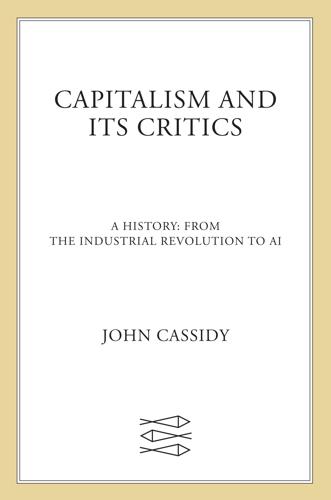
Capitalism and Its Critics: A History: From the Industrial Revolution to AI
by
John Cassidy
Published 12 May 2025
Wheeler, whose husband, a dissolute Irish aristocrat, had died several years earlier, lived in Paris, where she maintained a literary salon that was frequented by followers of Saint-Simon and Fourier. She was a frequent visitor to London, where she mixed in Owenite circles and was acquainted with Jeremy Bentham. The philosopher’s papers indicate Wheeler dined at his home twice in May 1824. He sent her several of his books, including one on prison reform, Panopticon. It seems likely that Wheeler and Thompson met through Bentham. In any case, the two forged a deep and enduring friendship, which was based on their shared interest in progressive politics, the cooperative movement, and women’s rights. In early nineteenth-century Britain and Ireland, even upper-class women like Wheeler couldn’t escape systematic discrimination.
…
In 1818 he published a pamphlet that called for “a cheap and liberal system of education, adapted to active life, superior to what schools can teach.”6 Thompson was heavily influenced by the philosopher Jeremy Bentham and his doctrine of utilitarianism, which demanded that all institutions and policies be evaluated based on whether they contributed to the “greatest happiness of the greatest number.”7 Bentham was another fervent advocate of education reform, and Thompson sent the great man a series of letters. Evidently Bentham was impressed by his correspondent. In 1819 he invited Thompson to stay at his home in Queen’s Square Place, Westminster, and share his regimented daily regime. “Hour of dinner, six,” Bentham wrote to Thompson; “tea between nine and ten; bed, a quarter before eleven.
…
Ottoman Empire Our Land and Land Policy (George) Our World in Data Overland Monthly, The Owen, George Owen, Robert; Owenites Owen, Robert Dale Owen, William Oxford Bulletin of Statistics Oxford University Pacific Railway Acts Pan-African Movement Panic of 1857 Panic of 1873 Panic of 1893 Pankhurst, Richard Panopticon (Bentham) Papen, Franz von Paris; Revolution of 1848 in; Tristan in Paris Accords Paris Commune Paris Institute of Political Studies Park Slope Food Coop Party of Socialist Revolutionaries (SRs) Passell, Peter Past and Present (Carlyle) Pearson, Karl pecuniary class and values Peninsular War pensions People’s Budget People’s Charter People’s Commissariat of Agriculture People’s Commissariat of Finance (NKFin) People’s Commissariat of Social Production People’s National Movement (PNM) People’s National Party People’s Will, The Perceval, Spencer Perdiguier, Agricol Peregrinations of a Pariah (Tristan) Perón, Juan Perot, Ross Perry, Arthur Latham Perry, George L.
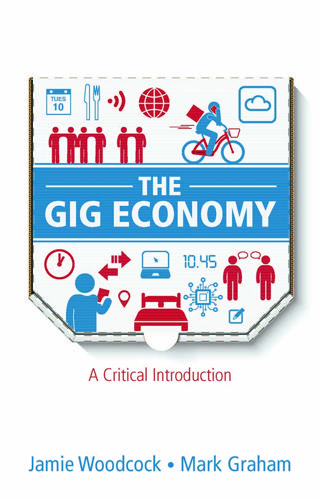
The Gig Economy: A Critical Introduction
by
Jamie Woodcock
and
Mark Graham
Published 17 Jan 2020
Said, C. (2015) Could client poaching undercut on-demand companies? San Francisco Chronicle, 24 April. Available at: https://www.sfchronicle.com/business/article/Could-client-poaching-undercut-on-demand-6222919.php#photo-7874032 7. Quoted in Huet (2015). 8. Quoted in Said (2015). 9. Designed by the English philosopher and social theorist, Jeremy Bentham, the panopticon is an architectural design for a prison in which a single prison guard can watch all the inmates simultaneously without them knowing whether they are being watched, thus inducing self-regulating behaviour. 10. See Wiessner, D. (2018) US court revives challenge to Seattle’s Uber, Lyft union law.
…
As a common infrastructure, Turkopticon also enables workers to engage one another in mutual aid’ (Irani and Silberman, 2013: 611). Turkopticon provides a browser plug-in that produces an overlay for workers while they are on the platform. It allows workers to share their rating of the requester – thus reversing the Panopticon-like relationship between platform and workers9 – to try and hold employers accountable for their treatment. Turkopticon then included a forum through which workers could meet and discuss online. The importance of Turkopticon is that it shows workers can collectively organize on the platform. Although it began as an outside intervention, the design promotes workers’ self-activity through its use.
…
Stewart (eds.), Inclusion and Exclusion in Europe: Migration, Work and Employment Perspectives. London: ECPR Press, pp. 17–34. Woodcock, J. (2018b) Digital labour and workers’ organisation. In M. Atzeni and I. Ness (eds.), Global Perspectives on Workers’ and Labour Organizations. Singapore: Springer, pp. 157–73. Woodcock, J. (forthcoming) The algorithmic Panopticon at Deliveroo: Measurement, precarity, and the illusion of control. Ephemera. Woodcock, J. and Johnson, M.R. (2018) Gamification: What it is, and how to fight it. The Sociological Review, 66(3): 542–58. Yin, M., Gray, M.L., Suri, S. and Vaughan, J.W. (2016), The communication network within the crowd.

Who Owns the Future?
by
Jaron Lanier
Published 6 May 2013
Creepiness Thrives on the Quest for Utopia People often love the feeling of being open and trusting each other with information, and yet we’ve seen over and over that naïve openness fertilizes panopticons.* While you’re sharing, the search engine, the market intelligence firm, and the credit bureau are all sizing you up and influencing your life, but without transparency regarding their operations. *Michel Foucault popularized this metaphor. The panopticon was Jeremy Bentham’s prison design in which cells were arranged in a circle around a central guard tower so that all prisoners were put under constant surveillance with maximum efficiency by a small number of guards.
…
Brian, 169n artificial hearts, 157–58 artificial intelligence (AI), 23, 61, 94, 95, 114, 116, 136, 138n, 147, 155, 157, 178, 191, 192–93, 325, 330, 354, 359n artificial memory, 35 art market, 108 Art of the Long View, The (Schwartz), 214 ashrams, 213 assets, 31, 60 “As We May Think” (Bush), 221n asymmetry, 54–55, 61–66, 118, 188, 203, 246–48, 285–88, 291–92, 310 Athens, 22–25 atomic bomb, 127 “attractor nightmare,” 48 auctions, 170, 286 aulos, 23n austerity, 96, 115, 125, 151, 152, 204, 208 authenticity, 128–32, 137 authors, 62n automata, 11, 12, 17, 23, 42, 55, 85–86, 90–92, 97–100, 111, 129, 135–36, 155, 157, 162, 260, 261, 269, 296n, 342, 359–60 automated services, 62, 63, 64, 147–48 automated trading systems, 74–78, 115 automation, 7, 85, 123–24, 192, 234, 259, 261, 343 automobiles, 43, 86, 90–92, 98, 118–19, 125n, 302, 311, 314, 343, 367 avatar cameras, 265 avatars, 89n, 265, 283–85 baby boomers, 97–100, 339, 346 bailouts, financial, 45, 52, 60, 74–75, 82 Baird-Murray, Kathleen, 200n “Ballad of John Henry, The,” 134–35 bandwidth, 171–72 banking, 32–33, 42, 43, 69, 76–78, 151–52, 251, 269n, 289, 345–46 bankruptcy, 2, 89, 251 bargains, 64–65, 95–96 Barlow, John Perry, 353 Barnes & Noble, 62n, 182 barter system, 20, 57 Battlestar Galactica, 137, 138n “beach fantasy,” 12–13, 18, 236–37, 331, 366–67 Beatles, 211, 212, 213 behavior models, 32, 121, 131, 173–74, 286–87 behavior modification, 173–74 Belarus, 136 belief systems, 139–40 Bell, Gordon, 313 bell curve distribution, 39, 39–45, 204, 208, 262, 291–93 Bell Labs, 94 Bentham, Jeremy, 308n Berners-Lee, Tim, 230 Bezos, Jeff, 352 big business, 265–67, 297–98 big data, 107–40, 150, 151–52, 155, 179, 189, 191–92, 202–4, 265–66, 297–98, 305, 346, 366, 367 big money, 202–4, 265–67 billboards, 170, 267, 310 billing, 171–72, 184–85 Bing, 181–82 biodiversity, 146–47 biological realism, 253–54 biotechnology, 11–13, 17, 18, 109–10, 162, 330–31 Bitcoin, 34n BitTorrent, 223 blackmail, 61, 172–73, 207, 273, 314, 316, 322 Black Monday, 74 blogs, 118n, 120, 225, 245, 259, 349, 350 books, 1–2, 62, 63, 65, 113, 182, 192, 193, 246–47, 277–78, 281, 347, 352–60 bots, 62, 63, 64, 147–48 brain function, 195–96, 260, 328 brain scans, 111–12, 218, 367 Brand, Stewart, 214 brand advertising, 267 Brandeis, Louis, 25, 208 Brazil, 54 Brooks, David, 326 Burma, 200n Burning Man, 132 Bush, George H.
…
M., 129–30, 261, 328 “Forum,” 214 Foucault, Michel, 308n 4chan, 335 4′33″ (Cage), 212 fractional reserve system, 33 Franco, Francisco, 159–60 freedom, 13–15, 32–33, 90–92, 277–78, 336 freelancing, 253–54 Free Print Shop, 228 “free rise,” 182–89, 355 free speech, 223, 225 free will, 166–68 “friction,” 179, 225, 230, 235, 354 Friendster, 180, 181 Fukuyama, Francis, 165, 189 fundamentalism, 131, 193–94 future: chaos in, 165–66, 273n, 331 economic analysis of, 1–3, 15, 22, 37, 38, 40–41, 42, 67, 122, 143, 148–52, 153, 155–56, 204, 208, 209, 236, 259, 274, 288, 298–99, 311, 362n, 363 humanistic economy for, 194, 209, 233–351 361–367 “humors” of, 124–40, 230 modern conception of, 123–40, 193–94, 255 natural basis of, 125, 127, 128–29 optimism about, 32–35, 45, 130, 138–40, 218, 230n, 295 politics of, 13–18, 22–25, 85, 122, 124–26, 128, 134–37, 199–234, 295–96, 342 technological trends in, 7–18, 21, 53–54, 60–61, 66–67, 85–86, 87, 97–98, 129–38, 157–58, 182, 188–90, 193–96, 217 utopian conception of, 13–18, 21, 30, 31, 37–38, 45–46, 96, 128, 130, 167, 205, 207, 265, 267, 270, 283, 290, 291, 308–9, 316 future-oriented money, 32–34, 35 Gadget, 186 Gallant, Jack, 111–12 games, 362, 363 Gates, Bill, 93 Gattaca, 130 Gawker, 118n Gelernter, David, 313 “general” machines, 158 General Motors, 56–57 general relativity theory, 167n Generation X, 346 genetic engineering, 130 genetics, 109–10, 130, 131, 146–47, 329, 366 genomics, 109–10, 146–47, 366 Germany, 45 Ghostery, 109 ghost suburbs, 296 Gibson, William, 137, 309 Gizmodo, 117–18 Global Business Network (GBN), 214–15 global climate change, 17, 32, 53, 132, 133, 134, 203, 266, 295, 296–97, 301–2, 331 global economy, 33n, 153–56, 173, 201, 214–15, 280 global village, 201 God, 29, 30–31, 139 Golden Goblet, 121, 121, 175, 328 golden rule, 335–36 gold standard, 34 Google, 14, 15, 19, 69, 74, 75–76, 90, 94, 106, 110, 120, 128, 153, 154, 170, 171, 174, 176, 180, 181–82, 188, 191, 192, 193, 199–200, 201, 209, 210, 217, 225, 227, 246, 249, 265, 267, 272, 278, 280, 286, 305n, 307, 309–10, 322, 325, 330, 344, 348, 352 Google Goggles, 309–10 Googleplex, 199–200 goops, 85–89, 99 Gore, Al, 80n Graeber, David, 30n granularity, 277 graph-shaped networks, 241, 242–43 Great Britain, 200 Great Depression, 69–70, 75, 135, 299 Great Recession, 31, 54, 60, 76–77, 204, 311, 336–37 Greece, 22–25, 45, 125 Grigorov, Mario, 267 guitars, 154 guns, 310–11 Gurdjieff, George, 215, 216 gurus, 211–13 hackers, 14, 82, 265, 306–7, 345–46 Hardin, Garrett, 66n Hartmann, Thom, 33n Hayek, Friedrich, 204 health care, 66–67, 95, 98–99, 100, 132–33, 153–54, 249, 253, 258, 337, 346 health insurance, 66–67, 95, 98–99, 100, 153–54 Hearts and Minds, 353n heart surgery, 11–13, 17, 18, 157–58 heat, 56 hedge funds, 69, 106, 137 Hephaestus, 22, 23 high-dimensional problems, 145 high-frequency trading, 56, 76–78, 154 highways, 79–80, 345 Hinduism, 214 Hippocrates, 124n Hiroshima bombing (1945), 127 Hollywood, 204, 206, 242 holographic radiation, 11 Homebrew Club, 228 homelessness, 151 homeopathy, 131–32 Homer, 23, 55 Honan, Mat, 82 housing market, 33, 46, 49–52, 61, 78, 95–96, 99, 193, 224, 227, 239, 245, 255, 274n, 289n, 296, 298, 300, 301 HTML, 227, 230 Huffington Post, 176, 180, 189 human agency, 8–21, 50–52, 85, 88, 91, 124–40, 144, 165–66, 175–78, 191–92, 193, 217, 253–64, 274–75, 283–85, 305–6, 328, 341–51, 358–60, 361, 362, 365–67 humanistic information economy, 194, 209, 233–351 361–367 human reproduction, 131 humors (tropes), 124–40, 157, 170, 230 hunter-gatherer societies, 131, 261–62 hyperefficient markets, 39, 42–43 hypermedia, 224–30, 245 hyper-unemployment, 7–8 hypotheses, 113, 128, 151 IBM, 191 identity, 14–15, 82, 124, 173–74, 175, 248–51, 283–90, 305, 306, 307, 315–16, 319–21 identity theft, 82, 315–16 illusions, 55, 110n, 120–21, 135, 154–56, 195, 257 immigration, 91, 97, 346 immortality, 193, 218, 253, 263–64, 325–31, 367 imports, 70 income levels, 10, 46–47, 50–54, 152, 178, 270–71, 287–88, 291–94, 338–39, 365 incrementalism, 239–40 indentured servitude, 33n, 158 India, 54, 211–13 industrialization, 49, 83, 85–89, 123, 132, 154, 343 infant mortality rates, 17, 134 infinity, 55–56 inflation, 32, 33–34 information: age of, 15–17, 42, 166, 241 ambiguity of, 41, 53–54, 155–56 asymmetry of, 54–55, 61–66, 118, 188, 203, 246–48, 285–88, 291–92, 310 behavior influenced by, 32, 121, 131, 173–74, 286–87 collection of, 61–62, 108–9 context of, 143–44, 178, 188–89, 223–24, 225, 245–46, 247, 248–51, 338, 356–57, 360 correlations in, 75–76, 114–15, 192, 274–75 for decision-making, 63–64, 184, 266, 269–75, 284n digital networks for, see digital networks duplication of, 50–52, 61, 74, 78, 88, 223–30, 239–40, 253–64, 277, 317–24, 335, 349 economic impact of, 1–3, 8–9, 15–17, 18, 19–20, 21, 35, 60–61, 92–97, 118, 185, 188, 201, 207, 209, 241–43, 245–46, 246–48, 256–58, 263, 283–87, 291–303, 331, 361–67 in education, 92–97 encrypted, 14–15, 175, 239–40, 305–8, 345 false, 119–21, 186, 275n, 287–88, 299–300 filters for, 119–20, 200, 225, 356–57 free, 7–9, 15–16, 50–52, 61, 74, 78, 88, 214, 223–30, 239–40, 246, 253–64, 277, 317–24, 335, 349 history of, 29–31 human agency in, 22–25, 69–70, 120–21, 122, 190–91 interpretation of, 29n, 114–15, 116, 120–21, 129–32, 154, 158, 178, 183, 184, 188–89 investment, 59–60, 179–85 life cycle of, 175–76 patterns in, 178, 183, 184, 188–89 privacy of, see privacy provenance of, 245–46, 247, 338 sampling of, 71–72, 191, 221, 224–26, 259 shared, 50–52, 61, 74, 78, 88, 100, 223–30, 239–40, 253–64, 277, 317–24, 335, 349 signals in, 76–78, 148, 293–94 storage of, 29, 167n, 184–85; see also cloud processors and storage; servers superior, 61–66, 114, 128, 143, 171, 246–48 technology of, 7, 32–35, 49, 66n, 71–72, 109, 110, 116, 120, 125n, 126, 135, 136, 254, 312–16, 317 transparency of, 63–66, 74–78, 118, 190–91, 306–7 two-way links in, 1–2, 227, 245, 289 value of, 1–3, 15–16, 20, 210, 235–43, 257–58, 259, 261–63, 271–75, 321–24, 358–60 see also big data; data infrastructure, 79–80, 87, 179, 201, 290, 345 initial public offerings (IPOs), 103 ink, 87, 331 Inner Directeds, 215 Instagram, 2, 53 instant prices, 272, 275, 288, 320 insurance industry, 44, 56, 60, 66–67, 95, 98–99, 100, 153–54, 203, 306 intellectual property, 44, 47, 49, 60, 61, 96, 102, 183, 204, 205–10, 223, 224–26, 236, 239–40, 246, 253–64 intelligence agencies, 56, 61, 199–200, 291, 346 intelligence tests, 39, 40 interest rates, 81 Internet: advertising on, 14, 20, 24, 42, 66, 81, 107, 109, 114, 129, 154, 169–74, 177, 182, 207, 227, 242, 266–67, 275, 286, 291, 322–24, 347–48, 354, 355 anonymity of, 172, 248–51, 283–90 culture of, 13–15, 25 development of, 69, 74, 79–80, 89, 129–30, 159, 162, 190–96, 223, 228 economic impact of, 1–2, 18, 19–20, 24, 31, 43, 60–66, 79–82, 117, 136–37, 169–74, 181, 186 employment and, 2, 7–8, 56–57, 60, 71–74, 79, 117, 123, 135, 149, 178, 201, 257–58 file sharing on, 50–52, 61, 74, 78, 88, 100, 223–30, 239–40, 253–64, 277, 317–24, 335, 349 free products and services of, 7n, 10, 60–61, 73, 81, 82, 90, 94–96, 97, 128, 154, 176, 183, 187, 201, 205–10, 234, 246–48, 253–64, 283–88, 289, 308–9, 317–24, 337–38, 348–50, 366 human contributions to, 19–21, 128, 129–30, 191–92, 253–64 identity in, 14–15, 82, 173–74, 175, 283–90, 315–16 investment in, 117–20, 181 legal issues in, 63, 79–82, 204, 206, 318–19 licensing agreements for, 79–82 as network, 2–3, 9, 11, 12, 14, 15, 16, 17, 19–21, 31, 49, 50–51, 53, 54–55, 56, 57, 75, 92, 129–30, 143–48, 228–29, 259, 286–87, 308–9 political aspect of, 13–15, 205–10 search engines for, 51, 60, 70, 81, 120, 191, 267, 289, 293; see also Google security of, 14–15, 175, 239–40, 305–8, 345 surveillance of, 1–2, 11, 14, 50–51, 64, 71–72, 99, 108–9, 114–15, 120–21, 152, 177n, 199–200, 201, 206–7, 234–35, 246, 272, 291, 305, 309–11, 315, 316, 317, 319–24 transparency of, 63–66, 176, 205–6, 278, 291, 308–9, 316, 336 websites on, 80, 170, 200, 201, 343 Internet2, 69 Internet service providers (ISPs), 171–72 Interstate Highway System, 79–80, 345 “In-valid,” 130 inventors, 117–20 investment, financial, 45, 50, 59–67, 74–80, 115, 116–20, 155, 179–85, 208, 218, 257, 258, 277–78, 298, 301, 348, 350 Invisible Hand humor, 126, 128 IP addresses, 248 iPads, 267 Iran, 199, 200 irony, 130 Islam, 184 Italy, 133 Jacquard programmable looms, 23n “jailbreaking,” 103–4 Japan, 85, 97, 98, 133 Jeopardy, 191 Jeremijenko, Natalie, 302 jingles, 267 jobs, see employment Jobs, Steve, 93, 166n, 192, 358 JOBS Act (2012), 117n journalism, 92, 94 Kapital, Das (Marx), 136 Keynesianism, 38, 151–52, 204, 209, 274, 288 Khan Academy, 94 Kickstarter, 117–20, 186–87, 343 Kindle, 352 Kinect, 89n, 265 “Kirk’s Wager,” 139 Klout, 365 Kodak, 2, 53 Kottke, Dan, 211 KPFA, 136 Kurzweil, Ray, 127, 325, 327 Kushner, Tony, 165, 189 LaBerge, Stephen, 162 labor, human, 85, 86, 87, 88, 99–100, 257–58, 292 labor unions, 44, 47–48, 49, 96, 239, 240 Laffer curve, 149–51, 150, 152 Las Vegas, Nev., 296, 298 lawyers, 98–99, 100, 136, 184, 318–19 leadership, 341–51 legacy prices, 272–75, 288 legal issues, 49, 63, 74–82, 98–99, 100, 104–5, 108, 136, 184, 204, 206, 318–19 Lehman Brothers, 188 lemonade stands, 79–82 “lemons,” 118–19 Lennon, John, 211, 213 levees, economic, 43–45, 46, 47, 48, 49–50, 52, 92, 94, 96, 98, 108, 171, 176n, 224–25, 239–43, 253–54, 263, 345 leveraged mortgages, 49–50, 61, 227, 245, 289n, 296 liberal arts, 97 liberalism, 135–36, 148, 152, 202, 204, 208, 235, 236, 251, 253, 256, 265, 293, 350 libertarianism, 14, 34, 80, 202, 208, 210, 262, 321 liberty, 13–15, 32–33, 90–92, 277–78, 336 licensing agreements, 79–82 “Lifestreams” (Gelernter), 313 Lights in the Tunnel, The (Ford), 56n Linux, 206, 253, 291, 344 litigation, 98–99, 100, 104–5, 108, 184 loans, 32–33, 42, 43, 74, 151–52, 306 local advantages, 64, 94–95, 143–44, 153–56, 173, 203, 280 Local/Global Flip, 153–56, 173, 280 locked-in software, 172–73, 182, 273–74 logical copies, 223 Long-Term Capital Management, 49, 74–75 looms, 22, 23n, 24 loopholes, tax, 77 lotteries, 338–39 lucid dreaming, 162 Luddites, 135, 136 lyres, 22, 23n, 24 machines, 19–20, 86, 92, 123, 129–30, 158, 261, 309–11, 328 see also computers “Machine Stops, The” (Forster), 129–30, 261, 328 machine translations, 19–20 machine vision, 309–11 McMillen, Keith, 117 magic, 110, 115, 151, 178, 216, 338 Malthus, Thomas, 132, 134 Malthusian humor, 125, 127, 132–33 management, 49 manufacturing sector, 49, 85–89, 99, 123, 154, 343 market economies, see economies, market marketing, 211–13, 266–67, 306, 346 “Markets for Lemons” problem, 118–19 Markoff, John, 213 marriage, 167–68, 274–75, 286 Marxism, 15, 22, 37–38, 48, 136–37, 262 as humor, 126 mash-ups, 191, 221, 224–26, 259 Maslow, Abraham, 260, 315 Massachusetts Institute of Technology (MIT), 75, 93, 94, 96–97, 157–58, 184 mass media, 7, 66, 86, 109, 120, 135, 136, 185–86, 191, 216, 267 material extinction, 125 materialism, 125n, 195 mathematics, 11, 20, 40–41, 70, 71–72, 75–78, 116, 148, 155, 161, 189n, 273n see also statistics Matrix, The, 130, 137, 155 Maxwell, James Clerk, 55 Maxwell’s Demon, 55–56 mechanicals, 49, 51n Mechanical Turk, 177–78, 185, 187, 349 Medicaid, 99 medicine, 11–13, 17, 18, 54, 66–67, 97–106, 131, 132–33, 134, 150, 157–58, 325, 346, 363, 366–67 Meetings with Remarkable Men (Gurdjieff), 215 mega-dossiers, 60 memes, 124 Memex, 221n memories, 131, 312–13, 314 meta-analysis, 112 metaphysics, 12, 127, 139, 193–95 Metcalf’s Law, 169n, 350 Mexico City, 159–62 microfilm, 221n microorganisms, 162 micropayments, 20, 226, 274–75, 286–87, 317, 337–38, 365 Microsoft, 19, 89, 265 Middle Ages, 190 middle class, 2, 3, 9, 11, 16–17, 37–38, 40, 42–45, 47, 48, 49, 50, 51, 60, 74, 79, 91, 92, 95, 98, 171, 205, 208, 210, 224–25, 239–43, 246, 253–54, 259, 262, 263, 280, 291–94, 331, 341n, 344, 345, 347, 354 milling machines, 86 mind reading, 111 Minority Report, 130, 310 Minsky, Marvin, 94, 157–58, 217, 326, 330–31 mission statements, 154–55 Mixed (Augmented) Reality, 312–13, 314, 315 mobile phones, 34n, 39, 85, 87, 162, 172, 182n, 192, 229, 269n, 273, 314, 315, 331 models, economic, 40–41, 148–52, 153, 155–56 modernity, 123–40, 193–94, 255 molds, 86 monetization, 172, 176n, 185, 186, 207, 210, 241–43, 255–56, 258, 260–61, 263, 298, 331, 338, 344–45 money, 3, 21, 29–35, 86, 108, 124, 148, 152, 154, 155, 158, 172, 185, 241–43, 278–79, 284–85, 289, 364 monocultures, 94 monopolies, 60, 65–66, 169–74, 181–82, 187–88, 190, 202, 326, 350 Moondust, 362n Moore’s Law, 9–18, 20, 153, 274–75, 288 morality, 29–34, 35, 42, 50–52, 54, 71–74, 188, 194–95, 252–64, 335–36 Morlocks, 137 morning-after pill, 104 morphing, 162 mortality, 193, 218, 253, 263–64, 325–31, 367 mortgages, 33, 46, 49–52, 61, 78, 95–96, 99, 224, 227, 239, 245, 255, 274n, 289n, 296, 300 motivation, 7–18, 85–86, 97–98, 216 motivational speakers, 216 movies, 111–12, 130, 137, 165, 192, 193, 204, 206, 256, 261–62, 277–78, 310 Mozart, Wolfgang Amadeus, 23n MRI, 111n music industry, 11, 18, 22, 23–24, 42, 47–51, 54, 61, 66, 74, 78, 86, 88, 89, 92, 94, 95–96, 97, 129, 132, 134–35, 154, 157, 159–62, 186–87, 192, 206–7, 224, 227, 239, 253, 266–67, 281, 318, 347, 353, 354, 355, 357 Myspace, 180 Nancarrow, Conlon, 159–62 Nancarrow, Yoko, 161 nanopayments, 20, 226, 274–75, 286–87, 317, 337–38, 365 nanorobots, 11, 12, 17 nanotechnology, 11, 12, 17, 87, 162 Napster, 92 narcissism, 153–56, 188, 201 narratives, 165–66, 199 National Security Agency (NSA), 199–200 natural medicine, 131 Nelson, Ted, 128, 221, 228, 245, 349–50 Nelsonian systems, 221–30, 335 Nelson’s humor, 128 Netflix, 192, 223 “net neutrality,” 172 networked cameras, 309–11, 319 networks, see digital networks neutrinos, 110n New Age, 211–17 Newmark, Craig, 177n New Mexico, 159, 203 newspapers, 109, 135, 177n, 225, 284, 285n New York, N.Y., 75, 91, 266–67 New York Times, 109 Nobel Prize, 40, 118, 143n nodes, network, 156, 227, 230, 241–43, 350 “no free lunch” principle, 55–56, 59–60 nondeterministic music, 23n nonlinear solutions, 149–50 nonprofit share sites, 59n, 94–95 nostalgia, 129–32 NRO, 199–200 nuclear power, 133 nuclear weapons, 127, 296 nursing, 97–100, 123, 296n nursing homes, 97–100, 269 Obama, Barack, 79, 100 “Obamacare,” 100n obsolescence, 89, 95 oil resources, 43, 133 online stores, 171 Ono, Yoko, 212 ontologies, 124n, 196 open-source applications, 206, 207, 272, 310–11 optical illusions, 121 optimism, 32–35, 45, 130, 138–40, 218, 230n, 295 optimization, 144–47, 148, 153, 154–55, 167, 202, 203 Oracle, 265 Orbitz, 63, 64, 65 organ donors, 190, 191 ouroboros, 154 outcomes, economic, 40–41, 144–45 outsourcing, 177–78, 185 Owens, Buck, 256 packet switching, 228–29 Palmer, Amanda, 186–87 Pandora, 192 panopticons, 308 papacy, 190 paper money, 34n parallel computers, 147–48, 149, 151 paranoia, 309 Parrish, Maxfield, 214 particle interactions, 196 party machines, 202 Pascal, Blaise, 132, 139 Pascal’s Wager, 139 passwords, 307, 309 “past-oriented money,” 29–31, 35, 284–85 patterns, information, 178, 183, 184, 188–89 Paul, Ron, 33n Pauli exclusion principle, 181, 202 PayPal, 60, 93, 326 peasants, 565 pensions, 95, 99 Perestroika (Kushner), 165 “perfect investments,” 59–67, 77–78 performances, musical, 47–48, 51, 186–87, 253 perpetual motion, 55 Persian Gulf, 86 personal computers (PCs), 158, 182n, 214, 223, 229 personal information systems, 110, 312–16, 317 Pfizer, 265 pharmaceuticals industry, 66–67, 100–106, 123, 136, 203 philanthropy, 117 photography, 53, 89n, 92, 94, 309–11, 318, 319, 321 photo-sharing services, 53 physical trades, 292 physicians, 66–67 physics, 88, 153n, 167n Picasso, Pablo, 108 Pinterest, 180–81, 183 Pirate Party, 49, 199, 206, 226, 253, 284, 318 placebos, 112 placement fees, 184 player pianos, 160–61 plutocracy, 48, 291–94, 355 police, 246, 310, 311, 319–21, 335 politics, 13–18, 21, 22–25, 47–48, 85, 122, 124–26, 128, 134–37, 149–51, 155, 167, 199–234, 295–96, 342 see also conservatism; liberalism; libertarianism Ponzi schemes, 48 Popper, Karl, 189n popular culture, 111–12, 130, 137–38, 139, 159 “populating the stack,” 273 population, 17, 34n, 86, 97–100, 123, 125, 132, 133, 269, 296n, 325–26, 346 poverty, 37–38, 42, 44, 53–54, 93–94, 137, 148, 167, 190, 194, 253, 256, 263, 290, 291–92 power, personal, 13–15, 53, 60, 62–63, 86, 114, 116, 120, 122, 158, 166, 172–73, 175, 190, 199, 204, 207, 208, 278–79, 290, 291, 302–3, 308–9, 314, 319, 326, 344, 360 Presley, Elvis, 211 Priceline, 65 pricing strategies, 1–2, 43, 60–66, 72–74, 145, 147–48, 158, 169–74, 226, 261, 272–75, 289, 317–24, 331, 337–38 printers, 90, 99, 154, 162, 212, 269, 310–11, 316, 331, 347, 348, 349 privacy, 1–2, 11, 13–15, 25, 50–51, 64, 99, 108–9, 114–15, 120–21, 152, 177n, 199–200, 201, 204, 206–7, 234–35, 246, 272, 291, 305, 309–13, 314, 315–16, 317, 319–24 privacy rights, 13–15, 25, 204, 305, 312–13, 314, 315–16, 321–22 product design and development, 85–89, 117–20, 128, 136–37, 145, 154, 236 productivity, 7, 56–57, 134–35 profit margins, 59n, 71–72, 76–78, 94–95, 116, 177n, 178, 179, 207, 258, 274–75, 321–22 progress, 9–18, 20, 21, 37, 43, 48, 57, 88, 98, 123, 124–40, 130–37, 256–57, 267, 325–31, 341–42 promotions, 62 property values, 52 proprietary hardware, 172 provenance, 245–46, 247, 338 pseudo-asceticism, 211–12 public libraries, 293 public roads, 79–80 publishers, 62n, 92, 182, 277–78, 281, 347, 352–60 punishing vs. rewarding network effects, 169–74, 182, 183 quants, 75–76 quantum field theory, 167n, 195 QuNeo, 117, 118, 119 Rabois, Keith, 185 “race to the bottom,” 178 radiant risk, 61–63, 118–19, 120, 156, 183–84 Ragnarok, 30 railroads, 43, 172 Rand, Ayn, 167, 204 randomness, 143 rationality, 144 Reagan, Ronald, 149 real estate, 33, 46, 49–52, 61, 78, 95–96, 99, 193, 224, 227, 239, 245, 255, 274n, 289n, 296, 298, 300, 301 reality, 55–56, 59–60, 124n, 127–28, 154–56, 161, 165–68, 194–95, 203–4, 216–17, 295–303, 364–65 see also Virtual Reality (VR) reason, 195–96 recessions, economic, 31, 54, 60, 76–77, 79, 151–52, 167, 204, 311, 336–37 record labels, 347 recycling, 88, 89 Reddit, 118n, 186, 254 reductionism, 184 regulation, economic, 37–38, 44, 45–46, 49–50, 54, 56, 69–70, 77–78, 266n, 274, 299–300, 311, 321–22, 350–51 relativity theory, 167n religion, 124–25, 126, 131, 139, 190, 193–95, 211–17, 293, 300n, 326 remote computers, 11–12 rents, 144 Republican Party, 79, 202 research and development, 40–45, 85–89, 117–20, 128, 136–37, 145, 154, 215, 229–30, 236 retail sector, 69, 70–74, 95–96, 169–74, 272, 349–51, 355–56 retirement, 49, 150 revenue growth plans, 173n revenues, 149, 149, 150, 151, 173n, 225, 234–35, 242, 347–48 reversible computers, 143n revolutions, 199, 291, 331 rhythm, 159–62 Rich Dad, Poor Dad (Kiyosaki), 46 risk, 54, 55, 57, 59–63, 71–72, 85, 117, 118–19, 120, 156, 170–71, 179, 183–84, 188, 242, 277–81, 284, 337, 350 externalization of, 59n, 117, 277–81 risk aversion, 188 risk pools, 277–81, 284 risk radiation, 61–63, 118–19, 120, 156, 183–84 robo call centers, 177n robotic cars, 90–92 robotics, robots, 11, 12, 17, 23, 42, 55, 85–86, 90–92, 97–100, 111, 129, 135–36, 155, 157, 162, 260, 261, 269, 296n, 342, 359–60 Roman Empire, 24–25 root nodes, 241 Rousseau, Jean-Jacques, 129 Rousseau humor, 126, 129, 130–31 routers, 171–72 royalties, 47, 240, 254, 263–64, 323, 338 Rubin, Edgar, 121 rupture, 66–67 salaries, 10, 46–47, 50–54, 152, 178, 270–71, 287–88, 291–94, 338–39, 365 sampling, 71–72, 191, 221, 224–26, 259 San Francisco, University of, 190 satellites, 110 savings, 49, 72–74 scalable solutions, 47 scams, 119–21, 186, 275n, 287–88, 299–300 scanned books, 192, 193 SceneTap, 108n Schmidt, Eric, 305n, 352 Schwartz, Peter, 214 science fiction, 18, 126–27, 136, 137–38, 139, 193, 230n, 309, 356n search engines, 51, 60, 70, 81, 120, 191, 267, 289, 293 Second Life, 270, 343 Secret, The (Byrne), 216 securitization, 76–78, 99, 289n security, 14–15, 175, 239–40, 305–8, 345 self-actualization, 211–17 self-driving vehicles, 90–92, 98, 311, 343, 367 servants, 22 servers, 12n, 15, 31, 53–57, 71–72, 95–96, 143–44, 171, 180, 183, 206, 245, 358 see also Siren Servers “Sexy Sadie,” 213 Shakur, Tupac, 329 Shelley, Mary, 327 Short History of Progress, A (Wright), 132 “shrinking markets,” 66–67 shuttles, 22, 23n, 24 signal-processing algorithms, 76–78, 148 silicon chips, 10, 86–87 Silicon Valley, 12, 13, 14, 21, 34n, 56, 59, 60, 66–67, 70, 71, 75–76, 80, 93, 96–97, 100, 102, 108n, 125n, 132, 136, 154, 157, 162, 170, 179–89, 192, 193, 200, 207, 210, 211–18, 228, 230, 233, 258, 275n, 294, 299–300, 325–31, 345, 349, 352, 354–58 singularity, 22–25, 125, 215, 217, 327–28, 366, 367 Singularity University, 193, 325, 327–28 Sirenic Age, 66n, 354 Siren Servers, 53–57, 59, 61–64, 65, 66n, 69–78, 82, 91–99, 114–19, 143–48, 154–56, 166–89, 191, 200, 201, 203, 210n, 216, 235, 246–50, 258, 259, 269, 271, 272, 280, 285, 289, 293–94, 298, 301, 302–3, 307–10, 314–23, 326, 336–51, 354, 365, 366 Siri, 95 skilled labor, 99–100 Skout, 280n Skype, 95, 129 slavery, 22, 23, 33n Sleeper, 130 small businesses, 173 smartphones, 34n, 39, 162, 172, 192, 269n, 273 Smith, Adam, 121, 126 Smolin, Lee, 148n social contract, 20, 49, 247, 284, 288, 335, 336 social engineering, 112–13, 190–91 socialism, 14, 128, 254, 257, 341n social mobility, 66, 97, 292–94 social networks, 18, 51, 56, 60, 70, 81, 89, 107–9, 113, 114, 129, 167–68, 172–73, 179, 180, 190, 199, 200–201, 202, 204, 227, 241, 242–43, 259, 267, 269n, 274–75, 280n, 286, 307–8, 317, 336, 337, 343, 349, 358, 365–66 see also Facebook social safety nets, 10, 44, 54, 202, 251, 293 Social Security, 251, 345 software, 7, 9, 11, 14, 17, 68, 86, 99, 100–101, 128, 129, 147, 154, 155, 165, 172–73, 177–78, 182, 192, 234, 236, 241–42, 258, 262, 273–74, 283, 331, 347, 357 software-mediated technology, 7, 11, 14, 86, 100–101, 165, 234, 236, 258, 347 South Korea, 133 Soviet Union, 70 “space elevator pitch,” 233, 342, 361 space travel, 233, 266 Spain, 159–60 spam, 178, 275n spending levels, 287–88 spirituality, 126, 211–17, 325–31, 364 spreadsheet programs, 230 “spy data tax,” 234–35 Square, 185 Stalin, Joseph, 125n Stanford Research Institute (SRI), 215 Stanford University, 60, 75, 90, 95, 97, 101, 102, 103, 162, 325 Starr, Ringo, 256 Star Trek, 138, 139, 230n startup companies, 39, 60, 69, 93–94, 108n, 124n, 136, 179–89, 265, 274n, 279–80, 309–10, 326, 341, 343–45, 348, 352, 355 starvation, 123 Star Wars, 137 star (winner-take-all) system, 38–43, 50, 54–55, 204, 243, 256–57, 263, 329–30 statistics, 11, 20, 71–72, 75–78, 90–91, 93, 110n, 114–15, 186, 192 “stickiness,” 170, 171 stimulus, economic, 151–52 stoplights, 90 Strangelove humor, 127 student debt, 92, 95 “Study 27,” 160 “Study 36,” 160 Sumer, 29 supergoop, 85–89 supernatural phenomena, 55, 124–25, 127, 132, 192, 194–95, 300 supply chain, 70–72, 174, 187 Supreme Court, U.S., 104–5 surgery, 11–13, 17, 18, 98, 157–58, 363 surveillance, 1–2, 11, 14, 50–51, 64, 71–72, 99, 108–9, 114–15, 120–21, 152, 177n, 199–200, 201, 206–7, 234–35, 246, 272, 291, 305, 309–11, 315, 316, 317, 319–24 Surviving Progress, 132 sustainable economies, 235–37, 285–87 Sutherland, Ivan, 221 swarms, 99, 109 synthesizers, 160 synthetic biology, 162 tablets, 85, 86, 87, 88, 113, 162, 229 Tahrir Square, 95 Tamagotchis, 98 target ads, 170 taxation, 44, 45, 49, 52, 60, 74–75, 77, 82, 149, 149, 150, 151, 202, 210, 234–35, 263, 273, 289–90 taxis, 44, 91–92, 239, 240, 266–67, 269, 273, 311 Teamsters, 91 TechCrunch, 189 tech fixes, 295–96 technical schools, 96–97 technologists (“techies”), 9–10, 15–16, 45, 47–48, 66–67, 88, 122, 124, 131–32, 134, 139–40, 157–62, 165–66, 178, 193–94, 295–98, 307, 309, 325–31, 341, 342, 356n technology: author’s experience in, 47–48, 62n, 69–72, 93–94, 114, 130, 131–32, 153, 158–62, 178, 206–7, 228, 265, 266–67, 309–10, 325, 328, 343, 352–53, 362n, 364, 365n, 366 bio-, 11–13, 17, 18, 109–10, 162, 330–31 chaos and, 165–66, 273n, 331 collusion in, 65–66, 72, 169–74, 255, 350–51 complexity of, 53–54 costs of, 8, 18, 72–74, 87n, 136–37, 170–71, 176–77, 184–85 creepiness of, 305–24 cultural impact of, 8–9, 21, 23–25, 53, 130, 135–40 development and emergence of, 7–18, 21, 53–54, 60–61, 66–67, 85–86, 87, 97–98, 129–38, 157–58, 182, 188–90, 193–96, 217 digital, 2–3, 7–8, 15–16, 18, 31, 40, 43, 50–51, 132, 208 economic impact of, 1–3, 15–18, 29–30, 37, 40, 53–54, 60–66, 71–74, 79–110, 124, 134–37, 161, 162, 169–77, 181–82, 183, 184–85, 218, 254, 277–78, 298, 335–39, 341–51, 357–58 educational, 92–97 efficiency of, 90, 118, 191 employment in, 56–57, 60, 71–74, 79, 123, 135, 178 engineering for, 113–14, 123–24, 192, 194, 217, 218, 326 essential vs. worthless, 11–12 failure of, 188–89 fear of (technophobia), 129–32, 134–38 freedom as issue in, 32–33, 90–92, 277–78, 336 government influence in, 158, 199, 205–6, 234–35, 240, 246, 248–51, 307, 317, 341, 345–46, 350–51 human agency and, 8–21, 50–52, 85, 88, 91, 124–40, 144, 165–66, 175–78, 191–92, 193, 217, 253–64, 274–75, 283–85, 305–6, 328, 341–51, 358–60, 361, 362, 365–67 ideas for, 123, 124, 158, 188–89, 225, 245–46, 286–87, 299, 358–60 industrial, 49, 83, 85–89, 123, 132, 154, 343 information, 7, 32–35, 49, 66n, 71–72, 109, 110, 116, 120, 125n, 126, 135, 136, 254, 312–16, 317 investment in, 66, 181, 183, 184, 218, 277–78, 298, 348 limitations of, 157–62, 196, 222 monopolies for, 60, 65–66, 169–74, 181–82, 187–88, 190, 202, 326, 350 morality and, 50–51, 72, 73–74, 188, 194–95, 262, 335–36 motivation and, 7–18, 85–86, 97–98, 216 nano-, 11, 12, 17, 162 new vs. old, 20–21 obsolescence of, 89, 97 political impact of, 13–18, 22–25, 85, 122, 124–26, 128, 134–37, 199–234, 295–96, 342 progress in, 9–18, 20, 21, 37, 43, 48, 57, 88, 98, 123, 124–40, 130–37, 256–57, 267, 325–31, 341–42 resources for, 55–56, 157–58 rupture as concept in, 66–67 scams in, 119–21, 186, 275n, 287–88, 299–300 singularity of, 22–25, 125, 215, 217, 327–28, 366, 367 social impact of, 9–21, 124–40, 167n, 187, 280–81, 310–11 software-mediated, 7, 11, 14, 86, 100–101, 165, 234, 236, 258, 347 startup companies in, 39, 60, 69, 93–94, 108n, 124n, 136, 179–89, 265, 274n, 279–80, 309–10, 326, 341, 343–45, 348, 352, 355 utopian, 13–18, 21, 31, 37–38, 45–46, 96, 128, 130, 167, 205, 207, 265, 267, 270, 283, 290, 291, 308–9, 316 see also specific technologies technophobia, 129–32, 134–38 television, 86, 185–86, 191, 216, 267 temperature, 56, 145 Ten Commandments, 300n Terminator, The, 137 terrorism, 133, 200 Tesla, Nikola, 327 Texas, 203 text, 162, 352–60 textile industry, 22, 23n, 24, 135 theocracy, 194–95 Theocracy humor, 124–25 thermodynamics, 88, 143n Thiel, Peter, 60, 93, 326 thought experiments, 55, 139 thought schemas, 13 3D printers, 7, 85–89, 90, 99, 154, 162, 212, 269, 310–11, 316, 331, 347, 348, 349 Thrun, Sebastian, 94 Tibet, 214 Time Machine, The (Wells), 127, 137, 261, 331 topology, network, 241–43, 246 touchscreens, 86 tourism, 79 Toyota Prius, 302 tracking services, 109, 120–21, 122 trade, 29 traffic, 90–92, 314 “tragedy of the commons,” 66n Transformers, 98 translation services, 19–20, 182, 191, 195, 261, 262, 284, 338 transparency, 63–66, 74–78, 118, 176, 190–91, 205–6, 278, 291, 306–9, 316, 336 transportation, 79–80, 87, 90–92, 123, 258 travel agents, 64 Travelocity, 65 travel sites, 63, 64, 65, 181, 279–80 tree-shaped networks, 241–42, 243, 246 tribal dramas, 126 trickle-down effect, 148–49, 204 triumphalism, 128, 157–62 tropes (humors), 124–40, 157, 170, 230 trust, 32–34, 35, 42, 51–52 Turing, Alan, 127–28, 134 Turing’s humor, 127–28, 191–94 Turing Test, 330 Twitter, 128, 173n, 180, 182, 188, 199, 200n, 201, 204, 245, 258, 259, 349, 365n 2001: A Space Odyssey, 137 two-way links, 1–2, 227, 245, 289 underemployment, 257–58 unemployment, 7–8, 22, 79, 85–106, 117, 151–52, 234, 257–58, 321–22, 331, 343 “unintentional manipulation,” 144 United States, 25, 45, 54, 79–80, 86, 138, 199–204 universities, 92–97 upper class, 45, 48 used car market, 118–19 user interface, 362–63, 364 utopianism, 13–18, 21, 30, 31, 37–38, 45–46, 96, 128, 130, 167, 205, 207, 265, 267, 270, 283, 290, 291, 308–9, 316 value, economic, 21, 33–35, 52, 61, 64–67, 73n, 108, 283–90, 299–300, 321–22, 364 value, information, 1–3, 15–16, 20, 210, 235–43, 257–58, 259, 261–63, 271–75, 321–24, 358–60 Values, Attitudes, and Lifestyles (VALS), 215 variables, 149–50 vendors, 71–74 venture capital, 66, 181, 218, 277–78, 298, 348 videos, 60, 100, 162, 185–86, 204, 223, 225, 226, 239, 240, 242, 245, 277, 287, 329, 335–36, 349, 354, 356 Vietnam War, 353n vinyl records, 89 viral videos, 185–86 Virtual Reality (VR), 12, 47–48, 127, 129, 132, 158, 162, 214, 283–85, 312–13, 314, 315, 325, 343, 356, 362n viruses, 132–33 visibility, 184, 185–86, 234, 355 visual cognition, 111–12 VitaBop, 100–106, 284n vitamins, 100–106 Voice, The, 185–86 “voodoo economics,” 149 voting, 122, 202–4, 249 Wachowski, Lana, 165 Wall Street, 49, 70, 76–77, 181, 184, 234, 317, 331, 350 Wal-Mart, 69, 70–74, 89, 174, 187, 201 Warhol, Andy, 108 War of the Worlds, The (Wells), 137 water supplies, 17, 18 Watts, Alan, 211–12 Wave, 189 wealth: aggregate or concentration of, 9, 42–43, 53, 60, 61, 74–75, 96, 97, 108, 115, 148, 157–58, 166, 175, 201, 202, 208, 234, 278–79, 298, 305, 335, 355, 360 creation of, 32, 33–34, 46–47, 50–51, 57, 62–63, 79, 92, 96, 120, 148–49, 210, 241–43, 270–75, 291–94, 338–39, 349 inequalities and redistribution of, 20, 37–45, 65–66, 92, 97, 144, 254, 256–57, 274–75, 286–87, 290–94, 298, 299–300 see also income levels weather forecasting, 110, 120, 150 weaving, 22, 23n, 24 webcams, 99, 245 websites, 80, 170, 200, 201, 343 Wells, H.
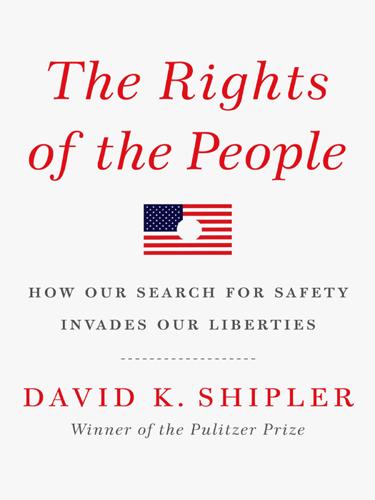
The Rights of the People
by
David K. Shipler
Published 18 Apr 2011
The chilling sensation of being watched can generate internal censorship and self-policing, as described by a Pentagon committee on privacy and technology, headed by Newton Minow, a former chairman of the Federal Communications Commission: It is this principle that was at the heart of Jeremy Bentham’s concept of the Panopticon—a model prison consisting of a central tower surrounded by a ring of prison cells. One-way windows would allow a person in the tower to see into the prison cells, but prevent the prisoners from seeing into the tower. Bentham posited that a single inspector in the tower could control the behavior of all of the prisoners through “the illusion of constant surveillance.” According to philosopher and historian Michel Foucault, “modern society increasingly functions like a super Panopticon,” in which government constrains individual behavior by the threat of surveillance.… Knowledge that the government is observing data we generate through thousands of ordinary activities can alter the way we live our lives and interact with others.
…
The Supreme Court upheld the lower courts, which had ordered the contents of the overheard conversations disclosed to the defendants. 31. Newton Minow et al., Technology and Privacy Advisory Committee, Department of Defense, Safeguarding Privacy in the Fight Against Terrorism, March 1, 2004, p. 35. Quotes from Jeremy Bentham, The Panopticon Writings, Miran Bozovic, ed. (London, New York: Verso, 1995). Christopher Slobogin, “Symposium: Public Privacy; Camera Surveillance of Public Places and the Right to Anonymity,” Mississippi Law Journal 213, p. 240 (2002). 32. “Learning to Live with Big Brother,” The Economist, Sept. 27, 2007. 33.

Bricks & Mortals: Ten Great Buildings and the People They Made
by
Tom Wilkinson
Published 21 Jul 2014
Ledoux’s irreducibly Enlightenment ideal of visual discipline – as he put it, ‘one sees well everywhere, one is well seen, which contributes to the pleasure of the spectacle and maintains decency’ – corresponds to the contemporary concept of the panopticon, a structure which coerces by its transparency.6 Invented by British philosopher Jeremy Bentham, the panopticon is a circular building with cells arranged around its perimeter, the inhabitants of which can be observed from a central watchtower. They can’t see into the watchtower and so they never know if they are actually being watched, but because of the constant possibility of surveillance, they constantly modify their behaviour. Eventually discipline becomes internalised – inside each of the prisoners grows an eye watching their every move. Bentham proposed the panopticon as a humane model for prisons, a way of getting rid of chains and dungeons, and also thought the idea might be profitably applied to factories.

The Price of Time: The Real Story of Interest
by
Edward Chancellor
Published 15 Aug 2022
His American disciple Murray Rothbard asserted that ‘future satisfactions are always at a discount compared to present satisfactions.’59 If this statement is true, then the interest rate must also always be positive and a negative rate of interest is unnatural. Thomas Wilson’s original insight that ‘time is precious’ is incorporated into various definitions of interest. Turgot himself defined interest as ‘the price given for the use of a certain quantity of value during a certain time’.60 Jeremy Bentham, in his Defence of Usury (1787), wrote that ‘putting money out at interest is exchanging present money for future [money].’61 Böhm-Bawerk, who like Turgot was also his country’s finance minister, wrote that ‘The natural difference in value between present and future goods … is the fountain-head from which all interest takes its origin.’62 Fisher saw interest as ‘the basic problem of time valuation … of translating the future into the present’.63 The Yale economist declared that ‘Interest is, as it were, human impatience crystallized into a market rate.’64 Fisher’s contemporary, the American economist Frank Fetter, claimed that interest would be ‘unthinkable if there were no differences relative to time in the estimates men placed on some goods available at different points of time’.65 Time preference explains interest on consumption loans, and why supposedly ‘usurious’ rates are not necessarily unfair.
…
Causes and Consequences of Persistently Low Interest Rates’, International Center for Monetary and Banking Studies, VoxEU, 23 October 2015. Beardson, Timothy, Stumbling Giant: The Threats to China’s Future (London, 2014). Benigno, Gianluca and Fornaro, Luca, ‘The Financial Resource Curse’, Scandinavian Journal of Economics, 30 December 2013. Bentham, Jeremy, Defence of Usury [1787] (London, 1816). Bernanke, Ben, ‘A Perspective on Inflation Targeting’, speech at the Annual Washington Policy Conference of the National Association of Business Economists, 25 March 2003. Bernanke, Ben, ‘Asset Price “Bubbles” and Monetary Policy’, speech before the New York Chapter of the National Association for Business Economics, 15 October 2002.
…
Irving Fisher, The Theory of Interest: As Determined by Impatience to Spend Income and Opportunity to Invest It [1930], from The Works of Irving Fisher, vol. IX, ed. William Barber (London, 1997), p. 535 59. Jeffrey Herbener (ed.), The Pure Time-Preference Theory of Interest (Auburn, Ala., 2011), p. 25. 60. Gustav Cassel, The Nature and Necessity of Interest (London, 1903), p. 20. 61. Jeremy Bentham, Defence of Usury [1787] (London, 1816), p. 13. 62. Eugen von Böhm-Bawerk, Capital and Interest: A Critical History of Economical Theory, vol. I (South Holland, Ill., 1959), p. 290. 63. Fisher, Theory of Interest, p. 52. 64. Ibid., p. 102. 65. Frank Fetter, ‘Interest Theories, Old and New’, American Economic Review, 4 (1), March 1914. 66.
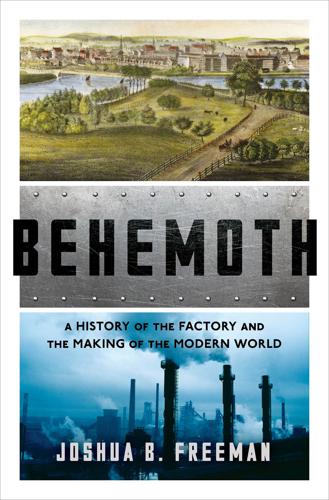
Behemoth: A History of the Factory and the Making of the Modern World
by
Joshua B. Freeman
Published 27 Feb 2018
Fairbairn’s firm built plants around the world, including a wool factory near Istanbul for the Sultan of Turkey and a giant spinning and weaving complex in Bombay.40 Nothing better captured the sense of invention in the textile districts of Britain than the “Round Mill” built at the Strutts’ factory complex in Belper. The three-story, circular stone building, divided into eight segments, apparently derived from Samuel and Jeremy Bentham’s panopticon. In its center stood an inspection station from which a supervisor could observe activity in the entire building, realizing the ideal of constant surveillance the Benthams championed. The Strutts may have adopted the Benthams’ design to minimize the risk from fire, as the central overlooker could shut off any of the building segments by closing doors, isolating the flames and protecting the rest of the structure.41 Though the Round Mill found few direct imitators, the idea of continual surveillance would become ever more part of the factory regime, never more so than in our own times.
…
See also names of specific automotive manufacturers artistic depictions of, 155–58 in China, 298 conversion for military production, 229–31 in Germany, 265–67, 388n increase in number of giant factories, 127–28, 143–44 innovative factory architecture, 133, 136–37, 140 number of workers, 143–44, 245 product standardization, 141–42 protests and strikes, 161–66 in Soviet Union, 171, 190–93, 199–200, 205 trade unions and labor organization, 129, 162–68 Autostadt (Volkswagen), 267 Avtograd, Soviet Union, 248, 385n AvtoVaz, 248 Awful Battle at Homestead, Pa, An (illustration), 102 B Building (Ford), 139, 142 B-24 bombers, 229, 230, 231 B-26 bombers, 232 Babbage, Charles, 10–12 backward integration, 90, 105, 138, 353n, 388n Bage, Charles, 15 Baines, Edward, 5–6, 11–12 Bangladesh, 274, 318 Bank Misr, 268 BASF, 267 Bell, Daniel, 244–45 Bellamy, Edward, 72 Belper, England, 8, 17, 45 Belt, The (play), 172 Bendix, William, 244 Benjamin, Walter, 85 Bennett, Harry, 132, 142, 168 Bentham, Jeremy, 17 Bentham, Samuel, 17 Bentinck, William, 37 Berger, Victor, 77 Berkman, Alexander, 102 Berlin, Germany, 250, 256 Berman, Marshall, xvi Bessemer, Henry, 92 Bethlehem Iron Company, 95 Bethlehem Steel Company, 107, 113, 116, 232, 245, 356n, 385n BF Goodrich, 292 Biddeford, Maine, 55 Big Money, The (Dos Passos), 117, 147 Biggs, Lindy, 144 Birmingham, Alabama, 110 Blake, William, 28, 96 Bloomberg Businessweek, 310 Bloomfield, New Jersey, 238 Bloomington, Indiana, 237, 382n Boeing, 232 Bologna, Italy, 329n Bolton, England, 21, 29, 62 Bombay, India, 17 Bomber City proposal, 231 Boott, Kirk, 345n Boott Mills, 53, 74–75, 104, 315–16 boredom, 30, 60, 64, 165, 258–59 Boston, Massachusetts, 47–48, 54, 84, 115 Boston Associates companies, 55–56, 65, 77, 79, 99 Boston Manufacturing Company, 47–51, 53–54, 341n, 343n Boswell, James, 3–4 Boulware, Lemuel R., 240, 242 Bourke-White, Margaret, 119, 149–54, 170, 170, 197, 213–14, 216–18, 377n Braddock, Pennsylvania, 97, 110 branding, 50, 290–93 Brave New World (Huxley), 147 Bridgeport, Connecticut, 240 Brockport, New York, 240 Bron, Saul, 221 Brontë, Charlotte, 31, 42 Brooklyn Navy Yard, 228 Brown, Moses, 45 Brownson, Orestes, 72–73 Buffalo, New York, 85, 116, 133 Buick, 137, 144 Bukharin, Nikolai, 183, 215, 220, 371n Burlington Free Press (newspaper), 61 Burnham, James, 226, 380n Burtynsky, Edward, 273, 288, 312 Cadillac, 290 Calder, John K., 188, 196 calico industry, 5, 11, 51–52, 60, 345n California, 232–33, 235, 237, 368n Calvert Investments, 322 Cambodia, 274, 281 Cambria Iron and Steel Works, 91, 91, 93, 314 Camden, New Jersey, 166, 236 Cameron, Ardis, 76 Canada, 76, 363n Capital (Marx), 19, 33–34, 94 capitalism as atavistic slogan, 227 convergence theory and, 227, 316 early British textile mills and criticism of, 33–35 emergence of industrial capitalism, 33–35 factories as essential to development of, 319 implantation of by outside merchant capital, 56 iron and steel industry “super-capitalism,” 103–5 socialism vs., 172–73, 175–76, 224–25, 278 carding, 6–7, 18, 24, 45, 341n Carding, Drawing, and Roving (illustration), 24 Carlyle, Thomas, 31 Carnegie, Andrew, 93–94, 100–101, 105, 111–12 Carrefour, 293 Carriage, Wagon, and Automobile Workers’ Union, 129 Castro, Fidel, 256 Cayenne, French Guiana, 46 Céline, Louis-Ferdinand, 147 Cement (Gladkov), 217, 373n cement industry, 138, 217, 249 Cendrars, Blaise, 87 Centennial Exhibition (1876), 80–82, 81, 84, 88, 107, 350n “Centennial Inauguration March” (Wagner), 80 Central Labor Institute, 177, 371n Chadwick, Edwin, 333n Chagall, Marc, 86 Chamberlin, William Henry, 215 Chandler, Alfred D., Jr., 290 Chaplin, Charlie, xii, 159–61, 209, 214 Charles River, 48–49 Chartists and Chartism, 38, 41, 88 Chase, Stuart, 215 Chelmsford, Massachusetts, 54 Chelyabinsk, Soviet Union, 196, 201, 203, 212, 221, 224, 374n, 379n Chengdu, China, 272, 302, 304, 306 Chevalier, Michael, 43–44 Chevrolet, 144, 165, 237, 290, 314 Chiang Kai-shek, 283 Chicago, Illinois, 106, 128, 167, 228–29 post-WWII strikes, 238 world’s fairs, 85, 145, 158 WWI-era labor movement, 114–17 Chicago Century of Progress Exposition (1933–34), 145, 158 Chicago Federation of Labor, 114 Chicopee Falls, Massachusetts, 55, 62, 72 child labor, 19, 42, 348n early British textile mills, 3, 21–25 efforts to regulate, 30–33, 41, 68 New England textile mills, 45–46, 59–60, 68, 71, 74, 77, 78, 347n, 349n outsourcing, 294 China Labour Bulletin, 306 Chinese industry.
…
See names of specific locations oil industry, 277–78, 290 Olds Motor Works, 123 Olmsted, Frederick Law, 104–5 Omaha, Nebraska, 85 On the Economy of Machinery and Manufacturers (Babbage), 10–11 O’Neill, Eugene, 150 organzine industry, 2–3 Orjonikidje, Sergo, 198, 200, 220 Otis Elevator, 239 Otis Steel, 149–50 Ottoman Empire, 5, 329n outsourcing, 291–96 Overman, Frederick, 89 Owen, Robert, 24, 26 Ozersk, Soviet Union, 246 Packard Motor Company, 133, 137, 362n painting, 86, 148, 151–59, 157, 366n Palace of the Soviets (Moscow, Soviet Union), 230 Panama-Pacific International Exposition (1915), 144–45 panopticon, 17 paper industry, 72 “Paradise of Bachelors and the Tartarus of Maids, The” (Melville), 72 Paris, France, 85–88, 100 Parsons, Talcott, 227 Partisan Review (magazine), 161 patents and patent royalties, 3, 7, 9, 54, 190, 343n, 346n Pawtucket, Rhode Island, 45, 66 Pawtucket Falls, 51 PBM Mariner flying boats, 232 Pearl River Delta, China, 282–83 Pegatron Corporation, 273, 296, 310, 322 Pellerin, Cora, 76 Pelton, O., 55 Pemberton Mill, 76–77, 79, 349n Pennsylvania, 46.

Future Politics: Living Together in a World Transformed by Tech
by
Jamie Susskind
Published 3 Sep 2018
Instead he developed the idea of disciplinary power, a power achieved through constant scrutiny, which he believed could be even more effective than the use or threat of force. Such power, unlike brute force, ‘reaches into the very grain of individuals, touches their bodies and inserts itself into their actions and attitudes, their discourses, learning processes and everyday lives’.5 Writing before the internet, Foucault compared modern society to Jeremy Bentham’s Panopticon, a prison in which each person is constantly watched in an ‘apparatus of total and circulating mistrust’.6 In a Panoptic society:7 There is no need for arms, physical violence, material constraints. Just a gaze. An inspecting gaze, a gaze which each individual under its weight will end by interiorising to the point that he is his own overseer, each individual thus exercising this surveillance over, and against himself.
…
OUP CORRECTED PROOF – FINAL, 28/05/18, SPi РЕЛИЗ ПОДГОТОВИЛА ГРУППА "What's News" VK.COM/WSNWS OUP CORRECTED PROOF – FINAL, 28/05/18, SPi РЕЛИЗ ПОДГОТОВИЛА ГРУППА "What's News" VK.COM/WSNWS IN DE X 3D printing 56–7, 178, 329 4D printing 57 Ackerman, Spencer 396 acquisitions by tech firms 318–19 action, freedom of 164–5, 166–7, 184 digital liberation 169 predictive systems 176 adaptive law 107–10 additive manufacturing (3D printing) 56–7, 178, 329 Affectiva.com 382 affective computing 52–3, 229 affirmative action 261, 268, 292 affordances 169–71 Afghanistan 50 Agoravoting.com 415 Agüera y Arcas, Blaise 172, 403 AI see Artificial Intelligence Airbnb Decentralised Autonomous Organisations 47 guest acceptance/rejection 290 individual responsibility 346 reputation system 289–90 sharing economy 335, 336 Taiwan 234 airport security systems 120–1, 186 Ajunwa, Ifeoma 418 Aletras, Nicolaos 372, 393 algorithmic audit 355–6 algorithmic injustice 279–94 data-based 282 discrimination 281–2 neutrality fallacy 288–92 rough and ready test 280–1 rule-based 283–8 well-coded society 292–4 algorithms 266 and code 94–5 and distribution 266–70, 278 and information 268–9 and participation 268 and price 269–70 of recognition 260, 275–8 scrutiny 132–3 Al-Khwār izmī, Abd’Abdallah Muhammad ibn Mūsā 94 Allen, Colin 393, 394 Allen, Jonathan P. 336, 417, 419, 429, 430, 431 Alphabet 318, 319, 320 altruism, limited 365 Amazon acquisitions 318, 319 Alexa 293 book recommendations 66, 147 commons 332 concentration of tech industry 318, 320 ‘cyber’ and ‘real’ distinction, disappearance of 97 Echo 134, 135 Kindle 151 machine learning 35 order refusal 106 robots 54 rules 116 working conditions 310 ambient intelligence see smart devices OUP CORRECTED PROOF – FINAL, 28/05/18, SPi РЕЛИЗ ПОДГОТОВИЛА ГРУППА "What's News" VK.COM/WSNWS 492 Index American Legal Realism 109 Amnesty International 148 amyotrophic lateral sclerosis (ALS) 32 Anderson, Berit 410 Anderson, Elizabeth 118, 394, 401, 418, 420, 426, 429 Amazon’s working conditions 310 justice in recognition 273 Android 64, 359 Angelidou, Margarita 381 Anglican Church 159 anonymity 231–2 Anonymous ‘hacktivists’ 221 antitrust law 357, 358 Anwin, Julia 403, 422 apathy 349 Apollo Guidance Computer 38 Apple acquisitions 318 concentration of tech industry 320 founders 314 Guidelines for app developers 189 gun emoji 148 homosexuality ‘cure’ apps 235–6 inflexibility of operating system 359 iPad 38 manufacturers’ working conditions 151 refusal to unlock iPhone of San Bernadino terrorist 155 Siri 37, 47, 293 taxation 328 ‘Think Different’ advertisement 6 watches 44 Aquinas, Thomas 215, 409 AR see augmented reality Arab Spring 150, 221 Arbesman, Samuel 193, 406 arbitrariness, rule-based injustice 284 Arendt, Hannah 9, 72, 163, 237, 415 Aristotle 368, 403, 411, 418 democracy 215, 222, 224, 234, 249 justice and equality 259 man as a political animal 222 morality 176 objective failures of recognition 272 political theory 9 work paradigm 300–1 Armstrong, Neil 38 Arneson, Richard 308, 425, 426 Aron, Jacob 376 artificial emotional intelligence 53 artificial general intelligence 33 Artificial Intelligence (AI) 30–7 affective computing 53 AI Democracy 212, 213, 250–4, 348 algorithmic injustice 293 automation of force 119, 120 blockchain 47 bots see bots commons 332 Data Deal 337 data’s economic importance 317 degradation argument 361 Deliberative Democracy 232 digital law 108–9, 110, 113 Direct Democracy 240 facial recognition 66 future of code 98 increasingly quantified society 61 machine vision 51 perception-control 149 political campaigning 220 political speeches 31, 360–1 post-politics 362, 365–6 predictions 173 privatization of force 116 smart devices 48 software engineers 194 staff scrutiny 267 superintelligence 365–6 totalitarianism 177 usufructuary rights 330 Wealth Cyclone 322 Wiki Democracy 245 Asimov, Isaac 198 Assael,Yannis M. 371 Asscher, Lodewijk F. 400, 408 Associated Press 30 AT&T 20 OUP CORRECTED PROOF – FINAL, 28/05/18, SPi РЕЛИЗ ПОДГОТОВИЛА ГРУППА "What's News" VK.COM/WSNWS Index Athens, classical 212, 214–15, 217, 222–3, 224, 228, 232 audit, algorithmic 355–6 augmented reality (AR) 58–9 mixed reality 60 perception-control 146, 149, 151–2, 229, 278 scrutiny 135 augmented things see smart devices Austria 235 authoritarianism 177–9 cryptography 183 state ownership of capital 329 authority 93 automated number plate recognition technology 49–50 automation of force 100, 119–21 autonomy 165, 167 Autor, David 428 Avent, Ryan 424, 425, 427 Azuma, Hiroki 247, 416 Babylon 77, 324 Bachrach, Peter 389, 391, 398 backgammon 31 Bailenson, Jeremy 407 Baker, Paul 422 Ball, James 428 Ball, Terence 368, 389 Baraniuk, Chris 432 Baratz, Morton S. 389, 391, 398 Barr, Alistair 421 Bartky, Sandra 126, 395 Bartlett, Jamie 388, 413, 417 Bates, James 134, 135 Baughman, Shawnee 407 BBC 373, 379, 381, 385, 405 Belamaire, Jordan 386 Belgium 129 Beniger, Andrew J. 369, 389 Benkler,Yochai 368, 370, 378, 398, 399, 400, 412, 416, 431 cooperative behaviour 45 networked information environment 145 smartphones 146 493 Bentham, Jeremy 126, 195 Berkman Center for Internet and Society 184, 405 Berlin, Isaiah 9, 166, 195, 368, 401, 403, 407 Berman, Robby 382, 384 Bernays, Edward L. 410 Berners-Lee, Tim 7, 48, 294, 367, 380 Bess, Michael 402, 434 Bhavani, R. 382 Bible 100, 124, 142, 257, 300, 317 BI Intelligence 428 Bimber, Bruce 369, 412 biometric analysis 52–3, 131, 186 Bitcoin 8, 46 Black Mirror 140 Blake, William 390 blockchain 45–7 automation of force 120 justice 264 smart contracts 106, 119 usufructuary rights 330 voting 240 Blue Brain project 33, 373 Bluetooth 48, 136 Bobbit, Philip 279 Boden, Margaret A. 373–4, 381, 382, 383 Bogle, Ariel 385 Boixo, Sergio 375–6 Bollen, Johan 416 Bolukbasi, Tolga 423 bomb-detecting spinach 51 Bonchi, Francesco 422 Booth, Robert 399 Borges, Jorge Luis 53 Bostrom, Nick 365–6, 372, 373, 379, 381, 382, 435 bots Deliberative Democracy 232–4, 235 network effect 321 Bourzac, Katherine 377 Boyle, James 331, 333, 430–1 Brabham, Daren C. 416 OUP CORRECTED PROOF – FINAL, 28/05/18, SPi РЕЛИЗ ПОДГОТОВИЛА ГРУППА "What's News" VK.COM/WSNWS 494 Index Bradbury, Danny 415 brain–computer interfaces 48, 169 Braithwaite, John 431 Braman, Sandra 389 Brazil 244 Brexit 4, 233, 239 Bridge, Mark 393 Bridgewater Associates 267 British Empire 18 British Library 66 Brown, Gordon 95, 96, 391 Brownsword, Roger 176, 403 Brynjolfsson, Erik 374, 382, 390, 393, 427, 431 capital 315, 316, 334 Burgess, Matt 379 Burke, Edmund 263 Byford, Sam 32 Byrnes, Nanette 392 Cadwalladr, Carole 410, 413 Calabresi, Guido 279 Cambridge Analytica 220 campaigning, political 219–20 Campbell, Peter 371 Canetti, Elias 29 capital 314–17 commons 331–4 sharing economy 335–6 state ownership 329–30 taxation 327–9 usufructuary rights 330–1 carbon nanotubes 40 Casanova, Giacomo 216, 409 Casey, Anthony J. 109, 112, 393, 394 Castells, Manuel 144, 394, 398 Castillo, Carlos 422 CBC 383 Cellan-Jones, Rory 371 censorship by Anglican Church 159 perception-control 143, 146, 148, 151, 156 private power 190 cerebral hygiene 170 CERN 65 Chan, Connie 428 charisma 349 Charles I, King 167–8 chatbots 30 checkers 31 Cheney-Lippold, John 132, 395 chess 31, 36 Chesterton, G.
…
P. 318 Morozov, Evgeny 15, 336, 369, 414, 431 motor insurance 267 movement, freedom of 192 MoveOn 221 Moxley, Lauren 410 Moynihan, Daniel 230 Mumford, Lewis 42, 153 Muoio, Danielle 383 Muse.com 48, 380 Mussolini, Benito 118 Nagel, Thomas 423 Nakamoto, Satoshi 45 names 130–1 nanotechnology 56 Nardi, Bonnie, A. 431 nationalism 273 National Security Agency (NSA) FASCIA 67 HAPPYFOOT 67 MUSCULAR 156 phone taps 125 terrorists, identification of 35, 132 Nelson, Eric 429 Nelson, Justin 434 neo-Nazism 235, 236 Netflix 147, 269 network effect 320–2 network neutrality 157–8 neuroelectronics 41 neuroprosthetics 51 NeuroSky 48 neutrality fallacy 288–92 news fake 150, 230, 233, 234 perception-control 146–7, 150, 151, 152, 229 shared values principle 353–4 Newton, Casey 377 Newton, Sir Isaac 78 New York 130 New York Times 392 OUP CORRECTED PROOF – FINAL, 28/05/18, SPi РЕЛИЗ ПОДГОТОВИЛА ГРУППА "What's News" VK.COM/WSNWS Index New Zealand 24, 244, 276 Ng, Jason Q. 399 Niblett, Anthony 109, 112, 393, 394 Nichols, John 400 Nicholson, Peter P. 389 Nietzsche, Friedrich 88 night watchman state 265 Nike Fuelbands 44 Nissenbaum, Helen 170, 402 Nobel, Alfred 20 Nobel prize for Chemistry 56 Norman, Donald A. 401 normative analysis 83–5 norms 274, 275 Novartis 51 Noveck, Beth Simone 220, 410, 416 Nozick, Robert 263–4, 313, 418, 426 nuclear power 14 NYC Mayor’s Office of Technology and Innovation 377 Obama, Barack 4, 95, 219–20, 230 Ober, Josiah 411 objective failures of recognition 272 objectivity, and the neutrality fallacy 292 Obodovski, Daniel 380 Occupy 150, 221 Octobot 55 Odysseus 165–6 Olson, Parmy 430 O’Malley, James 380 O’Neil, Cathy 418, 419, 421, 433 Ong, Walter 111, 393 Onlife Initiative 368 online groups 221 Oord, Aäron van den 371 open-source production 244, 333 open-source software 243–4 opportunity, equality of 260, 261, 263, 270, 294 oppression 273 Oracle 427 oral cultures 111–12 O’Reilly, Tim 391, 392, 393 Original Sin 349 507 Orwell, George 390, 415 intellectual honesty and balanced judgment, disappearance of 237–8 Nineteen Eighty-Four 12, 122, 151 political speech 81 ostracism 217 overtly unjust rules 283–4 Owlchemy Labs 319 Oxford English Dictionary 79 Oxford University 30 Paine, Thomas 167–8 Pakistan 50 Palfrey, John 380 Panopticon 126 Parfit, Derek 418 Parijs, Philippe van 306, 425, 426 Paro 55 participation and algorithms 268 Pascal, Blaise 40, 41 Pasquale, Frank 397, 399, 400, 404, 406, 419, 422, 423, 428, 432, 434 algorithms 194 Google 351 Pateman, Carol 410 patents 315, 316, 324, 332, 333 patriarchy 349 Pearson, Jordan 421 Penney, Jon 395 Penny, Timothy J. 412 perception-control 89, 123, 142–52 Deliberative Democracy 229 digital liberation 170 digital lifeworld 146–50 implications 150–2 justice in recognition 278 public and private power 154, 156–7, 160 separation of control 358–9 twentieth century 144–6 Pericles 214, 224, 253 Perry, Walter 397 Persia 19 personal property 324 person-specific pricing 269, 270 OUP CORRECTED PROOF – FINAL, 28/05/18, SPi РЕЛИЗ ПОДГОТОВИЛА ГРУППА "What's News" VK.COM/WSNWS 508 Index persuasion 142 pervasiveness of technology 43–4 Perzanowski, Aaron 325, 394, 429, 431 Peterson, Andrea 385 Pettit, Philip 167, 401 Philadelphia 130 Phillips, Anne 368 philosophical engineers 6–9, 294, 347 Piketty, Thomas 314, 327–8, 426–7, 430 PKK 236 PlanIt Valley, Portugal 50 Plato 389, 397, 409, 413, 432 democracy 212, 251 memory 136 philosophers 347 political theory 9 property 77 Ring of Gyges 232 Plaugic, Lizzie 414 Playstation VR 59 Pocock, J.

Lab Rats: How Silicon Valley Made Work Miserable for the Rest of Us
by
Dan Lyons
Published 22 Oct 2018
There’s one aspect of modern work that is especially harmful, and that’s the ever-increasing use of electronic surveillance. Privacy laws make it illegal for the state to spy on us. (Supposedly, anyway.) But employers are bound by no such restriction. You’re an employee at will. They can snoop on you as much as they want. And they do—more and more each year. At Work in the Panopticon In the eighteenth century, British philosopher Jeremy Bentham designed an ingenious prison in which a single guard could control a large number of inmates. It was a circular building where a guard sat in a central tower and prisoners were placed in cells around the periphery. A viewing mechanism enabled the guard to watch any prisoner at any time.
…
A viewing mechanism enabled the guard to watch any prisoner at any time. Since prisoners could not tell when they were being watched, they would have to assume that they were always being watched. Therefore they would behave. Instead of needing an army of prison guards, you could exploit the psychology of the inmates and get them to control themselves. Bentham called this the panopticon, from Greek roots meaning, roughly, “to see all.” The idea didn’t really fly as a way to build prisons, but it is often used as a metaphor about power and control in modern society, most notably by French philosopher Michel Foucault. Researchers who study workplace surveillance often cite Foucault’s work when they discuss the “panoptic effect” that surveillance exerts on employees.
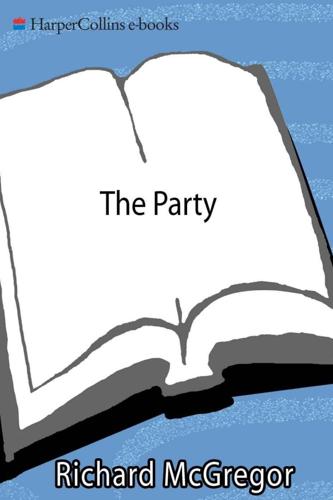
The Party: The Secret World of China's Communist Rulers
by
Richard McGregor
Published 8 Jun 2010
The United Front Department, as its name suggests, has a brief to lock in support for the Party in power centres outside of its direct purview, like overseas Chinese business communities in Hong Kong and Taiwan, and in social organizations at home. Throughout the system, the Party has positioned itself like a political panopticon, allowing it to keep an eye on any state or non-state agency, while shielding itself from view at the same time. The panopticon was the innovative penitentiary designed by Jeremy Bentham, the eighteenth-century English philosopher, which allowed a handful of wardens to watch inmates without being observed themselves. China is not one giant prison, as Qian Qichen, the former foreign minister, used to say in an acid rebuttal of western criticism of the country’s human rights records.
…
Abe, Shinzo, 271–2 academia, focus of, 18–19 Africa, xv AIDs campaigners, 3 airports, 19 All-China Federation for Industry and Commerce, 79 All-China Federation of Trade Unions, 213–14 All-China Lawyers’ Association, 189, 190 Aluminium Company of China, 57–61, 62, 224–6 aluminium sector, 219, 224–6 Amway, 210, 211, 212–13 Anhui beauty contest, 176 famine, 258–9 party chiefs and Idiot Seeds, 195 anti-graft body see Central Commission for Discipline Inspection anti-Japanese protests, 270–72 anti-secession law, 129 arms race, 106 Ashton, Catherine, xvi Asian financial meltdown, 45 Atrophy and Adaptation (Shambaugh), 266 Australia, xv Avon Lady, 210, 211, 213 Baidu, 187 Banister, Judith, 260, 292n Bank of China, 50, 53, 158 Bank of Communications, 52–3 banknotes, 244 banks, xi Party’s role in, 51, 52–3 reform, 50 response to global financial crisis, 68 status of, 204 see also individual banks Baoshan Steel negotiations, 54–5 Barmé, Geremie, 242, 245, 271 Basel II, 67 beauty contest, 176 Becker, Jasper, 232 Beijing mayors, 16, 144, 168 new airport, 19 Olympics, 170–71, 186 Beijing Hotel gathering, 34, 35, 38–40 Beijing University, centenary, 79, 80 Bentham, Jeremy, 17 BHP-Billiton, 58, 59 ‘big-headed babies’, 183, 184–5 black-collar class, 140–41 Bo Zhiyue, 121 Boao Forum, ix–xi Bodyguard Bureau, 12 Bond, Sir John, 52–3 Boxer rebellion, 250 Brady, Anne-Marie, 236, 268 bribery/corruption, 75, 93–100, 138–41, 172, 183, 191, 267 see also Central Commission for Discipline Inspection Burns, John, 80, 81 Bush, George Snr., 43 Caijing on bankers, 68–9 Guo Shuqing’s interview, 51 on Rio-Tinto bid, 60 on Shanghai corruption cases, 161 car number-plates, of Party officials, 14 car sales, 2009, xvi Casino Royale (film), 238 Catholic Church, 11–12 CCTV, 185, 250 cell-phones, 39 censuses, 258–9 Central Commission for Discipline Inspection, 137–8 beneficiaries of, 147 failing of, 145–7 investigation procedure, 142–5, 168–9 on Shanghai corruption cases, 160–61, 164–6, 167–9 structure and staffing, 141–2 Central Committee, 12 Central Committee Taiwan Work Leading Small Group, 21 Central Guards Unit, 12 Central Military Commission, 107 Central Organization Department, 17 appointment and promotion, 81, 82–3 and ethnic minorities and other parties, 79 internal tension, 74–6 invisibility, 71–2, 73, 74, 280n against local authority, 90–93 members’ files, 77–8 nature of, 69 origin and historical background, 76–7 on Party’s disaster relief, 192–3 refined and tightened, 41 and state enterprises, 46, 72–4, 84–9 see also nomenklatura system Central Party School, 226–8 Central Politics and Law Committee, 25, 189, 190 Central Propaganda Department, 17, 229 media control, 184, 186, 237, 248–9; see also media, censorship military propaganda, 121–2 reinforced, 41 roles of, 235–7, 248–52, 253 in Sanlu case, 189 Taiwan mission, 122 centrally planned economy, metaphor for, 37 CEOs, 89 reshuffled, 84–5 status symbol, 8–9, 10 stock options of, 100–103 Chai Junyong, 164 Chan, Hon, 80, 81 Changchun Chen’s trial in, 166 corruption cases, 139 Changzhou, 220–22 Charter 08, 261–2 Chen Ailian, 5 Chen Deming, 83–4 Chen Jinhua, 55 Chen Liangyu, 135, 136, 161 background, 155–6 confronts Wen Jiabao, 163–4 defends Shanghai, 151 investigation on, 138, 164–6 trial and prison life, 166 Chen Shui-bian, 124 Chen Tonghai, 64 Chen Xiaodan, 65–6 Chen Xitong, 144, 168 Chen Yuan, 40, 64–5, 66 on communism, 34, 37 daughter of, 65–6 ideas of, 38–9 Chen Yun, 37–8, 200, 239 Chen Zhili, 140 Cheung, Steven, 41, 176–7 children, poisoned by milk powder, 172, 183, 184, 185, 186 China Construction Bank corruption cases, 145–6 mass lay-offs, 50 Party’s role in, 51, 52 China Development Bank, 59, 65 China Executive Leadership Academy, Pudong, 29, 30 China Inc. see state enterprises China Investment Corporation, x–xi China Mobile, 84, 85, 101 China National Petroleum Corp. see PetroChina China Netcom, 84, 86–8 China People’s Political Consultative Conference, 204 China Pudong Cadre College, 29, 30 China Telecom, 84, 87 China Unicom, 84, 85 China Youth Daily, 248, 250–51 Chinalco, 57–61, 62, 224–6 Chinese Academy of Social Sciences, 109 Chongqing, corruption cases, 139 Clinton, Hillary, xiv–xv CLSA, 199 CNOOC, 54, 62 Cole, Bud, 121 communism, 18, 35, 76 redefined, 34, 37 Confucius, 32–3 congress see National People’s Congress corruption see bribery/corruption COSCO, 102 cover-up strategy, 233–4 Crillon Ball, 66 Cultural Revolution, 14 launching of, 149 Party’s verdict, 234, 245 Dai Bingguo, xii, 277n Dai Guofang, 220–21, 222, 223 dairy industry, 181–2, 183 see also Sanlu Dalai Lama, xvi Dandong, 174–5 Daqing, 113, 115 decentralization, 177–8 defence budget, 111–12 democracy Chinese leader’s interpretation, 20 demand of, 31, 261 pro-democracy protests see Tiananmen Square massacre in Taiwan, 123–4, 125, 126, 128, 130 democratic parties, 15 Dench, Dame Judi, 238 Deng Xiaoping, 74, 239 on Idiot Seeds, 195 image of, 6 as leader of liberalizers, 34 on Mao, 245 new model of reform, 41–2 partnership with private sector, 197, 198 perfects socialism, 194, 196 photos of, 38 power behind the scenes, 154 priorities economy, 106 returns to Leninist roots, 14 rural reform, 200 Shanghai policy, 150 southern tour, 41, 201–2 stratagem, xv and Tiananmen Square Massacre, 105 Dickson, Bruce, 214, 218–19 Ding, James, 227 Ding Guan’gen, 17 direct sales industry, 209–13 Director of the Beijing Representative Office (Wang Xiaofang), 95–6 Dongfeng, 216–17 Downs, Erica, 63 Dukakis, Michael, 104 East Eight Blocks, 158 East Hope see Liu Yongxing economy impact of reform on, 42–3 unsustainability of, 269 education institutions Party control of appointment, 79 textbook censorship, 235, 245–6, 249–50 elite networks, 8–9 entrepreneurs Party membership, 31, 32 in Party schools, 226–8 rich list, 205–7 see also individual members environment as benchmark for promotion, 90 central vs. local, 90–93 Party policy on, 269 ethnic protests, 111, 264 European Union, xi Falun Gong, 82, 173, 211, 212, 264, 269 famine, 229–30, 231–4, 254, 255–60, 292n Fang Ning, 33 Far Eastern Economic Review,, 46 farmers, 200, 202 Feng Jun, 227 Fengyang, 258–9 Fewsmith, Joseph, 270 Fidelity, 101 financial system, 44–6 see also banks Fonterra, 182, 183, 186–7, 188 food safety, scandals, 183–5, 191 see also Sanlu foreign bankers, ix–xii, 277n foreign enterprises joint venture, 216–17 number of employees, 214 Fortune 500, 56 France elite networks, 9 Tibet issue, xvi Freezing Point, 248, 250–52 Friedman, Milton, 40–41 Fu Chengyu, 54, 56 Fu Furong, 213 Fu Jianfeng, 170, 186 Gang of Four, 149 global financial crisis, 266 banks’ response, 68, 269 Beijing’s response, 163, 269 global financiers, ix–xii, 277n global reserve currency, xv Global Times, 272–3 Goldman Sachs, 61, 181 golf, 145 Gome, 207 Gorbachev, Mikhail, 35 government imperial officialdom, 77 secret Party rule of, 14–17, 21–5, 33 see also public sector Great Leap Forward, 231–4, 254, 255–60, 292n Lushan verdict, 243 Gu Mingzhi, Major General, 104, 108–9 Guangdong, corruption cases, 139 Guinea, xv Guo Shuqing, 50–52, 53, 67 Gutierrez, Carlos, 83 Gymkhana Club, 9 Haier, 194, 198–9, 202–3 Han Dynasty (ad 25–220), Civil Service Ministry, 77 He Guoqiang, 279n He Weifang, 22–3, 26, 125 heavy industry, 219, 221 Henan, 255–8 history, Party’s verdict, 235, 236–9, 245–6, 248–51 Ho, Herbert, 211 Holwill, Richard, 210, 211 Hong Kong, 21 Hoogerwerf, Rupert, 157 rich list, 205–7 Hope, 215 HSBC, 52–3 Hu Angang, 40 Hu Haifeng, 148 Hu Jia, 25–6 Hu Jintao, 74–5, 108, 148, 248 claims to be elected, 4 on corruption, 138–9 development policies, 178–80 domestic problems, 272 and economy/military, 105, 106–7, 116, 117 image-management, 5–6 on Mao, 246 meets Abe, 271–2 political career, 7 rivalry with Jiang, 154–5 and Shanghai, 153 speech in congress, 8 succession, 153–4, 163 on Taiwan issue, 127, 129–31 theory of, 172 titles of, 15–16, 279n Hu Shuli, 51–2, 282n Hu Yaobang, 74, 154, 248 encourages political reform, 36 rural reform, 200 Hua Guofeng, 154 Huang, Alex, 130 Huang, Yasheng, 151, 199, 200 Huang Guangyu, 207 Huang Hongfang, 32 Huang Ju, 154 Huawei, 204 Hubei, 179 Hum, Sir Christopher, 157 ‘human flesh search engines’, 180–81 Human Organization Department see Organization Department, Human Hunan, 177 hybrid market economy, xiii Idiot Seeds, 194, 195, 201 India, elite networks, 9 Industrial & Commercial Bank of China, 45, 50 inequality, 266–7 International Monetary Fund, xv internet controlled for political events, 2 against corruption, 144, 180–81 on history textbook, 245–6, 252 lack of Party website, 20–21 on Sanlu, 185 search for democracy, 20 Iraq, 116 iron ore, 58 Japan, 271–2 elite networks, 9 protests against, 238–9, 269–70 Ji Haisheng, 102, 103 Jia Qinglin, 7–8, 25, 154, 279n Jiang Chaoliang, 52–3 Jiang Mianheng, 87, 283n Jiang Ping, 41 Jiang Qing, 149 Jiang Sixian, 205 Jiang Yanyong, 239 Jiang Zemin, 107–8, 269 at Beijing University centenary, 79 careers, 81 and Chen Xitong, 144 claims to be elected, 4 defends Zhou Zhengyi, 161 image of, 6 and military apparatus, 105–6, 116, 117 and private sector, 197, 200–201, 208–9, 217 rehearses his marching drills, 104 retires to Shanghai, 163 rivalry with Hu, 154–5 Selected Works, 165 and Shanghai gang, 148–9 Taiwan policy, 128–9 takes up and hands over power, 153–4 theory of, 172 on Zhu Rongji, 43 Jiang Zhenghua, 260 Jiangsu Tieben Iron & Steel, 220–23 Jin Zhong, 148 joint venture, 216–17 journalists, 184, 190, 252 and corruption reports, 160 demand freedom, 30, 80 on local officials, 180 judges, 15, 24, 25, 93, 114, 137 June 4 protest see Tiananmen Square massacre Justice Bureau, 190 Kremlinology, 18 Kuomintang, 123–5 labour law, 214 Ladany, Laszlo, 77 Lai Changxing, 159 law firms, Party control of, 23 lawyers, 15, 25, 30, 265 Party membership, 23 in Sanlu case, 189, 190, 193 leadership battles over, 3 succession, 153–4, 163 Lee Teng-hui, 127–8 Legal Daily, on Sanlu case, 187 legal professionals see judges; lawyers legal system Party control of, 15, 22–5 PLA members in, 114 see also judges; lawyers Lenin, Vladimir establishes Orgburo, 76 ruling model, xiii, 12, 14 Lenovo, 204 ‘les énarques’, 9 ‘Li Bu’, 77 Li Changchun, 279n Li Changjiang, 183, 191 Li Datong, 235, 248, 249–52 Li Fangping, 189, 190 Li Fanping, 264, 265 Li Gang, 70, 98–9 Li Jijun, Lieutenant-General, 245 Li Jinai, General, 107 Li Ka-shing, 158 Li Keqiang, 23–4, 279n Li Lihui, 53 Li Liming, 101, 102, 103 Li Peng, 81, 148, 239 Li Rucheng, 216 Li Rui, 240–41, 242–4, 247 Li Ruigang, 238 Li Ruihuan, 253 Li Weimin (fictional), 95–6 Li Wenyao, 257–8 Li Xiaopeng, 283n Li Yongzhong, 146 Li Youxing, 142 Li Yuanchao, 72, 75, 89–90, 91–2 Li Zhaoxing, 125 Liang Jing, 179 liberal economics, 28–9 Liberation Army Daily, 107–8 Liberation Daily, 242 life style of top-ranked party members, 10 of urban citizens, 27 The Lighthorseman, 242 Lin Chong-pin, 134 Linfen, 82 Liu Baiyu, 78 Liu Mingkang, 66–7 Liu Shihui, 265 Liu Xiaobo, 261–2 Liu Yonghao, 215 Liu Yongxing, 194, 219, 220, 223–5 Liu Zhihua, 138 Liu Zhongde, 229, 237 local economy, 174–5 localities vs. central, 90–93, 172–4, 180–81 competitiveness, 175–7, 178 and new tax policy, 179–80 Lou Jiwei, x–xi, 59–60 Lu Hao, 236 Lu Weidong, 20–21 Luo Gan, 25 Lushan meeting, 243 Ma De, 93–4, 97–8, 99–100, 103 Ma Jinlong, 218 Ma Ying-jeou, 126, 130 Mackenzie, Kelvin, 18 Major, Bob, 186 Mao Yushi, 261 Mao Zedong, 105, 253 and Central Organization Department, 76 death, body preservation and verdict on, 244–6, 247 and Gang of Four, 149 and Great Leap Forward, 231 image of, 6, 246–7 at Lushan meeting, 243 nominates successor, 154 on Party and people, 13–14 status of, 241–2 market reforms, outcomes of, 42 Marketing Dictatorship (Brady), 236 McKinsey & Co, 88, 181 meals, invitation for, 71 media on anti-Japanese protests, 271 censorship, 235–6, 237–8, 247–8, 250–52 on corruption, 144, 155, 160, 161, 166 focus of, 18–19 on food scandals, 183, 184 less restriction on, 268 official campaigns on military loyalty to Party, 107–9 Party’s guidelines for, 237, 248–9 Sanlu’s PR effect on, 185 on Taiwan issue, 127 uniformed announcement of new leadership, 4 melamine, 184–5 Mengniu, 181–2 Merrill Lynch, 47, 48–9 Miao Shouliang, 206 middle class, 205, 266 money worship, 132–3 rich list, 205–7 size of, 28 milk powder case see Sanlu Miller, Alice, 21 mining, 82, 192–3 Ministry of Personnel, 80 minying, 200 Mitsubishi, 54–5 Moeller Villa, 161 money worship, 132–4 Morgan Stanley, 52, 181 Mulvenon, James, 108 Murdoch, Rupert, 17 Naipaul, V.S., 30 name cards, 70 Namibia case, 148 Nanjing, 180–81 National Day parade, 263–4 National People’s Congress, 49 1977, 44 1987, 36 2002, 153, 154, 208 2004, 129 2007, 1–4, 11–12, 67, 125, 137 2009, 24, 25 Nationalist Party, 123–5 navy, xvi NCO system, 117, 118 new conservatives, 38–9 New York Times, 245 New Zealand, in milk scandal, 188 NGOs, 211 Ni Hanwei, 31 Nian Guangjiu, 194–6, 201 9/11, 270 Ningbo, 162 Nissan, 216–17 Niu Yuqing, 146 Nixon, Richard, 19–20 nomenklatura system, 78–81 North Korea, 174, 175 novels, genre of, 144 Obama, Barack, xvi oil legacy of Daqing, 113, 115 overseas interest, 116 shortage, 63 old boy network’, 9 Olympics, 170–71, 186 one-child policy, 280n O’Neill, Jim, 277n Organization Department, Human, 71 Orgburo, 76 Ouroussoff, Nicolai, 19 Ouyang Song, 192 Pan Junxiang, 234–5 Pan Yue, 39–40 Paris, Crillon Ball, 66 Party membership as a commitment, 11 change of political attire, 66 mid-2009, xiv personal files, 77–8 promotion of, 32 students and the rich expand, 31–2 Party schools, 29, 30, 226–8 patriotism campaign, 236, 270 Paulson, Hank, xi peanut products scandals, 191 Pei, Minxin, 267 Peking University, centenary, 79, 80 Peng Dehuai, 243 People’s Armed Police, 111 People’s Daily on banking system, xi on Japan, 238 People’s Liberation Army, 103 challenges of modern society, 111–12 commercial empire, 114 dual leadership system, 117–20, 121 founding principle of, 105 media campaigns on PLA’a loyalty to Party, 107–9 modernization of, 105–6, 111 officer class, 120–21 Party’s control of, 110 propaganda, 121–2 refuses Tiananmen Square crackdown, 109–10 security and domestic duty, 111, 113–14, 115 on Taiwan issue, 128–9 personal consumption, 269 pet food scandals, 183, 184–5 Petitioner’s Village, 2 PetroChina, 61–3, 116 Ping’an, 204–5 Politburo members above corruption investigation, 147 biography of, 7–8 responsibilities of, 13 selecting of, 12 similarity of appearance and career history, 1–2 structure, 278 9n political commissar system, 118–20 political liberals, 38 political opponents controlled for political events, 2–3 less confrontational treatment of, 268 marginalization of, xiv punishment of, 232 Political Struggles in the Age of China’s Reform and Opening Up (Yang Jisheng), 254 post-Maoist governing model, xii, xiii poverty definition, 278n number of poor declines, xvii, 28 power-worship, 96 private sector, 39, 194 confusion of status, 199–200, 203–4 relationship with Party, 31, 32, 79, 193, 196–8, 200–202, 206–9, 215–19 in Shanghai, 151 see also entrepreneurs; individual companies Procrustes, 235 protests anti-Japanese protests, 270–72 to Shanghai building development, 135–7, 164, 167–8 see also ethnic protests; Tiananmen Square massacre public sector appointment, 73–5, 81, 82–3, 284–5n; see also nomenklatura system bribery/corruption, 75, 93–100, 138–41, 172, 183, 191; see also Central Commission for Discipline Inspection system in history, 77 Pudong, 150 Qian Lieyang, 143, 222 Qian Qichen, 17 Qin Yu, 156, 165 Qingdao, 202–3 Qinheng prison, 166 raw materials, 219 see also oil real estate, 155, 179 scandals, 135–7, 158–60, 164, 167 Red Army see People’s Liberation Army ‘red machines’, 8–10, 13 religions, 211 Ren Zhengfei, 204, 206 Renminbi, xv, 244 rich list, 205–7 rich-poor gap, 30 Rio-Tinto, 58–61 Robinson, Tom, 37 rural free-market, 36, 200, 202, 267 Russia China’s loan to, xv cost of disintegration, 131 Sanlu, 169, 172, 181, 182, 264 cover-up strategy, 186–7, 233 emergency meeting, 170, 171 media appearance, 185–6, 187 parent complants, 184, 185, 188–9 Party’s control of, 193 product tests, 186 trial and verdicts, 190–91 Sapio, Flora, 141, 142–3 SARS, 16, 233, 239, 268 SASAC, 86 Schapira, Paul, 61 school textbooks, censorship, 235, 245–6 security, for political events, 2–3, 263 Seeking Truth, 107 Service, Robert, xiii Shagang steelworks, 207 Shambaugh, David, 121, 265–6 Shanghai city development, 29, 162–3 corruption cases, 135–7, 139, 144, 158–61, 164, 167–9 leadership compound, 14 past and present, 149–53, 234–5 status, 138 Shanghai gang, 149–53 crashed, 166–7 in Standing Committee, 154 see also Chen Liangyu Shanghai History Museum, 234–5 Shanghai Industrial, 101 Shanghai Petrochemical Corp., 47–9 Shanghainese, 152–3 land disputes, 135–7, 158–60, 164, 167 Shao Daosheng, 98 Shao Depeng, 217 Shen Ting, 159, 164, 167–8 Shen Wenrong, 207 Shenzhen corruption cases, 181 Deng’s tour to, 41 Shijiazhuang, 174 Shirk, Susan, 129 shuanggui (double regulation), 142–3 Sichuan corruption cases, 139 earthquake, 192 Singapore COSCO in, 102 Suzhou industrial park, 83 Sinified Marxism, 67 Sinology, 18–19 Sinopec, 63–4 society, infiltrates Party, 30 Song Ping, 36 Song Xiaojun, 119–20, 125, 132 southern tour, 41 Southern Weekend, 185–6 Soviet Union disintegration of, 35, 131 nomenklatura system, 78, 79 Orgburo, 76 Party’s verdict on collapse of, 237–8 succession, 154 Stalin, Joseph, 76 Standing Committee, 13, 278–9n above corruption investigation, 147 Shanghai gang in, 154 state assets debates over, 40 Deng’s model on, 42 new conservatives on, 35, 39 state enterprises competition and profitability, 53–6 Deng’s model on, 42 new conservatives on, 39 Party’s low profile in, 21–2, 49 pay structure for CEOs, 102–3 personnel control of, 46, 68–9, 73–4, 84–9 reform, 44, 67–8 split personalities of, 53, 64 stock options, 100–101 tax from, 267 workers lay-offs, 42–3, 50 see also individual enterprises steel industry, 220, 221, 222 Stewart, Jackie, 162 Storming the Barricades (Zhou Tianyong), 69 students loans, 173 money worship, 133 view of Party, 31–2 Su Shulin, 64 Su Zhiliang, 245, 246 Sudan, 62 Suihua, 97–9, 116 Sun Jingkan, 160 Suzhou, 83 corruption cases, 139–40 Tai lake (Taihu), 89, 90, 91–2 Taiwan issue Jiang and Hu’s policies, 106–7, 127–30, 134 nationalist stand on, 131–2 nature of, 122–3 one-China policy, 127–8 Taiwanese opinions, 125–8 see also Kuomintang Tang Dynasty (ad 618–907), official vetting, 77 tax policy, 178, 179 telecommunication, 233–4 telecoms companies, 84–9 terror, 265 textbook censorship, 249–50 Thatcher, Margaret, 202 38th Army, 109–10 Thornton, John, 88 Tian, Edward, 84, 86–9 Tian Fengshan, 98 Tian Wenhua charged, 172 downfall, 188 dual responsibility dilemma, 186 leads emergency meeting, 171 titles of, 182–3 trial and charge, 190–91 Tiananmen Square massacre, 105, 253, 262 discussion suppressed, 35 impact of, 34–5, 36, 201, 202 Party’s verdict, 239 post-event investigation, 36 splits Party and PLA, 109–10 Tibet, 111 Tieben see Jiangsu Tieben Iron & Steel The Times of Deng Xiaoping (Yang Jisheng), 253–4 Todai elite, 9 Tombstone (Yang Jisheng), 229, 230–31, 232 sourcing of, 254–5 trade union, 213–14 Tsai, George, 126–7, 130 Tsang Yok-sing, 21 21st-Century World Herald, 247 ‘Twenty-Seven Perfections’, 77 UBS, 199 Unhappy China (Wang and Song), 112, 132 United Front Department, 17 United Front department, 235 United Kingsom, elite networks, 9 United States aircraft carrier patrols seas around Taiwan, 128 elite networks, 9 official appointment, 74 patriotism, 270 pet food scandals, 183, 184–5 universities, 79–80 Unocal, 54 urban citizens, 27 Urumqi, 111, 139 Vatican, and China, 11–12 vertushka, 13 voting, 11–12 wages, 56 Wal-Mart, 213–14 Wan Yanhai, 3 Wang Jianzhou, 85 Wang Juntao, 23–4 Wang Minggao, 140, 144 on corruption cases, 148 interview with, 71, 72 lack of name card, 70–71 Wang Qishan, ix, xvi Wang Shengjun, 24 Wang Shenyi, 99 Wang Shi, 207–8 Wang Weizhi, 231, 258–60 Wang Xiaodong, 112 Wang Xiaofang, 95, 96 Wang Xuebing, 158 Wang Yang, 234 Watergate scandal, 164 Wen Jiabao, xvi, 7, 279n confronted by Chen Liangyu, 163 on democracy, 20 development policies, 178–80 solves Sinopec oil dispute, 63 on Tieben case, 221 titles of, 15–16 visits earthquake zone, 192 wife and son of, 147–8 on Zhang Enzhao’s case, 145 Wen Wei Bao, 21 Wenzhou, 215, 217–18 ‘west mountain meeting’, 22–3 Wolf, Martin, 237, 269 World Trade Organization, 202, 266 Wrath of Heaven, 144, 168, 169 writers/artists, 96 Wu, Joseph, 123, 124 Wu Bangguo, 7, 279n Wu Lihong, 90–91 Wu Si, 74 Wu Xiaobo, 209 Xi Jinping, 8, 228, 279n Xia Chuntao, 247, 251–2 Xia Jianming, 30 Xiamen, corruption cases, 139, 159 Xiang river, 92–3 Xiao Chaoxuan (fictional), 95–6 Xiao Yaqing, 57, 58, 60–61 Xinhua news agency interview with Zhang Ruimin, 198 on peanut product scandal, 191 secret internal reports, 230, 253 on Tian’s downfall, 188 Xinjiang, 111, 139 Xinjiang Soldier Corps, 114 Xintiandi, Shanghai, 29 Xinyang, 255–8 Xu Guanhua, 140 Xu Haiming, 135–6, 137, 153, 157, 160, 164, 167 Xu Kuangdi, 151, 156 Xu Qinxian, Lieutenant-General, 109–10 Yan Xuetong, 104 on diplomatic policy, 132 on Hu’s policies, 107 on military, 122 on money worship, 132–4 on Taiwan issue, 131–2 Yan’an rectification, 77–8 Yang, Andrew, 120 on Taiwan issue, 122, 126, 129 Yang Bin, 206 Yang Jiechi, 277n Yang Jisheng, 229–31, 232, 239–40, 252–6, 258, 259–61, 265 Yang Mianmian, 203 Yang Ping, 39, 40 Yang Rong, 206 Yang Shangkun, 239 Yang Yuanqing, 204 Yingkou, 175 You Ji, 121 Youngor, 216 Yu Dehong, 232, 255–7, 260 Yu Jianrong, 179 Yu Jie, 246–7 Yu Minhong, 227 Yu Qiuli, 113 Yuan Weishi, 70, 78–9, 249–50, 252 Yuanhua case, 7–8 Yung Chunchang, 119 Yunnan, 181 Zeng Qinghong, 74, 81–2 Zhang Baoqing, 170, 173 Zhang Chunjiang, 88 Zhang Dahong, 216 Zhang Dejiang, 208–9 Zhang Enzhao, 145–6 Zhang Peili, 147–8 Zhang Quanjing, 75 Zhang Ruimin, 194, 198, 203 Zhang Yimou, 121–2 Zhao Ziyang, 80, 154, 254 encourages political reform, 36 image blackout, 35 rural reform, 200 Zhejiang, 209 Zheng Bijian, 106 Zheng Enchong, 135, 137, 159, 161, 167 Zheng Xiaoyu, 183 Zhengtai Group, 218 Zhou Enlai, 113, 123, 253 Zhou Qiren, 220, 223 Zhou Ruijin, 31, 154 Zhou Tianyong, 69 Zhou Yongkang, 24–5, 81–2, 279n Zhou Zhengyi, 157–8, 159, 161–2, 167 Zhu Feng, 62–3 Zhu Peikun, 32 Zhu Rongji, 148 careers, 81 financial system reform, 44–6 misread by Western leaders, 43 state enterprise reform, 44 visits Huawei, 204 Acknowledgements Journalists rely on the charity, goodwill and democratic impulse of people the world over.
…
China is not one giant prison, as Qian Qichen, the former foreign minister, used to say in an acid rebuttal of western criticism of the country’s human rights records. By many measures, China is freer than it has ever been. But the Party, in retreating from the private lives of Chinese, has made sure it secures the heights of the political battlefield along the way. Like the panopticon, the Party is omnipresent in the country’s politics, with the benefit of remaining largely unobserved itself. ‘The Party is like God,’ a professor from the People’s University in Beijing told me. ‘He is everywhere. You just can’t see him.’ In the late 1990s in Beijing, I attended a small dinner with Rupert Murdoch, where he declared he had yet to meet any communists during his trips to China.

Geek Heresy: Rescuing Social Change From the Cult of Technology
by
Kentaro Toyama
Published 25 May 2015
Benhabib, Jess, and Mark M. Spiegel. (1994). The role of human capital in economic development: Evidence from aggregate cross-country data. Journal of Monetary Economics 34(2):143–174, www.sciencedirect.com/science/article/pii/0304393294900477. Bentham, Jeremy. (1789 [1907]). An Introduction to the Principles of Morals and Legislation. Library of Economics and Liberty, www.econlib.org/library/Bentham/bnthPML18.html. Bentley, Daniel. (2012). First annual results of David Cameron’s happiness index published. The Independent, July 24, 2012, www.independent.co.uk/news/uk/politics/first-annual-results-of-david-camerons-happiness-index-published-7972861.html.
…
And before we deride a young king of a small, far-off land for his idealism, it’s worth remembering that Thomas Jefferson, representing a once young, once far-off land, enshrined “the pursuit of happiness” as an inalienable right on par with life and liberty. Jefferson and the Bhutanese king knew what they were talking about. Philosophers have proposed happiness as the highest good and the ultimate goal of human activity at least since the Buddha and Aristotle. A couple of thousand years later, Jeremy Bentham and John Stuart Mill expanded the notion to whole societies. In their utilitarian philosophy, the goal is the greatest good for the greatest number. Amazingly, in the past decade or so even no-nonsense economists have started taking happiness seriously. Neuroscientists such as Richard Davidson have shown that certain kinds of brain activity – measurable by functional magnetic resonance imaging (fMRI) – are correlated with self-reports of happiness.41 Alluding to this work, the eminent British economist Richard Layard wrote, “Now we know that what people say about how they feel corresponds closely to the actual levels of activity in different parts of the brain, which can be measured in standard scientific ways.”
…
For example, if superior intention correlates with concern for larger circles of life, then the radius of concern is one measure of intrinsic growth. Isn’t it wiser for a society to honor women’s rights as well as men’s rights? To seek the benefit of people in other groups or nations as well as one’s own? And even to be sensitive to animal suffering as well as to human suffering? As Jeremy Bentham (1789 [1907]) noted, “The question is not, Can they reason? nor, Can they talk? but, Can they suffer?” 11.Bourdieu (1979 [1984]). Sociologist Pierre Bourdieu’s discourse on cultural capital is part description and part political critique. His core claim is that various forms of social and cultural capital enforce class barriers, and that they are propagated by education and other social structures that have historical determinants.
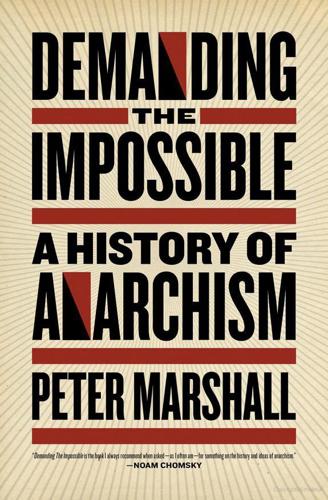
Demanding the Impossible: A History of Anarchism
by
Peter Marshall
Published 2 Jan 1992
Foucault’s central insight turns on the recognition that the power to punish is not essentially different from the power to cure or to educate. ‘Is it surprising’, he asks, ‘that prisons resemble factories, schools, barracks, hospitals, which all resemble prisons?’69 This tendency is best symbolized by the ‘model’ prison called the Panopticon designed by the utilitarian philosopher Jeremy Bentham which allowed complete surveillance of the inmates.70 Foucault’s study of prisons led him to an analysis of social power in general. What characterizes modern culture for Foucault is coercion. He follows Nietzsche, not Marx, in seeing power in non-economic terms: ‘Power is war, a war continued by other means’, that is to say ‘unspoken warfare’.71 Even repression is a subordinate effect of power.
…
Justin O’Brien (Harmondsworth: Penguin, 1977), p. 11 61 Ibid., p. 26 62 Ibid., pp. 64, 108 63 Quoted in Philip Thody, Albert Camus, 1913–60 (Hamish Hamilton, 1961), p. 81 64 Ibid., p. 90 65 Camus, L’Homme révolté (1951) (Paris: Gallimard, 1972), pp. 35–6 66 Ibid, p. 356 67 Quoted in Thody, Albert Camus, op. cit., p. 203 68 See J. G. Merquior, Foucault (Fontana Press, 1985), p. 154 69 Michel Foucault, Discipline and Punish: The Birth of the Prisons, trans. Alan Sheridan, III, 1 (New York: Pantheon, 1977), p. 228 70 See Foucault’s Preface ‘The Eye of Power’ to the French edition of Benthams’s Panopticon (1977) 71 Foucault, Power/Knowledge: Selected Inerviews and Other Writings 1972–1977, eds. Colin Gordon, Leo Marshall, John Meplam and Kate Soper (Brighton: Harvester Press, 1980), pp. 87–90, 110 72 Ibid., p. 151. Cf. Ibid., pp. 104–5 73 Foucault, The History of Sexuality, trans. Robert Hurley (New York: Pantheon, 1978), I, p. 59 74 Merquior, Foucault, op. cit., p. 149 75 See Interview in Le Nouvel Observateur (12 March 1977) 76 Foucault, ‘Réponse à une question’, Esprit, 371 (May, 1968), 850–74 77 Interview with Jean-Lousiézine in Nouvelles Littéraires, 2477 (17–23 March 1977) 78 Merquior, Foucault, op. cit., p. 156 Chapter Thirty-Eight 1 Quoted in Woodcock, ‘The Philosopher of Freedom’, Herbert Read: A Memorial Symposium, ed.
…
Mutualism and federalism not only became later the twin pillars of Proudhon’s system but Kropotkin was convinced that the principles of anarchism found their origin in the deeds of the French Revolution.1 The term anarchist was still used as a term of abuse at the time. It was applied indiscriminately to libertarians and authoritarians alike by their opponents. In England, the utilitarian philosopher Jeremy Bentham in his anti-revolutionary Anarchical Fallacies (1791) attacked the French Declaration of Rights, arguing that it would replace the old tyranny of a single master by the new tyranny of collective anarchy. The Jacobins called the sans culottes anarchists and were called anarchist in turn by the Directory which replaced them.
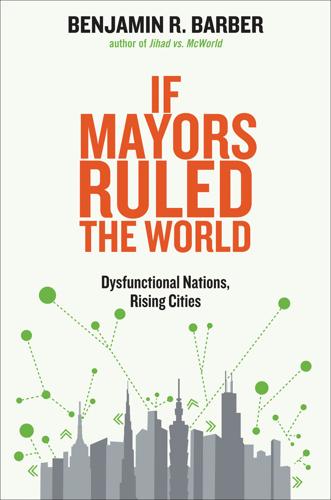
If Mayors Ruled the World: Dysfunctional Nations, Rising Cities
by
Benjamin R. Barber
Published 5 Nov 2013
As the second great French critic of the Enlightenment argued (Rousseau was the first), the moral geometry that justified the rational orderliness of a new Age of Reason penology, substituting rehabilitative imprisonment for bodily punishment, was itself fraught. The hoped-for liberation from justice as vengeance (an eye for an eye and limbs pulled apart by the rack) actually birthed new forms of domination unforeseen by the Enlightenment. In place of torture of the body: a permanent surveillance over the soul—inspiring Jeremy Bentham’s bleak vision of an all-seeing prison Panopticon that in Foucault’s imagination became an emblem of the new and subtle tyranny of modern rationality.27 How Foucaultian, then, are the new media to which we look with such hope for social and civic progress, even as they look back at us, watching us 24/7 with electronic “cookies” and taste assessments and information collection and “push commerce”?
…
Thousands of urban video cams centrally monitored (of the kind London now deploys) will no doubt be regarded by police officials as a boon to crime prevention, and London is being imitated in many other cities today, including New York. In Boston, it was these street cams that helped identify the Marathon bombers. But will citizens concerned with rights see the London practice more as something resembling Foucault’s Panopticon, sweeping away the last vestiges of privacy with ubiquitous surveillance? Or will the yearning for absolute security bury even modest notions of rights? I will not track here the new literature that toys with distinctions between smart cities and so-called cyber cities or digital or intelligent cities, though it must be noted that the plethora of hip brand names suggests that the many new public-private partnerships that are emerging around technology and the city are being rather heavily hyped.
…
See also Bloomberg, Michael NGOs (nongovernmental organizations), 310–315, 343 Nichols, Mary D., 146 Nieto, Javier, 271 Nightingale, Carl H., 189–190, 196 NIMBY (“Not in My Back Yard”), 303 Noncompliance, 354, 355 Nongovernmental organizations (NGOs), 310–315, 343 Not-city, 63–66 “Not in My Back Yard” (NIMBY), 303 Noveck, Beth, 261, 266 NRA (National Rifle Association), 89, 112–113, 148–149, 325, 399n41 Nuclear weapons, 128–129 Nutter, Michael, 87–88, 92, 98 Obama, Barack: digital technology use by, 242, 260; on gun control, 89, 129, 149; health care plan, 199; on interdependence, 116, 158; on Law of the Sea Treaty, 159; urban vote for, 357 Occupy Wall Street (OWS), 47, 116–117, 225, 251, 259, 314–315 Older cities, 58–59 Olmsted, Frederick Law, 43–46, 48 Online communities, 265 Online voting, 260 Opportunity Fund, 230 Opt-in/opt-out rights, 346 Organization of World Heritage Cities, 293 Original consent. See Social contract Orlando, Leoluca, 50–52, 86, 87, 137–138 Ortiz-Cartagena, William, 230 Outsourcing, 253 OWS (Occupy Wall Street), 47, 116–117, 225, 251, 259, 314–315 Palermo. See Orlando, Leoluca Palestine, Moussa of, 91, 268–270 Panopticon, 245, 256 Parks, 44–48, 193, 206–208 Park Won-soon, 333–335, 401n9 Parliament of religions, 346–347 parliamentwatch.org, 264 Parochial schools, 236 Participation vs. power, 5 Participatory budgeting (PB), 264, 265, 303–309 Participatory design, 304, 395–396n7 Participatory governance, 301, 303–309 Partnership for Democratic Local Governance in Southeast-Asia (DELGOSEA), 118–119 PB (participatory budgeting), 264, 265, 303–309 Pedestrian mall programs, 8 Pedestrian zones, 137–138, 197 Peer-to-peer (P2P) technology, 266 People’s Solidarity for Participatory Democracy, 333 Personal engagement of mayors, 95–96 Personality of mayor, 85–86, 88 Petrosino, Giuseppe “Joe,” 107 Philanthropy, 117, 372n8 Piecemeal approach, 21–22, 148, 215, 336 Pirate Party (Germany), 264 Pittsburgh: business revival in, 223; as rebel town, 324 Planetary city, 17 “Planet of slums.”
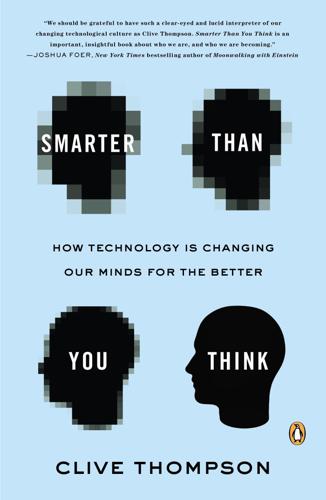
Smarter Than You Think: How Technology Is Changing Our Minds for the Better
by
Clive Thompson
Published 11 Sep 2013
As she points out, the challenge that comes with broadcasting bits of your life is that you live with an “invisible audience;” you’re never quite sure who’s going to see this stuff, or when. Since anything online can be copied and circulated, you also get what boyd calls “context collapse”: sexy talk meant for your partner gets seen by your mother when you accidentally mismanage the settings on your social tools. In 1984, Orwell popularized Jeremy Bentham’s concept of the panopticon, a technological structure in which powerful forces can watch you but you can’t see them. This forces you to assume that you’re always being watched, a mental head game that deforms behavior. Today, plenty of similarly powerful forces eagerly observe your online behavior. Firms like Facebook are free only because they carefully collect our ambient signals, the better to sell us to advertisers.
…
But as boyd and other researchers have found, these problems, while real, are still in the minority. The much more common complications come not from powerful interests surveying your ambient info from above but from those surveying your life beside you: colleagues, ex-lovers, friends, or family. We live less in a panopticon than an “omniopticon,” as Nathan Jurgenson and George Ritzer put it, a situation in which we’re made uneasy by potential ill uses of our info in the hands of these peers. Our problem isn’t just Big Brother—it’s all the Little Brothers and Sisters. These are the problems of what New York University professor Terri Senft deftly calls micro-celebrity.
…
See theory of multiples multiplexing, 142 multitasking, pros/cons of, 135–36 Mundaneum, 122 Munroe, Randall, 116 Muybridge, Eadweard, 97 Myrdal, Gunnar, 252 Myung-bak, Lee, 260 Nabokov, Vladimir, 23 Napier, John, 59 narcissism, and social network postings, 220–22 National Assessment of Educational Progress (NAEP), 183–84 Natsidia, Christoph, 16 “Nature of the Firm, The” (Coase), 152 Navalny, Alexei, 105–6 Naver, 74–75 Netflix, 169 neurasthenia, 224 Nielsen, Michael, 160 Nilsson, Nils, 103 Nintendo, 149 Nook, 82 Norman, Don, 116 note taking, 120–21 novels, early, critics of, 223–24 Obama, Barack, 88, 239 ObscuraCam, 274 Occupy Wall Street, 81 Odnoklassniki, 269 Offer, Daniel, 27 Ogburn, William, 58–60 O’Gorman, Hubert, 251–52 Okolloh, Ory, 45–46, 61–63 omniopticon, 238, 241 O’Neill, Michael, 216–17 “On Exactitude in Science” (Borges), 33 open-source, 112 O’Reilly, Tim, 76 Orwell, George, 106–7, 236–37 Otlet, Paul, 122–23 Otpor!, 267 Pac-Man (video game), 148 PageRank (Google), 33 Pan, Bing, 204 Panagopoulos, Costas, 83–85 panopticon, 236–37 Papert, Seymour, 188–93 Pariser, Eli, 230–31 Park, Clara Claiborne, 132–33 partisan online discourse, 261–63 Patel, Rupal, 19 patent trolls, 64 Pearce, Katy, 269 penicillin, discovery of, 60–61, 63–64 Penny, Laurie, 77 Perry, Rick, 24 Phaedrus (Plato), 68–69, 118 photographic literacy, 105–10 filters, use of, 109–10 LOLcat-crafting, 108–9 photomanipulation, 105–8 political uses, 105–7, 109, 247–48 Photoshop, 107 Pinboard, 154–55 Pinterest, 221 Plato, 68, 117 pluralistic ignorance Egypt, breaking down in, 255–58 social effects of, 252–53 Plutchak, Scott, 208 Pocket, 136 Poincaré, Henri, 131–32 Poke, 242 politics and political activism, 245–77.

The Sinner and the Saint: Dostoevsky and the Gentleman Murderer Who Inspired a Masterpiece
by
Kevin Birmingham
Published 16 Nov 2021
Chernyshevsky estimated that 90 percent of all crime would disappear if we simply fed everyone—having no free will did not diminish his conviction that we have the power to change everything. The genealogy of Chernyshevsky’s ideas is important. His rational egoist is the unlikely progeny of Max Stirner and Jeremy Bentham, whose ideas were popular in 1860s Russia—it was Bentham who made the ego seem slavish but efficacious. The moral goal, he believed, is to maximize everyone’s pleasure, not just one’s own ego, and so where Stirner’s inward turn made him free for bombast, Bentham’s aims forced him to be calmly empirical. To maximize everyone’s pleasure, Bentham argued, a person must “sum up the values” of all the pleasures an action causes and subtract all the pains for every person affected.
…
.: Harvard University Press, 1962); Kahan, Russian Economic History; Geroid Tanquary Robinson, Rural Russia Under the Old Regime (New York: Macmillan, 1967); Richard Pipes, Russia Under the Old Regime (New York: Scribner, 1974); Blum, Lord and Peasant in Russia; Steven Hoch, “The Banking Crisis, Peasant Reform, and Economic Development in Russia, 1857–1861,” American Historical Review 96, no. 3 (1991): 795–820; Antoine Horn, “A History of Banking in the Russian Empire,” in A History of Banking in All the Leading Nations (New York: Journal of Commerce and Commercial Bulletin, 1896), 2: 341–69; Artur Attman, “The Russian Market in World Trade, 1500–1860,” Scandinavian Economic History Review 29, no. 3 (1981): 177–202; David Goldstein, Dostoevsky and the Jews (Austin: University of Texas Press, 1981). Details about utilitarianism, physiology, and materialism come from Jeremy Bentham, An Introduction to the Principles of Morals and Legislation, www.earlymoderntexts.com/assets/pdfs/bentham1780.pdf; Carroll, Break-Out from the Crystal Palace; Frederick Gregory, Scientific Materialism in Nineteenth-Century Germany (Boston: D. Reidel, 1977); Ludwig Büchner, Force and Matter: Empirico-philosophical Studies, Intelligibly Rendered, trans.
…
Academy of Engineers, 23–26, 27–28 “administrative exile,” 108 Aesthetic Relation of Art to Reality, The (Chernyshevsky), 169 aesthetics, 15, 169 agriculture in Russia, 6, 27, 69, 71, 72, 79–80, 112, 171–72 Alexander I of Russia, 266 Alexander II of Russia assassination attempt on, 14, 277–82, 292–93, 307, 308–9 censorship under, 191–92, 203, 251, 280–82 coronation of, 160 emancipation of the serfs, 161, 171–73 government reforms of, 160–61, 166, 171–73, 191–92, 275, 302 Alexander Lyceum, 74 Allard, Pierre, 153–54, 156–58, 182, 348, 350 altruism, 16, 51, 174, 240 “A mon ami Avril” (Lacenaire), 348 Annenkova, Praskovya, 110–12 anti-Semitism, 173–74 Antonelli, Peter, 79, 84, 85–86, 88–89 apoplexy, 27, 55 Arago, Jacques, 347, 348 Armadale (Collins), 266 arson, 198–99 assassination attempt on Alexander II, 14, 277–82, 292–93, 307, 308–9 “Asya” (Turgenev), 169 atheism, 49–51, 72 Aunt Razor, 152–53 Austrian Empire, 69 autocracy, 34–35 Avril, Victor, 126–28 Chardon murders, 8–9, 127–28, 154, 156–57 execution of, 349–50 imprisonment of, 126, 348–49 Lacenaire’s murder trial, 181–84, 185–86 Baden-Baden, 211–12, 227 Bakhtin, Mikhail, 4 Balzac, Honoré de, 25, 38, 208 Banque de France, 150 Barrière Saint Jacques (Paris), 349 Barthélemy, Auguste-Marseille, 64 Bâton, Alphonse, 124, 125–26, 128–29, 152–53, 157, 185, 186 Batu Khan, 148 Baudelaire, Charles, 12 Bauer, Bruno, 77 Beaune, 155 Beguny (the Runners), 135, 210, 280 Belikh, Yefim, 120–21, 123, 143 Belinsky, Vissarion, 39–41 The Contemporary, 54, 55 death of, 57 egoism and, 51 Hegel’s philosophy and, 43, 44 letter to Gogol, 56, 83, 89, 90, 91, 95 role in Russian literature, 39–41, 56 tuberculosis of, 48–49, 56–57, 72 Belinsky, Vissarion, and Dostoevsky, 49–50, 52, 54, 55 The Double, 53–54 Poor Folk, 46–49 Bentham, Jeremy, 174–75, 240, 287 Bezdna peasant revolt, 172–73 Bible, 110, 117, 121, 136 Bicêtre Prison, 62, 183, 348 “Black Cat, The” (Poe), 167 blackmail, 8, 63, 127, 157, 186–87 Black Office, 36 Blanc, Louis, 49, 77 bloodletting, 55, 142 blue-tinted spectacles, 196–97 Bocharov, 222–23, 224, 225, 271 Boeuf Gras, 64 Brabant, 150 branding (of convicts’ faces), 109, 133–34 Breton, André, 15 Brochant, Gustave (Maître), 180–81, 187–88 brodiagi (vagabonds), 109, 133 Brontë, Charlotte, 94 Brothers Karamazov, The, 4 Büchner, Ludwig, Force and Matter, 175 Buda Castle, 69 bureaucracy, 35–36 Byron, George Gordon, Lord, 26 Cabet, Étienne, 77 Camus, Albert, 15 Canler, Louis, 151–54, 156–57, 350 Casanova, Giacomo, Memoirs, 167 “Causes and Fluctuations of Grain Prices, The,” 38 Causes célèbres de tous les peuples (Fouquier), 7, 11, 178–80, 188 censorship under Alexander II, 191–92, 203, 251, 280–82 Dostoevsky’s Crime and Punishment, 251 Dostoevsky’s Notes from a Dead House, 165–66 under Nicholas, 36–37, 42, 75, 81, 92–93 Speshnev Circle and, 96–97 “Young Russia” (manifesto), 202 Central Revolutionary Committee, 197 Chaadaev, Peter, 72, 190 “First Philosophical Letter,” 41–43, 45, 56, 196 Champ de Mars (Paris), 60 Chardon, Jean-François and Ann Marie Lacenaire’s murder confession, 156–57 Lacenaire’s trial, 181–84, 265 murder investigation, 149–54 murder of, 8–9, 10, 127–28 Charité de Sainte-Camille, 8, 127–28 Charles V, Holy Roman Emperor, 194 Charles X of France, 63 Chernyshevsky, Nikolai Gavrilovich The Contemporary, 168–69, 233 ideas and influence of, 168–69, 171, 174–75, 193, 194, 195, 196, 282 Siberian exile of, 201, 310 Petersburg fires and, 200–201 What Is to Be Done?

A Bit of a Stretch: The Diaries of a Prisoner
by
Chris Atkins
Published 6 Feb 2020
References Introduction 1 https://www.theguardian.com/society/2017/apr/27/prison-statistics-revealbig-rise-in-assaults-on-staff-and-self-harm 2 https://www.independent.co.uk/news/uk/home-news/uk-prison-population-conditions-government-urged-reduce-a7991351.html 3 https://assets.publishing.service.gov.uk/government/uploads/system/uploads/attachment_data/file/724526/HMI-Prisons_Annual_Report_2017-18.pdf 4 https://www.mirror.co.uk/news/uk-news/holidaycamp-prison-scoutgroup-9911810 5 https://www.theguardian.com/society/2018/feb/20/ombudsman-termsteenagers-death-in-prison-appalling-osvaldas-pagirys 6 http://www.prisonreformtrust.org.uk/Portals/0/Documents/Bromley%20 Briefings/Summer%202018%20factfile.pdf 7 https://publications.parliament.uk/pa/cm201617/cmselect/cmworpen/58/5804.htm 8 https://www.channel4.com/news/new-allegations-of-sexual-assault-againstmohamed-al-fayed-by-three-women-including-15-year-old-employee 9 https://www.theguardian.com/film/2017/dec/08/dustin-hoffman-sexualharassment-broadway Chapter 1: Trauma and Toothpaste 1 https://assets.publishing.service.gov.uk/government/uploads/system/uploads/attachment_data/file/317904/Fact_Sheet_–_Overview_of_POCA__2_.pdf 2 https://www.bbc.co.uk/news/uk-36384729 3 https://drug.addictionblog.org/does-spice-show-up-on-drug-tests/ 4 https://www.telegraph.co.uk/news/2017/09/22/letters-sent-prisonphotocopied-amid-fears-soaked-drugs/ 5 https://www.dailystar.co.uk/news/latest-news/597499/Superdrugs-UK-prisons-lag-reveals-synthetic-taking-hundreds-casualties-Brit-jails 6 https://www.bbc.co.uk/news/uk-england-dorset-41319812 7 https://www.theguardian.com/technology/2015/jul/23/panopticon-digitalsurveillance-jeremy-bentham 8 https://prisonjobs.blog.gov.uk/your-a-d-guide-on-prison-categories/ Chapter 2: Lockdowns and Love Actually 1 https://www.itv.com/news/anglia/update/2016-07-14/norfolk-mp-liz-trusspromoted-to-justice-secretary/ 2 https://www.theguardian.com/society/2016/jul/19/prisons-legal-highs-peterclarke-new-psychoactive-substances 3 https://www.theguardian.com/society/2016/may/20/wandsworth-governorian-bickers-jail-disorder-prison-reform 4 https://www.standard.co.uk/news/crime/prison-perks-offenders-will-have-toearn-privileges-in-rules-shake-up-8596716.html 5 http://www.prisonreformtrust.org.uk/ForPrisonersFamilies/PrisonerInformationPages/IncentivesandEarnedPrivileges 6 https://www.justice.gov.uk/downloads/offenders/psipso/psi-2011/psi_2011_11_incentives_and_earned_privileges.doc Chapter 3: Showers and Slips 1 https://uk.reuters.com/article/uk-trial-insidertrading-sentences/ex-deutschebanker-and-accountant-jailed-for-insider-dealing-idUKKCN0Y31TG 2 https://www.elizabethtruss.com/news/elizabethtruss-outlines-her-viewssentencing-and-size-prison-population-centre-social-justice 3 https://www.theguardian.com/society/datablog/2016/nov/18/fewer-prisonofficers-and-more-assaults-how-uk-prison-staffing-has-changed 4 https://www.theguardian.com/society/2014/jul/20/moj-recruits-redundantstaff-ease-jails-crisis 5 https://www.theguardian.com/society/2014/mar/24/ban-books-prisonersengland-wales-authors 6 https://www.theguardian.com/society/2014/dec/05/prison-book-banunlawful-court-chris-grayling 7 https://news.sky.com/story/transport-secretary-chris-grayling-should-resignover-chaotic-railway-timetables-11571187 8 https://www.theguardian.com/society/2019/jan/29/more-than-half-youngpeople-jail-are-of-bme-background 9 http://www.dailymail.co.uk/news/article-3751059/New-isolation-cells-hatepreachers-t-spread-poison-jail-Units-stop-dangerous-inmates-inciting-join-Islamic-State.html Chapter 4: Goodfellas and Goldilocks 1 http://www.wandsworthguardian.co.uk/news/14636741.display/ 2 https://www.theguardian.com/politics/2013/mar/13/wandsworth-prison-jailchris-huhne 3 http://www.swlondoner.co.uk/hmp-wandsworth-criticised-desperate-stateprisoners-suicides-behind-bars-rise-dramatically/ 4 https://www.thetimes.co.uk/article/jail-rejects-inmates-after-blunders-byrepair-firm-on-200m-contract-qcmxwg6mc 5 https://www.independent.co.uk/news/uk/politics/chris-grayling-carillionrory-stewart-prison-maintenance-contract-justice-minister-a8417496.html 6 https://www.theguardian.com/society/2018/jan/23/carillion-prisons-terriblestate-andrea-albutt-prison-governors-chief 7 https://www.telegraph.co.uk/news/uknews/law-and-order/12185138/Crackdown-on-compensation-payouts-for-prisoners.html 8 http://www.politics.co.uk/comment-analysis/2016/09/07/prison-reformlooks-dead-in-the-water-under-liz-truss 9 https://www.theguardian.com/books/2016/oct/01/nobel-prize-laureatesmoney-award 10 https://www.dailymail.co.uk/news/article-3807325/We-deserved-truth-25-years-ago-Ben-Needham-s-mother-slams-mystery-witness-not-comingforward-earlier-police-start-latest-dig-hunt-missing-toddler.html Chapter 5: Biohazard and Back Rubs 1 https://www.sentencingcouncil.org.uk/about-sentencing/types-of-sentence/life-sentences/ 2 https://www.gov.uk/government/publications/home-detention-curfew 3 https://www.simplypsychology.org/milgram.html 4 https://www.theguardian.com/uk-news/2016/oct/18/one-arrested-after-mankilled-in-pentonville-prison 5 https://www.bbc.co.uk/news/uk-england-london-37698780 6 https://www.bbc.co.uk/news/av/uk-36327325/bbc-exclusive-a-look-insidewandsworth-prison 7 https://www.samaritans.org/how-we-can-help/prisons/listener-scheme/ 8 https://www.youtube.com/watch?
…
The perfect prison The main part of Wandsworth follows the classic Victorian ‘spider’ design, where six wings radiate out from a central point. This structure was pioneered by the nineteenth-century philosopher Jeremy Bentham, who tried to create the perfect prison, believing that inmates would behave if they thought they were always being watched.7 However, given the utter carnage that was usually unfolding at Wandsworth, Bentham’s theory seemed somewhat flawed. Nobody ever gave a stuff about being watched, and prisoners seemed happy to run around dealing drugs, getting in fights and wrestling with officers. I’m led into a revolting holding room, full of smoking inmates.
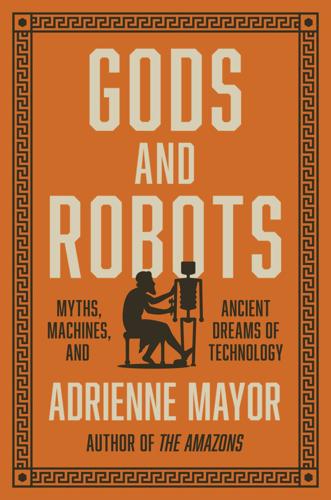
Gods and Robots: Myths, Machines, and Ancient Dreams of Technology
by
Adrienne Mayor
Published 27 Nov 2018
Attic red-figure lekythos from Aphytis, by the Pan Painter, about 470 BC. © Hellenic Ministry of Culture and Sports, courtesy of Ephorate of Antiquities of Chalcidice and Mount Athos. The ancient myth of a hypervigilant watcher that never sleeps and observes from all angles inspired Jeremy Bentham’s eighteenth-century panopticon designs for institutions and prisons, heralding the proliferation of banks of surveillance cameras ubiquitous in the modern world. Accordingly, numerous security providers operate under the name “Argos/Argus.” The computerized exoskeleton TALOS suit to augment soldiers’ senses to be developed by US military scientists also features multiple “eyes” like Argus’s (chapter 1), while other military scientists seek ways to create soldiers who can forgo sleep, like Hera’s sentinel (chapter 4).10 The most captivating devices created by Hephaestus were those described as exceedingly lifelike and/or as self-moving automata that mimicked natural bodily forms and possessed something like mind.
…
See also ethics and morality Asilomar AI Principles, 144, 178 Asimov, Isaac, 144, 177–78 Asoka, King, 203–8, 211 Athena (Minerva): Athenians’ veneration of, 93, 124; and creation of humans, 106, 112, 113; Demetrios’s musical statue of, 187; in Heron’s Theater, 202; and manufacture of animal statues, 97; and manufacture of horse statues, Plate 9, 139, 141; in modern science fiction, 153; and Pandora, 156, 158, 162–63, 163, 164, 170–71; Phidias’s sculpture of, for Parthenon, 124, 170–71, 191 Athena (modern miniature robot), 216 Athenaeus, 71, 109, 198, 199 Athens, 90, 92, 93, 124, 170–72, 175, 192–93 athletes, 25, 47; realistic paintings and sculptures of, Plate 7, 97, 98, 99 automata: ancient conceptions of, 1–3, 95–96, 153–54, 211–15, 223n2; ancient examples of, 23, 145, 180–212, 214; Apega, 194–95; in China, 207–8, 231n19; Chinese tale about, 118, 121; controllability of, 29–30, 65–66, 206, 215; Daedalus’s moving statues, 90–95; defined, 220; desire of, to become human, 29; early uses of term, 145; economic motivations for creating, 152–53, 241n39; emotional responses to, 102–3; functions of, 180; guardians of Buddha, 203–11; historical, 179–212; in India, 203–11; Nysa, 198–99; Philo of Byzantium’s works, 199–200; philosophical questions raised by, 4, 211; slaves compared to, 93; Talos, 7–8, 22–23; terminology concerning, 3–4, 223n1. See also biotechne; robots autonomy, 108, 111, 122–23, 157, 160 Ayrton, Michael, 86–88, 98 Baghdad Batteries, 189–90 Banu Musa brothers, 201 Bentham, Jeremy, 138 Berlin Painter, 148; hydria with Apollo, 146, 147 Berryman, Sylvia, 22, 95, 153, 211, 224–25nn23–24, 233n21 biotechne (life through craft): ancient conceptions of, 1, 23, 28, 154, 179, 213–15; black box technology and, 3; defined, 220; and extension of human capacities, 59–70; for extension of life, 33–34, 36; and human creation, 114–24; persistence of stories about, 217; vulnerabilities of, 51.

To Show and to Tell: The Craft of Literary Nonfiction
by
Phillip Lopate
Published 12 Feb 2013
There is a funny moment when he reverts to the idea that we are beasts at heart: “The wild beast resumes its sway within us, we feel like hunting-animals, and as the hound starts in his sleep and rushes on the chase in fancy, the heart rouses itself in its native lair, and utters a wild cry of joy, at being restored once more to freedom and lawless, unrestrained impulses. Every one has his full swing, or goes to the Devil his own way. Here are no Jeremy Bentham Panopticons . . . no more long calculations of self-interest.” Hazlitt is making fun of utilitarian philosophers such as Bentham who saw humanity as governed by a rational calculus of self-interest. This was, incidentally, the very same utilitarianism that Dostoevsky’s narrator in Notes from Underground took exception to, decades later, and his antidote would be quite similar to Hazlitt’s: the perversity of spite.

Black Code: Inside the Battle for Cyberspace
by
Ronald J. Deibert
Published 13 May 2013
So, when any reference to “Bo Xilai” was censored, Internet users began referring to him as “Gua’s Father” instead (indicating that Bo Xilai is the father of Bo Guagua), until that term was filtered, and so on. The average Chinese user might go days without bumping into attempts of state control online, but the threat is always lurking. In this sense the system is less like 1984 and more like Jeremy Bentham’s Panopticon, a system that gives the feeling of being watched, that someone somewhere knows what you’re doing. No doubt, this creates considerable self-censorship, especially when combined with high-profile arrests of those who openly challenge the system. It’s noteworthy that China’s cyberspace strategy – unlike, say, North Korea’s – is not aimed at completely isolating the country’s population from outside influence.
…
CSEC is Canada’s partner in the so-called Five Eyes alliance of signals intelligence agencies that includes the United States (National Security Agency), the United Kingdom (Government Communications Headquarters), Australia (Defence Signals Directorate), and New Zealand (Government Communications Security Bureau). See Martin Rudner, “Canada’s Communications Security Establishment, Signals Intelligence and Counter-terrorism,” Intelligence and National Security (2007); James Bamford, Body of Secrets: Anatomy of the Ultra-Secret National Security Agency (New York: Anchor Books, 2002); and Jeremy Littlewood, “Accountability of the Canadian Security Intelligence Community Post 9/11 : Still a Long and Winding Road?” in ed. Daniel Baldino, Democratic Oversight of Intelligence Services (Annandale, NSW: Federation Press, 2010). 2 The Citizen Lab did not trespass or violate anything: The ethical and legal issues underpinning the Citizen Lab’s research are discussed in Masashi Crete-Nishihata and Ronald J.
…
Facebook, Beluga, Yelp, Burbn, Instagram, Foursquare, Gowalla, Foodspotting, LinkedIn, Electronic Arts, Kik Interactive, and more. See “Tons of Companies Sued in Class Action Lawsuit over Uploading Phone Addressbooks,” Tech Dirt, March 20, 2012, http://www.techdirt.com/articles/20120316/00561518126/tons-companies-sued-class-action-lawsuit-over-uploading-phone-addressbooks.shtml. See also Julia Angwin and Jeremy Singer-Vine, “Selling You on Facebook,” Wall Street Journal, April 7, 2012, http://online.wsj.com/article/SB10001424052702303302504577327744009046230.html?mod=WSJ_WhatTheyKnowPrivacy_MIDDLETopMiniLeadStory; Nick Bilton and Nicole Perlroth, “Mobile Apps Take Data without Permission,” New York Times, February 15, 2012, http://bits.blogs.nytimes.com/2012/02/15/google-and-mobile-apps-take-data-books-without-permission/; “Now Twitter Admits ‘Harvesting’ Users’ Phone Contacts Without Telling the Owners as Apple Announces Crackdown,” Daily Mail, February 16, 2012, http://www.dailymail.co.uk/sciencetech/article-2101934/Apple-moves-stop-Facebook-Twitter-accessing-iPhone-users-address-books-permission.html; “Statement of Justin Brookman,” Before the Senate Judiciary Committee, Subcommittee on Privacy, Technology, and the Law, Hearing on Protecting Mobile Privacy: Your Smartphones, Tablets, Cell Phones, and Your Privacy, May 10, 2011, https://www.cdt.org/files/pdfs/20110510_mobile_privacy.pdf; and Lito Cruz, Andre Olober, and Kristopher Welsh, “The Danger of Big Data: Social Media as Computational Social Science,” First Monday 17, no.7 (2012), http://www.firstmonday.org/htbin/cgiwrap/bin/ojs/index.php/fm/article/view/3993/3269. 14 U.S.

Policing the Open Road
by
Sarah A. Seo
“Flash System-Traffic Tower” at Fifth Avenue and Thirty-Fourth Street in New York City. National Police Bulletin 1, no. 1 (June 6, 1921). Reproduced from a copy at the New York Public Library. Harriss was essentially describing a panopticon, a circular prison designed by the eighteenth-century philosopher Jeremy Bentham. A tower in the center permitted a single guard to observe all the inmates, who could not tell whether they were being watched or not. Michel Foucault later analyzed the panopticon as an architectural metaphor for modern disciplinary mechanisms that control human behavior with a visible but unverifiable power. The tower (or traffic light) is always visible, but the prisoners (or drivers) cannot confirm whether they are being observed.
…
The tower (or traffic light) is always visible, but the prisoners (or drivers) cannot confirm whether they are being observed. According to Foucault, this motivates self-discipline, which enables the exercise of power to become automatic.71 Viewing signal lights as a type of panopticon highlighted the kind of governance that an automotive society seemed to require. In an increasingly anonymous world, the gaze of the police, or at least the perception that the police were watching, gradually replaced the observation of neighbors and members of one’s community as a method of social control. By 1920, one reporter comparing Yankee traffic cops with their French equivalent bragged, “Every driver and every foot passenger in American cities keeps an eye on the man bossing the traffic.
…
See Tort law Negro Motorist Green Book, 36, 185 New York Police Department, 58, 188, 190 New York v. Belton, 248–252, 258 Novels: Free Air, 10; The Great Gatsby, 34; On the Road, 10; A Wrinkle in Time, 222 O’Connor, Sandra, 262 Olmstead v. United States, 17, 130–132, 161 Operation Pipeline, 255–256 Order maintenance policing. See Vagrancy policing Originalism, 268–269 Panopticon, 58–60 Papachristou v. City of Jacksonville, 202–203, 207–208, 223–224 Patrol car, 2–3, 68, 95–99, 103–109 Pennsylvania v. Mimms, 6, 153, 273 People v. Cahan, 150, 192–194 People v. Case, 128–130, 132, 134, 139 Poems, 10, 153 Police power, 12, 23, 52, 72, 210, 212–213, 225 Police school, 87–88 Positive law, 26–27, 29–30, 48, 57 Pound, Roscoe, 24–25, 27, 34–35, 38, 39, 46–47 Pretextual policing, 232–234, 237, 246–247, 254–262, 264–266 Privacy: and Brandeis, 17–18, 131–132; and cars, 9, 10, 127–128, 167, 254; and houses, 162, 196–197, 229–230; individual expectations of, 135–136, 152, 174, 269; proceduralization of, 228–230; and Reich, 203, 209–210, 216, 218–220, 226; and smartphones, 270–272; substantive right to, 19–20, 125, 217, 219–220 Private enforcement, 3, 13, 85 Private property, 16, 127, 130, 152, 160, 210, 217–219, 268–269 Probable cause: for arrest, 115, 158, 176, 177, 221; for automobile exception, 137–141, 163–167, 252–254; and cars, 115–116, 133–134; for detention, 143, 151, 154; for vehicle stop, 252, 255; for warrant, 161 Proceduralism, 19, 220–221, 224–226, 228–230, 232, 245, 250, 253, 272, 275 Professionalization: and August Vollmer, 64, 67–68, 71–74, 107–109; and human relations, 178, 189–190; and traffic enforcement, 84–90, 94–95, 112 Progressivism, 12, 62, 66–67, 130–132, 218–219 Prohibition: and car cases, 113–118, 133–134, 138–139, 163–164; enforcement of, 28–30, 47, 72–76; and exclusionary rule, 119–124.

Nexus: A Brief History of Information Networks From the Stone Age to AI
by
Yuval Noah Harari
Published 9 Sep 2024
Michalczyk (London: Bloomsbury Academic, 2018), 110–24; Michael Schwartz, ed., Homosexuelle im Nationalsozialismus: Neue Forschungsperspektiven zu Lebenssituationen von lesbischen, schwulen, bi-, trans- und intersexuellen Menschen 1933 bis 1945 (Munich: De Gruyter Oldenbourg, 2014). 41. Jeremy Bentham, “Offenses Against One’s Self,” ed. Louis Crompton, Journal of Homosexuality 3, no. 4 (1978): 389–406; Jeremy Bentham, “Jeremy Bentham’s Essay on Paederasty,” ed. Louis Crompton, Journal of Homosexuality 4, no. 1 (1978): 91–107. 42. Olga Yakusheva et al., “Lives Saved and Lost in the First Six Months of the US COVID-19 Pandemic: A Retrospective Cost-Benefit Analysis,” PLOS ONE 17, no. 1 (2022), article e0261759. 43.
…
But if we go in that direction, we inadvertently desert the deontologist camp and find ourselves in the camp of their rivals—the utilitarians. THE CALCULUS OF SUFFERING Whereas deontologists struggle to find universal rules that are intrinsically good, utilitarians judge actions by their impact on suffering and happiness. The English philosopher Jeremy Bentham—another contemporary of Napoleon, Clausewitz, and Kant—said that the only rational ultimate goal is to minimize suffering in the world and maximize happiness. If our main fear about computer networks is that their misaligned goals might inflict terrible suffering on humans and perhaps on other sentient beings, then the utilitarian solution seems both obvious and attractive.
…
Giorgio Agamben, State of Exception, trans. Kevin Attell (Chicago: University of Chicago Press, 2005). 23. L. Shchyrakova and Y. Merkis, “Fear and loathing in Belarus,” Index on Censorship 50 (2021): 24-26, https://doi.org/10.1177/03064220211012282; Anastasiya Astapova, “In Search for Truth: Surveillance Rumors and Vernacular Panopticon in Belarus,” Journal of American Folklore 130, no. 517 (2017): 276–304; R. Hervouet, “A Political Ethnography of Rural Communities under an Authoritarian Regime: The Case of Belarus,” Bulletin of Sociological Methodology/Bulletin de Méthodologie Sociologique 141, no. 1 (2019): 85–112, https://doi.org/10.1177/0759106318812790; Allen Munoriyarwa, “When Watchdogs Fight Back: Resisting State Surveillance in Everyday Investigative Reporting Practices among Zimbabwean Journalists,” Journal of Eastern African Studies 15, no. 3 (2021): 421–441; Allen Munoriyarwa, “The Militarization of Digital Surveillance in Post-Coup Zimbabwe: ‘Just Don’t Tell Them What We Do,’ ” Security Dialogue 53, no. 5 (2022): 456–474. 24.
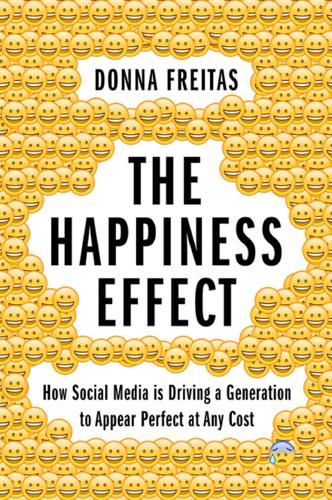
The Happiness Effect: How Social Media Is Driving a Generation to Appear Perfect at Any Cost
by
Donna Freitas
Published 13 Jan 2017
They aren’t crazy to think so, either—employers really do check the social media profiles of applicants.2 Because college admissions officers do the same, many students have already gotten a taste of this variety of online stress before even arriving on campus—and once they do arrive, the scrutiny only continues.3 On the most sinister level, this sounds a lot like the interpretation of Bentham’s panopticon in Foucault’s Discipline and Punish, but on a virtual scale. College students (and young adults in general) are highly aware that because of social media, they can be “spied upon” at any and all moments by people they’ve never met, can’t see, and who may hail from far-flung locations, all of whom may have power over their lives.
…
And lots of the students I spoke with were worried about their younger siblings, who might not be mature enough to think through what they are doing. The consequences, they fear, could haunt them for life. But no one had a more elaborate theory of sexting than Jeremy. JEREMY: SEXTING THE RIGHT WAY I meet Jeremy on a beautiful, sunny day at his idyllic Catholic college. He wears a colorful, tie-dyed bucket hat on his head, a Beatles T-shirt, skater shoes, and shorts, and he exudes a sort of relaxed enthusiasm. Jeremy is an incredibly fun person to interview—lively, hilarious at times, very intelligent and thoughtful. He’s on just about every social media platform imaginable—Twitter, Tumblr, Snapchat, Vine, Tinder, Instagram, Facebook.
…
See bullying/cyberbullying monitoring of others, pervasiveness of, 11–2, 47–8 Moss, Eleanor, 305n4 narcissism, 102 anti-selfie views of, 85 pioneers of virtual world vs., 251–6 in solo selfies, 82, 83, 99 neutrality, 259–60 Nicomachean Ethics (Aristotle), 256 nude photos. See sexting O’Brien, Edward, 167 official status. See Facebook official status OkCupid, 195 O’Neill, Essenia, 312n5 online dating, 193–5, 198. See also Tinder over-sharing, 78 panopticism (Bentham), 47 parents blocking of, 64–5 with Facebook accounts, 144, 180–1 restrictions based on religion, 112–7 setting boundaries on child’s use of phones/social media, 272, 280 unawareness of child’s online activity, 151–2, 175, 186–7 party photos, 5, 25, 40, 54, 56, 97, 98, 159, 261 peer enforcers, 45 Pew Research Center, 95, 303n7, 304n10 photo touchups, 97, 101 pics or it didn’t happen, use of term, 90 play, as virtue for social media age, 262–3 political/social issues posts branding of self and, 65–7 professionalization of online behavior and, 44, 46, 49–51, 58–62 sorority/fraternity life and, 4 Twitter and, 44, 46 popularity principle (Van Dijck), 19, 41, 305n3 predatory behavior, 11 privacy attempts to protect, 78 generational conflict over, 47–8 nonexpectation of, 208 religious observances and, 115 sexual orientation and, 180–4 produced candidness, 98 profile, use of term, 73–4 provocative opinions, 15 publics, use of term, 75–6 Raacke, John, 304n10 real me vs. online me, 10 Reclaiming Conversation (Turkle), 229 Reclaiming Conversation: The Power of Talk in a Digital Age (Turkle), 76 Reddit, 135, 169–70 religious expression, in social media, 104–23 anti-social media views and, 120–2 authenticity/inauthenticity, 112 avoidance of idolizing trap, 109 awareness of secular lives and, 118–20 Christian student interviewees, 105–12, 122–3 gender differences and, 121 God as viewer of one’s postings, 105–8 as inflammatory, 110 Muslim student interviewee, 112–7 Orthodox Jewish student interviewees, 117–22, 184–7 sense of purpose and control, 110, 116 as subversion of conservatism in faith, 112–7 summary conclusion, 122–3 as tool for evangelization, 110–2, 319n3 religious practices, and unplugging, 277–8 reputation selves, 72–5, 78–9 retweets.
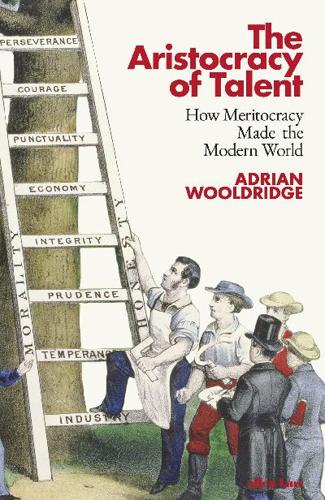
The Aristocracy of Talent: How Meritocracy Made the Modern World
by
Adrian Wooldridge
Published 2 Jun 2021
As you all know, first prize is a Cadillac Eldorado. Anybody wanna see second prize? Second prize is a set of steak knives. Third prize is, you’re fired.’28 They are also right that meritocracy is an unbending taskmaster. Most professionals spend their lives on a meritocratic treadmill, rather like prisoners in one of Jeremy Bentham’s panopticon penitentiaries. They spend the first twenty-five to thirty years of their lives acing exams, getting into elite universities, finding slots in brand-name companies, and the next twenty-five to thirty years trying to win promotions, please their bosses, make their names in the world. Then, as they grow older, they visit their meritocratic obsessions on their children.
…
Cobbett drew up plans to write a play with the memorable title of ‘Bastards in High Places’ but unfortunately died before he could put pen to paper. Let’s hope somebody today takes up both the title and the challenge.10 John Wade (1788–1875), a former wool-sorter turned journalist who was inspired by Tom Paine and Joseph Priestley and funded by Jeremy Bentham, provided a full-scale anatomy of these ‘bastards in high places’ in The Black Book, or, Corruption Unmasked! (1820), a laborious account of the abuses of the old Britain, from pluralism in the Church to sinecures in the executive branch to rotten boroughs in the legislature, which sold over 50,000 copies over the years.
…
Leading critics of the old regime advanced general arguments in favour of examinations without getting down to the details. Adam Smith suggested vaguely in The Wealth of Nations that every man ‘undergo an examination or probation in them before he can obtain the freedom in any corporation to be allowed to set up any trade’.14 Jeremy Bentham was equally vague in his (wonderfully titled) Official Aptitude Maximized; Expense Minimized (1830). The breakthrough was made by Cambridge University, which led the way in introducing written examinations to replace the older tradition of oral examinations, and in linking examination results to substantial rewards in the form of prizes and college fellowships.
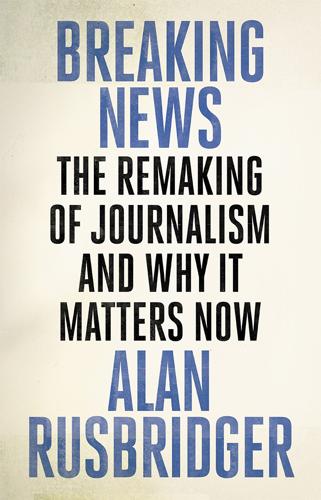
Breaking News: The Remaking of Journalism and Why It Matters Now
by
Alan Rusbridger
Published 14 Oct 2018
It went on to win an Oscar as best documentary feature. 8. Greenwald, G. No Place to Hide; see Bibliography. 9. Twitter, 6 June 2013, 2.39 a.m.; @algore 10. ‘Australian Spy Agencies Targeted Indonesian President’s Mobile Phone’, Guardian, 18 November 2013 11. The Panopticon was a building and system of all-seeing control imagined by the philosopher Jeremy Bentham in the late eighteenth century. 12. The story of Ellsberg and the Pentagon Papers was first made into a feature film, The Most Dangerous Man in America, in 2009. Steven Spielberg’s The Post (2017) emphasised the parallel role of the Washington Post under Ben Bradlee and Katharine Graham. 13.
…
Both CA and Facebook initially responded with legal threats before the dam burst, at one stage wiping $80 billion (14 per cent) off the latter’s market value.10 At one level, many Facebook and Google users knew that their ability to use free email, search and messaging services came at a price – the surrender of quite significant amounts of their personal data. But the arithmetic of the harvesting – as many as 87 million profiles of friends and friends of friends – suddenly made Facebook look creepy.11 In the words of one Google artificial intelligence expert, not only could the platform be used as a totalitarian Panopticon, it was also a ‘psychological control vector’.12 Edward Snowden had shone a light on the state’s power to delve deeply into an infinite number of lives. Some had been outraged, others had shrugged. Now, some of the shruggers sat up straight and howled foul. As Zuckerberg struggled to frame an adequate response, a mob demanding regulation, if not actual dismemberment, soon made itself heard.
…
Sullivan case (1964) ref1 New Yorker (magazine) ref1, ref2, ref3 Newland, Martin ref1 Newmark, Craig ref1 Newmarket Road (Cambridge) ref1, ref2, ref3 News Corporation ref1, ref2, ref3, ref4, ref5, ref6, ref7n News Digital Media ref1 News Group Newspapers (NGN) ref1, ref2, ref3 News International (NI) ref1, ref2, ref3, ref4, ref5, ref6, ref7, ref8, ref9, ref10n News Network ref1 Newsday.com ref1 Newseum (US) ref1 Newsnight (TV) ref1 Newspaper Money (Hirsch/Gordon) ref1 Newsworks’ Shift conference ref1n NHS ref1 Nielsen NetRatings ref1 1984 (Orwell) ref1 Nixon, President Richard ref1, ref2, ref3, ref4 North Africa ref1, ref2 North Briton (newspaper) ref1 North Korea ref1 Northcliffe, Lord ref1 Northcliffe Media ref1 ‘Not Invented Here’ (NIH) resentment ref1 Nottingham Evening Post (newspaper) ref1 Nougayrède, Natalie ref1 Obama, President Barack ref1, ref2, ref3, ref4, ref5, ref6 Ofcom ref1, ref2, ref3 Official Secrets Act (OSA) ref1, ref2 Official Secrets (Hooper) ref1 O’Hagan, Andrew ref1 oil companies ref1, ref2, ref3 O’Kane, Maggie ref1 Old Bailey ref1, ref2, ref3, ref4 Oliver, Craig ref1, ref2 Omidyar, Pierre ref1 On Demand ref1 ‘On Journalism’ (Scott essay) ref1, ref2n, ref3n Open Democracy ref1, ref2, ref3 Open Weekend (2012) ref1, ref2 Operation Weeting ref1 O’Reilly, Tony ref1 ‘original sin’ ref1 Orphan ref1 Orwell, George ref1, ref2, ref3, ref4, ref5 Osborne, Peter ref1, ref2, ref3, ref4 Oscars ref1 ownership model ref1 Oxford University ref1 Pacino, Al ref1 page views ref1 Panopticon ref1, ref2, ref3n Panorama (TV) ref1 Paris climate talks ref1, ref2 Parker, Andrew ref1 Paton, John ref1 Patriot Act (2001) ref1, ref2 PayPal ref1 paywalls ref1, ref2, ref3, ref4, ref5, ref6, ref7, ref8, ref9, ref10, ref11n ‘hard’ ref1, ref2 metred ref1, ref2 Peake, Maxine ref1 Pearson & Co ref1, ref2 Pemsel, David ref1, ref2, ref3, ref4, ref5n, ref6n, ref7n Pentagon ref1, ref2, ref3, ref4, ref5, ref6 People Like Us (Luyendijk) ref1 Perch, Keith ref1n Perettu, Jonah ref1 Periscope ref1 perjury ref1 Permira Advisers Ltd ref1 Peterloo Massacre ref1, ref2, ref3 Petraeus, General David ref1 Pfauth, Ernst-Jan ref1 PFE (Proudly Found Elsewhere) ref1 philanthropy ref1 Philby, Kim ref1 Piano, Renzo ref1 Pilhofer, Aron ref1, ref2n Plastic Logic ref1 Plender, John ref1 podcasts ref1, ref2n Podemos ref1 Podesta emails ref1, ref2 Poitras, Laura ref1, ref2, ref3, ref4 police ref1, ref2, ref3 passim, ref1, ref2, ref3, ref4, ref5, ref6n, ref7n, ref8n political subsidy ref1 Politico ref1 Politics.co.uk ref1 Popbitch ref1 Popplewell, Sir Oliver ref1, ref2 Porter, Henry ref1 Post Office Act (US 1792) ref1 Pound, Ezra ref1 power ref1 Prescott, John (MP) ref1 Press Acquisitions Ltd ref1 Press Association ref1, ref2 Press Complaints Commission (PCC) ref1, ref2, ref3, ref4, ref5, ref6, ref7n Press Holdings Ltd ref1 Preston, Peter ref1, ref2, ref3, ref4, ref5, ref6, ref7, ref8 price war ref1, ref2 Price Waterhouse Cooper ref1 Pride and Perjury (Aitken) ref1 The Printing Press as an Agent of Change (Eisenstein) ref1 printing presses ref1, ref2, ref3, ref4, ref5, ref6, ref7, ref8 prisons ref1, ref2, ref3, ref4, ref5, ref6, ref7, ref8, ref9, ref10, ref11, ref12 privacy ref1 Private Eye (magazine) ref1, ref2, ref3, ref4, ref5, ref6, ref7, ref8n private investigators ref1, ref2, ref3, ref4, ref5, ref6 private sector ref1 Proctor & Gamble ref1 Prodigy Internet Service ref1 Product Development Unit (PDU) ref1, ref2, ref3, ref4 Professional Footballers’ Association ref1 proportionality ref1 ProPublica ref1, ref2 Proudler, Gerald ref1, ref2, ref3, ref4 public goods ref1, ref2 public interest ref1, ref2, ref3, ref4 passim, ref1, ref2 passim, ref1 passim, ref1, ref2, ref3, ref4, ref5n, ref6n Public Library of Science (PLoS) ref1 public service ref1, ref2, ref3, ref4, ref5, ref6, ref7, ref8, ref9, ref10 passim, ref1, ref2, ref3 public space ref1, ref2, ref3, ref4 ‘publicness’ ref1 ‘purchase driver’ ref1 Putnam, Robert ref1 pyjama injunction ref1 Qantas ref1 Qatar ref1, ref2, ref3 Quatremer, Jean ref1 Qur’an ref1 R2 ref1 Raines, Howell ref1 Randall, Mike ref1 rape ref1, ref2, ref3n Rath, Matthias ref1 Ray Street offices ref1, ref2, ref3, ref4 ‘reach before revenue’ model ref1, ref2, ref3, ref4, ref5, ref6, ref7, ref8, ref9 readers ref1 American ref1, ref2, ref3, ref4, ref5 knowledge ref1, ref2, ref3, ref4, ref5, ref6 letters ref1, ref2, ref3, ref4, ref5, ref6, ref7, ref8, ref9 readers’ editor ref1, ref2, ref3n response ref1, ref2, ref3, ref4, ref5, ref6 talkboards ref1, ref2, ref3, ref4, ref5n see also circulation Reading Football Club ref1 Real Networks ref1 Reckless, Mark (MP) ref1 Reddit ref1, ref2, ref3, ref4 Redford, Robert ref1, ref2 Reds (film) ref1 Rees, Jonathan ref1, ref2, ref3 referendum (UK 2016) ref1, ref2 regulation ref1, ref2, ref3, ref4 Regulatory Funding Council ref1 Reid, Harry ref1 religious stories ref1 rendition, Gibson report on ref1 Reuters ref1, ref2, ref3, ref4, ref5n Institute for the Study of Journalism (RISJ) ref1, ref2, ref3, ref4, ref5 Richard (reporter) ref1 Rinehart, Gina ref1 riots ref1, ref2, ref3, ref4, ref5n Ritz hotel (London) ref1, ref2, ref3 Ritz hotel (Paris) ref1, ref2, ref3, ref4 rivalry ref1, ref2, ref3, ref4, ref5, ref6, ref7n Robards, Jason ref1 Roberts, Brian ref1 Roberts, Justine ref1 Robinson, Geoffrey (MP) ref1 Robinson, Stephen ref1 Rockefeller Foundation ref1 Rohm, Wendy Goldman ref1 Rolling Stones ref1 Rosen, Jay ref1, ref2, ref3 Rosenstiel, Tom ref1 Rossetto, Louis ref1 Rothermere, Lord ref1n, ref2n Rowlands, Tiny ref1 Royal Air Force (RAF) ref1 Royal Courts of Justice ref1, ref2, ref3 Rusbridger, Alan ref1, ref2n, ref3n, ref4n, ref5n Russian intelligence service ref1, ref2, ref3, ref4 Ryanair ref1 Saatchi, Maurice ref1 Sachs, Jeffrey ref1 Saffron Walden (Essex) ref1 Said Business School (Oxford) ref1 St Paul’s Cathedral ref1 Salon ref1 samizdat methods ref1 Sampson, Anthony ref1 San Jose Mercury (newspaper) ref1 Sanandaji, Tino ref1 Sandel, Michael ref1 Sanders, Bernie ref1, ref2 Sandy Hook ref1 Sandys, Duncan (MP) ref1 Sardar, Ziauddin ref1 Sark ref1, ref2 Sark Newspaper ref1 SAS ref1 Saudi Arabia ref1, ref2, ref3 Savoy Hotel (London) ref1, ref2, ref3 Savoy Taylors Guild ref1 Sawers, Sir John ref1 Schirrmacher, Franz ref1 Schmidt, Eric ref1, ref2 Schneier, Bruce ref1 Schudson, Michael ref1n science ref1, ref2, ref3, ref4, ref5, ref6, ref7, ref8n scoop ref1 Scoop (Waugh) ref1 Scotland Yard ref1, ref2, ref3, ref4, ref5, ref6, ref7 Scotsman (newspaper) ref1, ref2, ref3 Scott, C.P. ref1, ref2, ref3, ref4, ref5, ref6, ref7, ref8, ref9n, ref10n Scott, David ref1 Scott, Edward ref1 Scott, Henry E. ref1 Scott, John ref1 Scott, Richard ref1 Scott Trust ref1, ref2, ref3, ref4, ref5, ref6, ref7, ref8, ref9, ref10, ref11, ref12, ref13, ref14, ref15n Sellers, Frances Stead ref1 Selvey, Mike ref1 Senate Church committee (US) ref1 Senate Intelligence committee (US) ref1 Sensenbrenner, Jim ref1 September 11 (2001) ref1, ref2, ref3, ref4, ref5, ref6 Serious Fraud Office (SFO) ref1 Shadid, Anthony ref1 Shainin, Jonathan ref1 Shaw, Fiona ref1 Sheehan, Neil ref1 Sheen, Michael ref1 Shenker, Jack ref1 Sherwood, Charles ref1 Shirky, Clay ref1, ref2, ref3, ref4, ref5, ref6 Siegal, Allan M. ref1 Silicon Valley ref1, ref2, ref3 passim, ref1, ref2, ref3, ref4, ref5, ref6, ref7, ref8, ref9, ref10, ref11, ref12 comes to Oxford (SVCO) ref1 Simon, David ref1 Simonds, Gavin ref1 Simpson, O.J. ref1 Singer, Marc ref1 Skype ref1 Slate Group ref1 smartphones ref1, ref2 Smith, Ben ref1 Smith, Brad ref1 Smith, Julian (MP) ref1 Smith, Shane ref1 Smith, Tim (MP) ref1 Snapchat ref1 Snowden, Edward ref1, ref2, ref3, ref4 passim, ref1 passim, ref1 passim, ref1, ref2n, ref3n Snowden (film) ref1 Soho offices ref1 Sony ref1 Soros ref1 Sorrell, Martin ref1 sources ref1 South Africa ref1, ref2, ref3 South, Christopher ref1 Sparrow, Andrew ref1 Spectator (magazine) ref1, ref2, ref3, ref4 Spielberg, Steven ref1, ref2, ref3, ref4, ref5, ref6n sponsorship ref1, ref2, ref3, ref4, ref5, ref6, ref7, ref8, ref9, ref10 sport ref1 Spotify ref1, ref2 Springer, Axel ref1 The Square and the Tower (Ferguson) ref1 Stalin ref1, ref2 Standage, Tom ref1 Starr, Paul ref1, ref2 ‘Start Me Up’ (song) ref1 Start the Week (radio) ref1 State of the Union speech (Clinton) ref1 Steele, Christopher ref1 Steele, Jonathan ref1 Stephenson, Sir Paul ref1, ref2, ref3 Stewart, Mr Justice ref1 Stone, Biz ref1 Stone, Oliver ref1, ref2, ref3n Strathairn, David ref1 Streep, Meryl ref1 subscription ref1, ref2, ref3, ref4, ref5, ref6, ref7, ref8, ref9, ref10, ref11, ref12, ref13, ref14n ‘subsidariat’ ref1, ref2n Suez ref1 Sullivan, Andrew ref1, ref2n Sulston, John ref1 Sulzberger, A.G. ref1, ref2, ref3n Sulzberger, Arthur ref1n super-injunctions ref1 Supreme Court (UK) ref1 Supreme Court (US) ref1, ref2 Sweden ref1, ref2, ref3, ref4n Sweeney, John ref1 Swift, Jonathan ref1 Switzerland ref1, ref2, ref3 Sydney Morning Herald (newspaper) ref1, ref2 Sykes, Richard ref1 Syria ref1, ref2 tabloids ref1, ref2, ref3, ref4 passim, ref1, ref2, ref3, ref4, ref5, ref6, ref7, ref8, ref9n, ref10n Tahrir Square (Cairo) ref1 Taliban ref1, ref2, ref3 talkboards ref1, ref2, ref3, ref4, ref5n Tapscott, Don ref1 Task Force 373 ref1 tax ref1 avoidance ref1, ref2, ref3, ref4, ref5n havens ref1, ref2, ref3 Taylor, Gordon ref1, ref2, ref3 Taylor, John Edward ref1, ref2 Taylor, Matthew ref1 Technorati ref1 Terrorism Act (2000) (UK) ref1, ref2 terrorists ref1, ref2, ref3, ref4, ref5, ref6, ref7, ref8, ref9, ref10, ref11, ref12 counter-terrorism ref1, ref2, ref3 Terry, Quinlan ref1 Tesco ref1, ref2, ref3n, ref4n Thailand ref1, ref2, ref3n Thalidomide ref1, ref2n Thatcher, Prime Minister Margaret ref1 Thatcher, Carol ref1 Thatcher, Mark ref1 The Onion Router (TOR) ref1 Thewlis, David ref1 Thirty Club ref1 Thompson, Bill ref1 Thompson, E.P. ref1, ref2 Thompson, Robert ref1 threads ref1, ref2, ref3, ref4, ref5, ref6, ref7 ‘threat reports’ ref1 Three Little Pigs boiling the Big Bad Wolf (film) ref1 Thurlbeck, Neville ref1 Time (magazine) ref1 Times Educational Supplement (magazine) ref1 Tomasky, Michael ref1 Tomlinson, Ian ref1, ref2 Topix.net ref1 torture ref1 Tow Center for Digital Journalism ref1, ref2 toxic waste ref1 Trafigura ref1, ref2, ref3n training ref1, ref2, ref3, ref4 travel writing ref1, ref2n Travis, Alan ref1 Treanor, Jill ref1 Tribune Co (US) ref1 Trinity Mirror ref1, ref2, ref3 TripAdvisor ref1, ref2, ref3, ref4, ref5n trolls ref1, ref2, ref3, ref4, ref5, ref6, ref7 Trump, President Donald ref1, ref2, ref3, ref4, ref5, ref6, ref7, ref8, ref9, ref10, ref11, ref12, ref13, ref14, ref15 Trump Bump ref1, ref2, ref3n, ref4n trust ref1, ref2 passim, ref1, ref2, ref3, ref4 passim, ref1, ref2, ref3, ref4, ref5, ref6, ref7 passim, ref1n Trust ownership ref1 truth ref1 passim, xxiv, ref1, ref2, ref3, ref4, ref5, ref6, ref7, ref8, ref9, ref10, ref11, ref12 reverse burden of ref1, ref2n Tucker Carlson Tonight (TV) ref1 Tugendhat, Mr Justice ref1 Turkey ref1 Tweetdeck ref1 Twitter ref1, ref2, ref3, ref4, ref5, ref6, ref7, ref8 passim, ref1, ref2, ref3, ref4, ref5, ref6, ref7n Tyas, John ref1 typesetting ref1, ref2, ref3, ref4, ref5n UHNWI (ultra-high net-worth individuals) ref1 UKIP ref1, ref2, ref3, ref4n, ref5n Ukraine ref1 unions ref1, ref2, ref3, ref4, ref5, ref6, ref7, ref8, ref9, ref10, ref11 Unique Selling Point ref1 unique users ref1 United Nations (UN) ref1, ref2 University of California (Berkeley) ref1 Upworthy ref1 USA Today (magazine) ref1, ref2 Usenet ref1 Utley, T.E. ref1, ref2n van Beurden, Ben ref1 The Vanishing Newspaper (Meyer) ref1, ref2 Vanity Fair (magazine) ref1, ref2 Vaz, Keith (MP) ref1 Verizon ref1 ‘verticals’ ref1 Vice (magazine) ref1, ref2 Vickers, Paul ref1 video ref1, ref2, ref3 Vietnam War ref1 ‘viewspaper–newspaper’ ref1, ref2, ref3 Vignette ref1 Viner, Kath ref1, ref2, ref3 Vodafone ref1 Volkswagen ref1 Vyshinsky, Andrey ref1 Wadsworth, A.P. ref1 Wagner, Adam ref1 Waldman, Simon ref1, ref2, ref3, ref4n, ref5n Wales, Jimmy ref1 Walker, Christopher ref1 Wall Street ref1 Wall Street Journal (newspaper) ref1, ref2, ref3, ref4, ref5, ref6, ref7, ref8, ref9 Wallis, Neil ref1 Walter, Justin ref1 WAN-IFRA ref1 WannaCry ref1n Wapping ref1, ref2, ref3, ref4 War Office ref1 Watergate ref1, ref2, ref3, ref4 Watson, Tom (MP) ref1 Waugh, Evelyn ref1 We the Media (Gillmor) ref1, ref2 Weatherup, James ref1 Web 1.0 ref1, ref2 Web 2.0 ref1, ref2, ref3, ref4, ref5, ref6 ‘web monkeys’ ref1 Webster, Phil ref1 Weinstein, Harvey ref1 Weisberg, Jacob ref1 Wellcome Trust ref1, ref2, ref3 Wells, Holly ref1 West Africa ref1 West Coast giants see Silicon valley Westminster ref1, ref2, ref3, ref4, ref5, ref6 What the Media Are Doing to Our Politics (Lloyd) ref1 whistleblowers ref1, ref2, ref3, ref4, ref5, ref6 White House (US) ref1, ref2, ref3, ref4 White, Michael ref1 Whitehall ref1, ref2, ref3 Whittam Smith, Andreas ref1 Whittow, Hugh ref1 ‘Why I Write’ (Orwell essay) ref1 WikiLeaks ref1, ref2, ref3, ref4, ref5, ref6, ref7 Wikinomics (Tapscott) ref1 Wikipedia ref1, ref2, ref3, ref4, ref5, ref6, ref7 Wilby, Peter ref1 Wilkes, John ref1, ref2, ref3, ref4, ref5, ref6n Williams, Francis ref1 Wilton’s (restaurant) ref1 Windows 95 ref1 The Wire (TV) ref1 Wired (Anderson) ref1 Wired (magazine) ref1 Witherow, John ref1, ref2 witnesses ref1, ref2, ref3, ref4, ref5 Witty, Andrew ref1 Wolf, Armin ref1 women ref1, ref2 Wood, Graeme ref1 Woodward, Bob ref1, ref2 Workthing ref1, ref2 World Cup (football) ref1 World Economic Forum ref1 A World Without Bees (Benjamin) ref1 Worsthorne, Peregrine ref1 WPP plc ref1 Wu, Tim ref1 Yahoo ref1, ref2, ref3, ref4, ref5, ref6 Yates, John ref1, ref2, ref3 The Year the Future Began (Campbell) ref1 Yemen ref1 Yo!
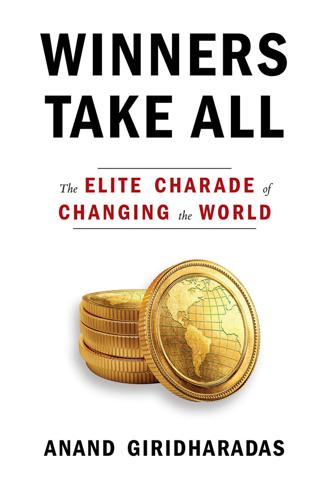
Winners Take All: The Elite Charade of Changing the World
by
Anand Giridharadas
Published 27 Aug 2018
In a remarkable passage, Judge Chen compared Uber’s power to that of the guards at the center of the Panopticon, which Foucault famously analyzed in Discipline and Punish. The Panopticon was a design for a circular prison building dreamed up in the eighteenth century by the philosopher Jeremy Bentham. The idea was to empower a solitary guard in the center of the building to watch over a large number of inmates, not because he was actually able to see them all at once, but because the design kept any prisoner from knowing who was being observed at any given moment. Foucault analyzed the nature and working of power in the Panopticon, and the judge found it analogous to Uber’s.

The London Compendium
by
Ed Glinert
Published 30 Jun 2004
Parliament, asked to choose between the two in 1836, decided to favour neither college but to create an umbrella body, the University of London, to administer exams for both sets of students. University College was the first British university to grant degrees to women. Jeremy Bentham Jeremy Bentham, the eighteenth-century philosopher, bequeathed a large sum of money to University College on condition that his own skeleton be preserved and displayed every year at the annual general meeting. Every year the mummified Bentham is taken along to the AGM enclosed in a mahogany case with folding glass doors, seated in an armchair and holding his favourite walking stick. Over the years there have been some cosmetic changes to the skeleton: the head is a wax model, the original being stored in the college safe, and the underclothes were changed as recently as 1935, a visiting academic insisting on it before giving a lecture.
…
Central London CLERKENWELL | FINSBURY, EC1 (i) Little Italy Bleeding Heart Yard Brooke Street Clerkenwell Road Coldbath Square Ely Court Ely Place Greville Street Hatton Garden Leather Lane Mount Pleasant Saffron Hill (ii) Clerkenwell Green area Clerkenwell Close Clerkenwell Green Farringdon Lane Farringdon Road St John’s Square (iii) Farringdon Charterhouse Square Cowcross Street St John’s Lane St John Street (iv) Finsbury Exmouth Market Pine Street Rosebery Avenue St John Street (v) St Luke’s Bunhill Row City Road BLOOMSBURY, WC1 (i) around the colleges Byng Place Gordon Square Gower Street Malet Street Russell Square Tavistock Square (ii) around the British Museum Bedford Square Bloomsbury Square Bloomsbury Way Great Russell Street New Oxford Street (iii) east Bloomsbury Doughty Street Guilford Street Lamb’s Conduit Street Marchmont Street Percy Circus Queen Square Southampton Row Theobald’s Road (iv) High Holborn / Gray’s Inn Bury Place Gray’s Inn Road Gray’s Inn Square High Holborn Red Lion Square COVENT GARDEN, WC2 (i) around Leicester Square Charing Cross Road Cranbourn Street Leicester Square St Martin’s Place Trafalgar Square (ii) St Giles Denmark Street St Giles High Street (iii) Covent Garden Bedford Street Bow Street Covent Garden (Piazza) Earlharm Street Garrick Street Henrietta Street King Street Long Acre St Martin’s Lane Wellington Street (iv) Holborn Aldwych Drury Lane Great Queen Street Kingsway Tavistock Street (v) Lincoln’s Inn Chancery Lane Houghton Street Lincoln’s Inn Fields Portsmouth Street Sardinia Street Took’s Court (vi) Strand Strand (vii) Adelphi Adelphi Terrace The Arches Buckingham Street Craven Street Hungerford Lane John Adam Street Lower Robert Street Northumberland Avenue Northumberland Street Villiers Street York Place (viii) Savoy Savoy Court Savoy Hill Savoy Place The Sabini gang Wilkes and liberty John Wesley’s general rules of employing time The Bloomsbury Group Jeremy Bentham British Museum glossary Lenin’s Bloomsbury haunts Demonstrations and rallies in Trafalgar Square Gin Lane The Gordon Riots CLERKENWELL | FINSBURY, EC1 Although there were busy trades in Clerkenwell, and working jewellers by scores, it was a purer place, with farmhouses nearer to it than many modern Londoners would readily believe, and lovers’ walks at no great distance, which turned into squalid courts – Barnaby Rudge, Charles Dickens (1841) Clerkenwell, London’s first suburb, grew in medieval times on the slightly raised ground to the north of the City by the east bank of the River Fleet and took its name from the Fons Clericorum, or Clerks’ Well, on Farringdon Lane, a glimpse of which can be seen behind the façade at 14 Farringdon Lane.
…
north side: Bessborough Gardens to Horseferry Road Morpeth Arms, No. 58 A well-preserved Victorian pub, featuring cut glass and wood panelling, that was built for the warders of Millbank Penitentiary. Millbank Penitentiary, Millbank at Bulinga Street Built in 1816 under the guidance of the social reformer Jeremy Bentham as the largest prison in the world, it was used mostly for convicts awaiting transportation to Australia, who were kept separate and silent for the first half of their sentence, a system that was scrapped after a cholera outbreak in 1823 when the women were released and the men transferred to prison boats on the Thames.
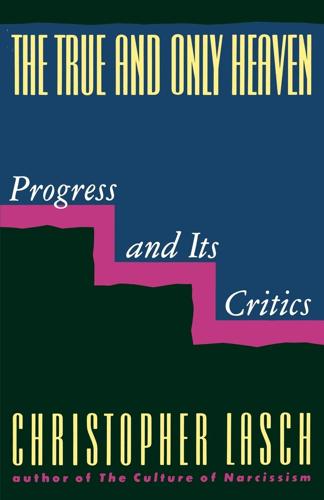
The True and Only Heaven: Progress and Its Critics
by
Christopher Lasch
Published 16 Sep 1991
The assumption of uniformity sometimes gave rise to sweeping reforms untempered by the slightest doubt about the ability of enlightened legislators to prescribe for all. Armed with a scientific understanding of the requirements for human happiness, philanthropists like Jeremy Bentham did not hesitate to propose a comprehensive reconstruction of political institutions, in which all the errors allowed to accumulate during unenlightened ages past—errors undeservedly dignified as ancestral wisdom—would be ruthlessly swept aside. Bentham's Panopticon, a penitentiary in which every cell could be observed at every moment by custodians stationed in a central tower, embodied in miniature a system of universal surveillance, a union of "benevolence" and rigorous discipline that could serve as a model for the social order as a whole.
…
An impoverished view of adulthood, this ostensibly sympathetic view of childhood also falsified the very thing it purported to celebrate, attributing to children Peter Pan's wish "always to be a boy and have fun," a wish that only jaded, embittered adults could have conceived. The American West, Childhood of the Nation Jeremy Bentham, that indefatigable advocate of improvement, noted with approval that in his day the "wisdom of our ancestors" had become a "sarcastic jibe of hatred and insult," the world having learned the folly of idolizing the "wisdom of untaught inexperienced generations." A writer in Household Words, a magazine edited for a time by Charles Dickens, made the same point in the course of a diatribe against the worship of the past.
…
Belasco, David, 338 Bell, Daniel, 456, 512, 528 ; on new class, 509, 5I3 Bellah, Robert, 172 ; on Emerson, 546, 548 Bellamy, Edward, 65, 67, 302 -3, 310 Bellamy, Joseph, 247, 260 Belloc, Hilaire, 317, 340 Benda, Julien, 511 Bender, Thomas: on gemeinschaft, 147 n.; on modernization, 164 -67; on Simmel, 145 Bendix, Reinhard: on modernization, 159, I6I, 162 Bennett, John C., 389 ; on Niebuhr, 380 -81; on progress, 381 Bentham, Jeremy, 125, 127, 227 ; on ancestral ignorance, 92 ; on commerce, 121 ; on pleasure and pain, 230 Bentley, Eric: on Carlyle, 242 -572- Benton, Joel, 245 Bercovitch, Sacvan: on Emerson, 550 -51 Berger, Brigitte: on Authoritarian Personality, 450 -51; on family, 517 ; on modernization, 165 -66 Berger, Peter: on Authoritarian Personality, 450; on family, 517 ; on intellectuals, 514 ; on modernization, 165 -66 Bergson, Henri, 300, 303 n., 304, 330 Berle, Adolph A., 510 Berman, Marshall: on Raymond Williams, 86 n.
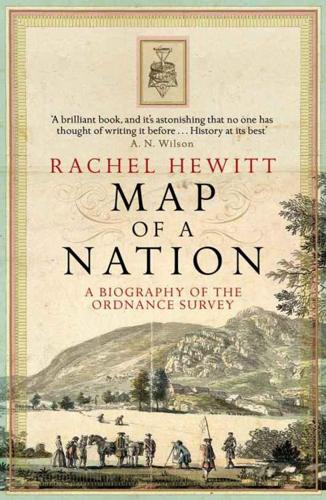
Map of a Nation: A Biography of the Ordnance Survey
by
Rachel Hewitt
Published 6 Jul 2011
Bedini, Silvio A., ‘Lens Making for Scientific Instrumentation in the Seventeenth Century’, Applied Optics, 5, pp. 687–94, 1966. Beeke, Henry, Observations on the Produce of the Income Tax, London: Wright, 1799. Bentham, Jeremy, Panopticon: Or, the Inspection-House, Dublin: Thomas Byrne, 1791. Berkeley, George, An Essay Towards a New Theory of Vision, Dublin: Pepyat, 1709. Bermingham, Ann, Landscape and Ideology: The English Rustic Tradition, 1740–1860, Berkeley and Los Angeles: University of California Press, 1986. Betjeman, John, Summoned by Bells, London: Murray, 1960. Black, Jeremy, Culloden and the ’45, Stroud: Alan Sutton, 1990. Blake, William, The Complete Poetry and Prose of William Blake, rev. edn, ed.
…
Conversations in coffee-houses were overheard and proponents of anti-royalist sentiment were hauled before courts, such as the Berkshire labourer Edward Swift who was accused of being a ‘pernicious seditious & evil disposed Person’ for speaking ‘treasonous and seditious words, viz. Damn and bugger the King and all that belong to him’. The climate of 1790s Britain appeared to manifest what the political philosopher Jeremy Bentham and, after him, the French historian Michel Foucault termed ‘panopticism’, all-seeing authoritarian surveillance. Map-makers had a history of unpopularity among the general populace. The presence of a map-maker in an area often indicated changes in taxes, a new Enclosure Act or ‘improvement’ to the disproportionately large estates of the nobility.
…
Index The Abergavenny (ship), 1 Abergele, 1 Aberystwyth, 1, 2, 3 Académie (Royale) des Sciences, 1, 2, 3, 4, 5, 6 achromatic lenses, 1, 2 Act of Union, Anglo-Scottish (1707), 1, 2, 3 Act of Union, Anglo-Irish (1800), 1 ‘Actual Topographical Survey of Sussex’ (Yeakell and Gardner), 1 Adam, William, 1, 2 Adams, John, 1, 2; Index Villaris, 1 Addiscombe, 1, 2 Admiralty charts, 1, 2, 3 Aikin, John, 1; Description of the Country from thirty to forty miles around Manchester, 1 Alberti, Leon Battista, 1 alidades, 1, 2, 3 Alien Office, 1, 2, 3 Allestone (imaginary country), 1, 2 American War of Independence, 1, 2, 3, 4, 5, 6, 7, 8 Americana (play), 1 Amiens, Treaty of (1802), 1, 2 The Ancient of Days (William Blake), 1 Angram Reservoir, 1 The Annals of Philosophy (journal), 1 annexed estates, 1 Antonine Wall, 1 Aonach Beag, 1 Arago, François Jean Dominique, 1 Arenig Fawr, 1 Argand burners, 1 Arniston House, 1, 2, 3, 4, 5, 6 Arnold, Matthew, 1 Arrowsmith, Aaron, 1, 2: Memoir Relative to the Construction of the Map of Scotland … in the Year 1807, 1 art, and cartography, 1, 2, 3, 4, 5, 6, 7, 8, 9, 10, 11; see also landscape; perspective artillery, 1, 2, 3, 4, 5, 6, 7, 8, 1, 2 Artillery, Royal Regiment of, 1, 2, 3, 4, 5, 6, 7, 8, 9, 10, 11, 12, 13, 14, 15 Artillery, Royal School of, 1 Aslam, Nadeem, 1 Astronomical Society, 1 Austen, Jane, 1, 2: Mansfield Park, 1; Pride and Prejudice, 1 Babbage, Charles, 1, 2 Bagshot Heath, 1 Baird, Mary, 1 Baker, Henry, 1 Baldwin, Thomas, 1 Balta, 1 Banks, Joseph: and Society of Arts, 1; travels with Cook, 1; and Royal Society, 1, 2, 3; and Paris–Greenwich triangulation, 1, 2, 3, 4; and Hounslow Heath baseline measurement, 1, 2, 3; on British map-making, 1; on Mudge’s timekeepers, 1; and published accounts of Trigonometrical Survey, 1; and Biot, 1, 2; death, 1 Banstead Church, 1, 2 Bantry Common, 1 Barmouth, 1 barometers, 1 Barrow-in-Furness, 1 Bath, 1 Beachy Head, 1 Beauclerk, Topham, 1 Beaumont, Sir George, 1 Beeke, Henry, 1; Observations on the Produce of the Income Tax, 1 Belfast News Letter, 1, 2 Ben Nevis, 1 Bentham, Jeremy, 1 Berge, John, 1, 2 Berkeley, George, 1 Bevis, John, 1 Bibliothèque Nationale, 1 Biot, Jean Baptiste, 1, 2 Bisset, Charles, 1 Black Combe, 1, 2, 3 Black Hambleton, 1 Blackwood’s Edinburgh Magazine, 1 Blagden, Charles, 1, 2, 3, 4, 5, 6, 7 Blair, John, 1 Blair Atholl, 1 Blair Castle, 1 Blake, William, 1; The Ancient of Days, 1; Newton, 1 Board of Health, 1, 2 Board of Longitude, 1, 2 Board of Ordnance: abolition, 1; with Cornwallis as Master-General, 1, 2, 3; and establishment of Engineers and Artillery, 1; and fire at Tower of London, 1; with Lennox as Master-General, 1, 2, 3, 4, 5, 6, 7; and map-making, 1, 2, 3, 4; and Military Survey of Scotland, 1, 2; origins, 1; with Phipps as Master-General, 1; with Raglan as Master-General, 1; social status of employees, 1, 2, 3; Tower of London draughtsmen, 1, 2, 3, 4, 5, 6, 7, 8, 9; with Wellesley as Master-General, 1, 2, 3 Bogs Commission, 1 Bootle, Cumbria, 1, 2 Borda, Jean Charles de, 1 Borges, Jorge Luis, 1 Borlase, William, 1, 2 Botley Hill, 1 Bouguer, Pierre, 1 Boulsworth Hill, 1 Boundary Commission (Ireland), 1, 2 Boyd, Elizabeth Hesther, 1 Brentwood Church, 1 Bristol Channel, 1 British Association for the Advancement of Science, 1, 2 British Library, 1, 2 Bruce, Lady Mary, 1 Brunswick, Prince Ferdinand, Duke of, 1 Bryce, Alexander, 1, 2; Map of the north coast of Britain, 1 Buckland, William, 1 Budgen, Charles, 1, 2, 3 Budgen, Jane, 1 Budgen, Richard, 1 Budworth, Joseph, 1 Buness House, Unst, 1 Bureau des Longitudes, 1 Burke, Edmund: on administrative restructuring of France, 1; on French Revolution, 1, 2, 3; Reflections on the Revolution in France, 1, 2; intellectual circle, 1; and Mudge family, 1; on sublimity, 1; A Philosophical Inquiry into the Origin of Our Ideas of the Sublime and Beautiful, 1; on Reynolds, 1 Burney, Charles, 1 Burney, Fanny, 1 Burrow, Reuben, 1, 2 Bushy Heath, 1 Bute, John Stuart, 1rd Earl of, 2, 3 Butser Hill, 1 Cadair Idris, 1, 2 cairns, 1 Calais, 1, 2 Calderwood, William, 1, 2 Caledonian Mercury, 1, 2, 3, 4 The Calf, 1 Camden, William, 1, 2, 3; Britannia, 1, 2, 3, 4 Campbell, Admiral John, 1 Campbell, Major General John, 1 Cap Blanc Nez, 1 Carlisle, Nicholas, 1; Topographical Dictionary of England, 1 Carlyle, Alexander, 1 Carte de Cassini, 1, 2, 3, 4, 5, 6 cartographers see map-makers cartography: advances in, 1; and board games, 1; and conventions of representation, 1, 2, 3, 4; deficiencies in, 1, 2, 3, 4; and methods of printing and engraving, 1, 2, 3; and Enlightenment, 1, 2, 3, 4, 5; influence on cultural imagination, 1; origin of word, 1.n2, 2; and Romantic movement, 1; in twenty-first century, 1; see also mapping; maps Cary, John, 1 Cassini, Giovanni Domenico (Cassini I), 1, 2 Cassini, Jacques (Cassini II), 1 Cassini, Jean Dominique (Cassini IV), 1, 2, 3 Cassini de Thury, César François (Cassini III), 1, 2, 3, 4 Castle Dounie, 1 Castle-o’er, 1 Caulfeild, William, 1 cess tax (Ireland), 1, 2, 3 chain, measuring, 1, 2, 3, 4, 5, 6, 7, 8, 9, 10, 11, 12, 13, 14; see also Gunter’s chain Chambers, Ephraim, 1 Channel Islands, 1 Charles II, 1 Charlotte of Mecklenburg-Strelitz, Princess, 1 charts see maps, Admiralty charts, surveys Chatham, 1 Chew Green, 1 Chippendale, Thomas, 1 Chislet, 1 chronometers, 1 circumferentors, 1, 2 Claude Glass, 1 Cleghorn, 1 Clerk, Sir John, 1, 2 Clifford, Robert Edward, 1, 2 Clifton (near Doncaster), 1 Close, Charles, 1 Coigach, Wester Ross, 1 Colby, Thomas, 1; joins Ordnance Survey, 1; background, 1; shooting accident, 1; surveys Wales, 1, 2, 3, 4, 5; surveys northern England, 1; An Account of the Trigonometrical Survey … in the Years 1800 [to] 1809 (vol 3) (with Mudge), 1, 2, 3, 4; and meridian arc measurement in Scotland, 1; conflict with Biot, 1, 2; and Shetland Islands extension, 1; appointed superintendent of Ordnance Survey, 1; finds inaccuracies in Ordnance Survey maps, 1; proposes mapping of Ireland, 1, 2; and mapping of Ireland, 1, 2, 3, 4, 5, 6; and Lough Foyle baseline, 1; and memoir project (of Ireland), 1, 2, 3, 4, 5; reluctance to publish, 1; and Irish toponymy, 1; accused of lack of progress, 1; Ordnance Survey of the County of Londonderry (with Larcom), 1; presents first Irish map to William IV, 1; and move to Southampton, 1; and mapping of England’s northern counties, 1; retires from Ordnance Survey, 1, 2; death, 1; legacy, 1 Coleridge, Hartley, 1 Coleridge, Samuel Taylor, 1, 2, 3, 4, 5, 6, 7 Committee for Measuring the Attraction of Hills, 1 Committee of Public Safety, 1 Compensation Bars, 1, 2, 3, 4, 5 Compton, Thomas, 1; The North Cambrian Mountains, 1 Connemara, 1 contour lines, 1, 2, 3, 4, 5, 6; see also isopleths Conway, Henry Seymour, 1 Cook, Captain James, 1 Copernicus, Nicolaus, 1; De revolutionibus orbium coelestium, 1 Copley Medal, 1, 2, 3 copper-plate engraving, 1 Cornwall, Ordnance Survey maps and surveys of, 1 Cornwallis, Charles, 1st Marquess: appointed Master-General of Board of Ordnance, 1; and first Ordnance Survey maps, 1, 2; gives Mudge full control of Ordnance Survey, 1; orders Mudge to survey Essex, 1 Corps of Engineers see Engineers, Corps of Cosway, Maria, 1 Countryside and Rights of Way Act (2000), 1 Courier and Evening Gazette, 1 Covent Garden Theatre, 1 Cowley, John, 1; A Display of the Coasting Lines of Six Several Maps of North Britain, 1 Craig Varr, 1 Crichton, James, 1 Crimean War, 1 Cromwell, Oliver, 1 Crosley, William, 1 Crowborough Beacon, 1 Cruickshank, George, 1; The Antiquarian Society, 1 Culloden, Battle of, 1, 2 cultural nationalism, 1, 2 Cumberland, William Augustus, Duke of, 1, 2, 3, 4, 5 Daily News, 1, 2 Dalby, Isaac: appointed to Ordnance Survey, 1, 2; on Williams, 1; and Hounslow Heath baseline measurement, 1, 2; mapping of south coast, 1, 2, 3; and Salisbury Plain baseline, 1; An Account of the Operations Carried on for Accomplishing a Trigonometrical Survey of England and Wales (with Mudge), 1, 2,3, 4, 5, 6, 7; ‘An Account of the Trigonometrical Survey … 1791, 1792, 1793, and 1794’ (with Mudge and Williams), 1; ‘An Account of the Trigonometrical Survey … 1795 and 1796’ (with Mudge and Williams), 1, 2; and Gardner, 1; and Paris–Greenwich triangulation, 1; leaves Trigonometrical Survey, 1 d’Alembert, Jean le Rond, 1 Dalrymple, Alexander, 1, 2 Davies, Hugh, 1 Davy, Humphry, 1 Dawson, Robert, 1, 2, 3, 4, 5, 6 Dawson, Robert Kearsley, 1, 2, 3, 4 de la Beche, Henry, 1; Report on the Geology of Cornwall, Devon and West Somerset, 1; Researches in Theoretical Geology, 1 De Quincey, Thomas, 1 de Vere, Aubrey, 1 Debbieg, Hugh, 1, 2, 3 Delambre, Jean Baptiste Joseph, 1, 2, 3 Derby, 1 Dermody, Thomas, 1; The Invalid’, 1 Derry Journal, 1 Dettingen, Battle of, 1 Devil’s Punch Bowl, 1 Diderot, Denis, 1 Digges (mathematician), 1, 2 Dillwyn, Lewis Weston, 1 Ditchling Beacon, 1, 2 dividing engine, 1 Divis Mountain, 1, 2 Dixon, Jeremiah, 1 Dolgelle, 1 Dollond, John, 1, 2 Donn, Benjamin, 1 Dorking, 1 Dover, 1, 2, 3, 4, 5 ‘Down Survey’, 1; see also Petty, William Drogheda, 1 Drummond, Thomas, 1, 2, 3, 4 Dublin Evening Post, 1 Dundas, Ann (née Gordon), 1, 2, 3 Dundas, David, 1, 2, 3, 4 Dundas, Elizabeth (née Watson), 1, 2, 3 Dundas, Robert, (1685–1753), 1, 2, 3, 4, 5, 6, 7, 8 Dundas, Robert ‘Robin’, (1713–1787), 1, 2, 3, 4 Dundas, William, 1 Dungiven, 1 Dunkeld, 1 Dunkirk, 1, 2 Dunnose, Isle of Wight, 1, 2 Dunsink Observatory, Castleknock, 1, 2 Dutens, Louis, 1 Dyer, John, 1; ‘Grongar Hill’, 1 earth, shape of, 1, 2, 3, 4, 5, 6, 7, East India Company, 1, 2, 3, 4, 5, 6, 7 École Polytechnique, 1 Eddystone Lighthouse, 1 Edgeworth, Francis, 1 Edgeworth, Maria, 1, 2 Edgeworth, Richard Lovell, 1, 2 Edgeworth, William, 1, 2, 3, 4 Edinburgh University, 1 Edmondston, Thomas, 1 Edward I, 1 Ejuxria (imaginary kingdom), 1 electrotyping, 1 enclosure, 1 Engineers, Corps of, 1, 2, 3, 4, 5, 6, 7, 8, 9, 10, 11, 12, 13, 14, 15, 16, 17, 18, 19; in Ireland, 1, 2, 3, 4, 5, 6, 7, 8, 9, 10, 11; Corps moves to War Office, 1 English Civil War, 1 engraving, 1, 2, 3 The Englishman Who Went Up a Hill but Came Down a Mountain (film), 1.n2 Enlightenment, 1, 2, 3, 4, 5, 6, 7 Essex, Ordnance Survey maps and surveys of, 1, 2, 3, 4 Establishment for Military Education, 1 estate maps, 1, 2, 3, 4, 5 Everest, George, 1, 2 Examiner (Ireland), 1 Faden, William, 1, 2, 3, 4, 5, 6 Fairlight Head, 1, 2 Falconer, William, 1 Faraday, Michael, 1 Fennell, James, 1; Lindor and Clara: or, the British Officer, 1 Ferdinand VI of Spain, 1 Ferguson, Adam, 1 Field Day theatre company, 1 Floors Castle, 1 Fontenelle, Bernard de, 1 Foot, Thomas, 1, 2 Ford, Captain W.H., 1 forfeited estates see annexed estates Fort Augustus, 1, 2 Fort William, 1 fortifications, 1, 2, 3, 4, 5, 6 Fortifications Bill, 1, 2 Foucault, Michel, 1 Foyle, Lough, 1 Fox, Charles James, 1 Fox, Henry, 1 France: administrative boundaries, 1, 2; and Cassini dynasty, 1; first national map, 1; measurement of, 1, 2; and metre project, 1; military maps, use of, 1; and spies, 1, 2; weights and measures, 1; see also French Revolution Franklin, Benjamin, 1 French Revolution, 1; Revolutionary and Napoleonic Wars, 1, 2, 3, 4, 5, 6, 7, the Terror, 1; British reaction to French Revolution, 1, 2; ‘Pitt’s Terror’, 1 Fresnel lamps, 1 Friel, Brian, 1, 2; Making History, 1; Translations, 1, 2 Frisius, Gemma, 1; Libellus de locorum describendorum ratione, 1 Gardner, William, 1, 2, 3, 4, 5, 6, 7, 8; ‘Actual Topographical Survey of Sussex’ (with Yeakell), 1 Garrick, David, 1, 2, 3 Garth Mountain, 1.n2 Gascoigne, William, 1 Gauss, Carl Friedrich, 1 Gentleman’s Magazine, 1, 2 geodesy, 1, 2, 3, 4 Geological Society, 1 Geological Survey, 1, 2 geology, 1 geometry, 1, 2, 3; see also perspective; triangulation; Trigonometrical Survey; trigonometry George I, 1 George II, 1, 2, 3, 4 George III, 1, 2, 3, 4, 5, 6, 7, 8, 9, 10, 11, 12, 13, 14, 15 George IV, 1 Gibson, Edmund, 1 Gilpin, William, 1, 2 Glamorgan, Ordnance Survey maps and surveys of, 1 Glastonbury Tor, 1 Glenomara, 1 Global Positioning Systems, 1, 2 Glorious Revolution (1688), 1, 2, 3, 4 Goldsmith, Oliver, 1, 2, 3 Goodwood House and estate, 1, 2, 3 Google maps, 1 Gordon, Alexander, 1 Gordon, Ann see Dundas, Ann (née Gordon) Gordon, Charles Hamilton, 1 Gordon, Sir William, 1, 2 Goulburn, Henry, 1 Gower, Ordnance Survey maps and surveys of, 1 Gravesend, 1 Gray, Thomas, 1 Gream, Thomas, 1 Great Bustard, 1 Great Glen, 1 Great Orme, 1 Great Theodolite see theodolites Great Whernside, 1, 2 Great Yarmouth, 1 Greenwich–Paris triangulation, 1, 2, 3 Gregory, Olinthus, 1, 2, 3 Greville, Charles Francis, 1 Griffith, Richard, 1, 2 Gunter, Edmund, 1 Gunter’s chain, 1, 2; see also chains, measuring Gurney, Sir Goldsworthy, 1 hachuring, 1, 2, 3 Hadrian’s Wall, 1 Hall, Lewis Alexander, 1, 2, 3 Hallcraig, 1, 2 Hamilton, Sir William, 1 Hamilton, William Rowan, 1, 2, 3; and Law of Conical Refraction, 1; and Wordsworth, 1 Hampstead Heath, 1 Hampton Poor House, 1, 2, 3 Hanger Hill Tower, 1, 2, 3 Haram-es-Sherif, Jerusalem, 1 Hardiman, James, 1 Harrison, John, 1 Harrison, William, 1 heliostats/heliotropes, 1 Hennequin, Philippe, 1 Henry VIII, 1 Herschel, John, 1 Hesseln, Robert de, 1 Highland reform, 1, 2, 3; see also annexed estates Highmore, Joseph, 1 Highway Act (1555), 1 Highways Act (1773), 1 High Wycombe military academy 1, 2, 3 hiking, 1 Hindhead, 1 Hodson, Yolande, 1 Hogarth, William, 1 Hollar, Wenceslaus, 1; A New Map of the Cittyes of London and Westminster (attr.

The Master and His Emissary: The Divided Brain and the Making of the Western World
by
Iain McGilchrist
Published 8 Oct 2012
The powerful all-surveying, all-capturing eye achieved its apotheosis in Jeremy Bentham’s Panopticon. This was, tellingly, a prison design which enabled prisoners to be under total surveillance while being themselves unaware of when they were being watched, a project about which Bentham was so enthusiastic that he spent much of his time and personal fortune on it. It has become familiar through the writings on modern society of Michel Foucault, with obvious correlates in the present world of technological surveillance, and in this way one could say that Bentham’s dream, or nightmare, was prescient. Bentham, the father of utilitarianism, was an eccentric character.
…
I., ‘Disturbances in constructional ability’, Cortex, 1970, 6(1), pp. 19–46 Benson, D. F. & Stuss, D. T., ‘Frontal lobe influences on delusions: a clinical perspective’, Schizophrenia Bulletin, 1990, 16(3), pp. 403–11 Bentham, J., The Works of Jeremy Bentham, ed. J. Bowring, William Tait, Edinburgh, 1838–43 ——, An Introduction to the Principles of Morals and Legislation, in M. Warnock (ed.), Utilitarianism and On Liberty, including Mill’s ‘Essay on Bentham’ and selections from the writings of Jeremy Bentham and John Austin, Blackwell, Oxford, 2003 Benton, A. L., ‘Constructional apraxia and the minor hemisphere’, Confinia Neurologica, 1967, 29, pp. 1–16 Benton, A.
…
Insight experience correlates with solution activation in the right hemisphere’, Psychonomic Bulletin & Review, 2003, 10(3), pp. 730–37 Bowers, D., Blonder, L. X., Feinberg, T. et al., ‘Differential impact of right and left hemisphere lesions on facial emotion and object imagery’, Brain, 1991, 114(6), pp. 2593–609 Bowring, J., Memoirs of Bentham, in Bentham, J., The Works of Jeremy Bentham, ed. J. Bowring, William Tait, Edinburgh, 1838–43, vol. 10 Boyle, D., The Tyranny of Numbers, HarperCollins, London, 2001 Boys-Stones, G., ‘Physiognomy and ancient psychological theory’, in Swain, S. (ed.), Seeing the Face, Seeing the Soul, Oxford University Press, Oxford, 2007, pp. 19–124 Bracha, H.

Cities Are Good for You: The Genius of the Metropolis
by
Leo Hollis
Published 31 Mar 2013
The 2004 report from the University of Leicester asks where was the inconclusive proof that CCTV makes people feel safer? How do we feel being silently watched by the authorities all the time? Does it change the way people behave? Does it influence our sense of trust? In 1791, two years after the storming of the Bastille, the Utilitarian philosopher Jeremy Bentham developed the notion of the Panopticon, a prison in which the inmates were observed at all times by some unseeing eye. The design of the gaol meant that the prisoner never knew whether he was being watched or not; therefore he was forced to behave himself rather than be disciplined. In effect he became both the jailer and the incarcerated.
…
Graham, S., ‘Olympics 2012 security: welcome to lockdown London’, www.guardian.co.uk/sport/2012/mar/12/london-olympics-security-lockdown-london 18. news.bbc.co.uk/1/hi/england/leicestershire/4294693.stm 19. www.guardian.co.uk/education/2006/jun/20/highereducationprofile.academicexperts 20. Graham, S., 2011, p. 263. 21. arstechnica.com/gadgets/news/2011/08/53-of-mobile-users-happy-to-hand-over-location-data-for-coupons.ars 22. www.theinternetofthings.eu/content/new-years-contest-panopticon-metaphor-internet-things---why-not-if-it-were-opposite 23. Goodyear, S., ‘Do Gated Communities Threaten Society?’, 11 April 2012, www.theatlanticcities.com/neighborhoods/2012/04/do-gated-communities-threaten-society/1737 24. Wilkinson, R. and Pickett, K., The Spirit Level: Why Equality is Better for Everyone, Penguin, 2010, p. 62. 25.
…
This has been a project that has connected me to many different people in many different places – more of an adventure than a writing exercise. Most importantly, thanks to the K. Blundell Trust whose generosity allowed me to travel and see some of the cities in the book for myself. Thanks also go to: Fran Tonkiss, Mike Batty, Jeremy Black, Michael Sorkin, Rahul and Matias at URBZ, Elizabeth Varley, Scott Burnham, Emer Coleman, Rick Burdett; Patrick Walsh, Claire Conville, Jake Bosanquet-Smith and Alex Christofi; Helen Garnons-Williams and Erica Jarnes; George Gibson and Jacqueline Johnson. This book is dedicated to Louis and Theadora because the city will one day belong to you and you must see it as an adventure, not a place of danger.

Empire: How Britain Made the Modern World
by
Niall Ferguson
Published 1 Jan 2002
Central to his urban vision were the huge Hyde Park Barracks, the biggest such building in the overseas empire at that time. With their austere symmetrical lines – the work of Francis Howard Greenway, a Gloucestershire architect and transported forger – the Barracks look like the prototype for Jeremy Bentham’s Utilitarian ‘panopticon’. Six hundred criminals, with artisan skills, slept there in rows of hammocks, a hundred to a room, easily kept under surveillance through spy-holes. But this was far from a punishment block. It was a centre for the orderly allocation of skilled convict labour, the prisoners who had once been artisans and craftsmen but had fallen on hard times and turned to petty crime.
…
(ed.), Sir Francis Drake and the Famous Voyage, 1577–1580 (Berkeley/Los Angeles/London, 1984), pp. 49–59 Armitage, David, The Ideological Origins of the British Empire (Cambridge, 2000) Barua, Pradeep, ‘Military Developments in India, 1750–1850’, Journal of Military History, 58/4(1994), pp. 599–616 Bayly, C. A., Indian Society and the Making of the British Empire (Cambridge, 1988) —, Imperial Meridian: The British Empire and the World, 1780–1830 (London, 1989) Bernstein, Jeremy, Dawning of the Raj: The Life and Trials of Warren Hastings (London, 2001) Boxer, C. R., The Dutch Seaborne Empire, 1600–1800 (London, 1965) Brenner, Robert, ‘The Social Basis of English Commercial Expansion, 1550-1650’, Journal of Economic History, 32/1 (1972), pp. 361–84 Brigden, Susan, New Worlds, Lost Worlds (London, 2000) Carlos, Ann M. and Nicholas, Stephen, ‘Agency Problems in Early Chartered Companies: The Case of the Hudson’s Bay Company’, Journal of Economic History, 50/4 (1990), pp. 853–75 Carnall, Geoffrey and Nicholson, Colin (eds.), The Impeachment of Warren Hastings: Papers from a Bicentenary Commemoration (Edinburgh, 1989) Cell, Gillian T.

Naked City: The Death and Life of Authentic Urban Places
by
Sharon Zukin
Published 1 Dec 2009
Jensen, “The BID’s of New York: Power, Place, and the Role of Business Improvement Districts,” paper presented at the eighteenth AESOP Congress, Grenoble, July 1–3, 2004, p. 10; “an earlier set of values”: Heather MacDonald, “Why Business Improvement Districts Work,” Civic Bulletin, no. 4, May 1996, www.manhattan-institute.org/html/cb_4.htm; Bennett, Birth of the Museum, p. 24. Certainly the use of surveillance for social control takes many modern forms, beginning with Jeremy Bentham’s panopticon and leading up to today’s closed-circuit TV and biometric screening. 27. Darren Walker quoted in Sewell Chan, http://cityroom.blogs.nytimes.com/2007/10/04/has-new-york-lost-its-soul/, October 4, 2007. 28. Thomas J. Lueck, “Public Needs, Private Answers—A Special Report; Business Districts Grow, at Price of Accountability,” New York Times, November 20, 1994; Dan Barry and Thomas J.

The Age of Surveillance Capitalism
by
Shoshana Zuboff
Published 15 Jan 2019
They live on the frontier of a new form of power that declares the end of a human future, with its antique allegiances to individuals, democracy, and the human agency necessary for moral judgment. Should we awaken from distraction, resignation, and psychic numbing with Scrooge’s determination, it is a future that we may still avert. VI. No Exit When Samuel Bentham, brother of philosopher Jeremy, first designed the panopticon as a means of overseeing unruly serfs on the estate of Prince Potemkin in the late eighteenth century, he drew inspiration from the architecture of the Russian Orthodox churches that dotted the countryside. Typically, these structures were built around a central dome from which a portrait of an all-powerful “Christ Pantokrator” stared down at the congregation and, by implication, all humanity.
…
Rune Svarverud (Copenhagen: Nordic Institute of Asian Studies, 2010); Yunxiang Yan, The Individualization of Chinese Society (Oxford: Bloomsbury Academic, 2009). 34. Hawkins, “Chinese Citizens Want the Government to Rank Them.” 35. Hvistendahl, “Inside China’s Vast New Experiment.” 36. Hvistendahl. 37. Masha Borak, “China’s Social Credit System: AI-Driven Panopticon or Fragmented Foundation for a Sincerity Culture?” TechNode, August 23, 2017, https://technode.com/2017/08/23/chinas-social-credit-system-ai-driven-panop ticon-or-fragmented-foundation-for-a-sincerity-culture. 38. “China Invents the Digital Totalitarian State,” Economist, December 17, 2016, http://www.economist.com/news/briefing/21711902-worrying-implications-its-social-credit-project-china-invents-digital-totalitarian. 39.
…
See also consent Oremus, Will, 459 Origins of Architectural Pleasure (Hildebrand), 475 Origins of Totalitarianism, The (Arendt), 358, 383, 518 Orwell, George, 90, 523–524; and 1984, 371, 372–373, 636n68 otherization of humanity, 363–364, 365–366, 378, 397f, 410 Other-One viewpoint: as global presence, with Big Other, 377; human being as organism, 363–364, 365–366, 377; instrumentarian power operates from, 382, 418–419; Meyer’s, 363–366; Skinner seeks technology of human behavior institutionalizing, 369–371; Skinner’s elaboration of, 366–368; society as, 398–399; and tyranny, 513–514; in Walden Two, 373–374; and young people’s experience of hive life, 445–446, 465 “others,” dependency on: in adolescence, 448–449, 453–454, 465–466; and social media, 447–448, 456–457, 465 outside-looking-in experience of the self, 447–448, 456–457, 465 Overstock.com, 48 Overture search engine, 71, 76 Ovum, 246 Page, Larry: and advertising, 71, 74, 84; as exception to traditional utopian thinkers, 405; on Google as automagical, 128; and Google corporate governance structure, 101–102; and Google’s secrecy, 89; on lawlessness of cyberspace, 105; on right to be forgotten ruling, 60; on transformation of society, 401–402; on true nature of Google’s business, 98 Page Rank algorithm, 69 Paglen, Trevor, 491 Paine, Thomas, 513, 522 Palantir, 388 panopticon, 470–471 Paradiso, Joseph, 207–208, 208–209, 221, 224, 240, 378 Parker, Sean, 451 parking spaces, 229–230 Pasquale, Frank, 108, 109, 174, 187 Patel, Amit, 67–68, 75, 76 patents: Facebook’s, 159–160, 287, 393; Google’s, 77–80, 150; Microsoft’s, 411–412; for reality mining, 423; for vehicle telematics, 216 patients’ rights, 322, 325 Patriot Act (2001), 114 Pedersen, Darhl, 479 Peifer, Karl-Nikolaus, 59 Pentagon Highlands Forum, 118 Pentland, Alex: on attractions of instrumentarianism, 429; on behavior for the greater good, 432; commercial ventures of, 422, 424–425; on computation replacing politics, 433–434, 438; credentials of, 417–418; on death of individuality, 438–439, 440, 441; and detached observation (God’s eye view), 418–419; on laws of social behavior, 430–431; principles of instrumentarianism, 430–442; and reality mining, 420–423, 428; rejection of old social categories by, 428; on social network incentives, 436; on social pressure for harmony, 436–437; students of, 417–418, 419; theory of instrumentarianism, 416–417, 426–429; work on rendition of social relations, 419–429 people analytics.

Behind the Berlin Wall: East Germany and the Frontiers of Power
by
Patrick Major
Published 5 Nov 2009
Yet theorists and cultural historians have been equally guilty of fetishizing elite power fantasies, while ignoring their realizability. Reading eighteenth-century prescriptions for a more ordered society—epitomized by the prison, but replicated in factories, schools, barracks, and hospitals—Michel Foucault charted the rise of the modern regulatory state. His pinnacle of rational control was Bentham’s imagined Panopticon, that voyeuristic, theatrical penitentiary in which prisoners would learn to surveil themselves. Yet the society-as-prison metaphor is not without relevance to the GDR, as is Foucault’s recognition that heavy-handed shows of force could yield to more sophisticated techniques. As he suggested: ¹⁶ For a cultural anthropology of international borders, see Hastings Donnan and Thomas M.
…
Index 1953, 17 June uprising 11, 29, 54, 65–6, 85, Biermann, Wolf 178–9, 185–6, 208 99–100, 134, 168 black market 27, 89–90 1989 see Berlin Wall, fall of Blake, George 30 GDR’s fortieth anniversary 245, 248–9 Bloch, Ernst 70 blockade see Berlin blockade Adenauer, Konrad 13, 36, 56 Bohley, Bärbel 236 Alarm im Zirkus (1954) 98 Bond, James 182 Allinson, Mark 289 border Alltagsgeschichte (everyday history) 8, 10 closures 74, 90–1, 109, 120 airlift see Berlin blockade evacuations 91, 150 guards 89–90, 108–9, 145–7, 151–2; Anderson, Sascha 187 killings of, 148–9, 268–9 army see National People’s Army Bornholmerstraße crossing point 253 arrests 132, 147, 149–50, 219 Bouchet, Christophe 272 art see under Berlin Wall Bowie, David 176 Brandenburg Gate 254–5, 277 Bahr, Egon 163 Brandt, Willy 92, 145, 164, 258 Bahro, Rudolf 214 Brasch, Thomas 176 Bartmuß, Pastor 214 Brecht, Bertolt 90 Beatles 171 Brill, Hermann 65 Bentham, Jeremy 4 Brüssig, Thomas 260–1 Berlin 26–31 blockade 27–8, 30 fall of (1945) 26 Charité hospital 72, 126, 133 rebuilding 274 Checkpoint Charlie 1, 278 sector boundary 89, 95–6, 108, 120 chemicals industry 78–9, 83 Berlin, East 33, 39 Chernobyl reactor disaster 236 demonstrations in 245–6 children see under young people mass rally of 4 November 1989 250 China, People’s Republic of 33, 40 Berlin, West 24, 28, 31, 34, 128, 161–2, 291; Christmas pass agreements 163 as Free City 40 church 91, 153, 237–8 Berlin Crisis (1958–61) 31–42, 72–3 and emigration 237–8, 242 Berlin Wall 1, 155–62 Churchill, Winston 2 as ‘Antifascist Defence Rampart’ 143 CIA (Central Intelligence Agency) 29, 31 art installations at 272–3, 277–8 cinema see film Clay, Lucius D. 27 decision to build 108–16 collectivization 25, 49–50, 53 demolition 274–5 communist party see SED expansion 149–50, 152 compassionate leave 199–208, 240 Exclusion Zone 153, 261 computer programme 229 fall of 251–4 consciousness analyses 16 graffiti 271–3, 274; see also art installations consumerism see under economics at CSCE see human rights historiography of 283–90 Czechoslovakia 252 initial reactions to 119–28; personal factors 128–9, 157–9 preservation 275–83 Dahrendorf, Gustav 65 propaganda for and against 155–6, 284–6 DEFA (state film company) 15, 35 Berlin Ecke Schönhauser (1957) 98–9 defections, see ‘Republikflucht’ Berliner Romanze (1956) 98 demonstrations 238, 242–51 Beuys, Joseph 273 Diepgen, Eberhard 277 318 Index doctors 60, 68–9, 71–2, 73, 80, 83, 85, 86, Federal Republic of Germany (FRG) 32, 34, 99, 133 161 Deighton, Len 1, 286 asylum policy 58, 65, 74, 107 Demarcation Line 89–91, 145, 153–4, trade embargo 47–8 270–1 fiction 179–83 Diedrich, Torsten 289 film 31, 96, 98, 178, 183–6, 233 dissidents see opposition food see consumerism Dohlus, Horst 14, 233 foreign policy 17, 23–4, 25–6, 32, 33–4, 38, Dresden, battle of railway station 245 52, 54, 72–4, 163 Dulles, John Foster 36 Foucault, Michel 4–5 Dutschke, Rudi 70 Frankfurt/Oder 14 Frost, Robert 227 Fulbrook, Mary 10, 159 East German communist party see SED East Side Gallery 275–6 economics 24–5, 27, 42–52 Gaddis, John Lewis 25 autarky ( Störfeimachung) 46–8 Gagarin, Yuri (cosmonaut) 52 and Berlin Wall 111 Garton Ash, Timothy 220 consumerism 30–1, 49–51, 52–3, 63, 76, Geneva summit (1959) 34, 38 127, 165–6, 182–3, 189–90, 208, Glatzkopfbande, Die (1963) 183 210–11, 229–30, 258–9, 262 globalization 9, 193 currency reform 27, 29, 257 Göring, Peter 148 debt crisis 228, 251–2 Good Bye, Lenin!
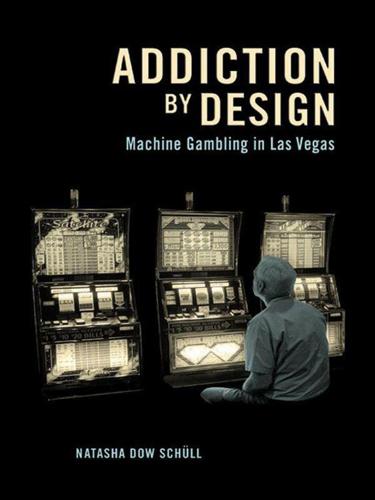
Addiction by Design: Machine Gambling in Las Vegas
by
Natasha Dow Schüll
Published 15 Jan 2012
As Caillois had written earlier: “Recourse to chance helps people tolerate competition that is unfair or too rigged. At the same time, it leaves hope in the dispossessed that free competition is still possible in the lowly stations in life” (1979 [1958], 115). 36. Goffman 1961, 34. 37. Geertz 1973. The concept of “deep play” was first elaborated by Jeremy Bentham to describe play in which financial stakes run “irrationally” high despite the fact that chance will determine the outcome, indicating that more than just money is at stake (in ibid., 431). 38. Dostoyevsky 1972 [1867], 199. The semiautobiographical novel was written during a period when Dostoyevsky struggled with his own excessive gambling.
…
Bachelard, Gaston Bally Technologies: Comfort Zone consoles; data visualization system; and the first coin multiplier; and the first electromechanical slot machine; and the first patent for video poker; game design at; and legal hearings on near misses; and multiline slots; and player tracking; Powercash system; Privacy Zone cabinets; simulation of mechanical reels by; TITO system Bank of America Barney: on video poker as a direct way to destiny Bataille, Georges Bateson, Gregory: on addiction; on equilibrium; on nonpurposive activities Baudrillard, Jean Bauman, Zygmunt Beck, Ulrich. See also risk society. behavioral reinforcement. See reinforcement. Bell, Daniel Benjamin, Walter Bentham, Jeremy Bergler, Edmund Bernhard, Bo: on informational remedies for problem gambling; on spread of video gambling; on unintended consequences of gambling machine safety modifications; on video gambling addiction; on voluntary responsible gambling features Biggs, Lindy Blaszczynski, Alex Borrell, Jennifer: Bourgois, Philippe Brandt, Allen Breen, Robert Britain Brown, Denise Scott budget managementff Bull, Stuart Burke, Kenneth Burroughs, William Burton, Bill Bybee, Shannon Caesars Palace Caillois, Roger Calleja, Gordon Callon, Michel Canada: casino duty of care in; and the Informed Player Choice System; liberalization of gambling in; and the responsible gaming device; and use of the addition-detection algorithm in; video lottery terminals in Cantor Gaming capitalism: and the actuarial self; and addiction; and consumer affect; and consumption; cultural theories of; flexible; and flexible specialization; and flow; and Fordism; and gambling; limbic; ludo-; and reenchantment by rationalization; and the service economy; and space; and speed; and the zone.
…
Nevada Council on Problem Gambling Nevada Gaming Control Board Nietzsche, Friedrich Norman, Laurie Norway: limits on play in state–run casinos non-obvious relationship awareness (NORA) O.B.: gambling to forget O’Hare, Carol O’Malley, Pat online gambling: and addiction; anonymity of; and responsible gaming; similarity to machine gambling; spread of operant conditioning. See reinforcement; Skinner, B.F. Pace, Mark pachinko (pachislo/pachisuro) Pandolfo, Stefania panopticon PAR sheets (paytable and reel strip sheets) The Paradox of Choice pathological gambling: diagnosis of; endorsement of by gambling industry; medical classification of. See gambling addiction; problem gambling. Patsy: becoming robotlike in her human interactions; and compulsive budgeting rituals; and the desire for anonymity; juggling herfinances to gamble; and “machine life,”; self-medicating with video poker payback percentage.
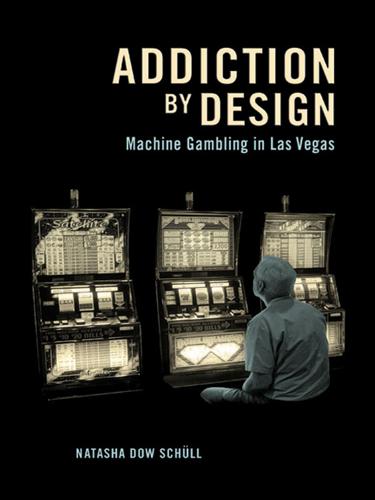
Addiction by Design: Machine Gambling in Las Vegas
by
Natasha Dow Schüll
Published 19 Aug 2012
As Caillois had written earlier: “Recourse to chance helps people tolerate competition that is unfair or too rigged. At the same time, it leaves hope in the dispossessed that free competition is still possible in the lowly stations in life” (1979 [1958], 115). 36. Goffman 1961, 34. 37. Geertz 1973. The concept of “deep play” was first elaborated by Jeremy Bentham to describe play in which financial stakes run “irrationally” high despite the fact that chance will determine the outcome, indicating that more than just money is at stake (in ibid., 431). 38. Dostoyevsky 1972 [1867], 199. The semiautobiographical novel was written during a period when Dostoyevsky struggled with his own excessive gambling.
…
Bachelard, Gaston Bally Technologies: Comfort Zone consoles; data visualization system; and the first coin multiplier; and the first electromechanical slot machine; and the first patent for video poker; game design at; and legal hearings on near misses; and multiline slots; and player tracking; Powercash system; Privacy Zone cabinets; simulation of mechanical reels by; TITO system Bank of America Barney: on video poker as a direct way to destiny Bataille, Georges Bateson, Gregory: on addiction; on equilibrium; on nonpurposive activities Baudrillard, Jean Bauman, Zygmunt Beck, Ulrich. See also risk society. behavioral reinforcement. See reinforcement. Bell, Daniel Benjamin, Walter Bentham, Jeremy Bergler, Edmund Bernhard, Bo: on informational remedies for problem gambling; on spread of video gambling; on unintended consequences of gambling machine safety modifications; on video gambling addiction; on voluntary responsible gambling features Biggs, Lindy Blaszczynski, Alex Borrell, Jennifer: Bourgois, Philippe Brandt, Allen Breen, Robert Britain Brown, Denise Scott budget managementff Bull, Stuart Burke, Kenneth Burroughs, William Burton, Bill Bybee, Shannon Caesars Palace Caillois, Roger Calleja, Gordon Callon, Michel Canada: casino duty of care in; and the Informed Player Choice System; liberalization of gambling in; and the responsible gaming device; and use of the addition-detection algorithm in; video lottery terminals in Cantor Gaming capitalism: and the actuarial self; and addiction; and consumer affect; and consumption; cultural theories of; flexible; and flexible specialization; and flow; and Fordism; and gambling; limbic; ludo-; and reenchantment by rationalization; and the service economy; and space; and speed; and the zone.
…
Nevada Council on Problem Gambling Nevada Gaming Control Board Nietzsche, Friedrich Norman, Laurie Norway: limits on play in state–run casinos non-obvious relationship awareness (NORA) O.B.: gambling to forget O’Hare, Carol O’Malley, Pat online gambling: and addiction; anonymity of; and responsible gaming; similarity to machine gambling; spread of operant conditioning. See reinforcement; Skinner, B.F. Pace, Mark pachinko (pachislo/pachisuro) Pandolfo, Stefania panopticon PAR sheets (paytable and reel strip sheets) The Paradox of Choice pathological gambling: diagnosis of; endorsement of by gambling industry; medical classification of. See gambling addiction; problem gambling. Patsy: becoming robotlike in her human interactions; and compulsive budgeting rituals; and the desire for anonymity; juggling herfinances to gamble; and “machine life,”; self-medicating with video poker payback percentage.
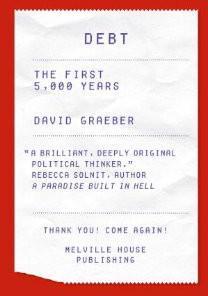
Debt: The First 5,000 Years
by
David Graeber
Published 1 Jan 2010
In fact, as Linebaugh has shown, the situation only really began to take recognizable form around 1800, when the government stabilized its finances, began paying cash wages on schedule, and therefore tried to abolish the practice of what was now relabeled “workplace pilfering”—which, meeting outraged resistance on the part of the dockworkers, was made punishable by whipping and imprisonment. Samuel Bentham, the engineer put in charge of reforming the dockyards, had to turn them into a regular police state in order to be able to institute a regime of pure wage labor—to which purpose he ultimately conceived the notion of building a giant tower in the middle to guarantee constant surveillance, an idea that was later borrowed by his brother Jeremy for the famous Panopticon.105 Men like Smith and Bentham were idealists; even utopians. To understand the history of capitalism, however, we have to begin by realizing that the picture we have in our heads, of workers who dutifully punch the clock at 8:00 a.m. and receive regular remuneration every Friday, on the basis of a temporary contract that either party is free to break off at any time, began as a utopian vision, was only gradually put into effect even in England and North America, and has never, at any point, been the main way of organizing production for the market, ever, anywhere.
…
In Transferring wealth and power from the old to the new world: monetary and fiscal institutions in the 17th through the 19th century (Michael D. Bordo and Robert Cortés Conde, editors), pp. 140-186. Cambridge: Cambridge University Press. Trawick, Margaret. 1992. Notes on Love in a Tamil Family. Berkeley: University of California Press. Trevett, Jeremy. 1992. Apollodoros the Son of Pasion. Oxford: Clarendon Press. _____. 2001. “Coinage and Democracy at Athens,” in A. Meadows and K. Shipton, eds., Money and Its Uses in the Ancient Greek World (Oxford: Oxford University Press), pp. 23–34 Trombert, Eric. 1995. Le crédit à Dunhuang: Vie matérielle et société en Chine médiévale.

Cuba: An American History
by
Ada Ferrer
Published 6 Sep 2021
Elsewhere in the speech, he revealed something else he expected: “I know that imprisonment will be harder for me than it has ever been for anyone.”15 * * * CASTRO SERVED HIS PRISON TERM in Cuba’s most modern jail: the Presidio Modelo in the Isle of Pines. Built during the rule of Gerardo Machado in the late 1920s, it consisted of round buildings, with cells along the circumference and a watchtower in the center. Erected as a panopticon—a design named after the many-eyed monster of Greek mythology and invented in the eighteenth century by British jurist Jeremy Bentham—the modern prison allowed a single guard to watch any cell in the prison at any time without the inmates knowing they were being watched. One of the things Fidel most hated about being imprisoned was how hard it was to speak. “To be imprisoned,” he mused in a letter from jail to a friend, “is to be condemned to silence, to hear and read everything spoken and written and not be able to speak out….”16 He was held in solitary confinement for the first four months of his sentence.
…
He “thoroughly studied” Marx’s Capital, which he referred to as “five huge volumes on economics, researched and explained with scientific exactness.” In fact, of everything he read on revolution, he seems to have been especially drawn to Karl Marx.22 * * * FIDEL CASTRO WOULD IN TIME be released from his panopticon prison, and we will soon examine those circumstances. But it may be worth pausing briefly over the perennial question of Castro’s relationship to Marxism. Almost from the beginning, his detractors accused him of being a communist. For a long time, Fidel emphatically rejected that characterization.
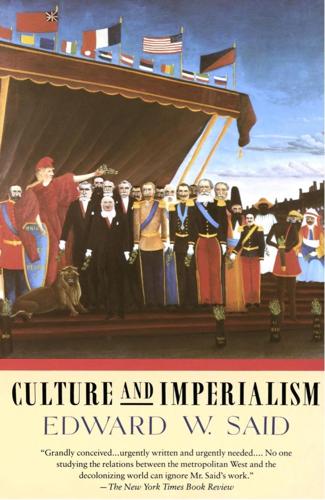
Culture and Imperialism
by
Edward W. Said
Published 29 May 1994
From the time the first British expedition arrived there in 1608 until the last British Viceroy departed in 1947, India had a massive influence on British life, in commerce and trade, industry and politics, ideology and war, culture and the life of imagination. In English literature and thought the list of great names who dealt with and wrote about India is astonishingly impressive, for it includes William Jones, Edmund Burke, William Makepeace Thackeray, Jeremy Bentham, James and John Stuart Mill, Lord Macaulay, Harriet Martineau, and, of course Rudyard Kipling, whose importance in the definition, the imagination, the formulation of what India was to the British empire in its mature phase, just before the whole edifice began to split and crack, is undeniable.
…
Maine’s great study Ancient Law (1861) explores the structure of law in a primitive patriarchal society that accorded privilege to fixed “status” and could not become modern until the transformation to a “contractual” basis took place. Maine uncannily prefigures Foucault’s history, in Discipline and Punish, of the shift in Europe from “sovereign” to administrative surveillance. The difference is that for Maine the empire became a sort of laboratory for proving his theory (Foucault treats the Benthamite Panopticon in use at European correctional facilities as the proof of his): appointed to the Viceroy’s Council in India as legal member, Maine regarded his sojourn in the East as an “extended field-trip.” He fought the Utilitarians on issues concerning the sweeping reform of Indian legislation (two hundred pieces of which he wrote), and interpreted his task as the identification and preservation of Indians who could be rescued from “status” and, as carefully nurtured elites, brought over to the contractual basis of British policy.
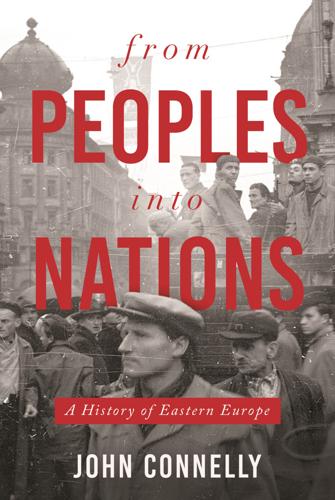
From Peoples into Nations
by
John Connelly
Published 11 Nov 2019
Willi Stoph (wife of the number two) became a shopaholic, appearing daily in their compound’s shopping center and wanting to see something new.74 Even rumors of these modest privileges elicited deep resentment because the leaders claimed a right to rule in the name of higher standards and yet seemed out of touch with the language they had attempted to foist on workers. * * * But going from such insights to actual opposition was difficult. What was opposition? Every act, even thought, directed against agenda of the state? In theory, it was every point where the would-be total state encountered limitations. It had tried, like Jeremy Bentham’s panopticon, to “see and control every individual member of the society,” and society’s response was to draw down the shutters when possible, and when not, to protect themselves against lies by lying.75 Yet not every lie or evasion was opposition. Wearing jeans; slacking off at work; hoarding butter; changing money illegally (indeed, participating in any part of the gray economy)—actions that were somehow nonconformist or even subversive—were at best implicit opposition, and then only against the state as it was supposed to exist in theory.
…
For the concept of flanking as applied to Yugoslav territories, see Robert Hislope, “Intra-ethnic Conflict in Croatia and Serbia: Flanking and the Consequences for Democracy,” East European Quarterly 30:4 (Winter 1996), 471–494. Jeremy King notes this phenomenon in 1890s Bohemia, where the Old and Young Czechs became successively more anti-German by trying to demonstrate their Czechness. Jeremy King, Budweisers into Czechs and Germans: A Local History of Bohemian Politics, 1848–1948 (Princeton, NJ, 2002), 86. For a general evocation of this principle, see also Judson, Guardians, 9, with copious references. 26.
…
Berend, Justin Jampol, Stefan Wolle, Thomas Lindenberger, Zach Shore, Christoph Klessmann, Cameron Munter, Martin Guntau, Włodek Borodziej, Evelina Janczur, Timothy Garton Ash, Ivo Goldstain, Paweł Machcewicz, Urszula Pałłasz, Larry Wolff and David Wolff, Melissa Feinberg, Tvrtko Jakovina, Agnieszka Rudnicka, Maria Bucur, Holly Case, Anna Machcewicz, Kriszti Fehervary, Calvin Mackerron, Jim Gerlach, Artur Dmochowski, Jeff Kopstein, Piotr Hübner, Anja Machcewicz, James Felak, Peter Baldwin, Gary Cohen, Peter Haslinger, Eric Weitz, Staszek Obirek, Ralph Jessen, Jürgen Kocka, Omer Bartov, Jan Grabowski, Tim Snyder, Thomas Küttler, Steve Mull, Lutz Niethammer, Anna and Ludwik Spissowie, Michal Kopeček, Martin Putna, Małgosia Mazurek, Thomas Gertler, Peter Luban, Marci Shore, Bogdan Iacob, Vladimir Tismaneanu, Gosia Fidelis, Katherine Jolluck, Scott B. Smith, Justin Sparks, MaruškaSvašková, Bruce Berglund, Dirk Moses, Sam Moyn, Patrick Patterson, Lee Blackwood, Jeremy King, Brad Abrams, Ben Frommer, Árpád von Klimó, and Mark Keck-Szajbel. Among the graduate students I’ve had the pleasure of learning from, I mention Chad Bryant, James Krapfl, Winson Chu, Edith Sheffer, Stephen Gross, Brian McCook, Michael Dean, Terry Renaud, Andrew Kornbluth, Victoria Smolkin, Nicole Eaton, Andrej Milivojevic, Sarah Cramsey, Helaine Blumenthal, Clara Leon, Elizabeth Wenger, Jacob Mikanowski, Blaze Joel, Will Jenkins, Richard Smith, Joy Neumeyer, Sara Friedman, Dan Perez, Jason Morton, Lee Hekking, Paweł Kościelny, Thom Sliwkowski, Ula Madej-Krupitski, Harrison King, Alex Soros, and Agnieszka Smełkowska.

The Pursuit of Power: Europe, 1815-1914
by
Richard J. Evans
Published 31 Aug 2016
Prisoners were given numbers, to which they always had to answer; they were kept in single cells, arranged in galleries, and when they went out of the cell had to wear a mask to conceal their identity; the prison chapel – religion, the reading of the Bible, chapel services and religious instruction were central aspects of the reformation of prisoners – was constructed so that no prisoner could see another, but all could see and be seen by the preacher (the perfect example of the panopticon, an idea conceived by the philosopher Jeremy Bentham). Inmates were inured to hard work by the treadmill, a continuously moving device that produced nothing of any use at all; the prisoner had to keep treading, usually for a two-hour spell; anyone who ceased treading would get trapped between the steps and could be seriously injured.
…
The connections between Spanish American and European liberals were many and close. Latin American revolutionaries eagerly published justifications of their actions in Europe and corresponded with an astonishing variety of European thinkers. The father of Guatemalan independence, José Cecilio del Valle (1780–1834), for example, regularly exchanged letters with Jeremy Bentham (1748–1832) and Alexander von Humboldt (1769–1859), who had himself travelled extensively in South and Central America. At the same time, Italian exiles such as Giuseppe Pecchio (1785–1835), forced to leave Italy for England after a failed uprising in 1821, advised Latin American liberals like del Valle, while a group of Italian émigrés including Claudio Linati (1790–1832) took an active part in the politics of the Mexican revolution’s struggles between the factions of Yorkinos and Escoceses, named after respective Masonic lodges.